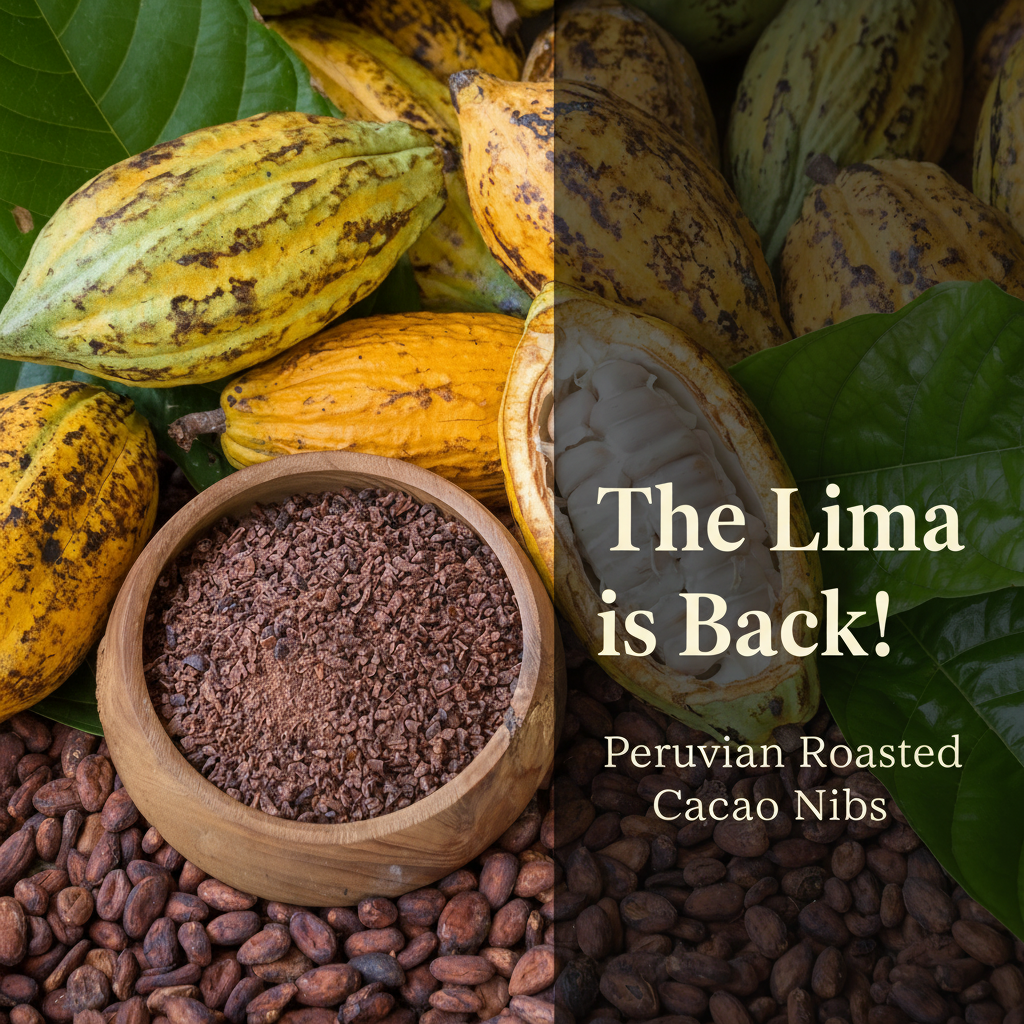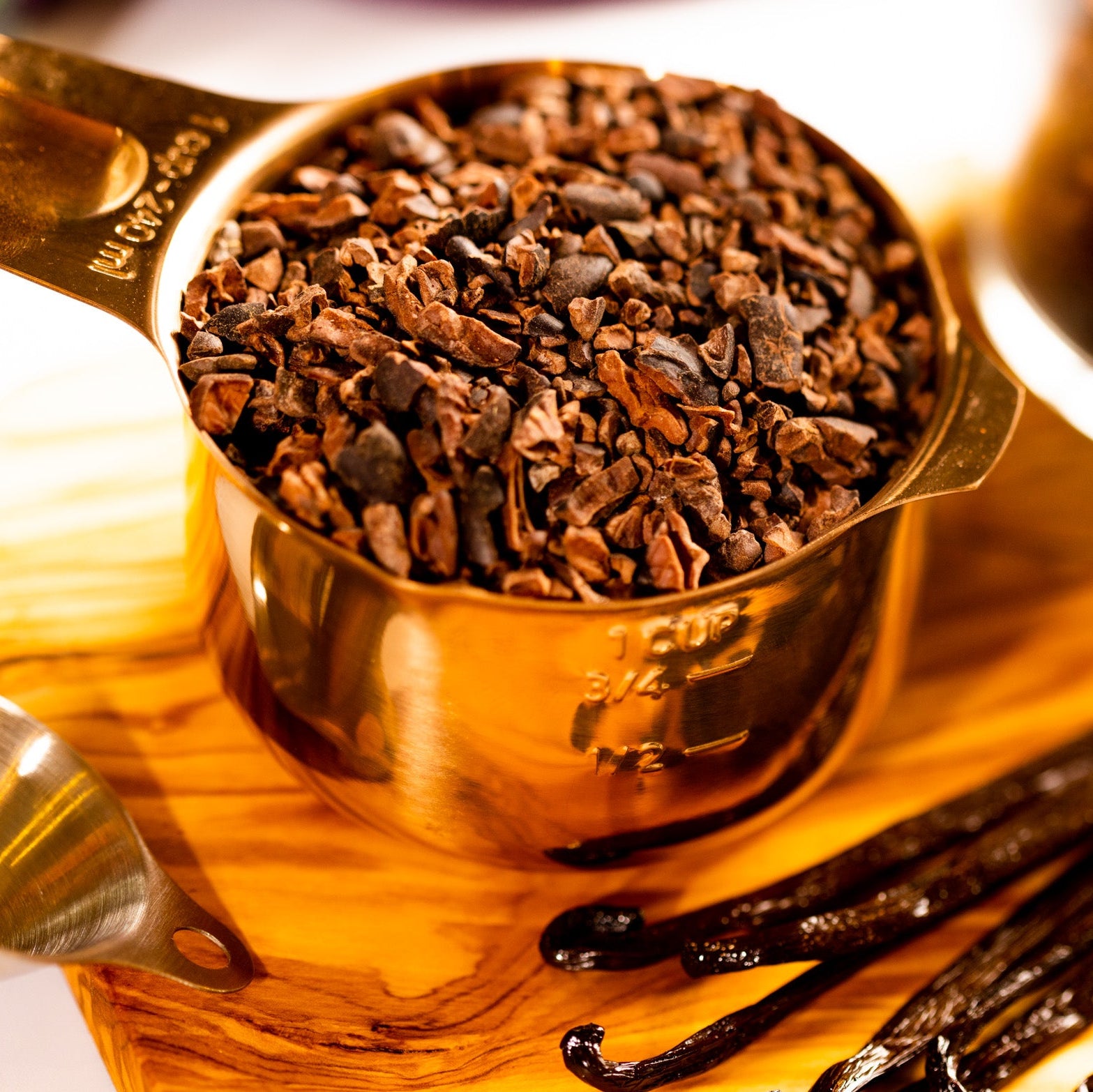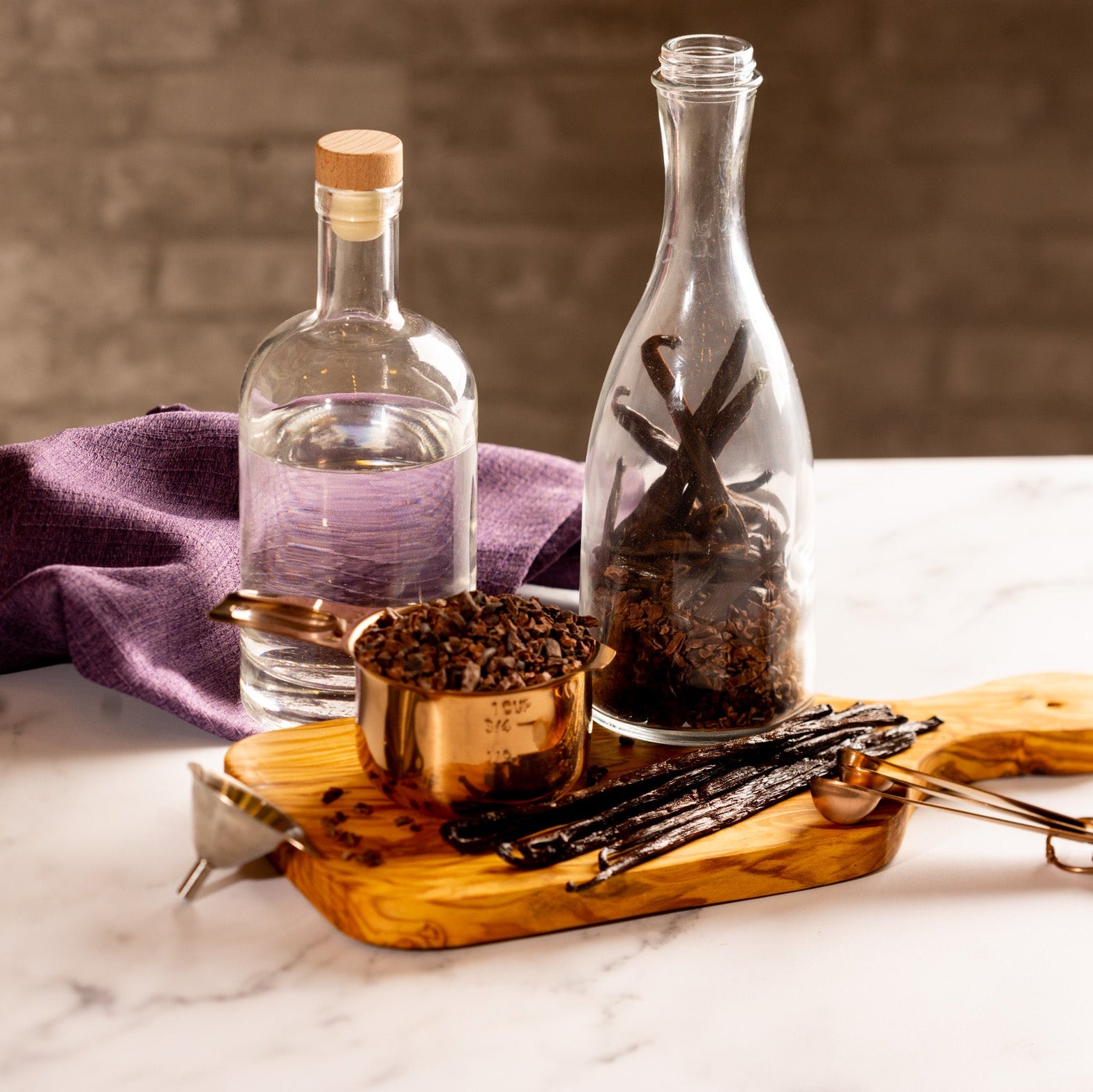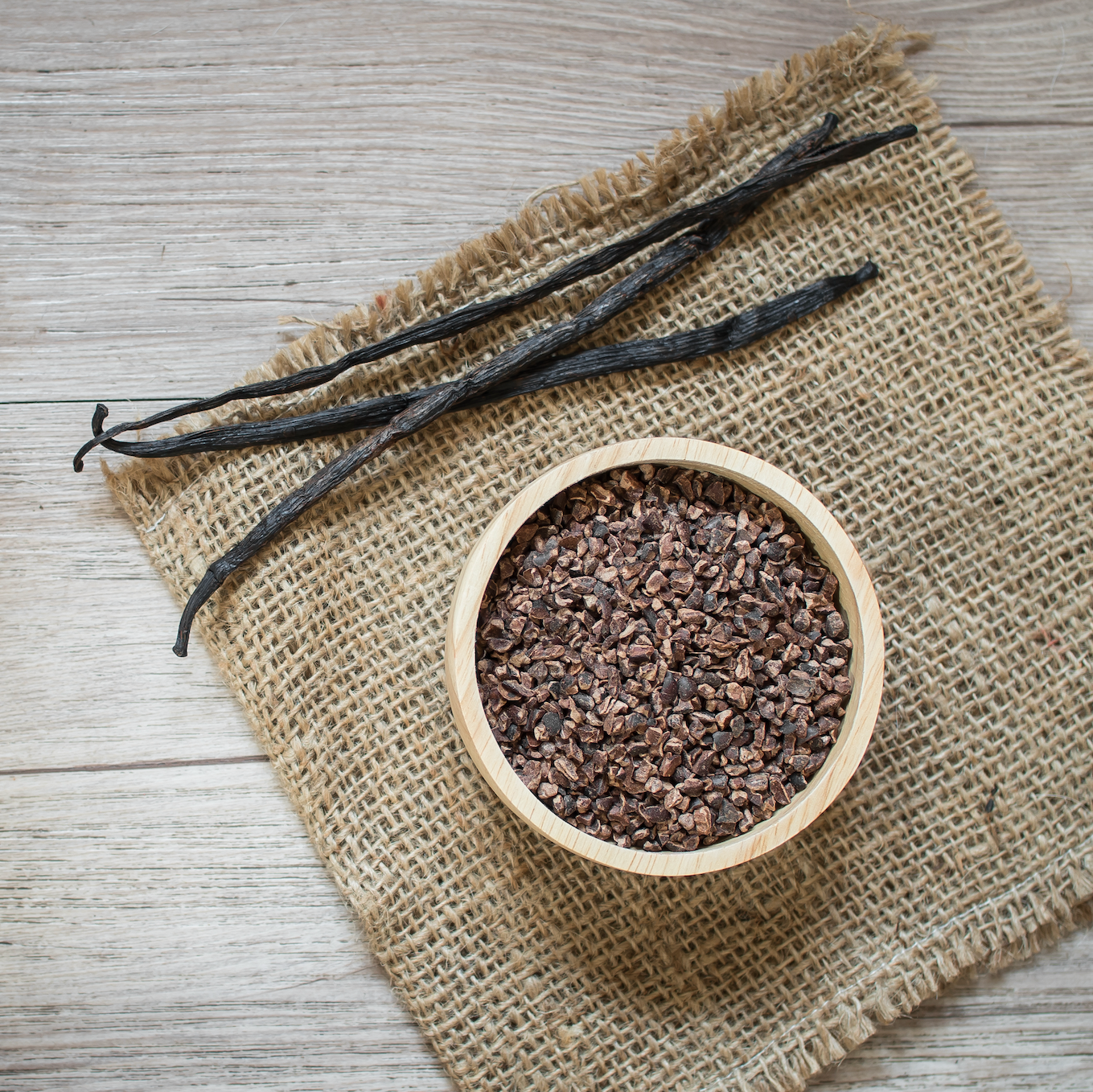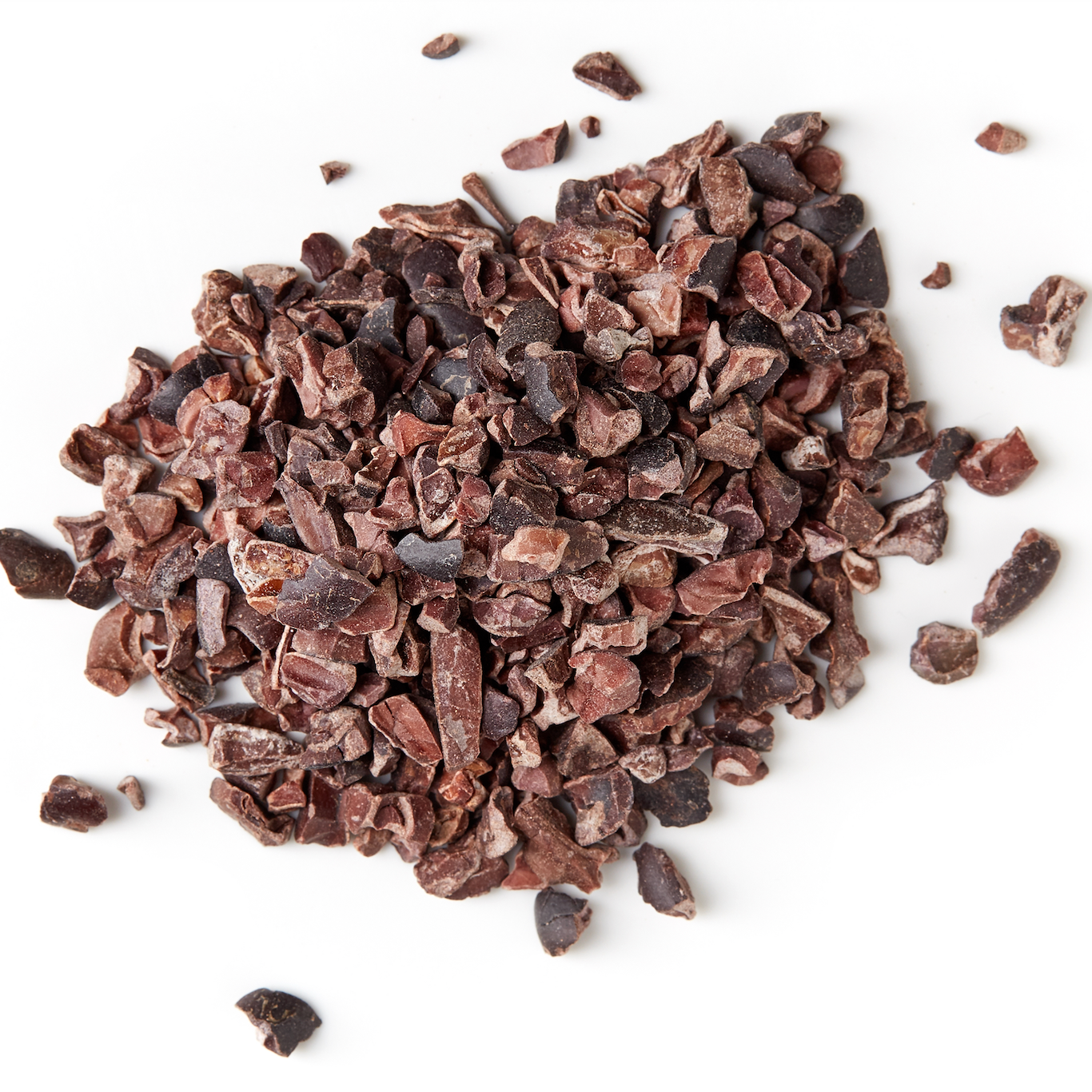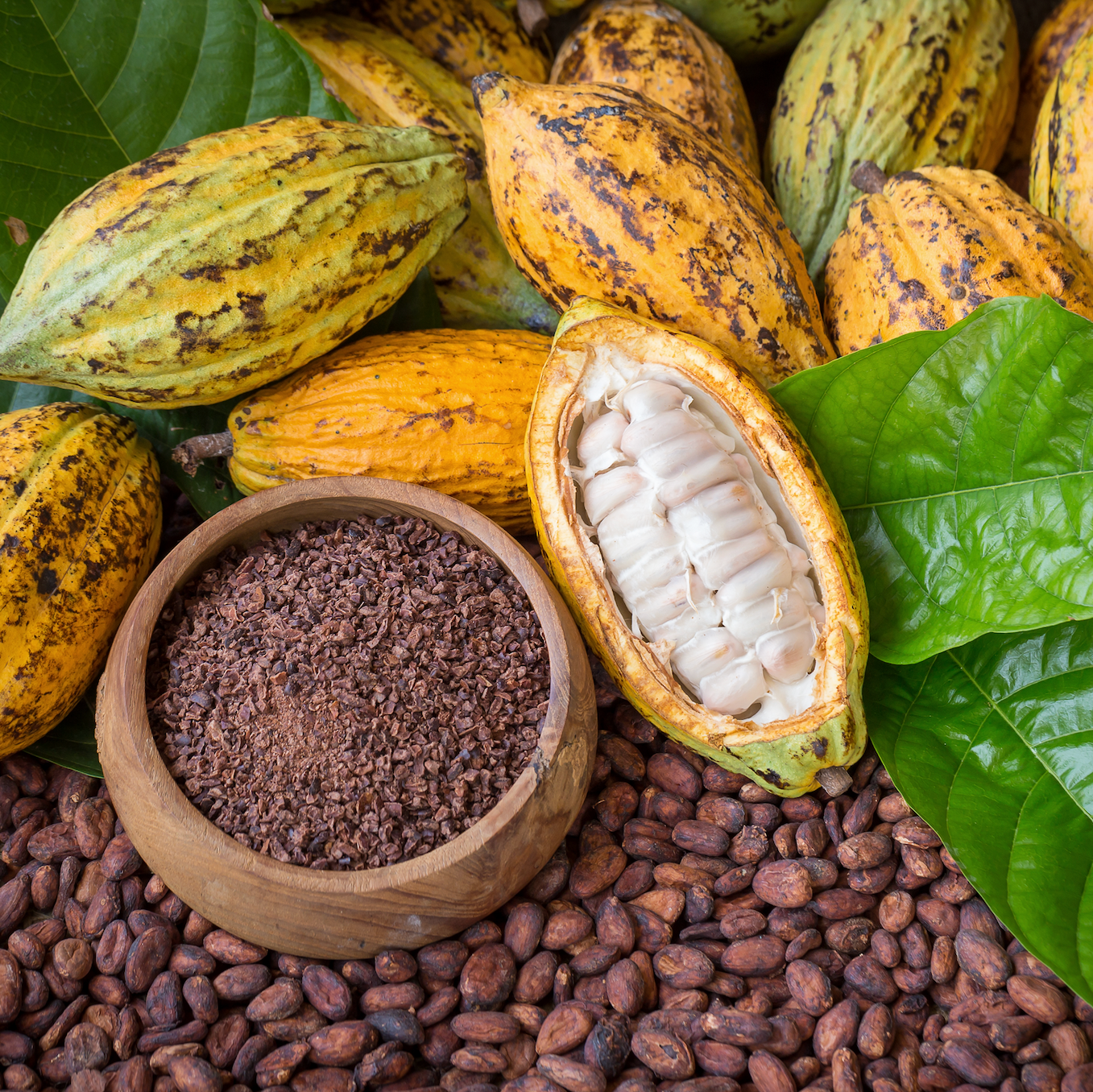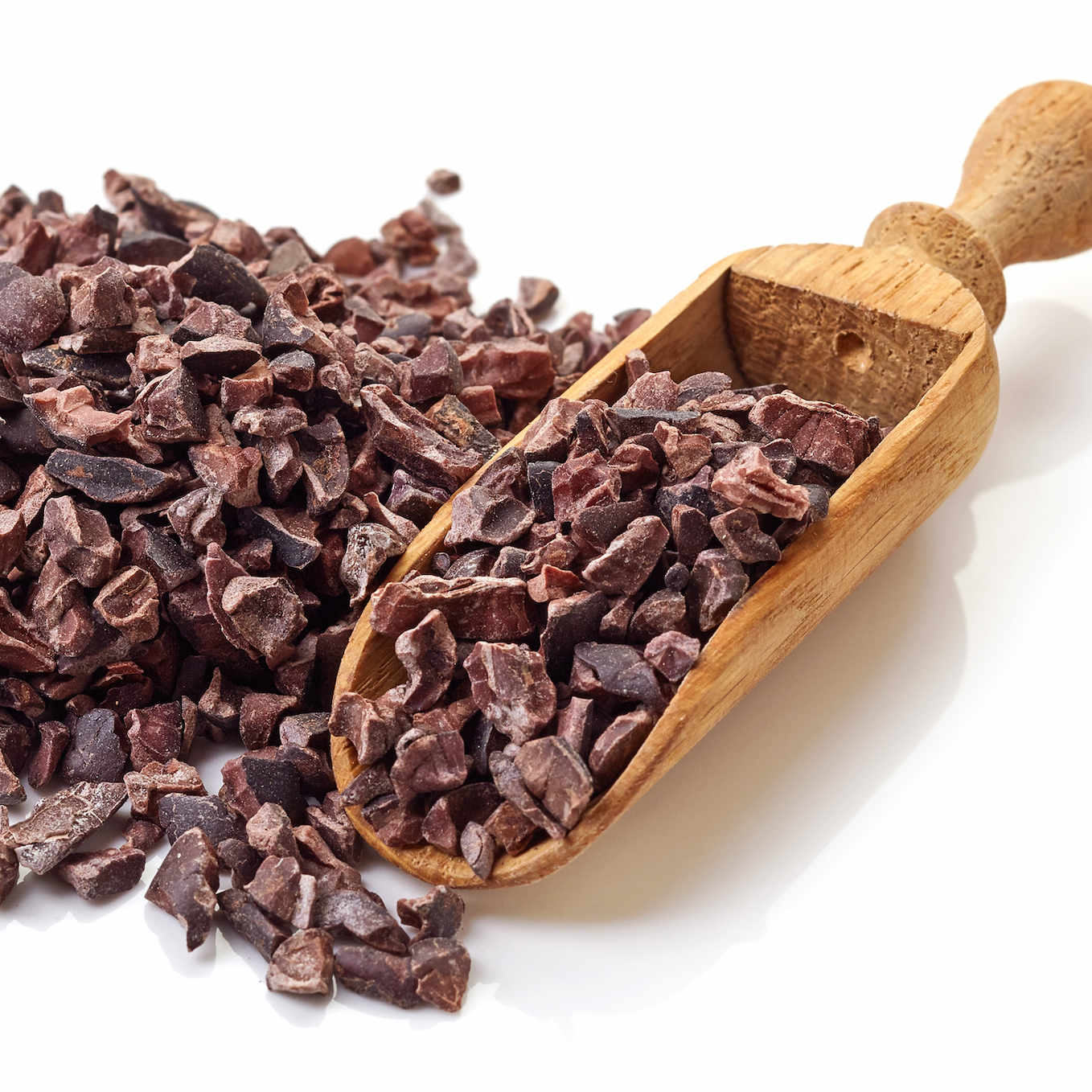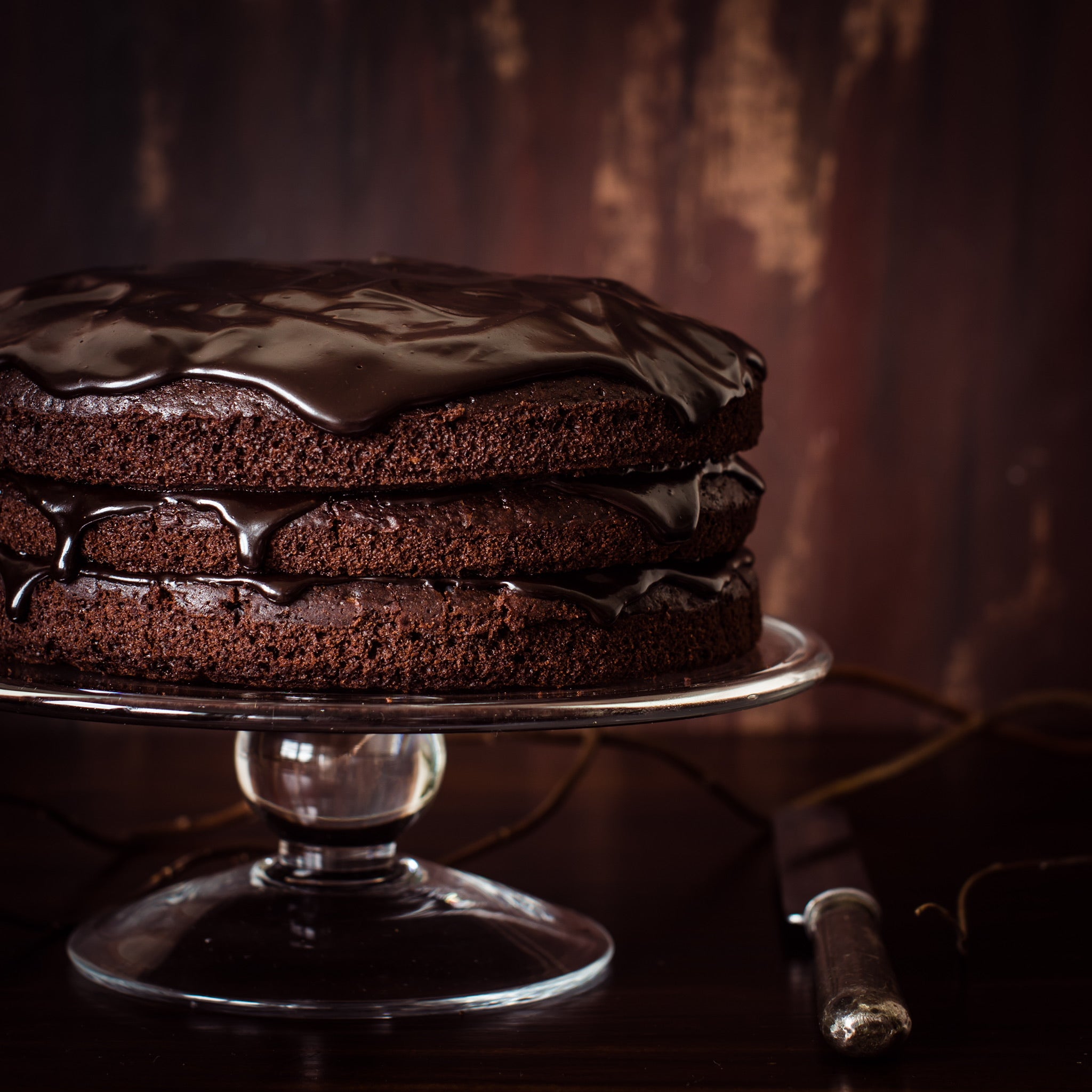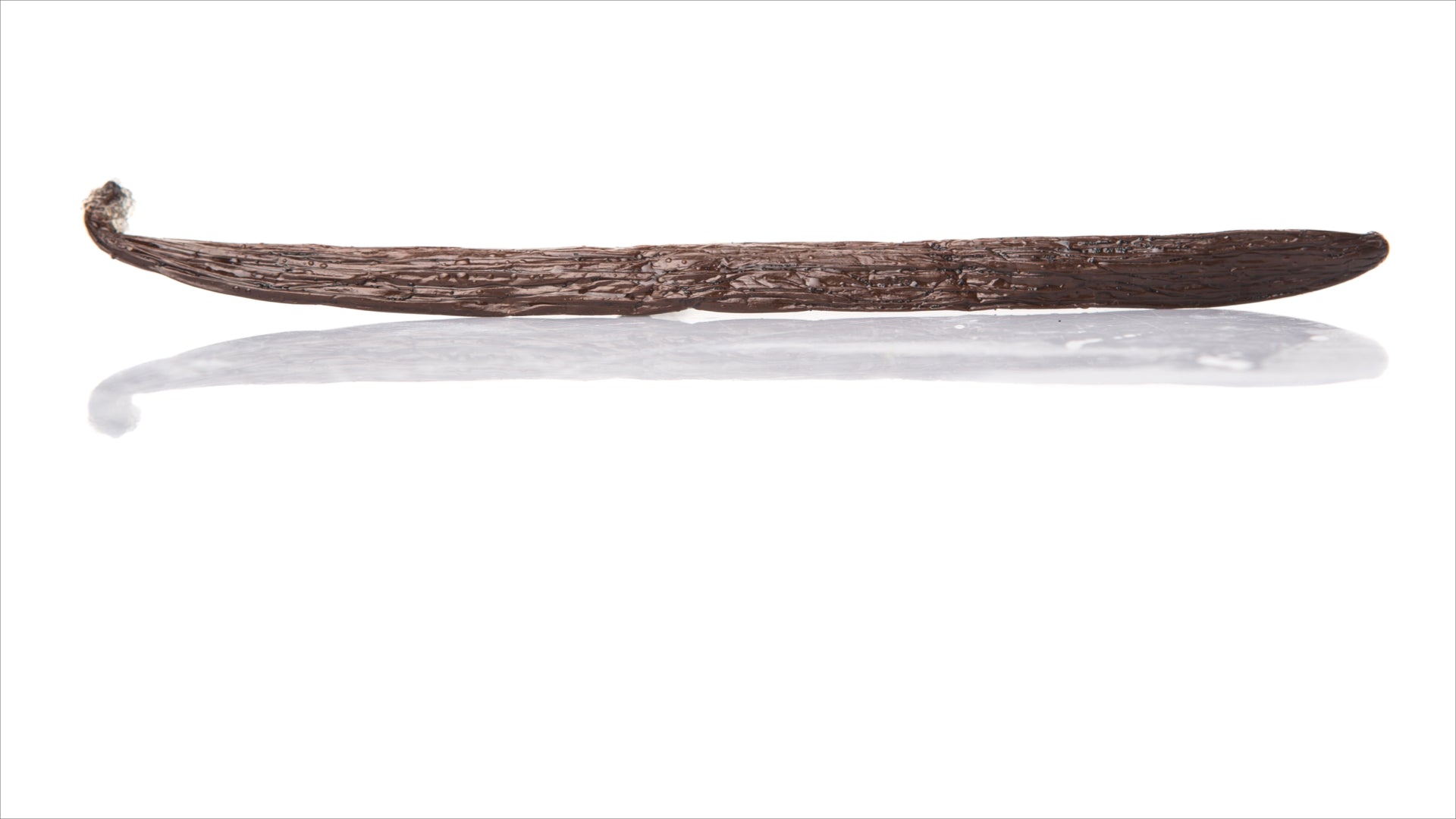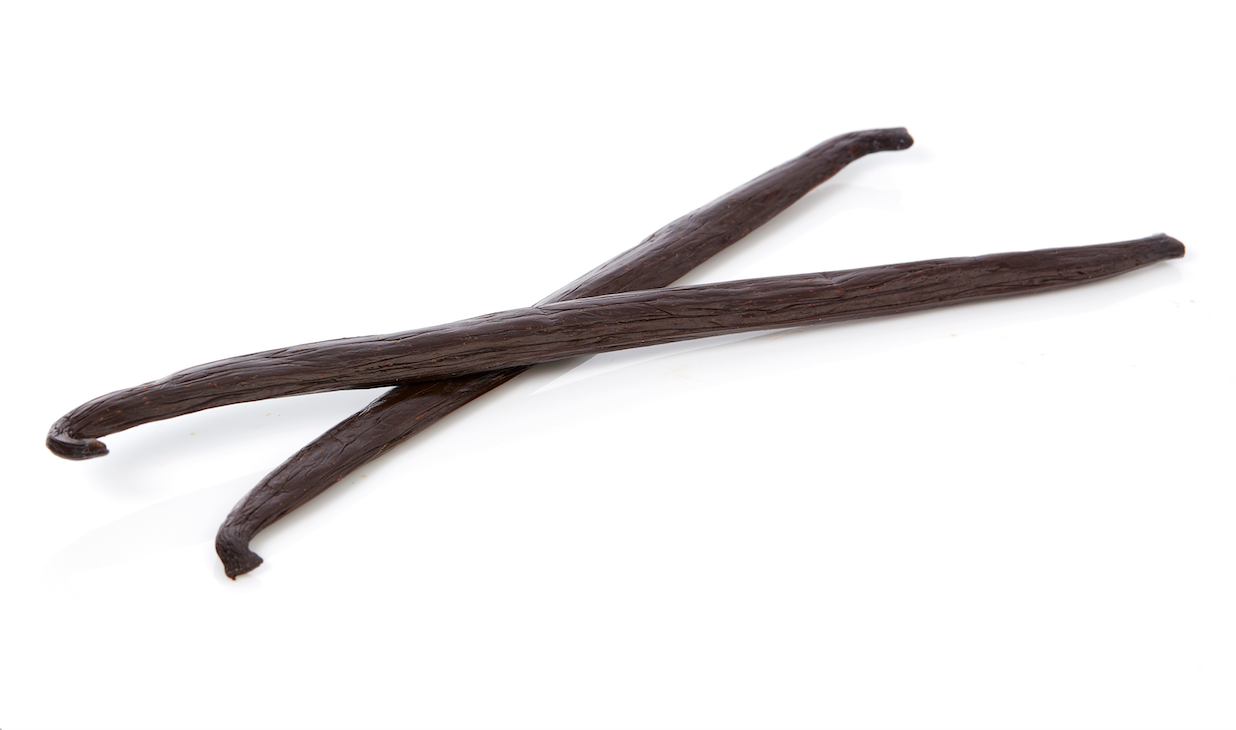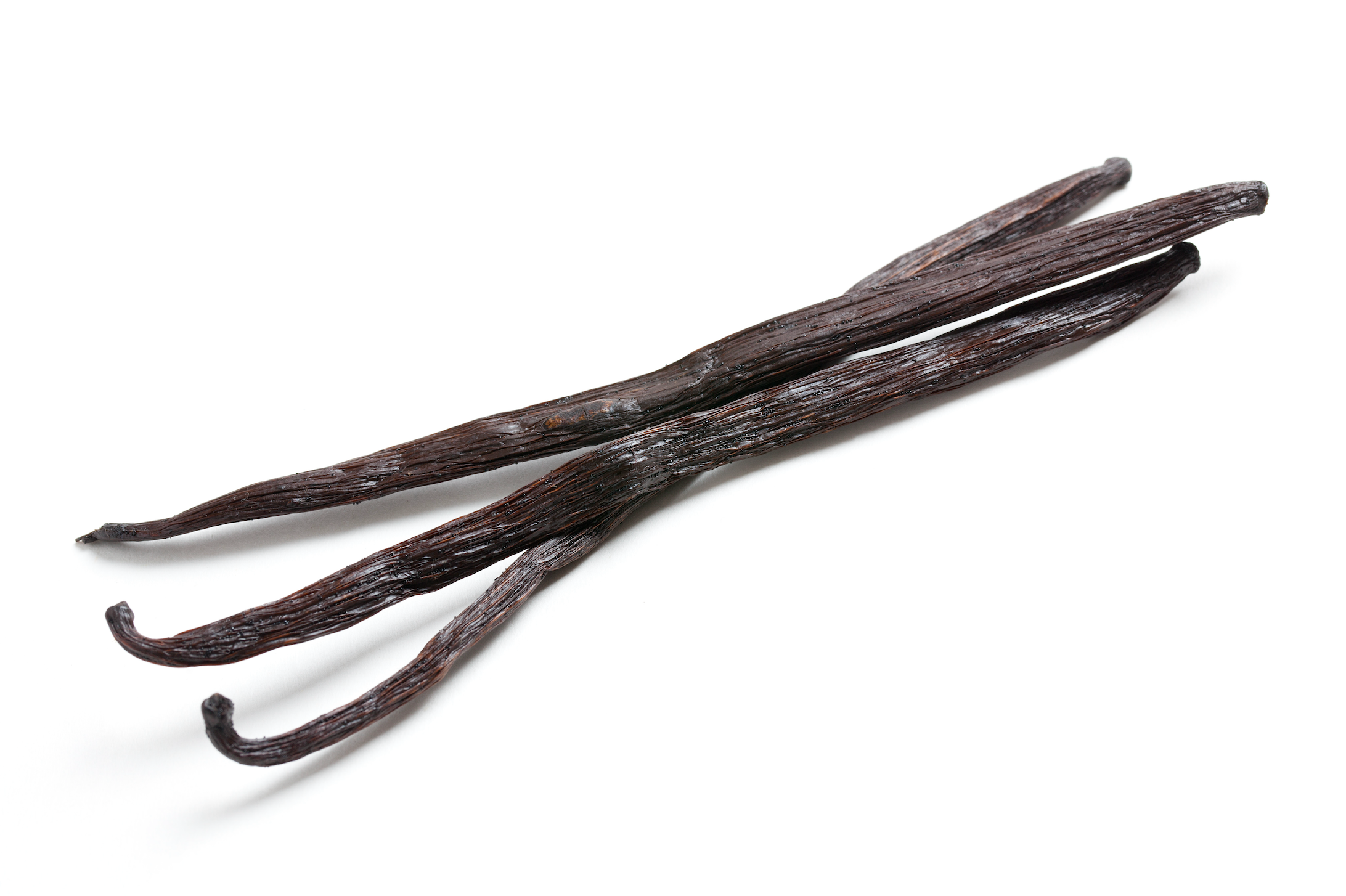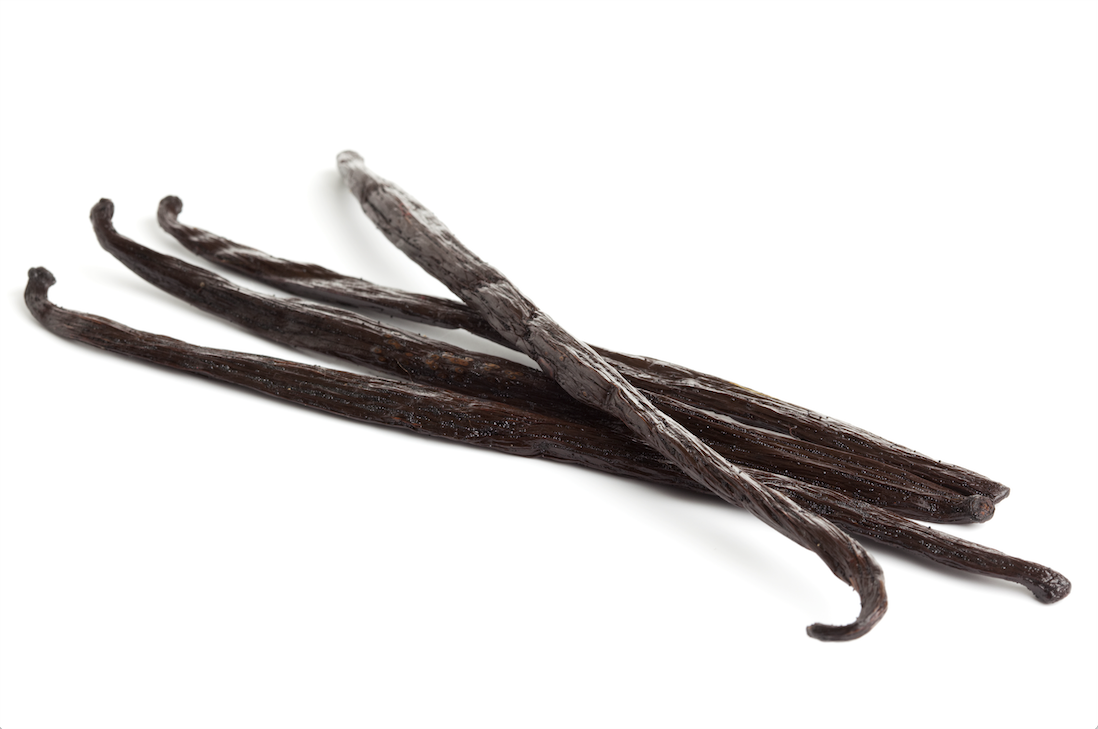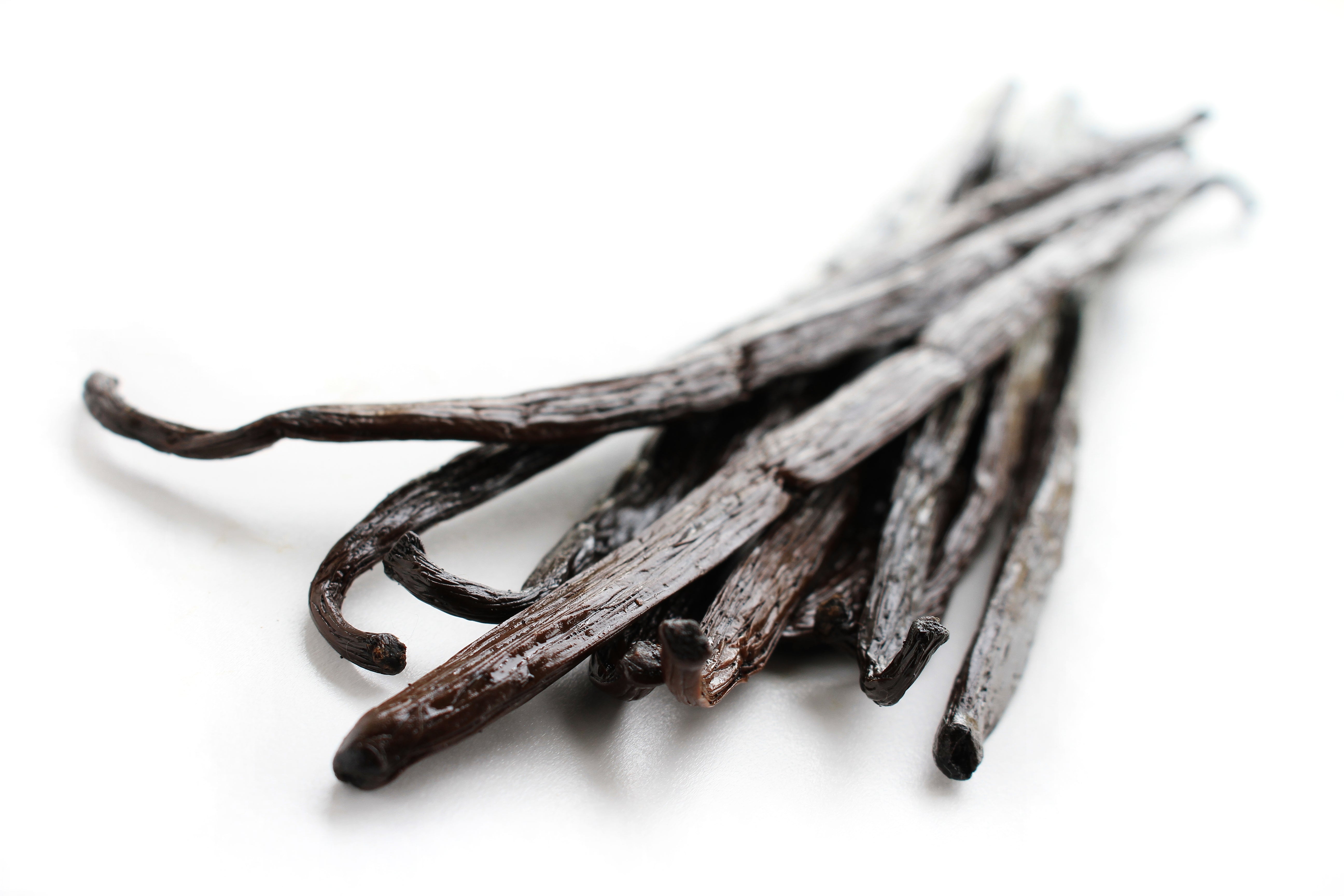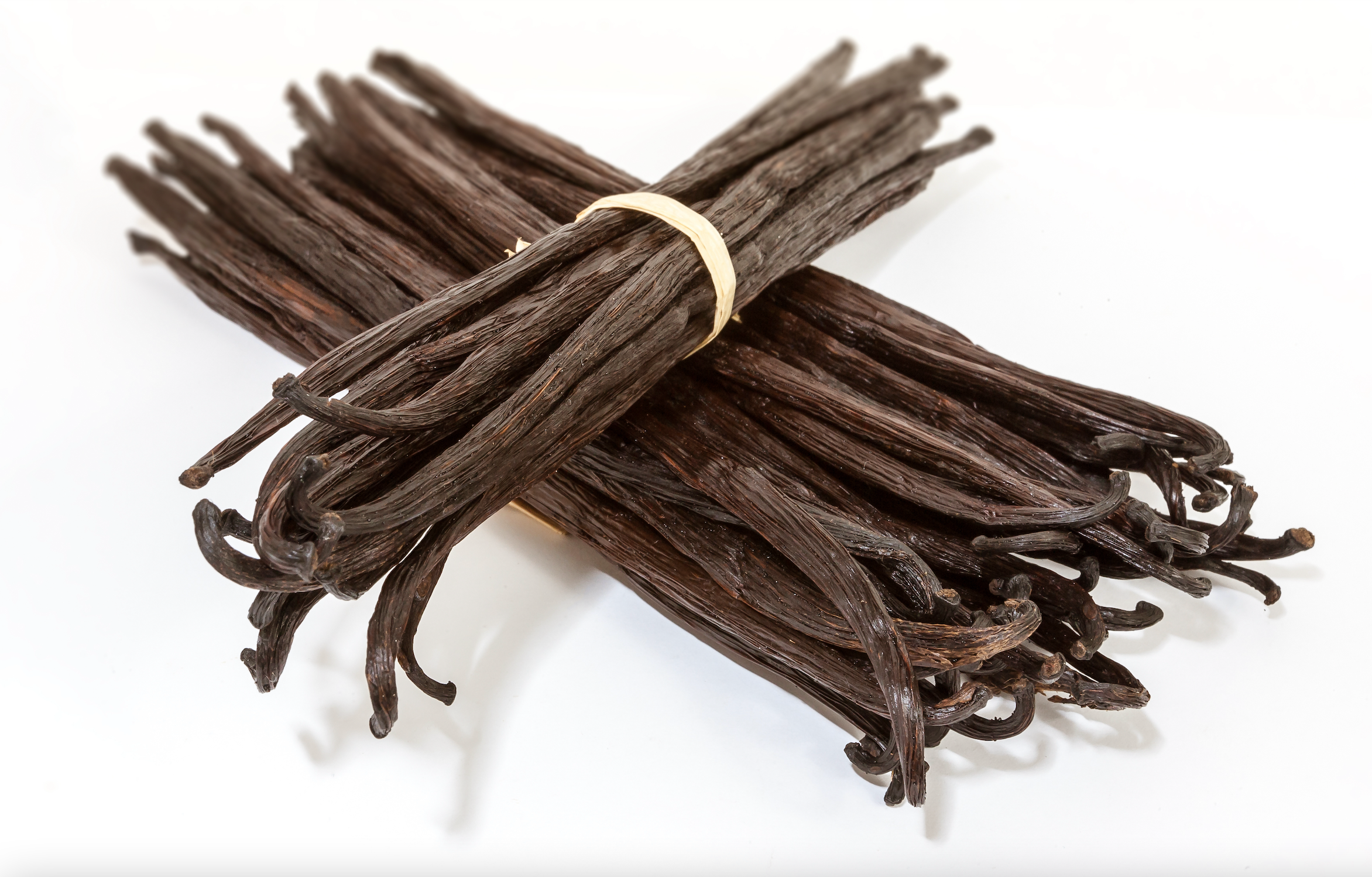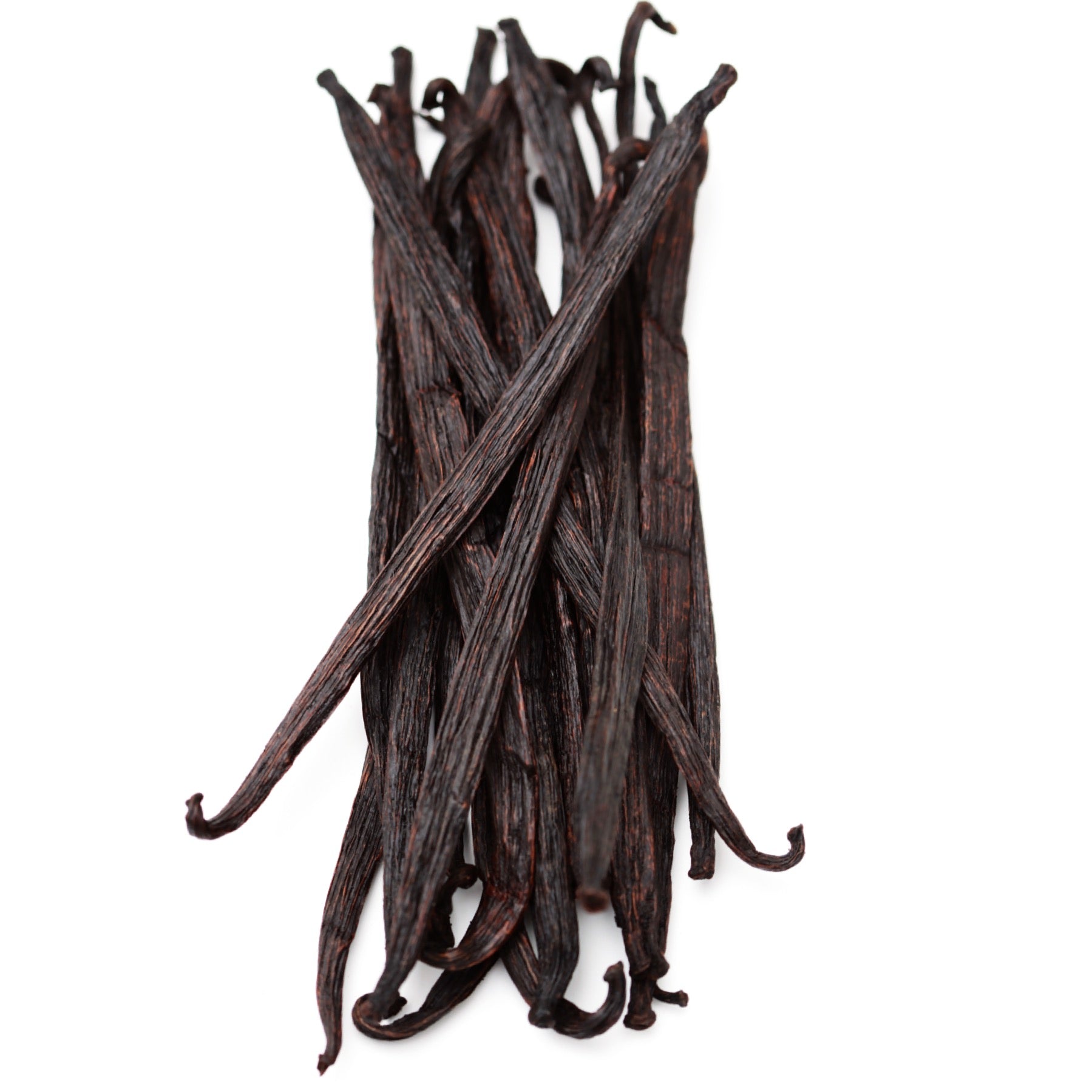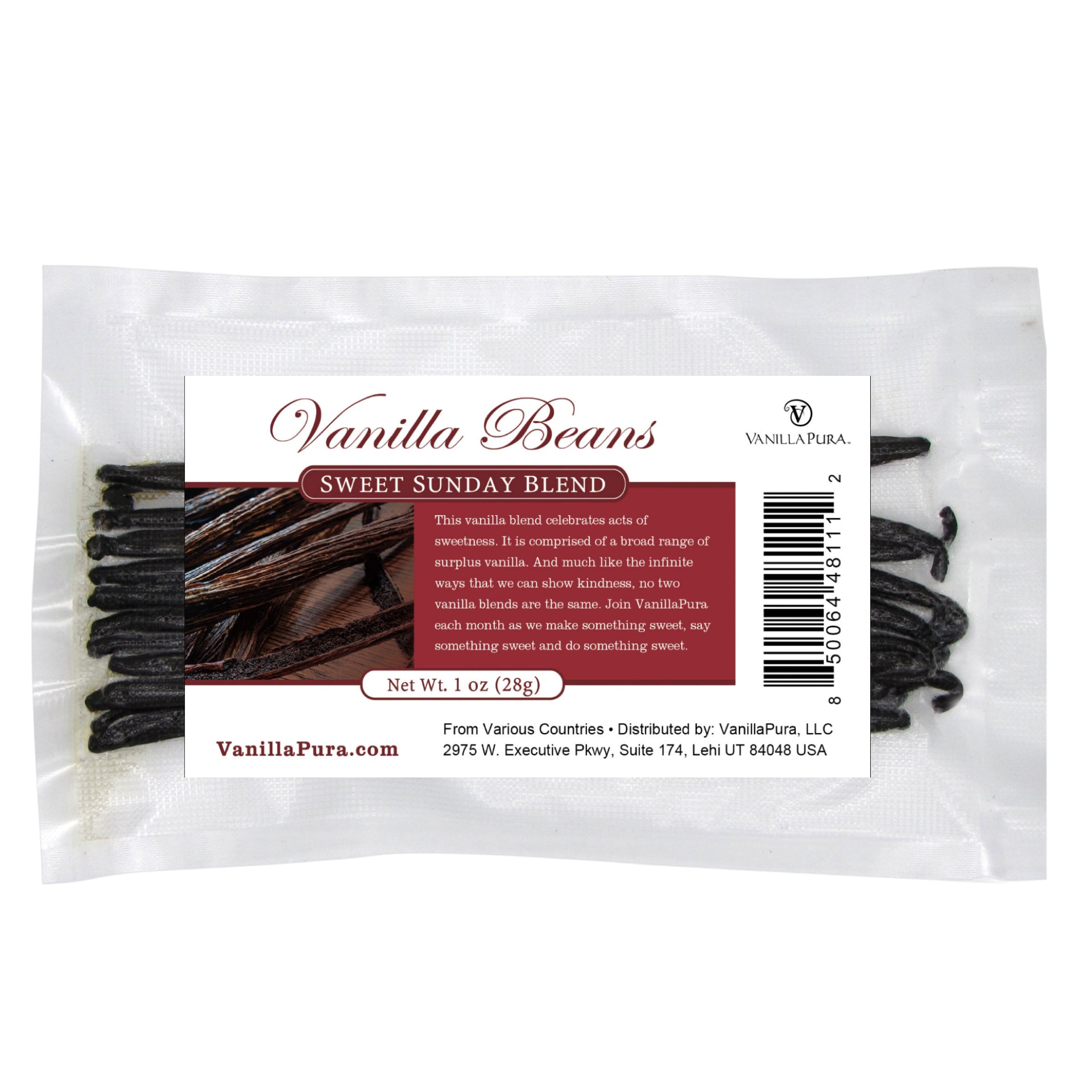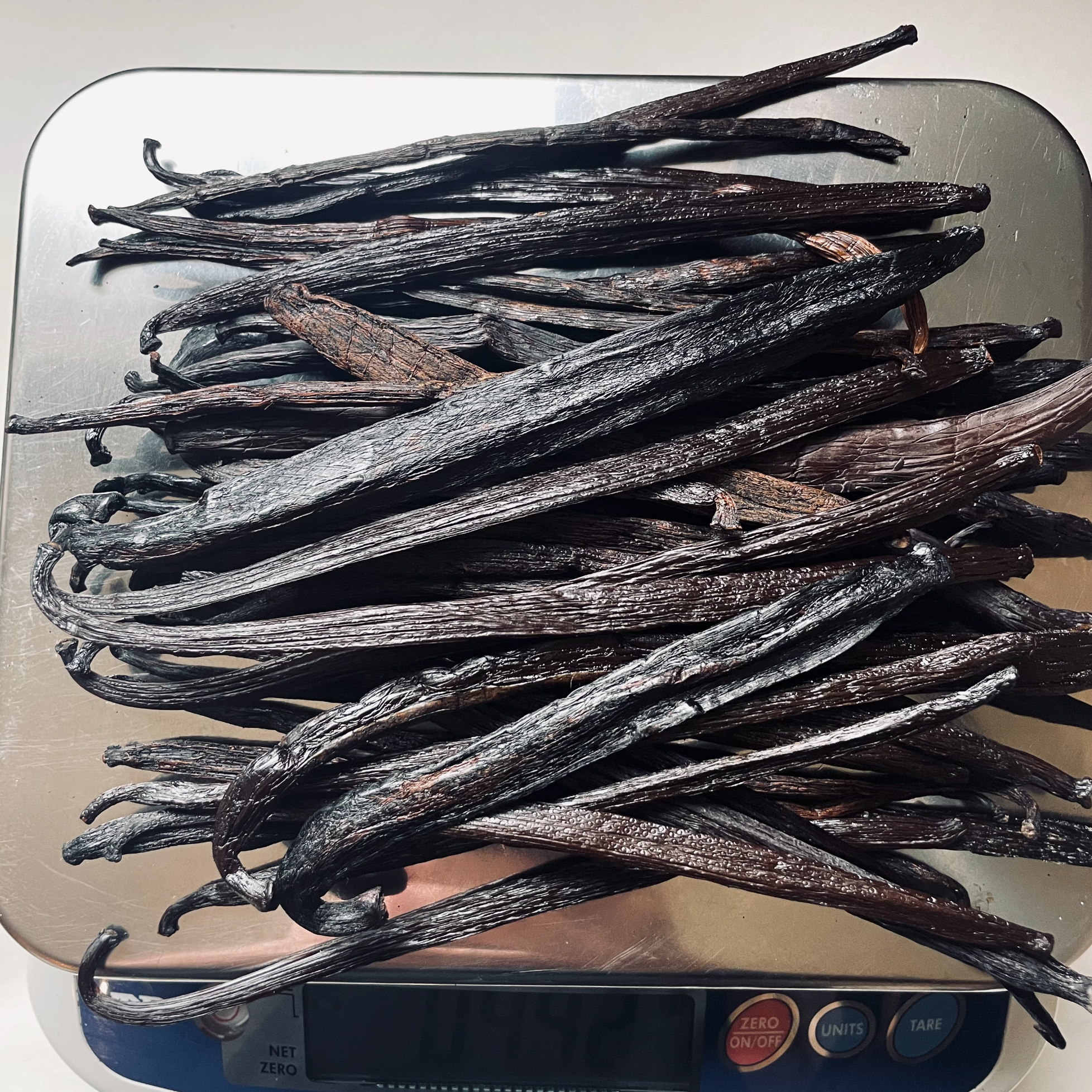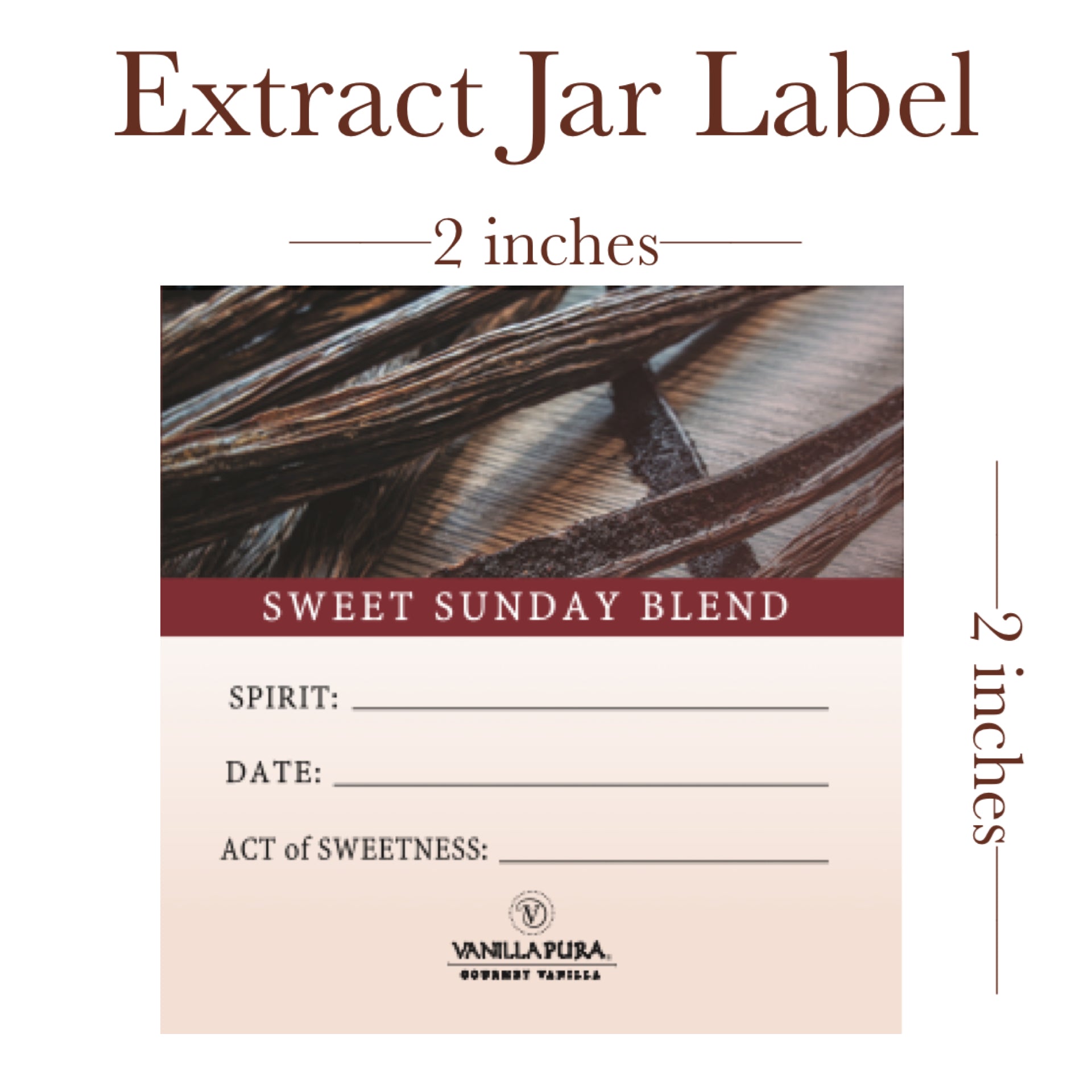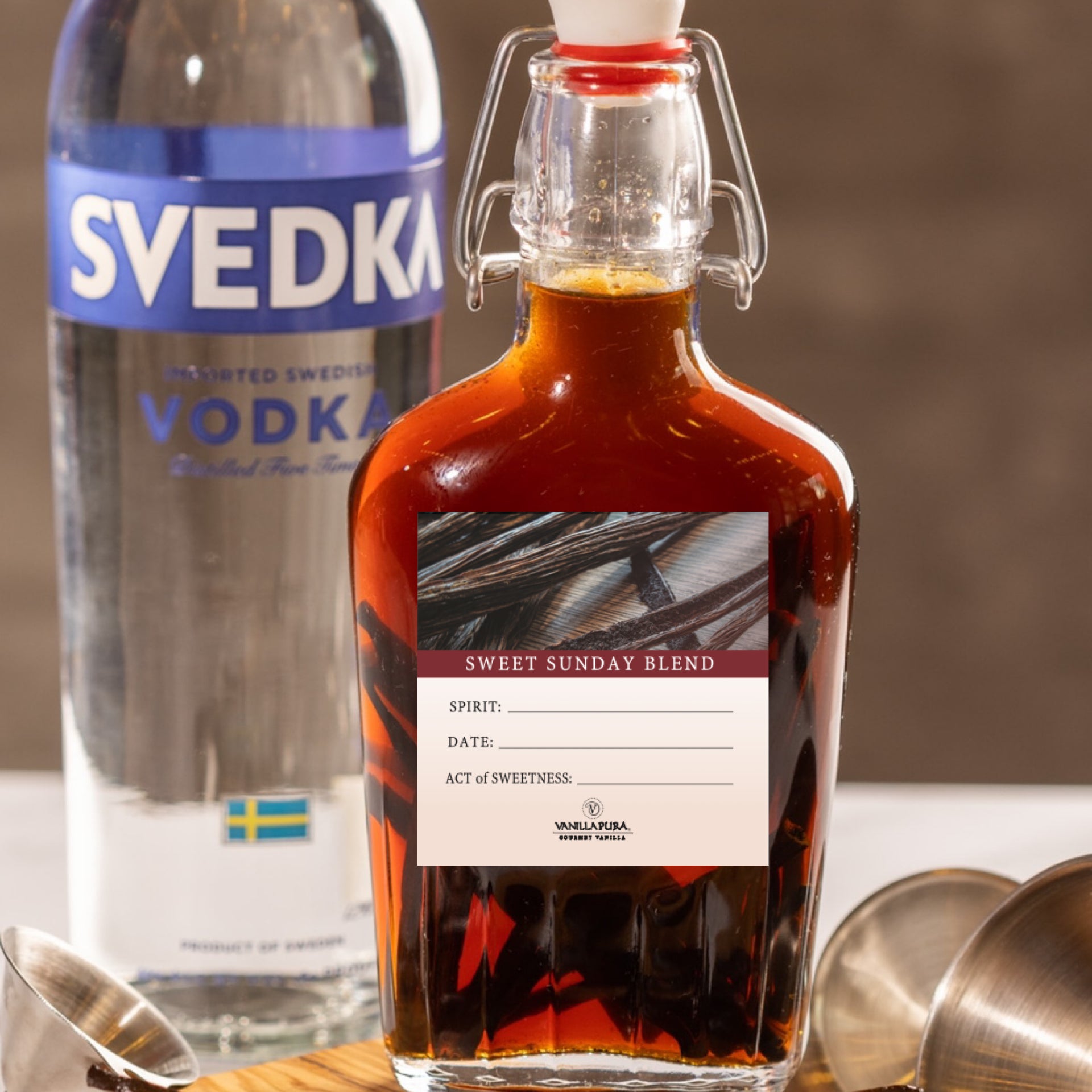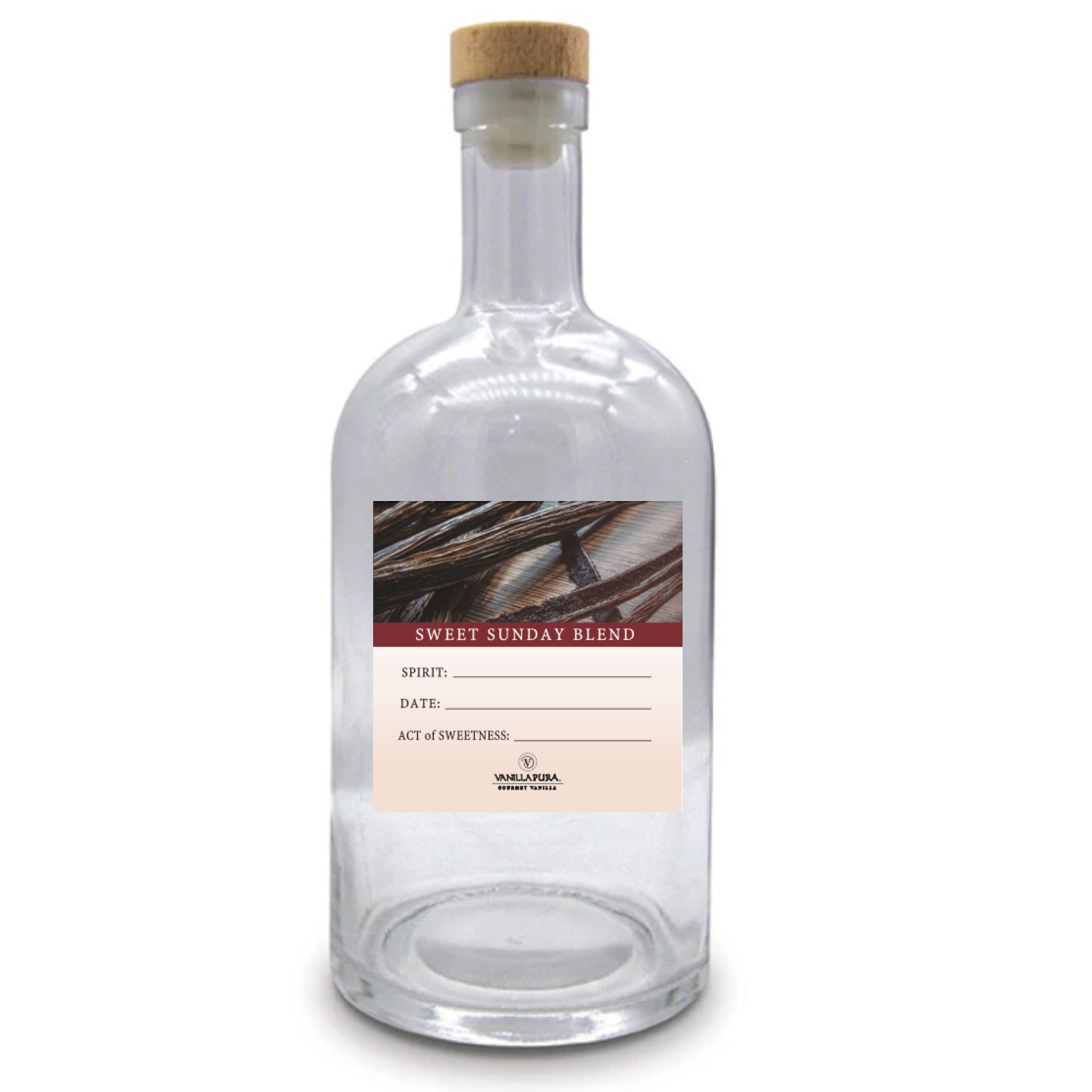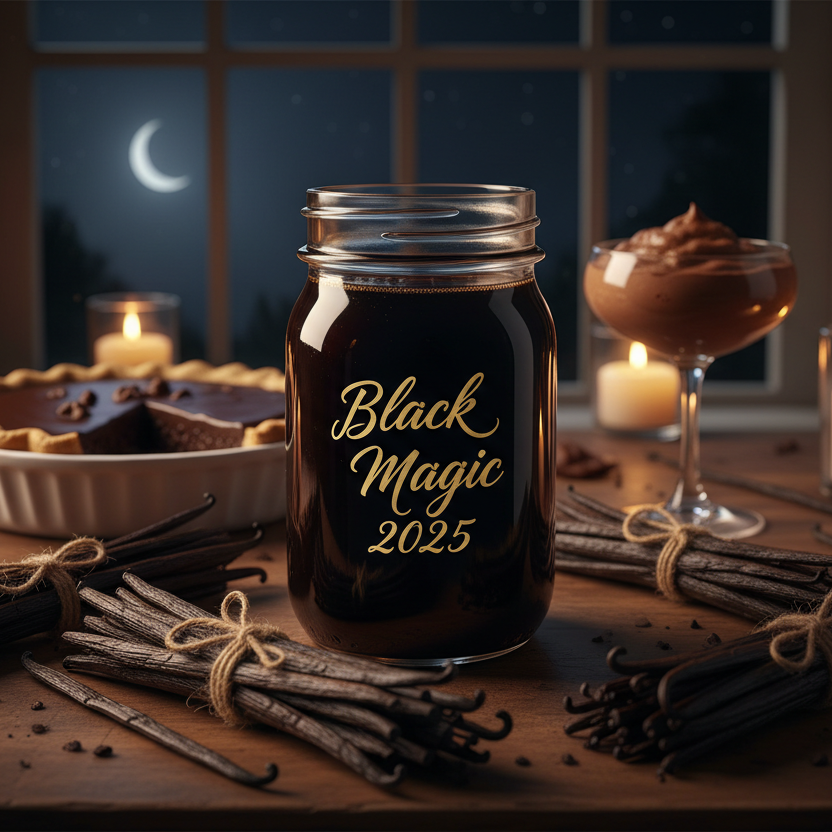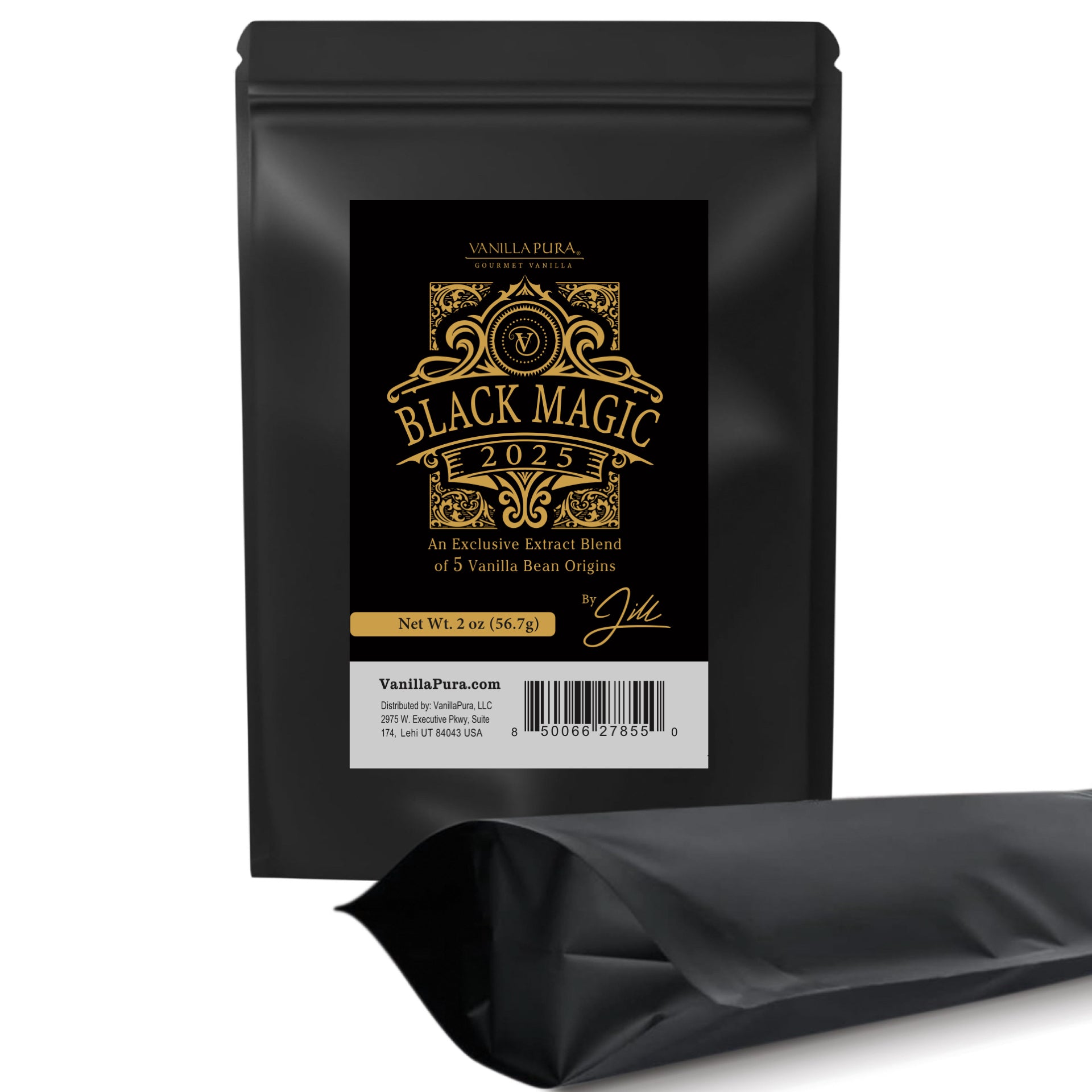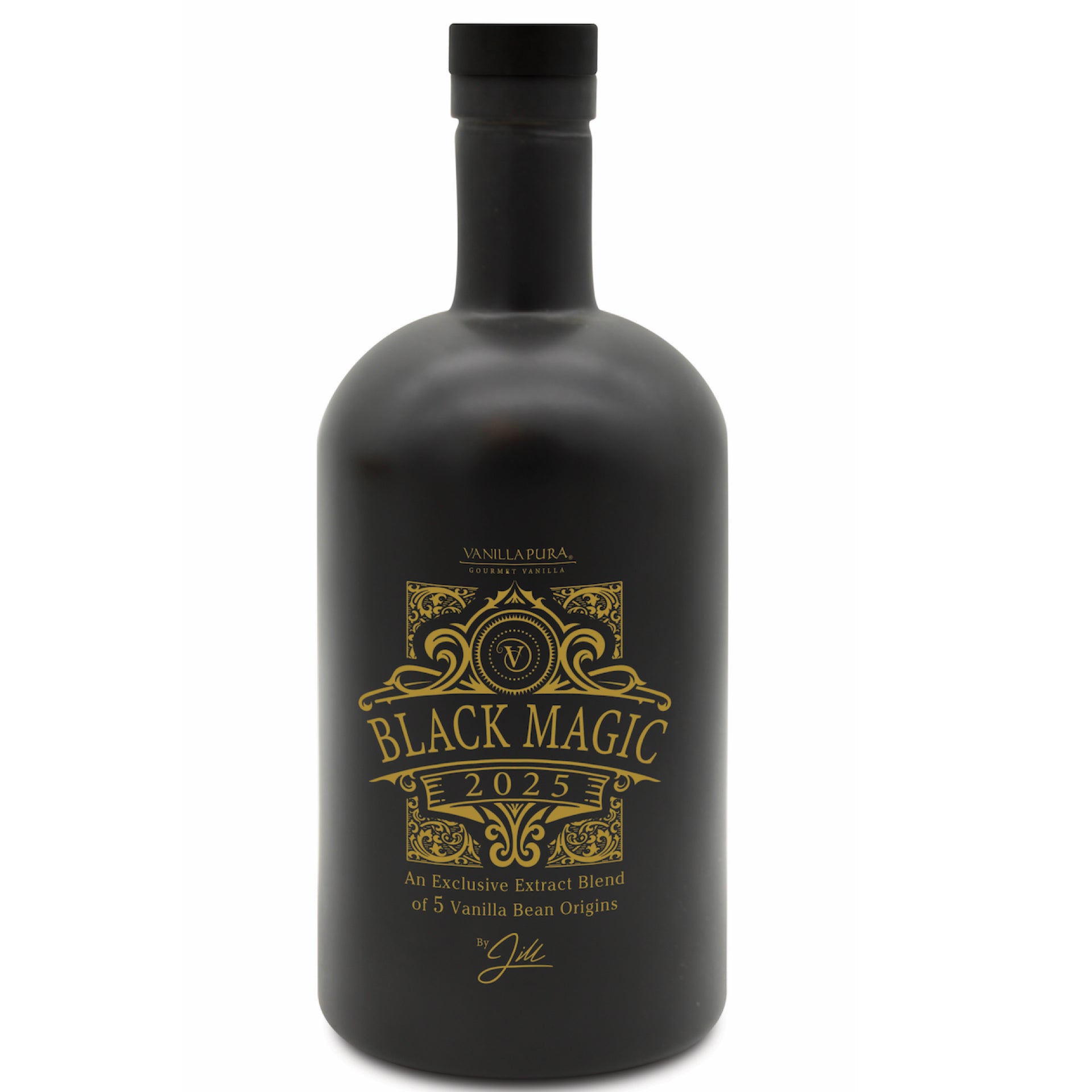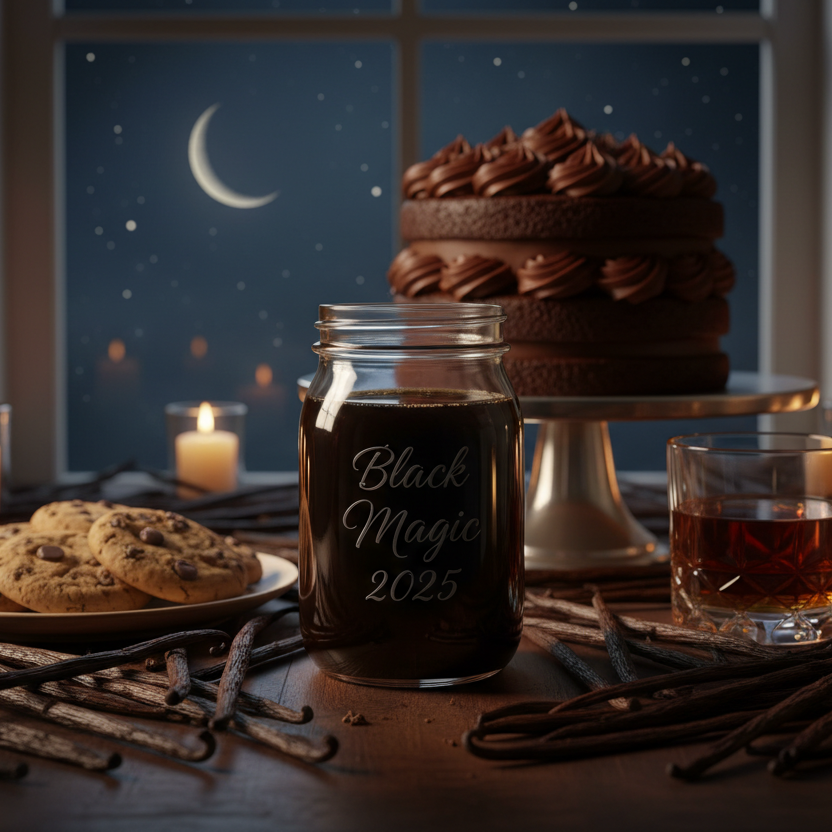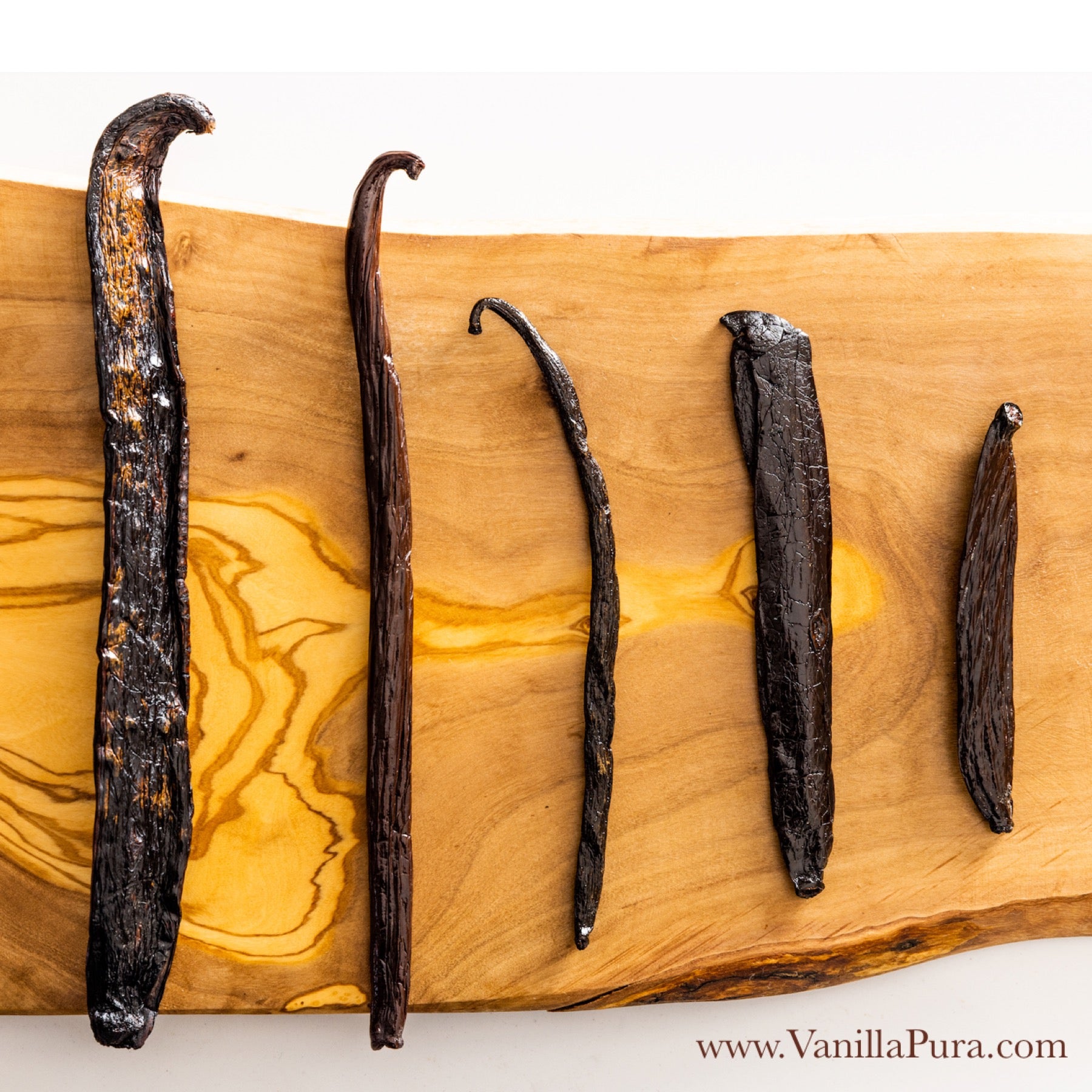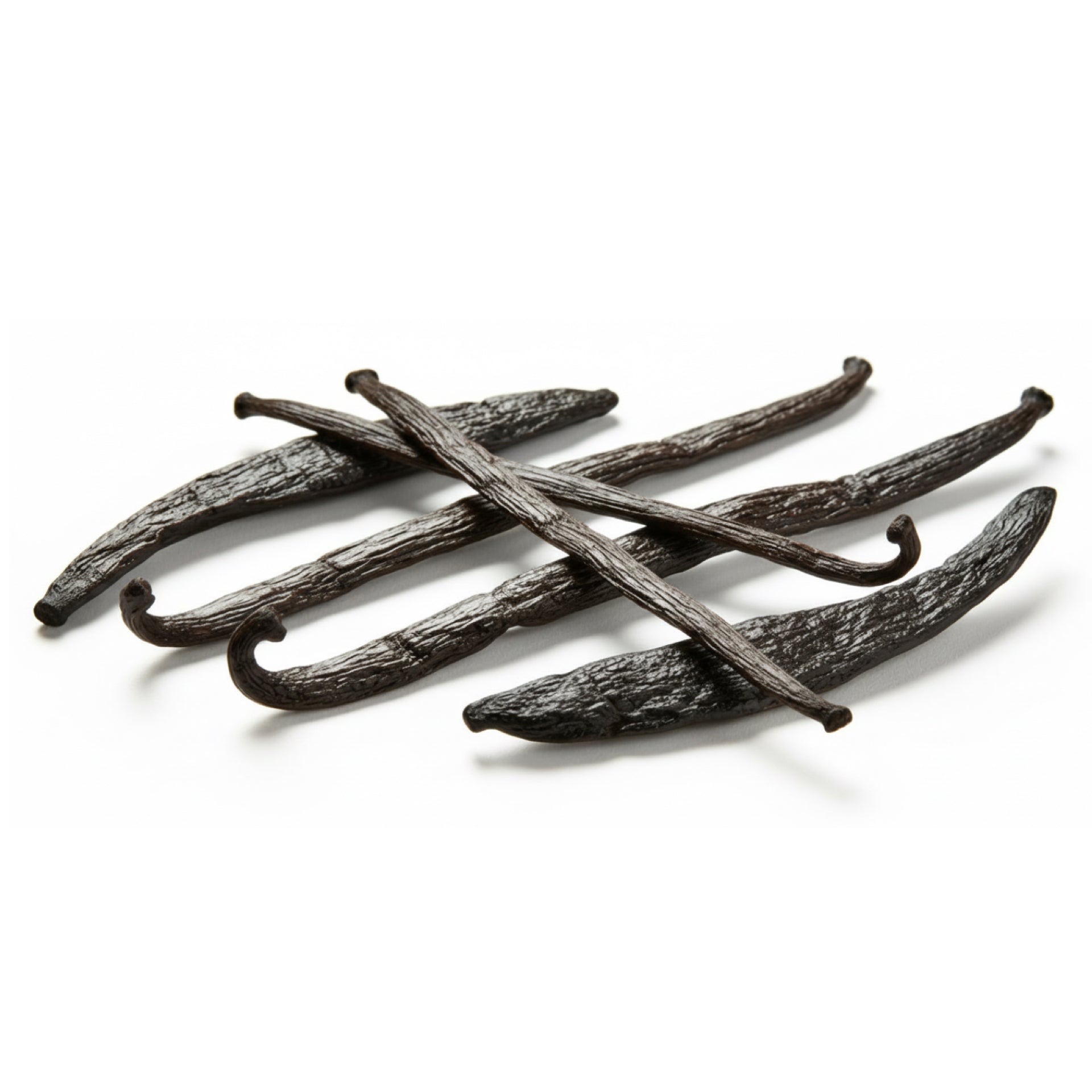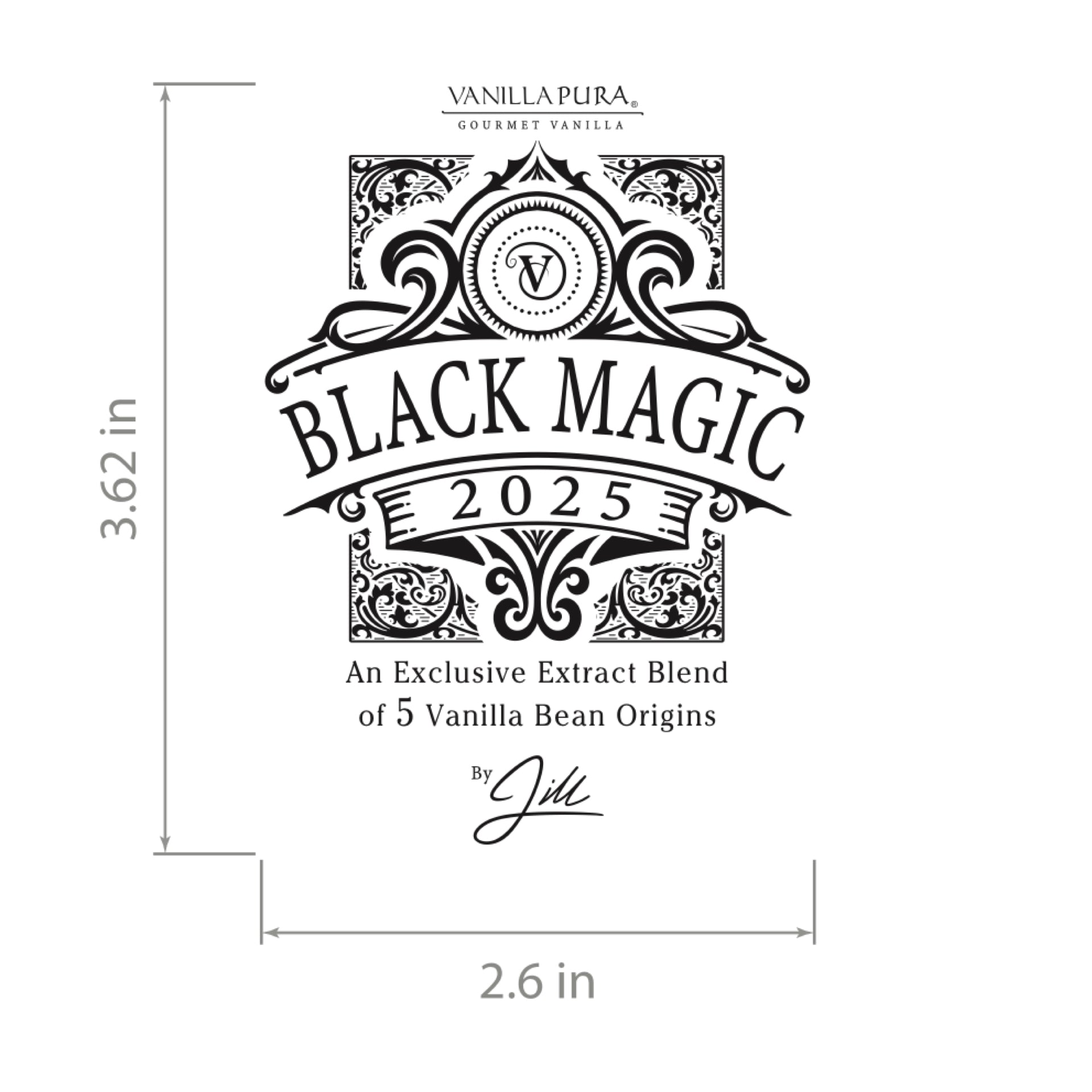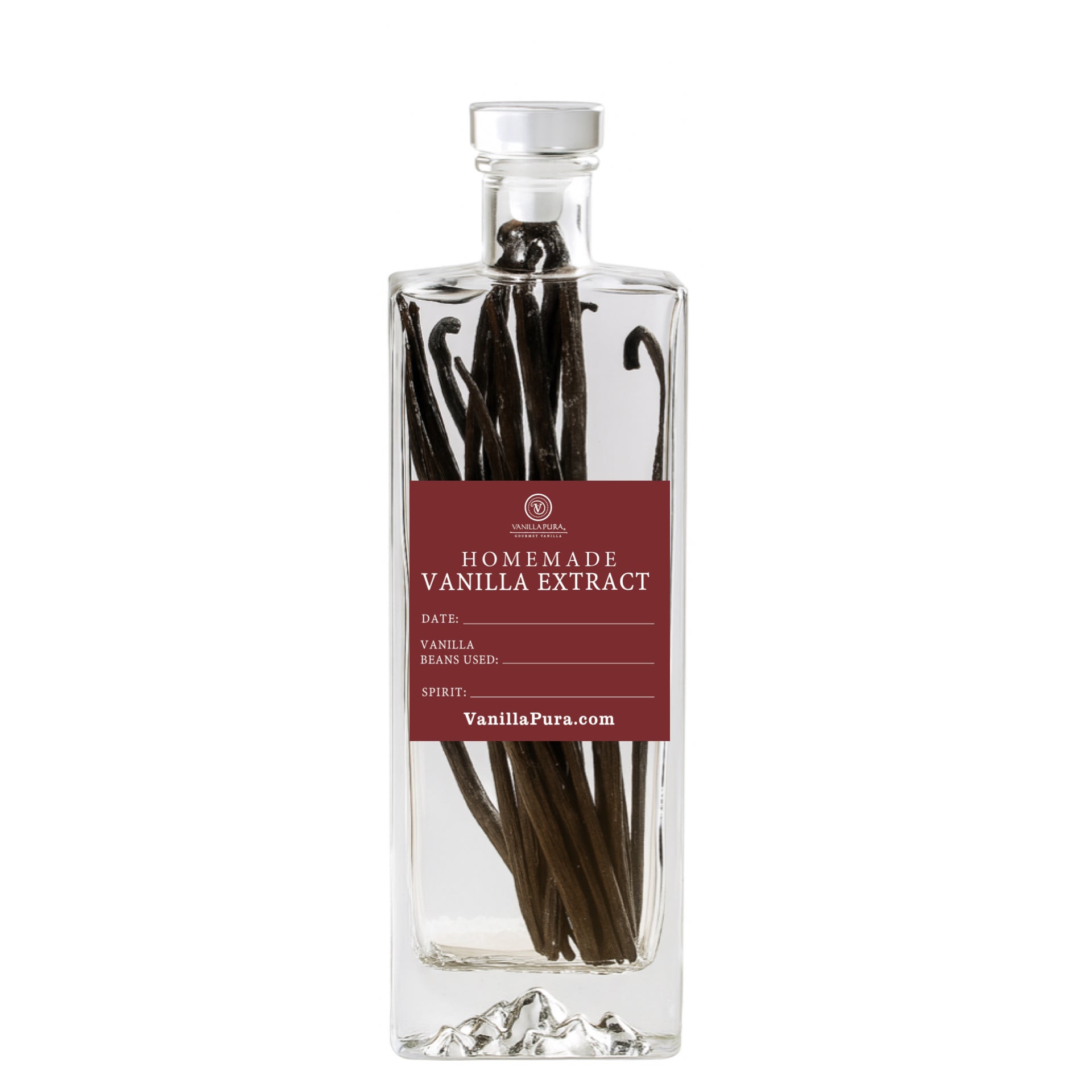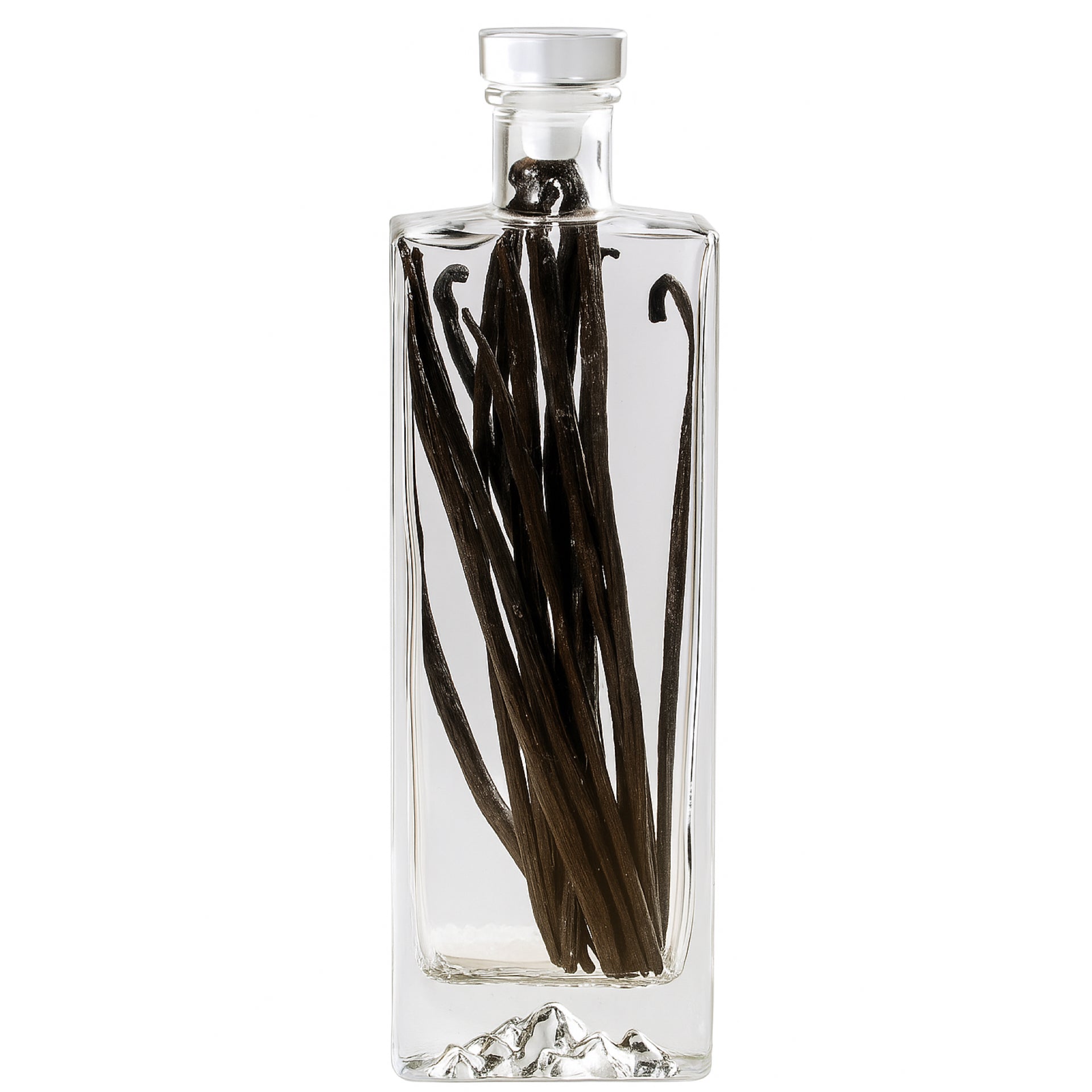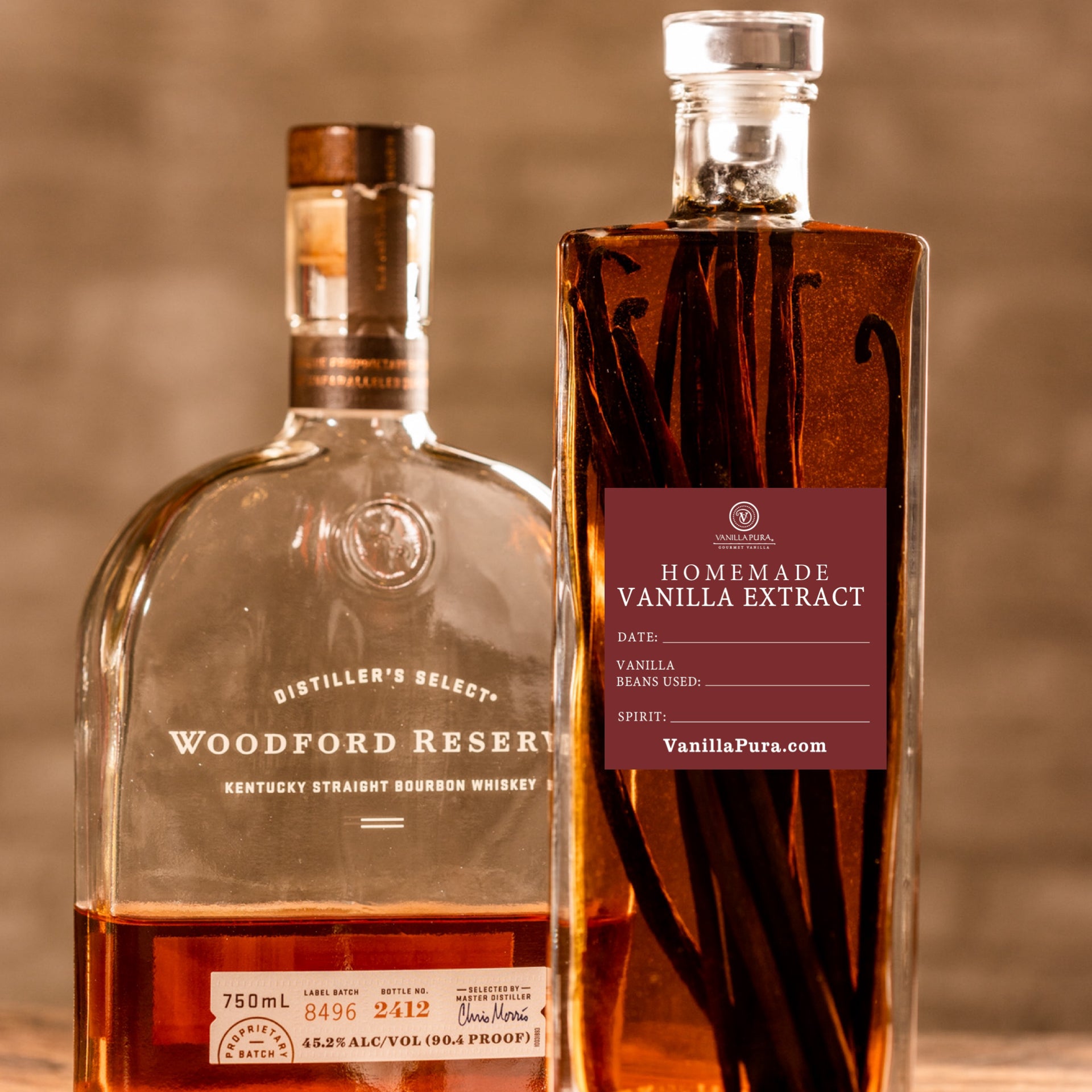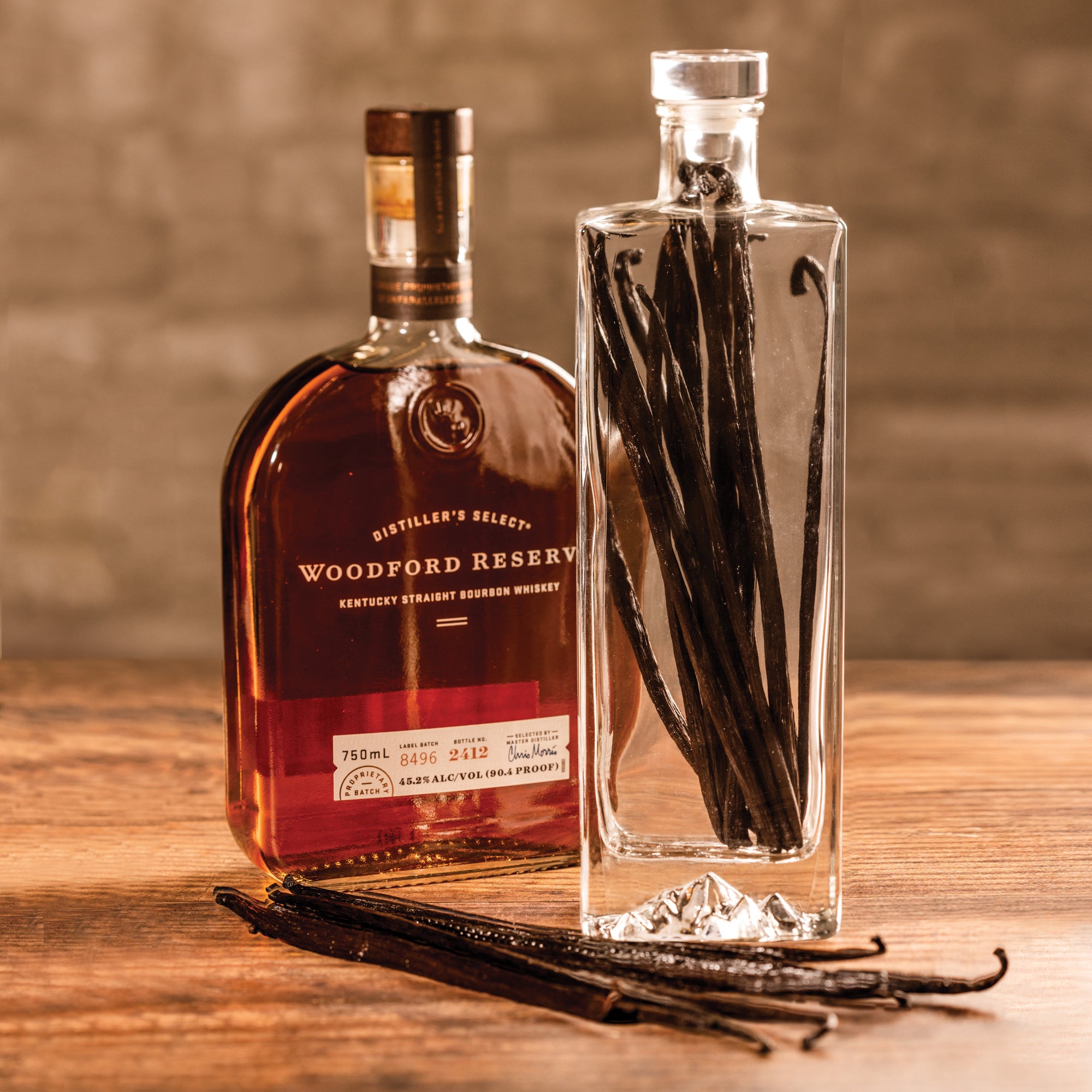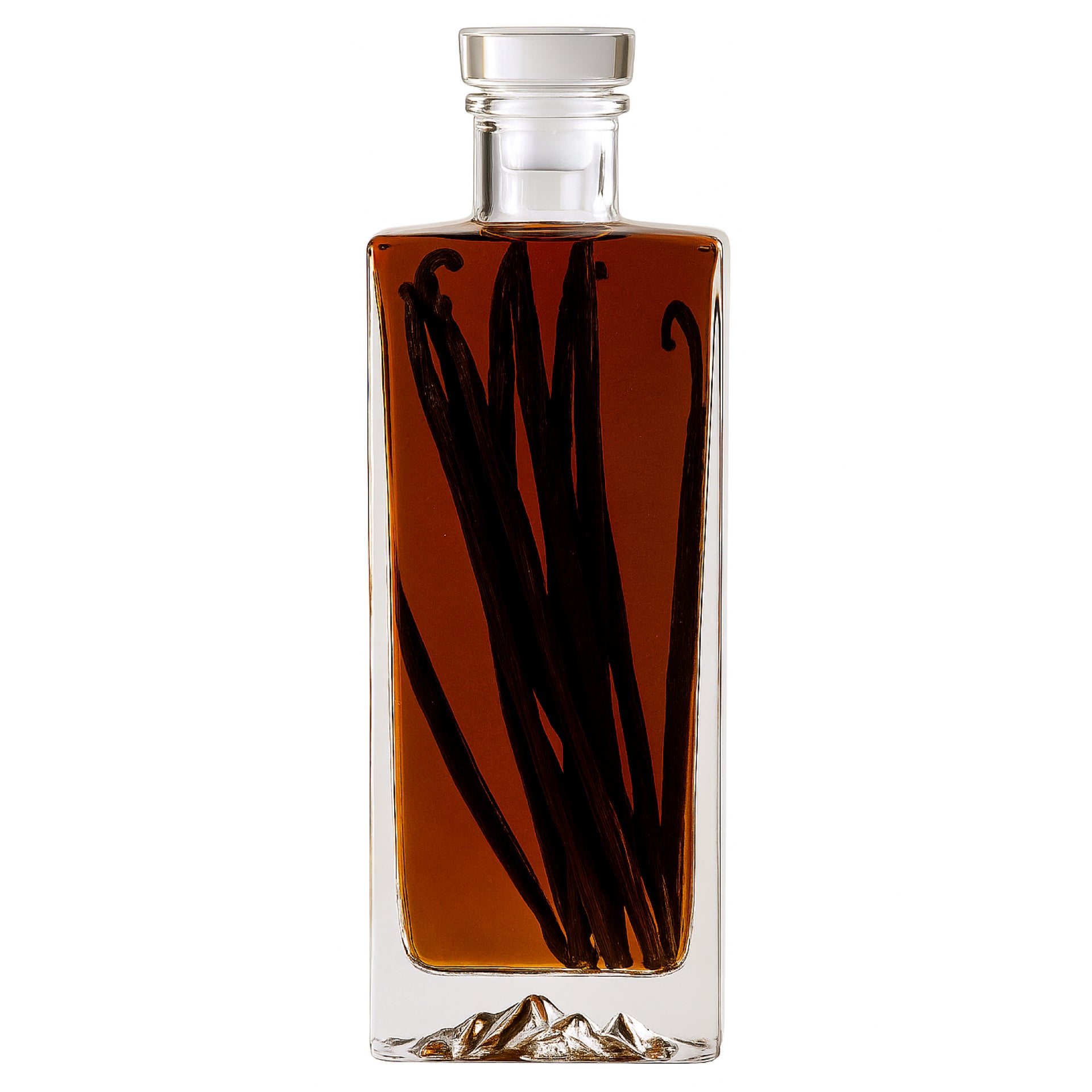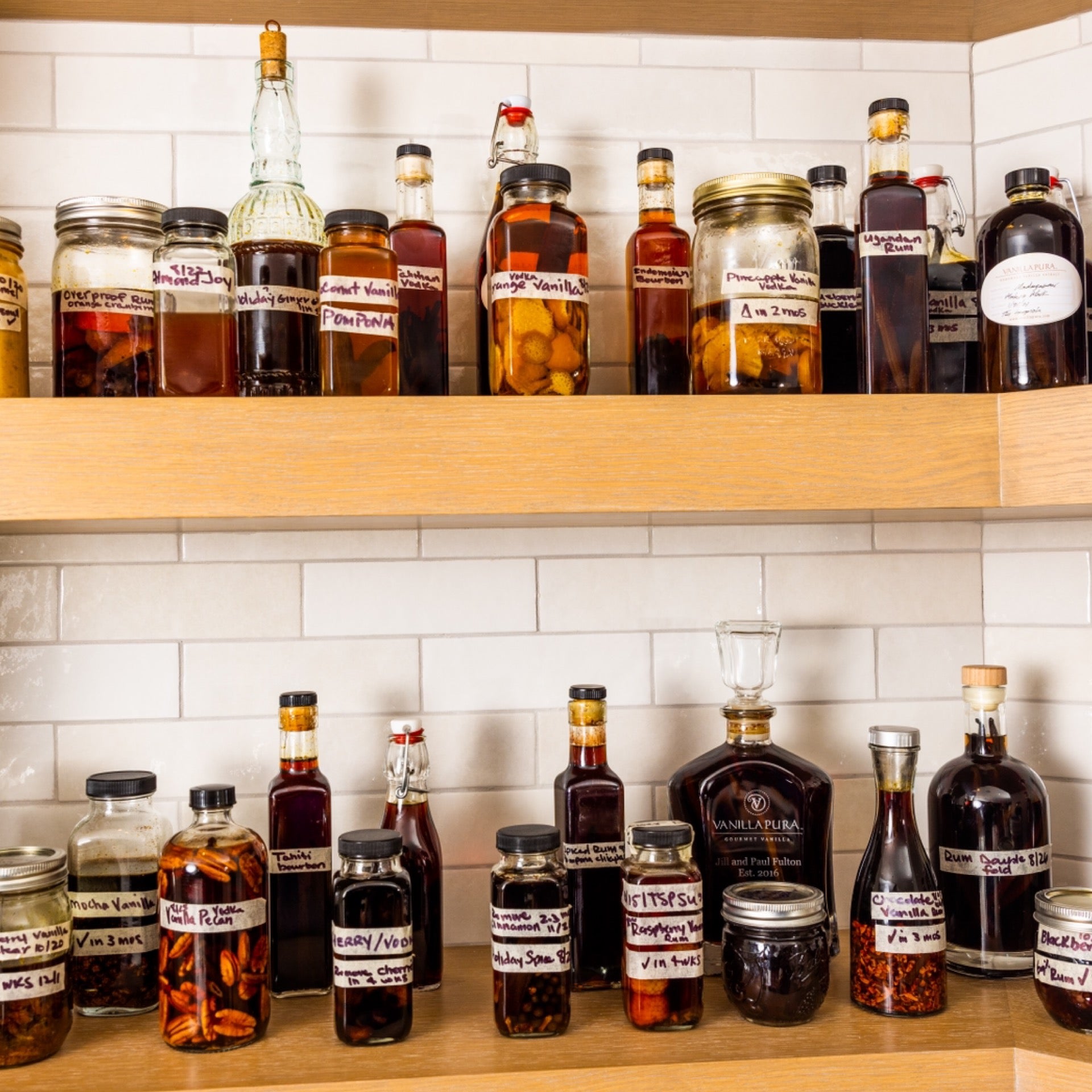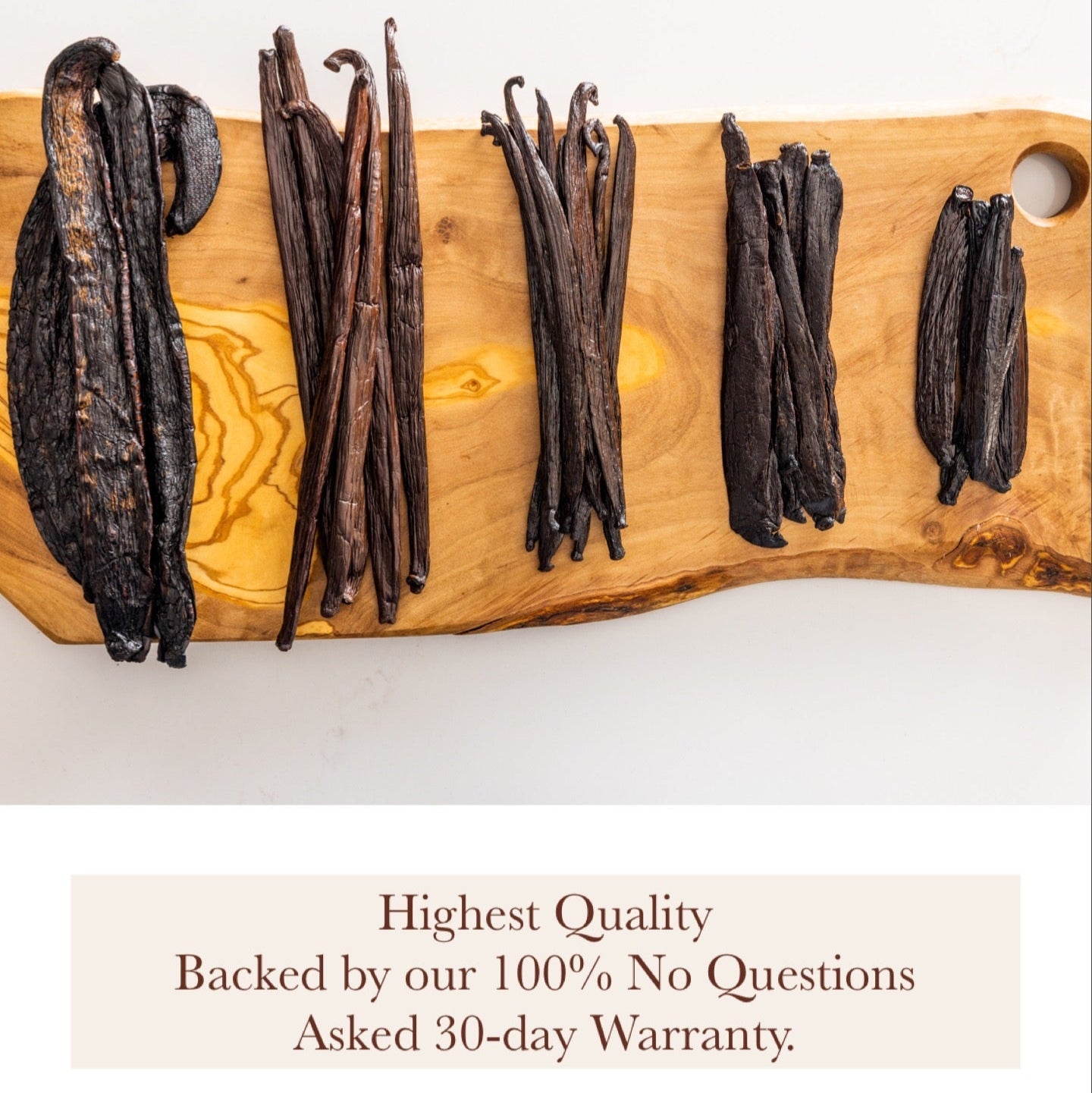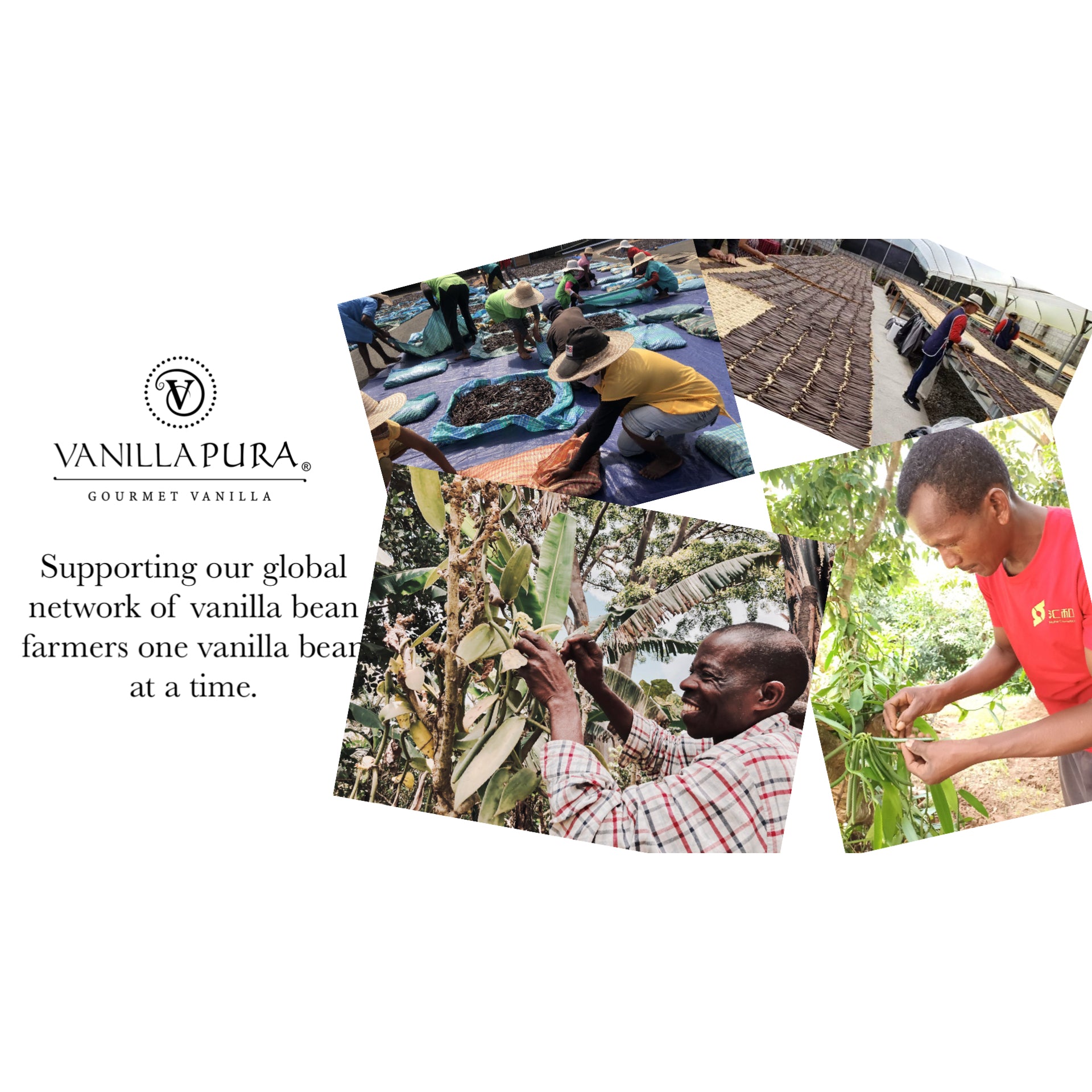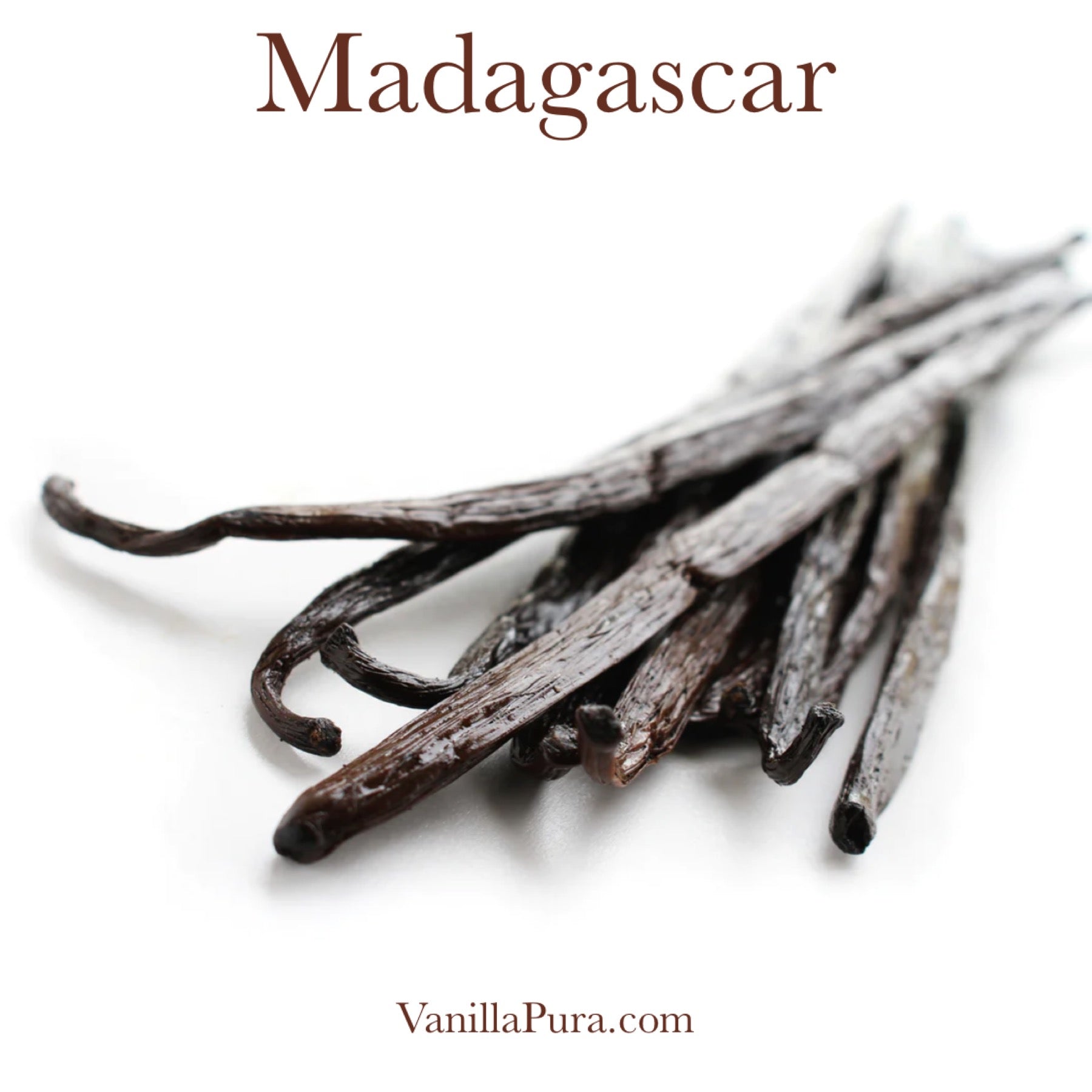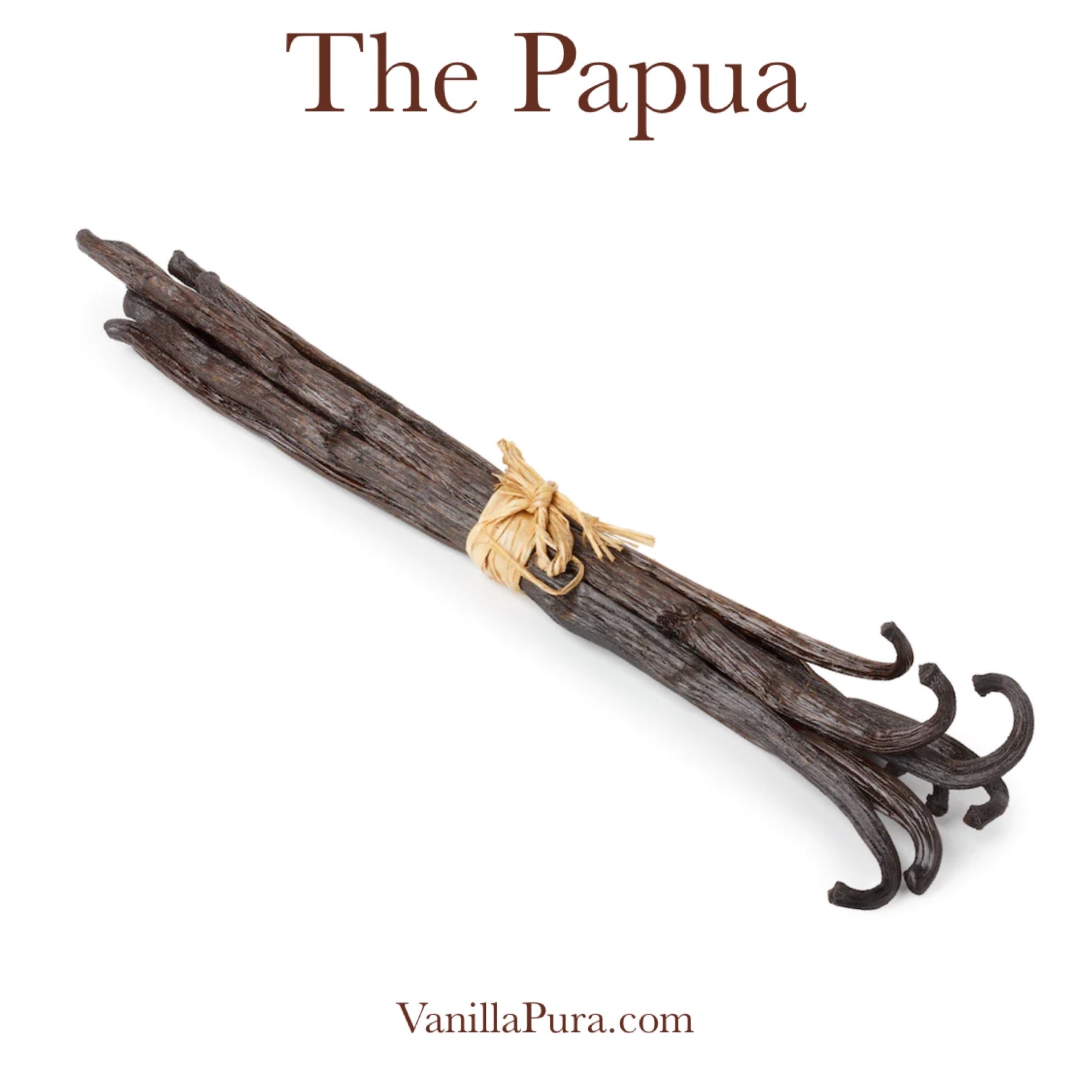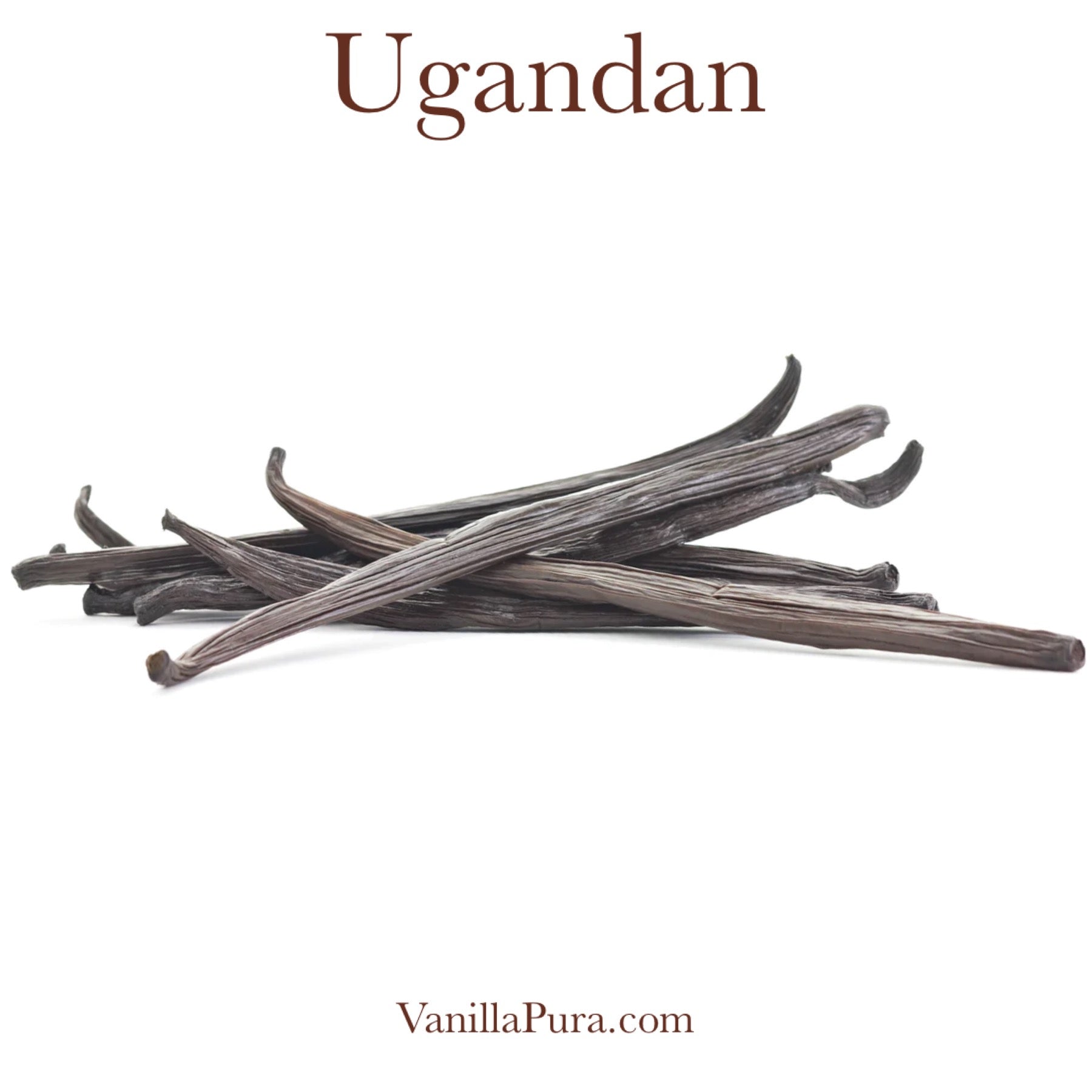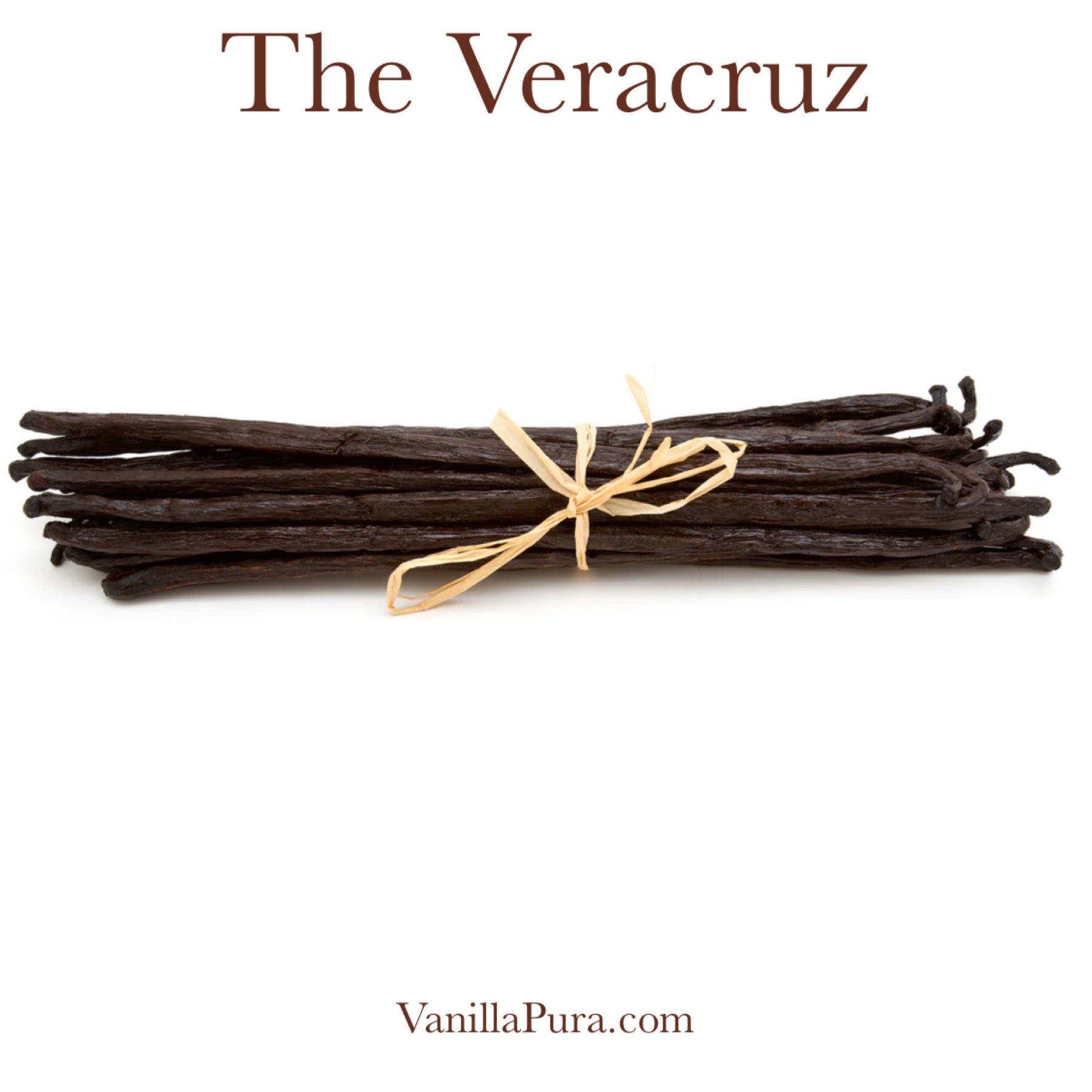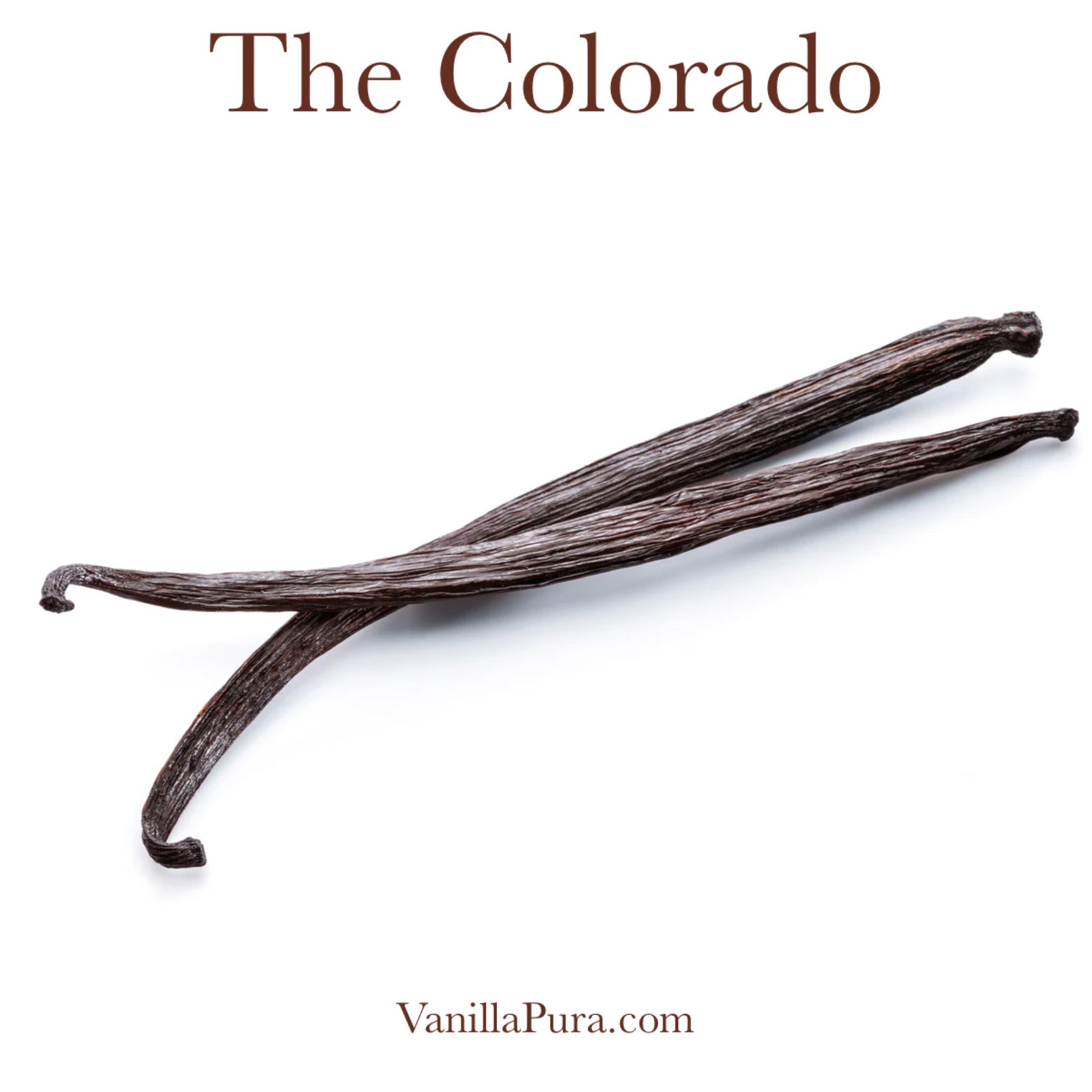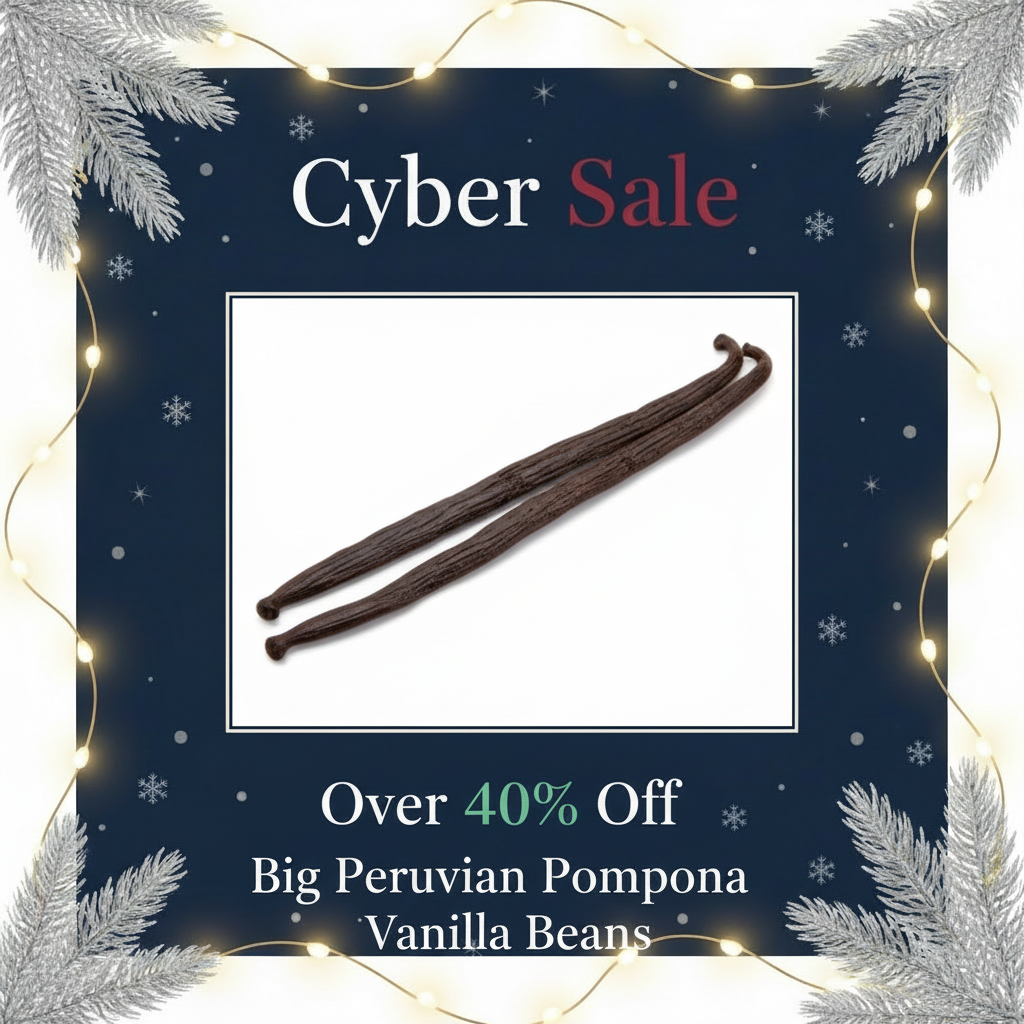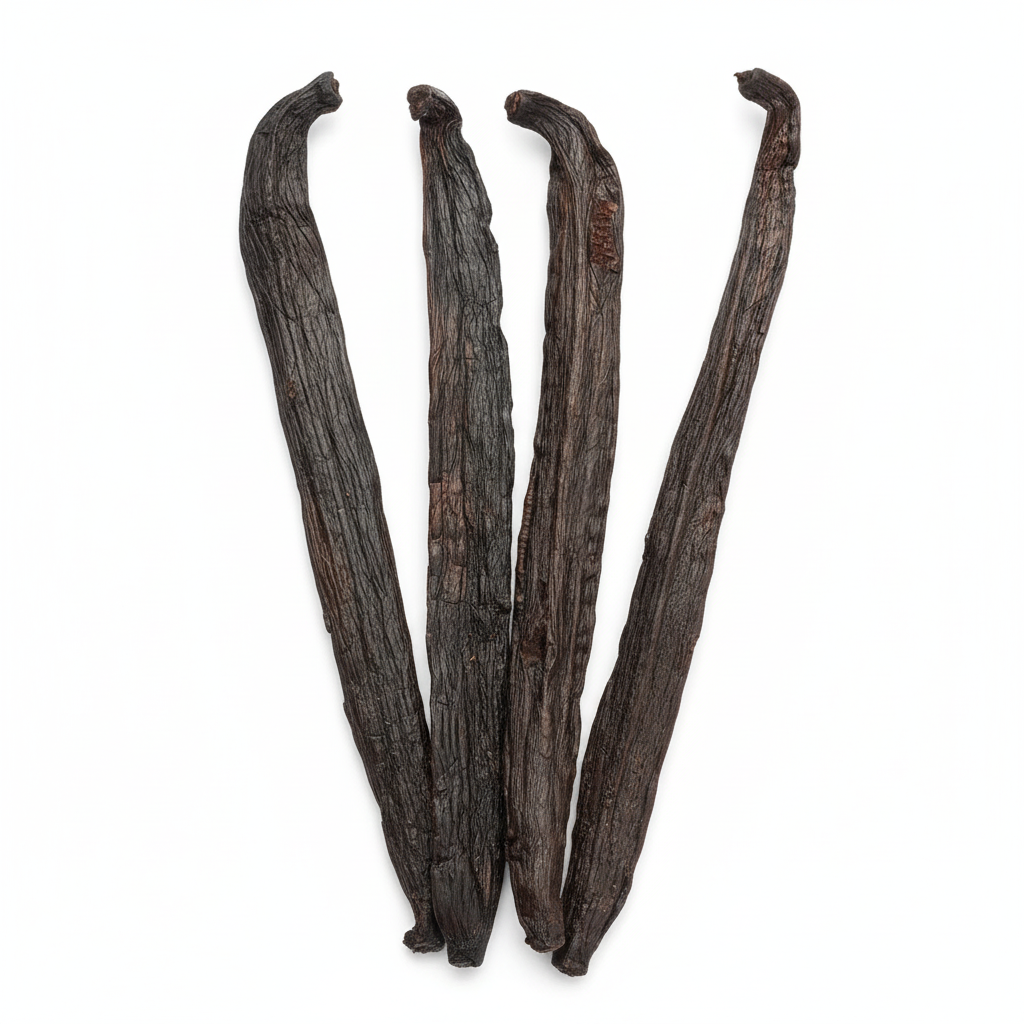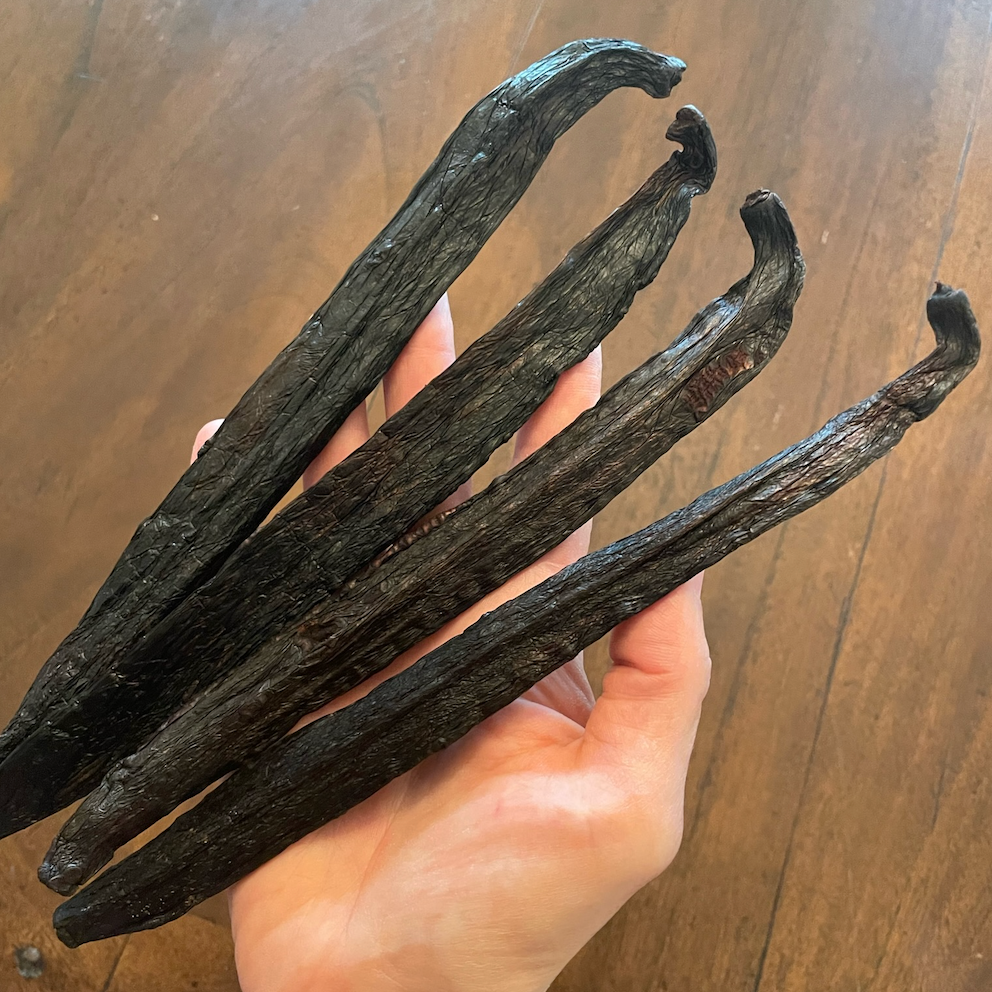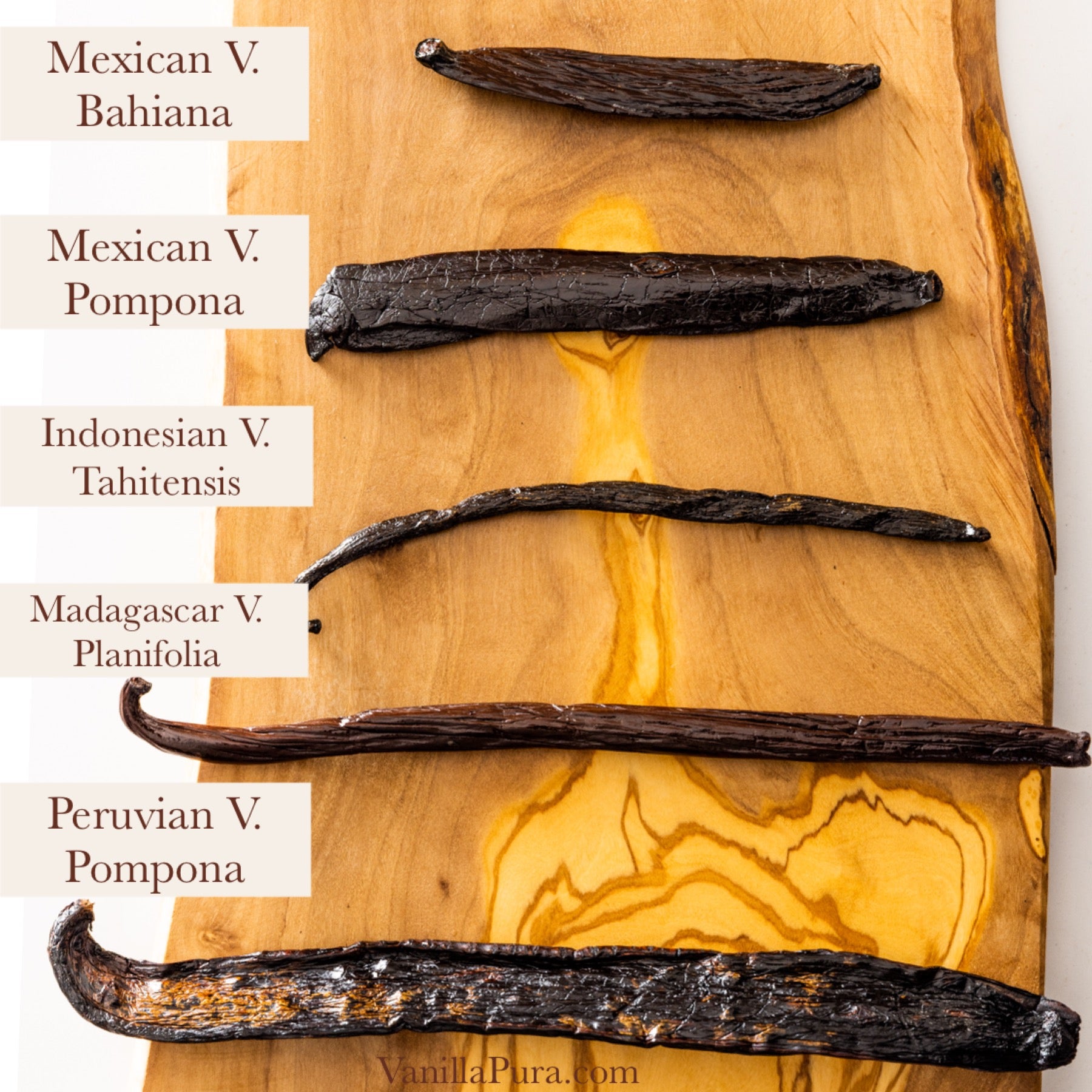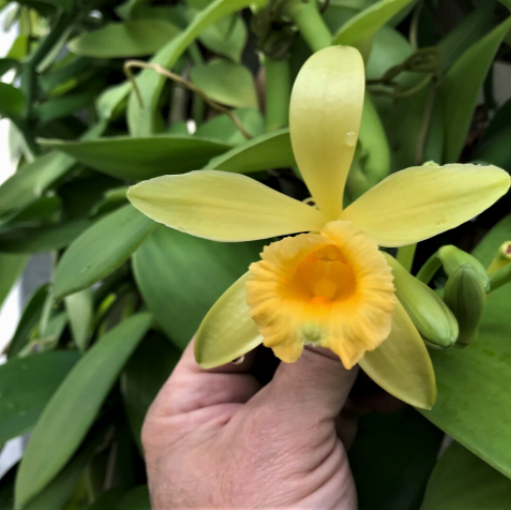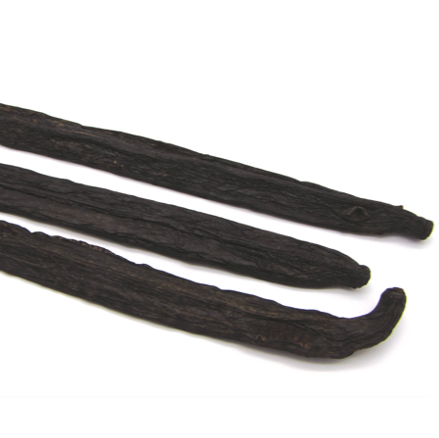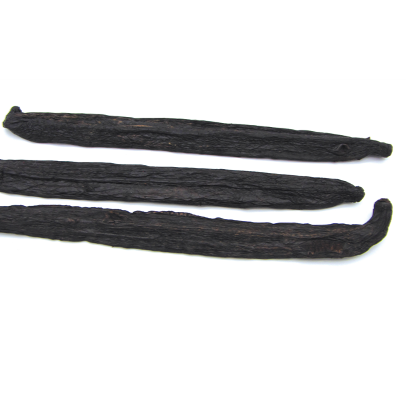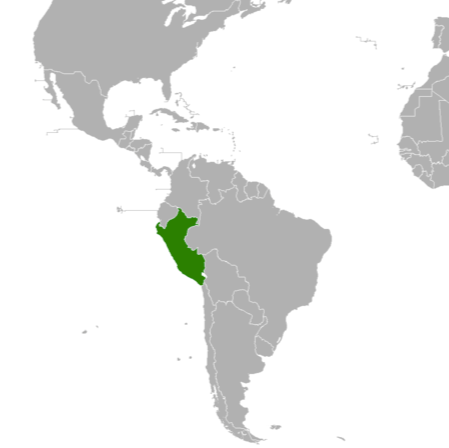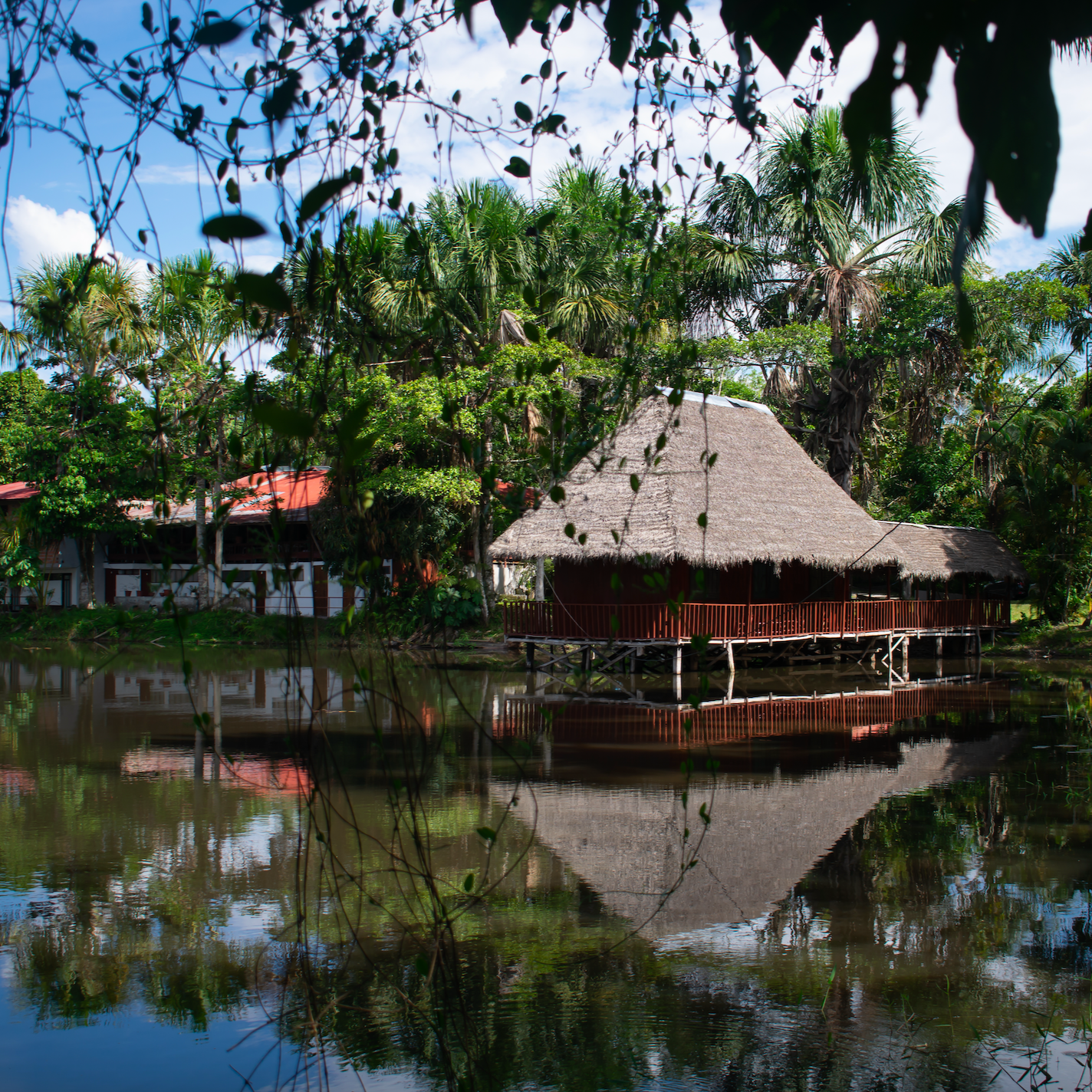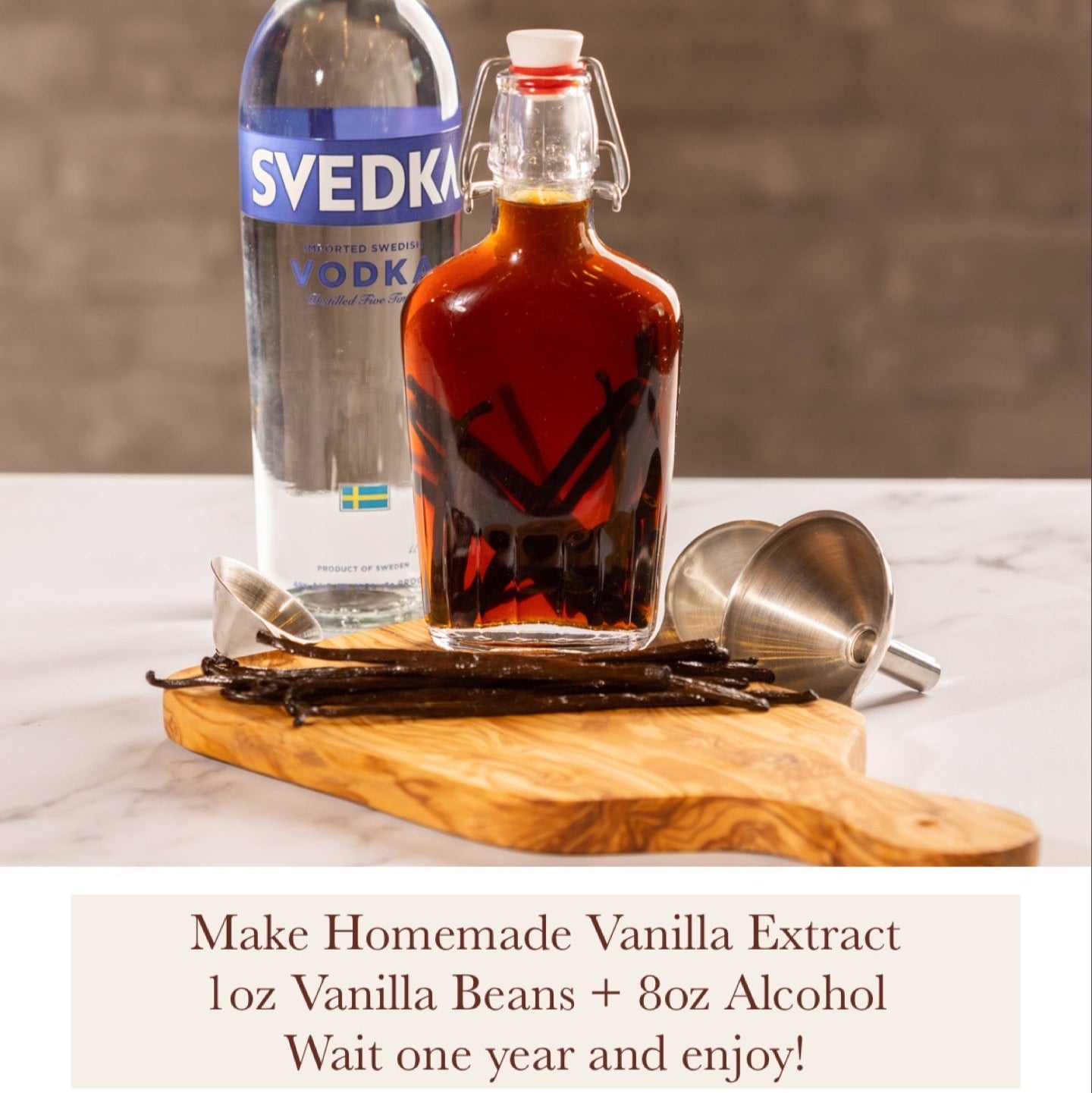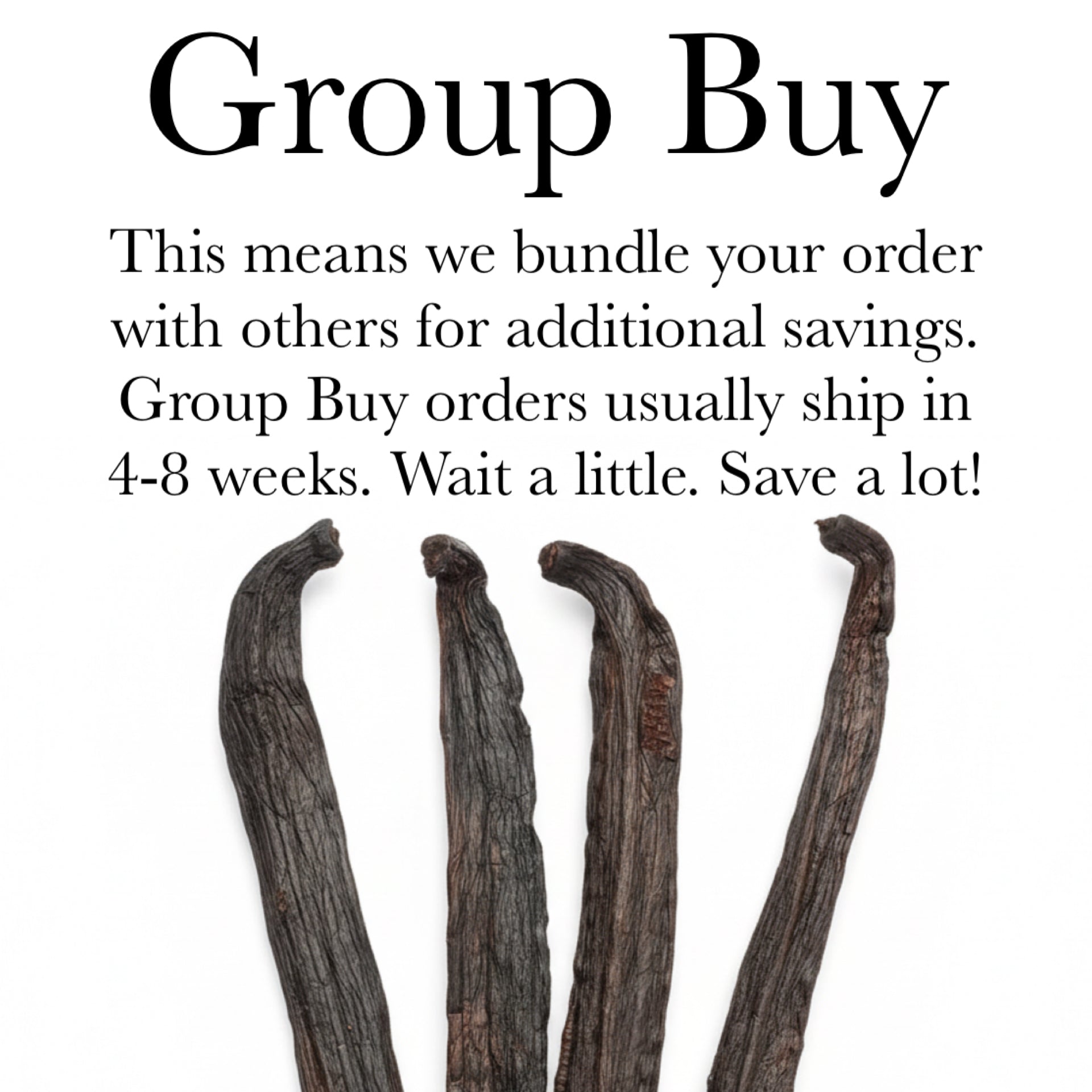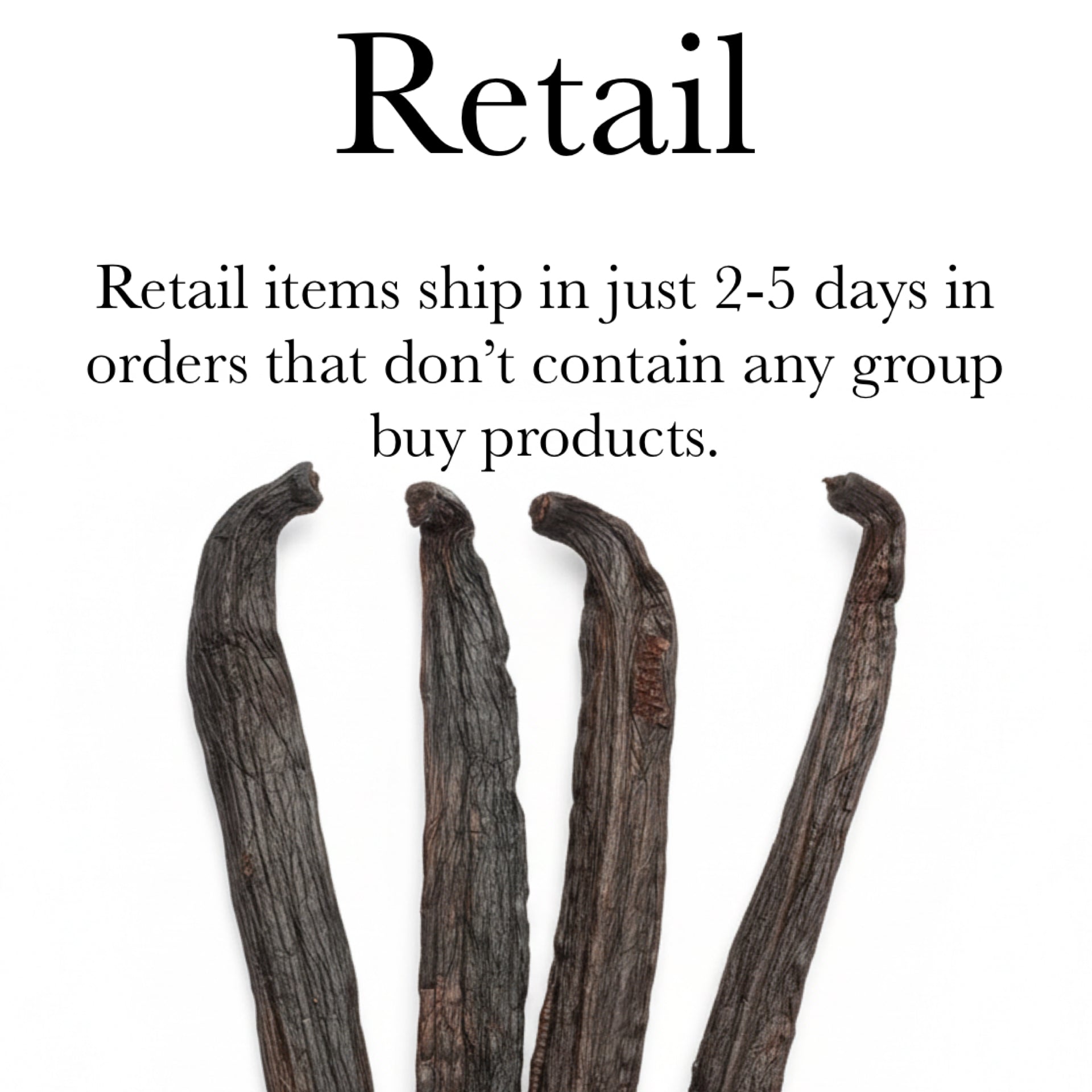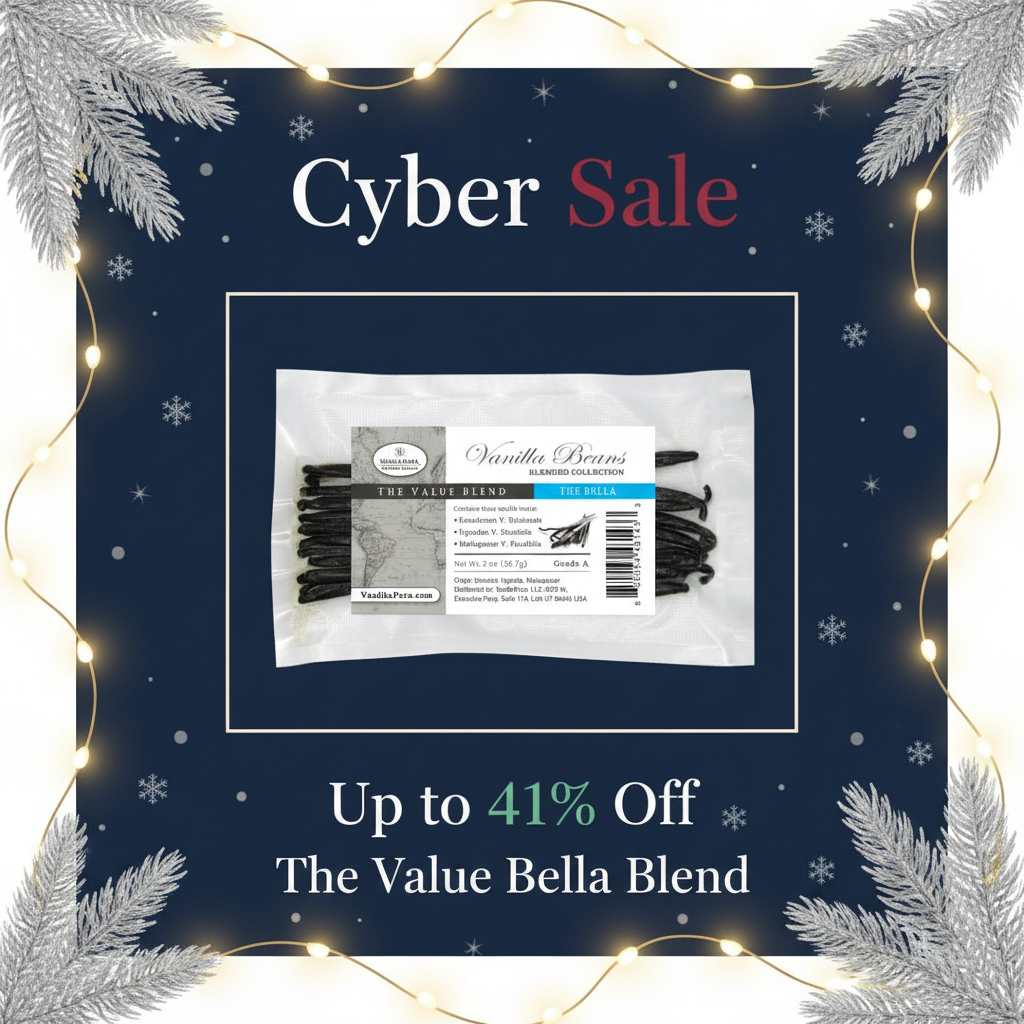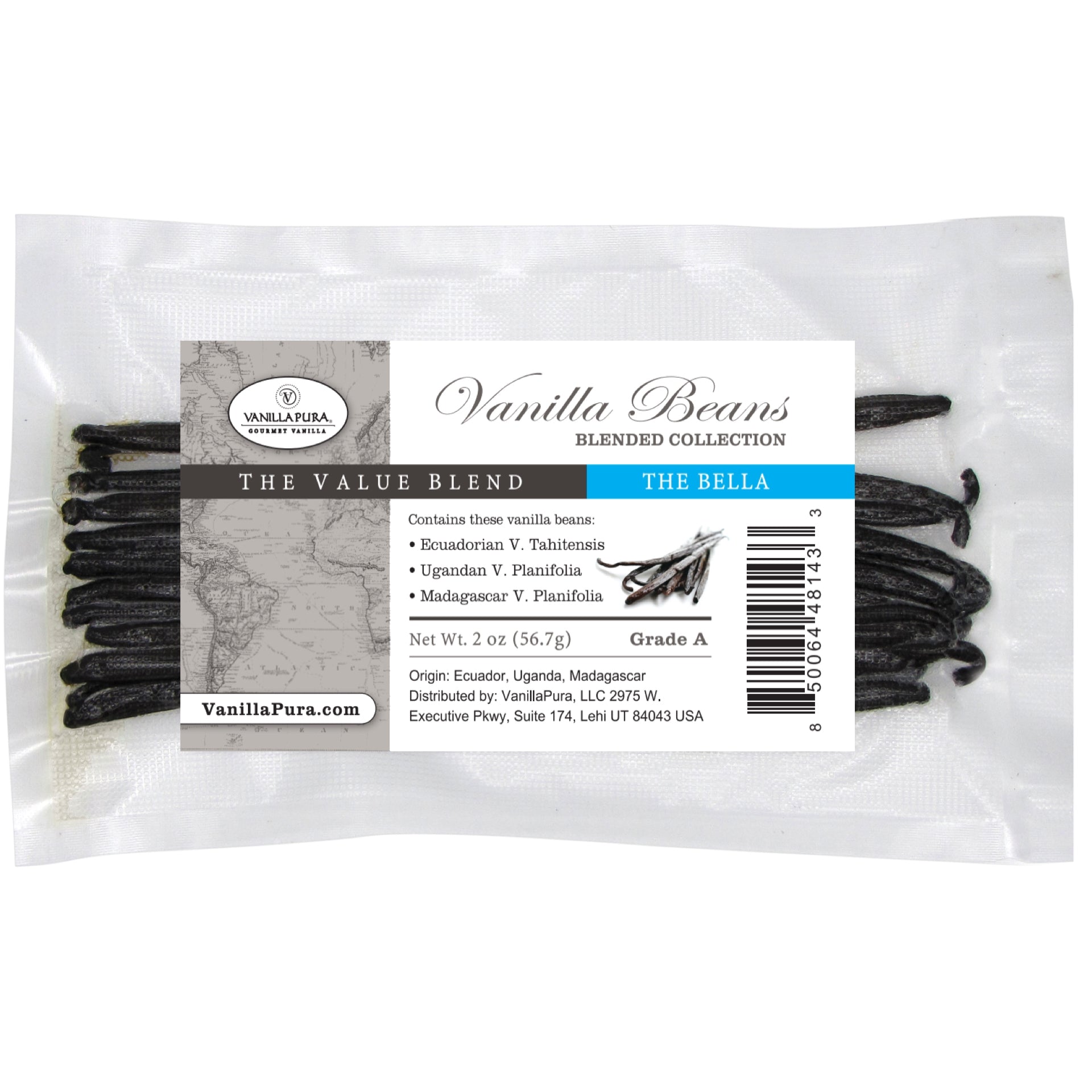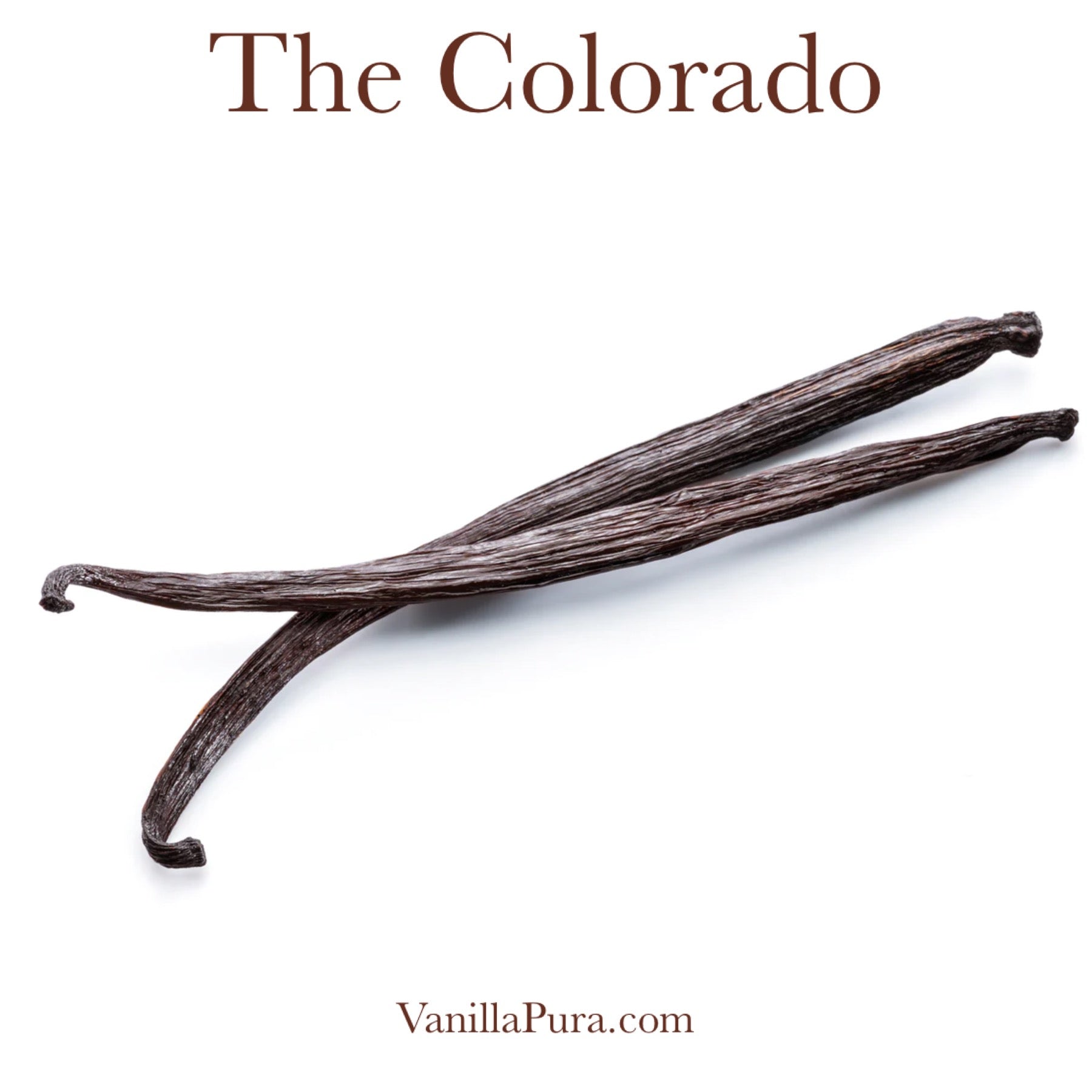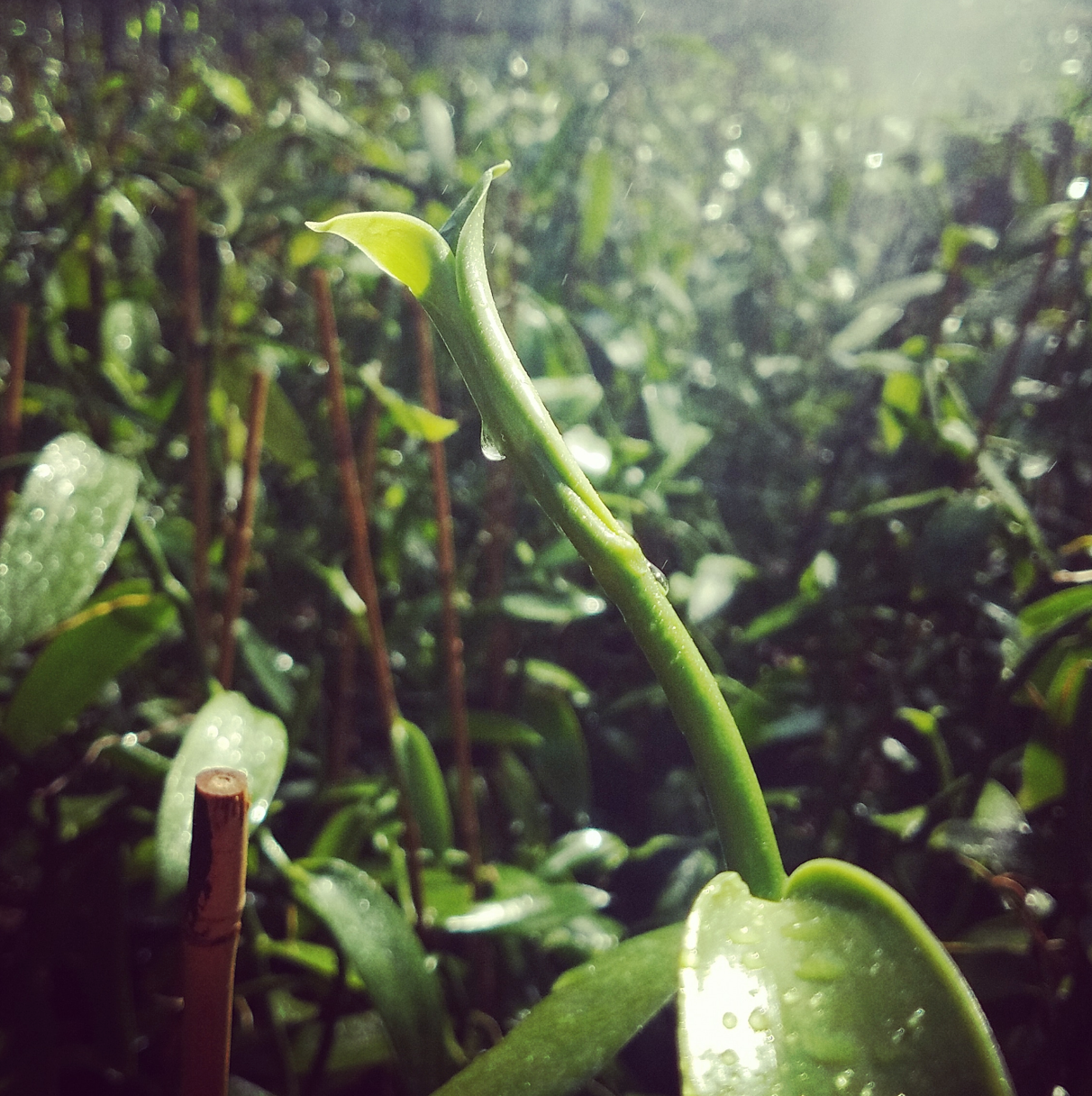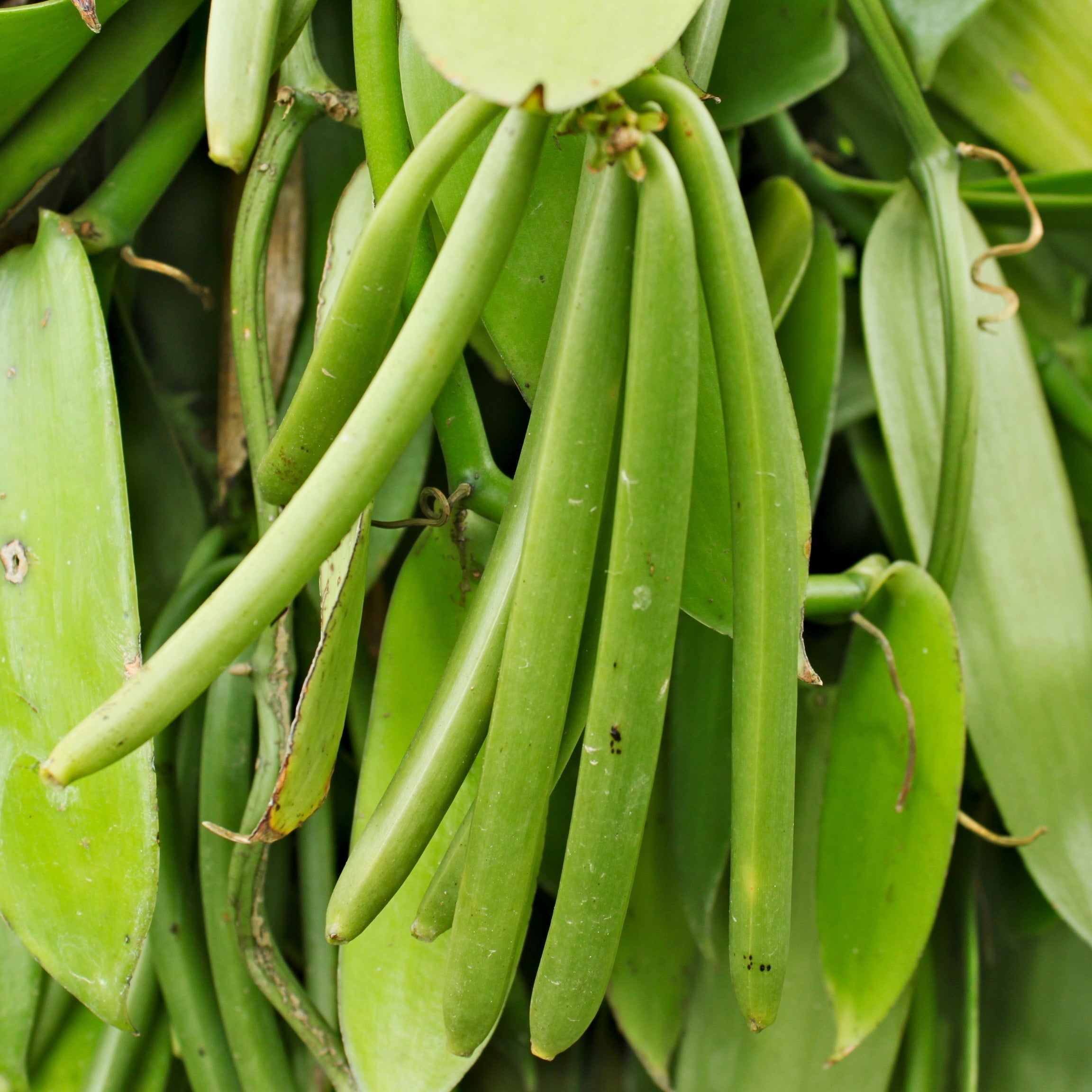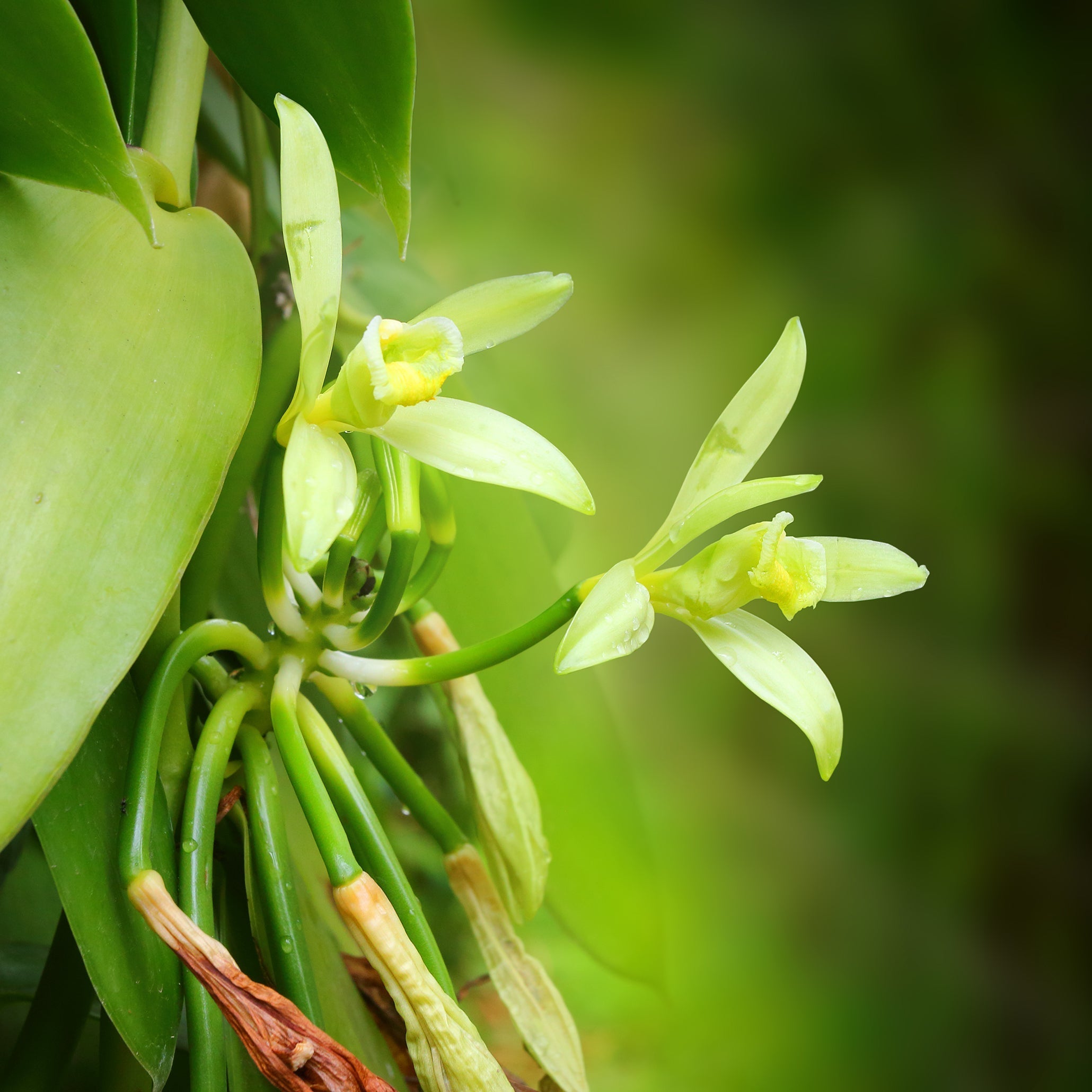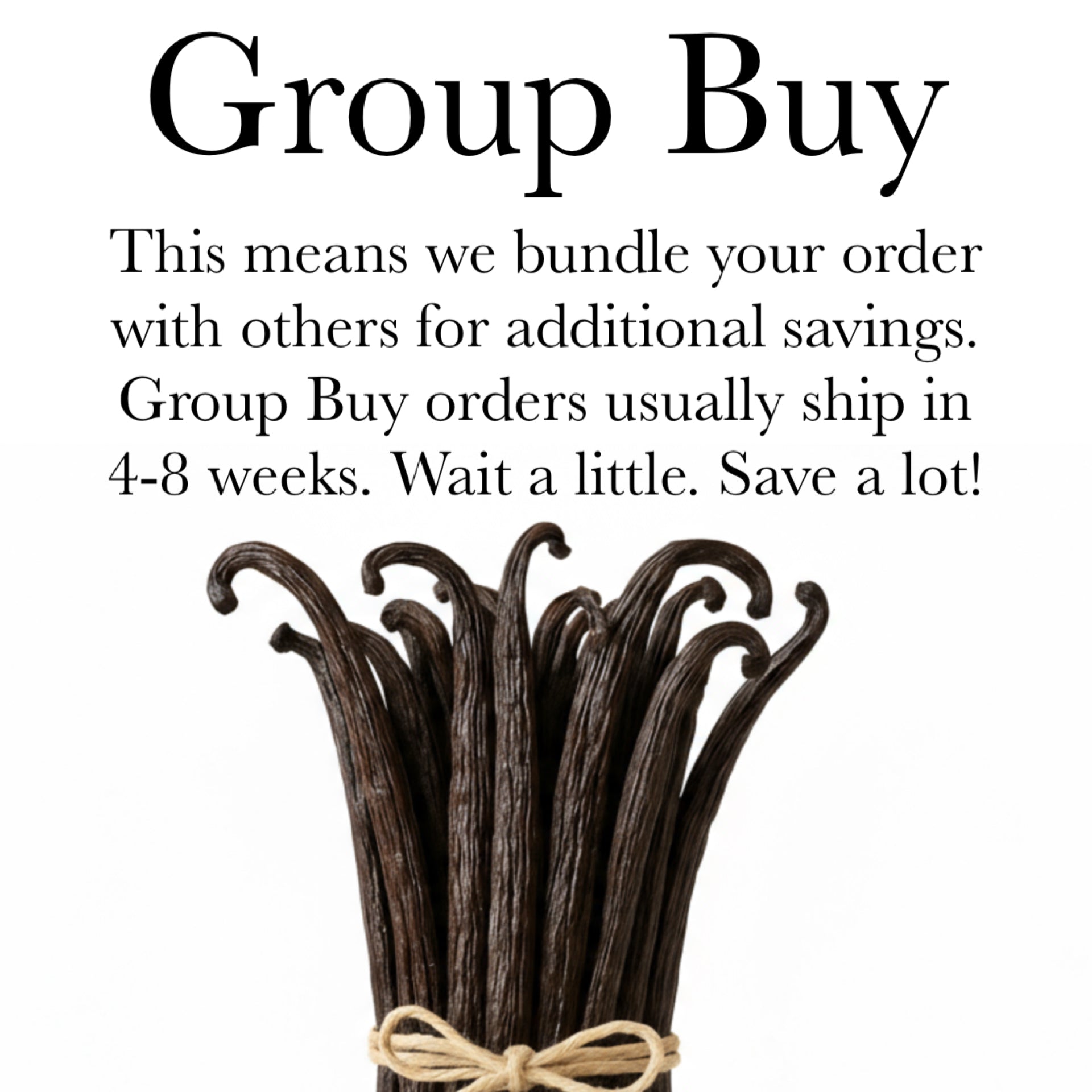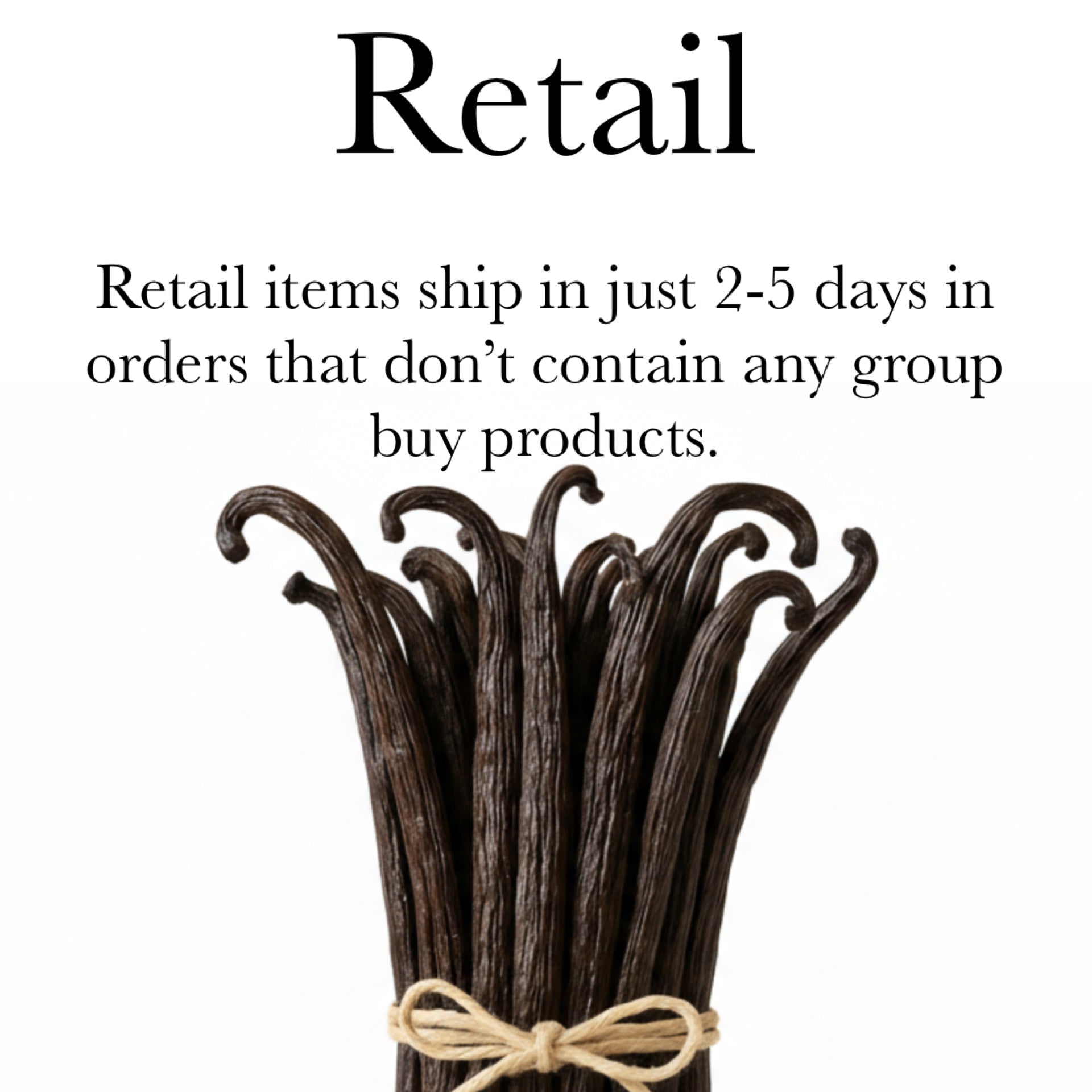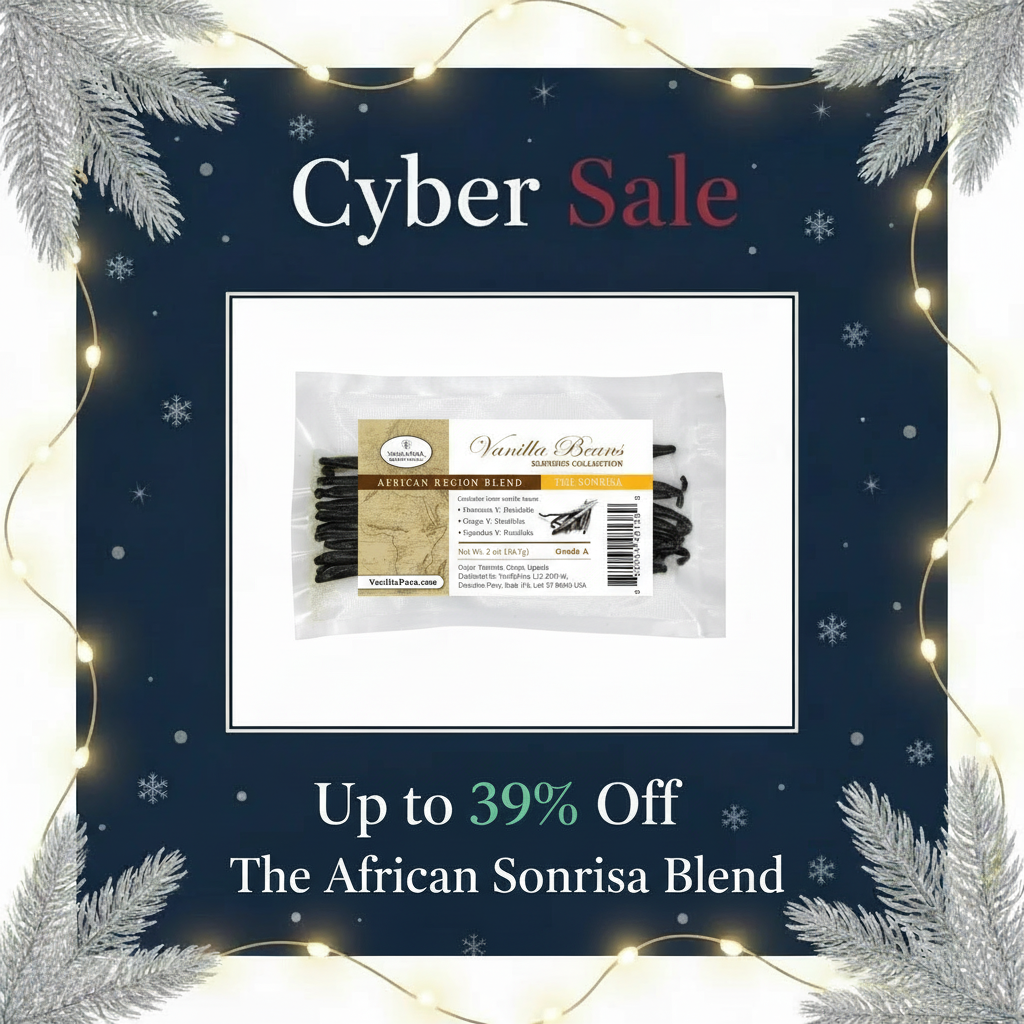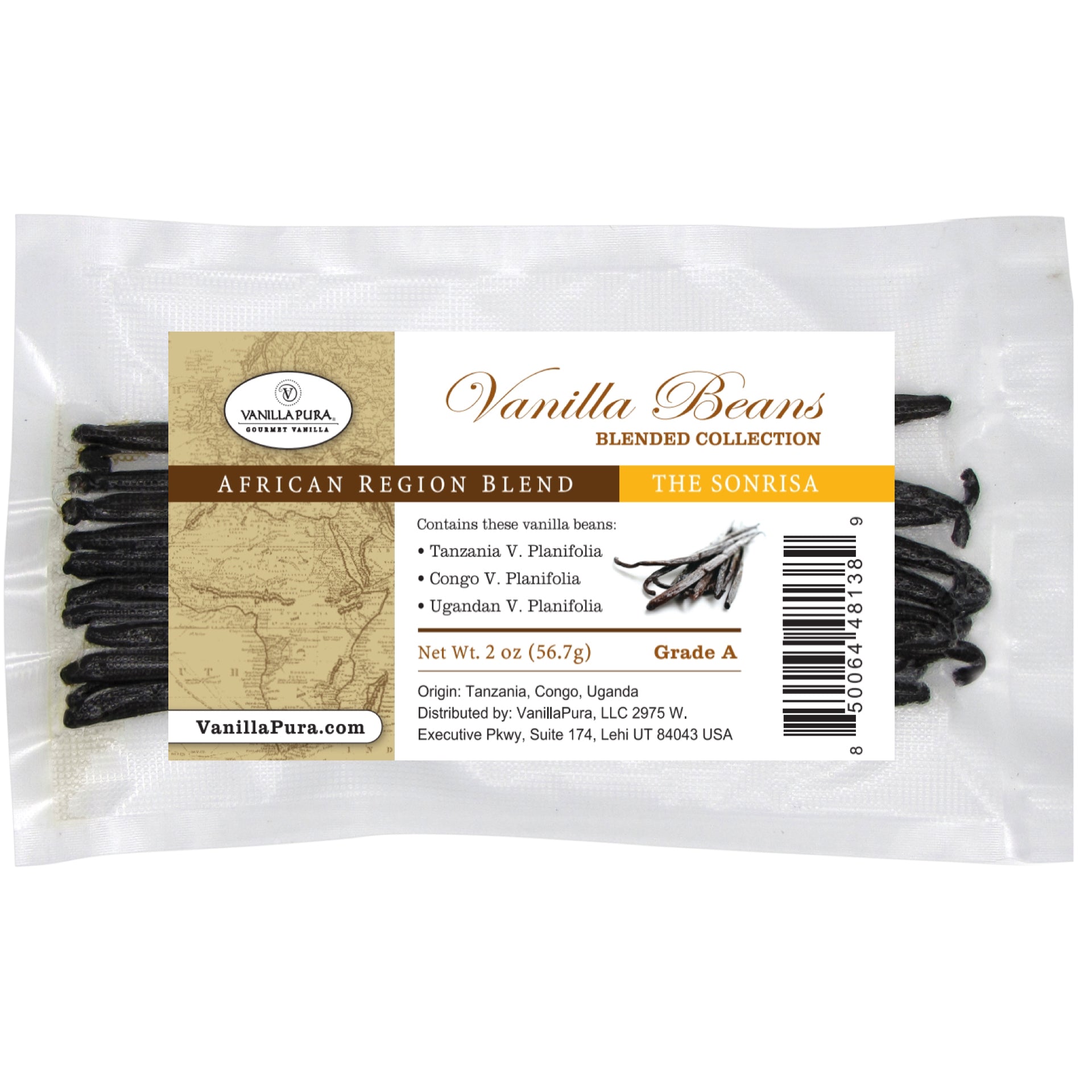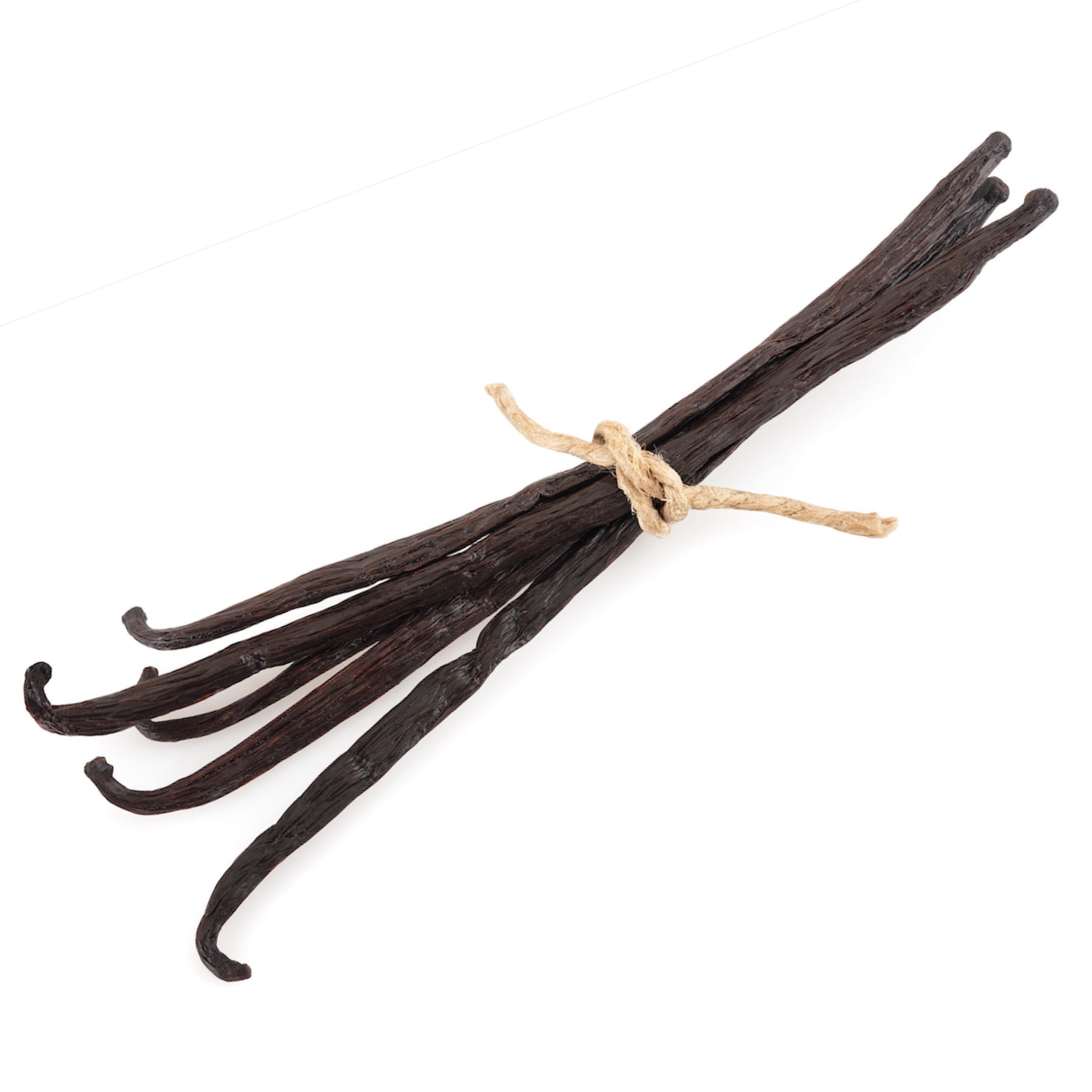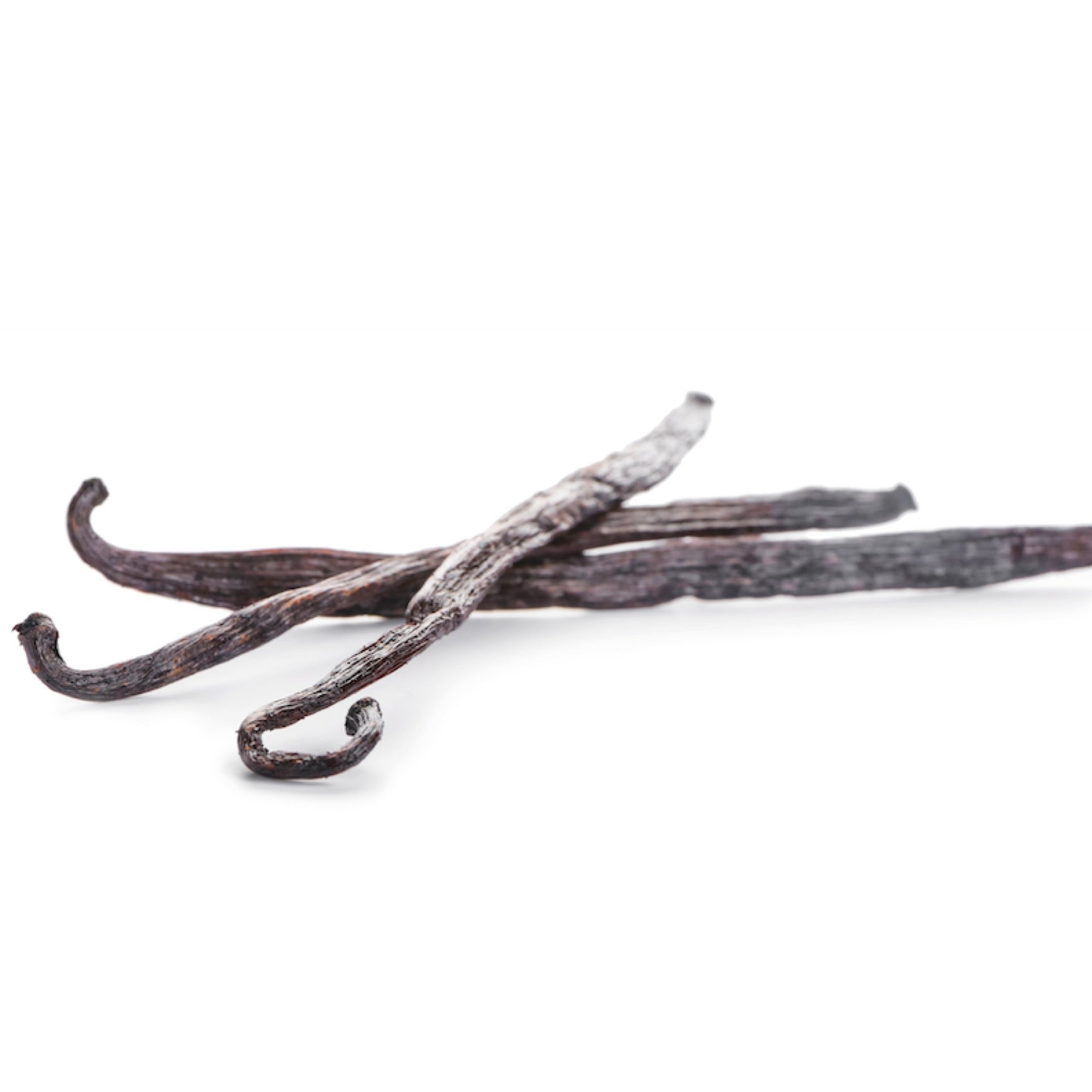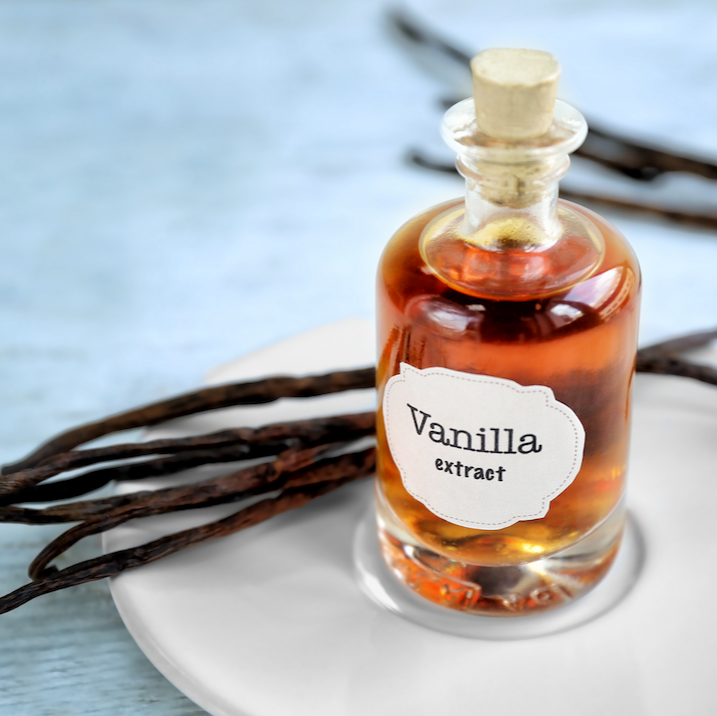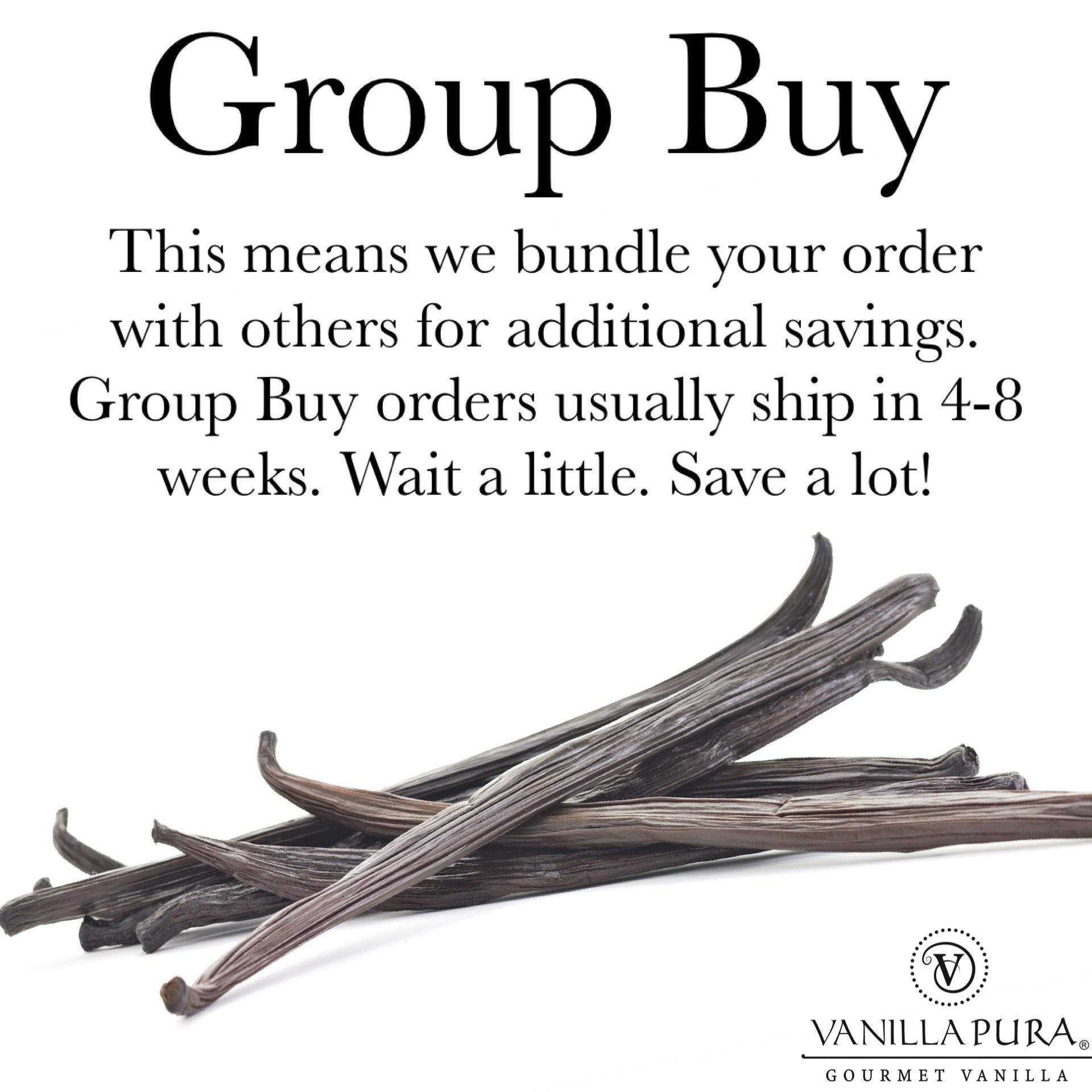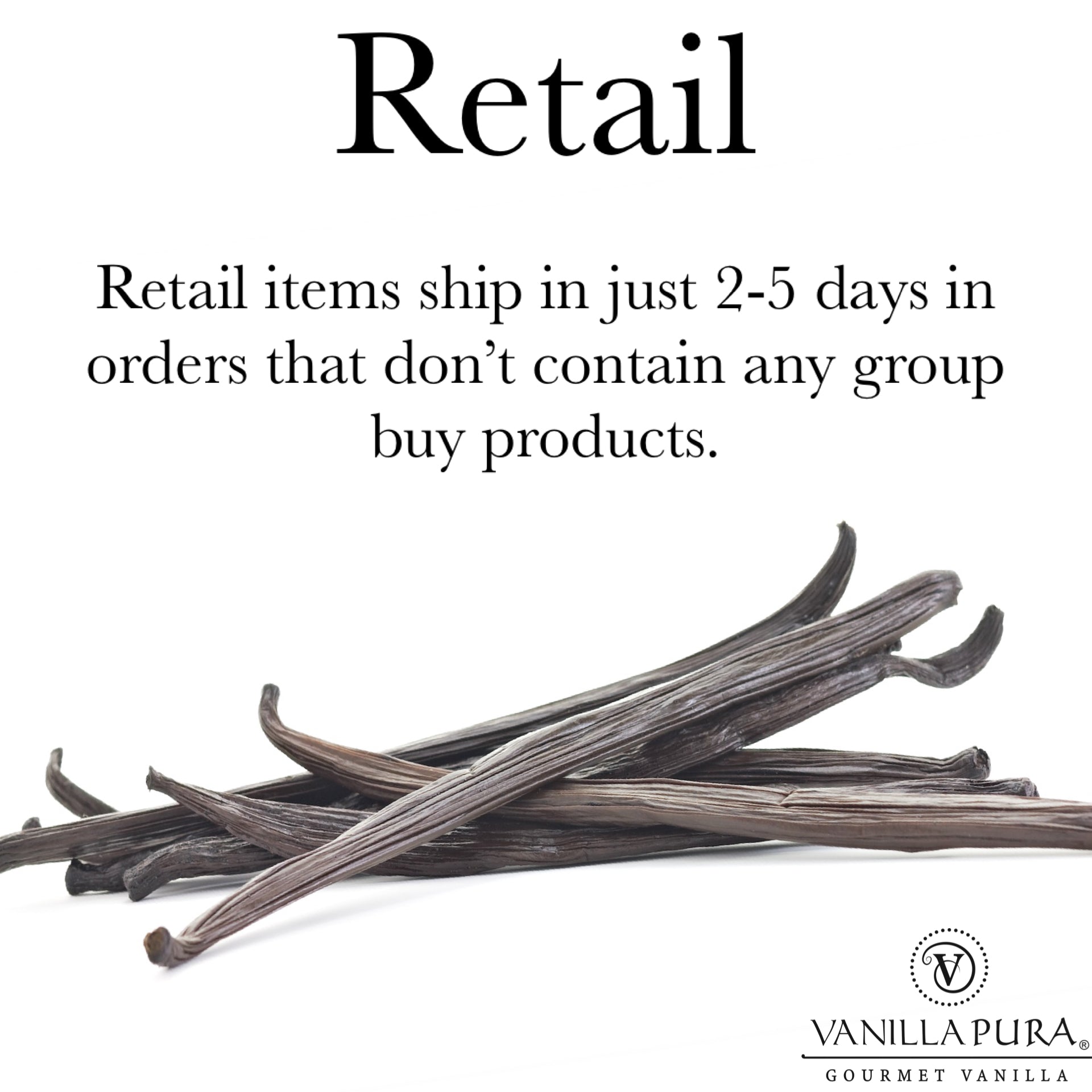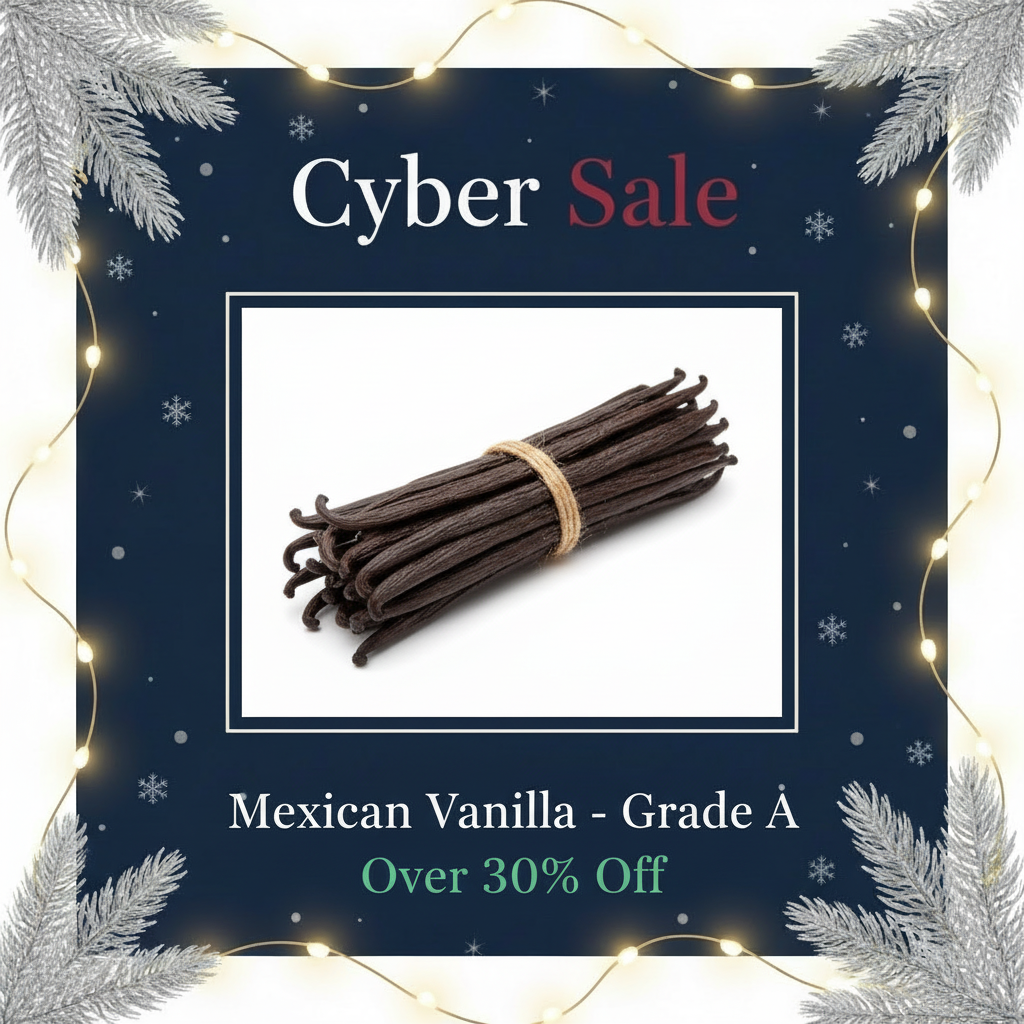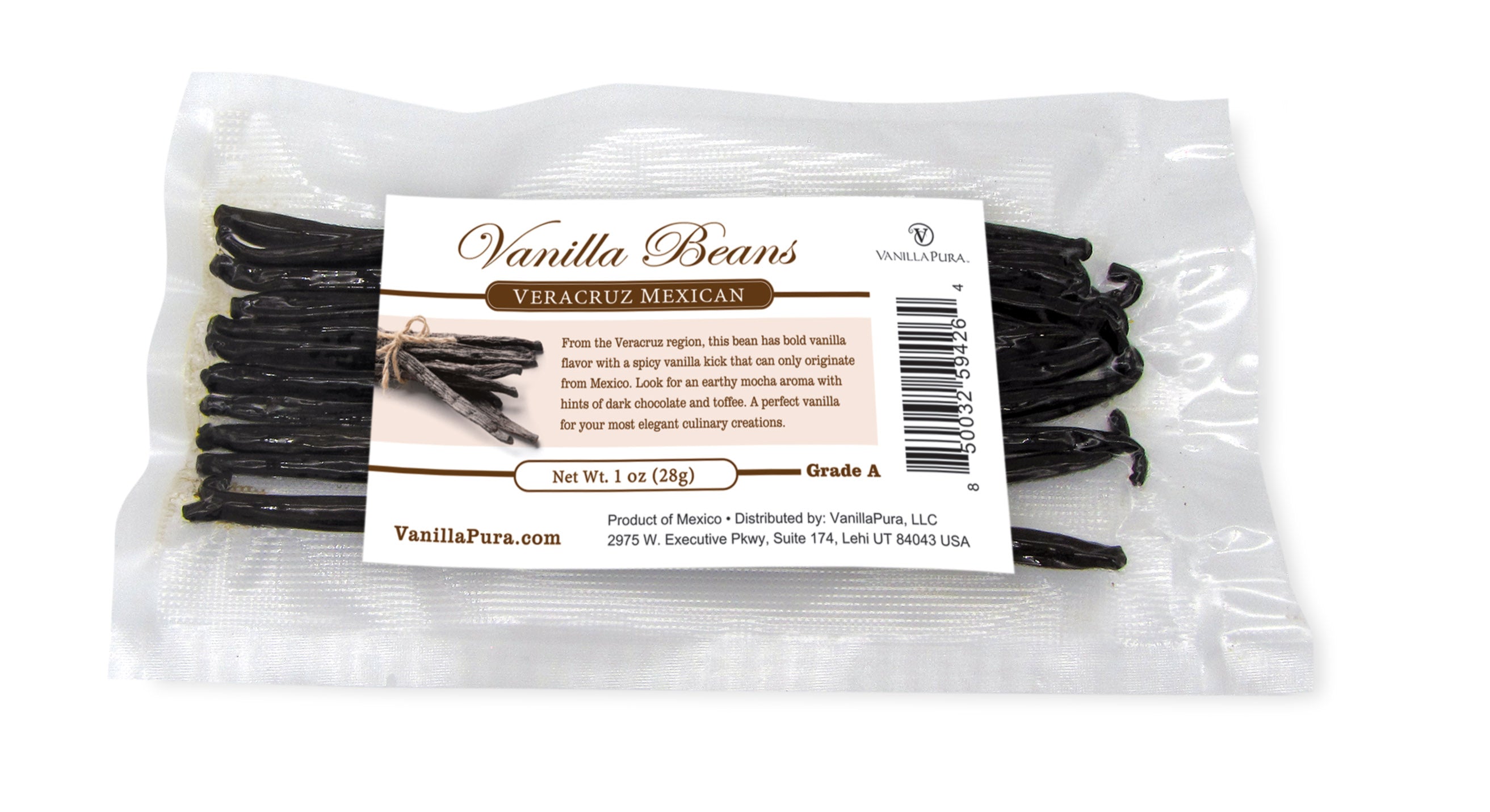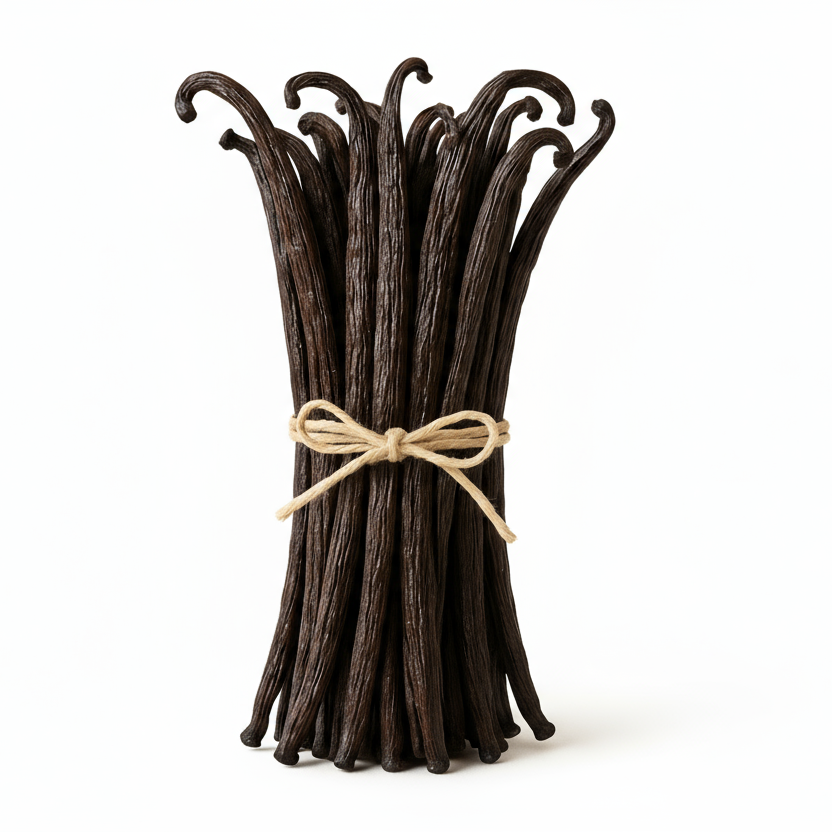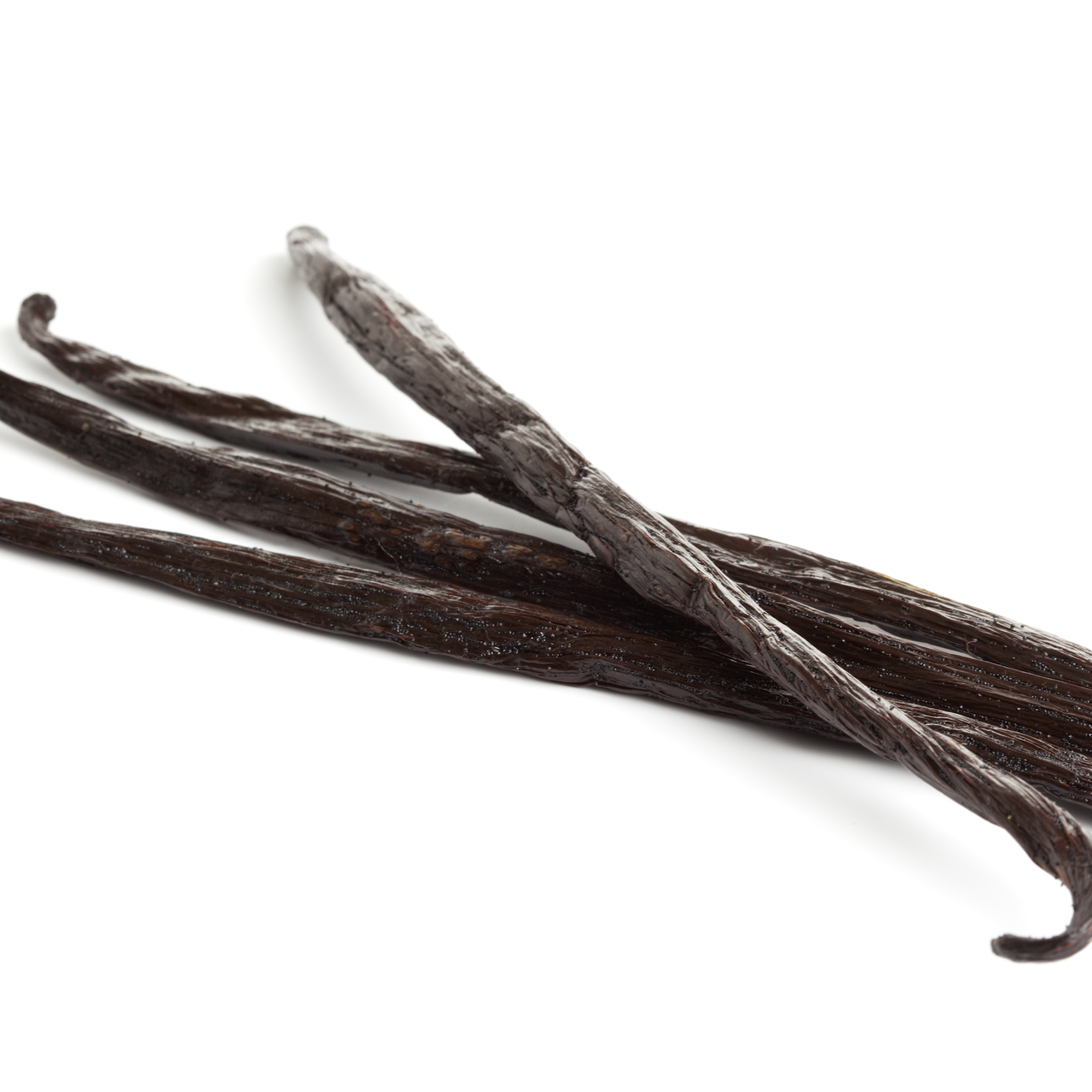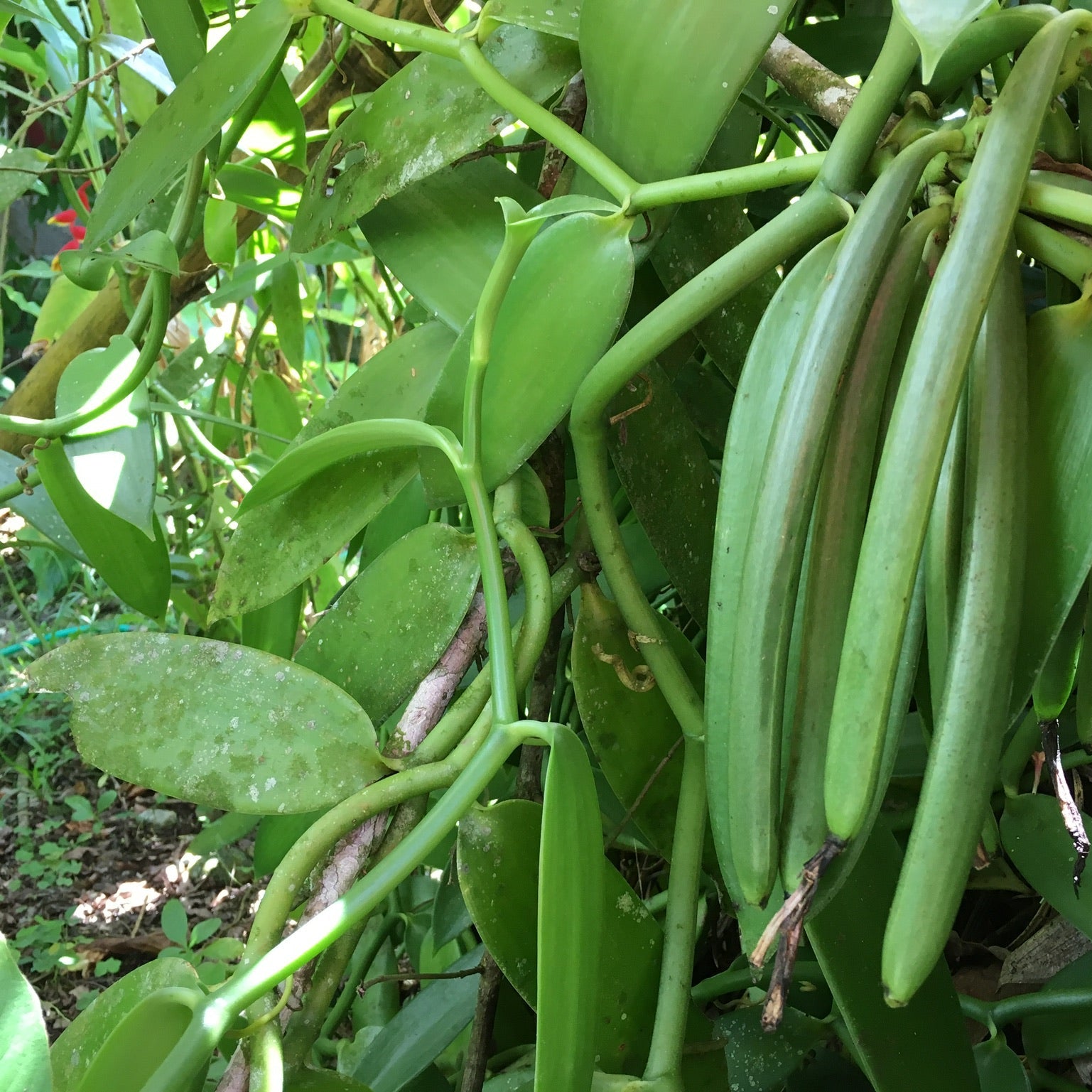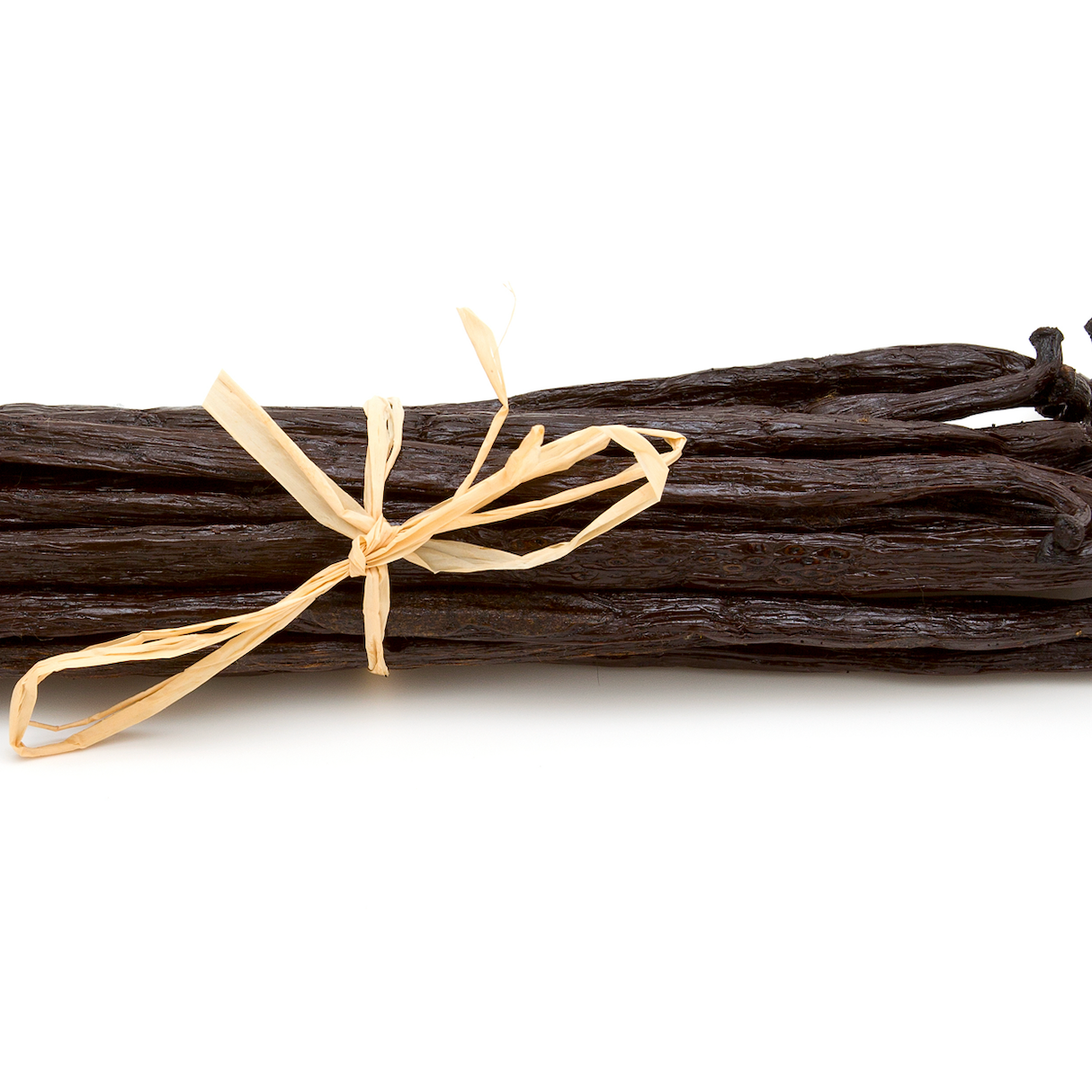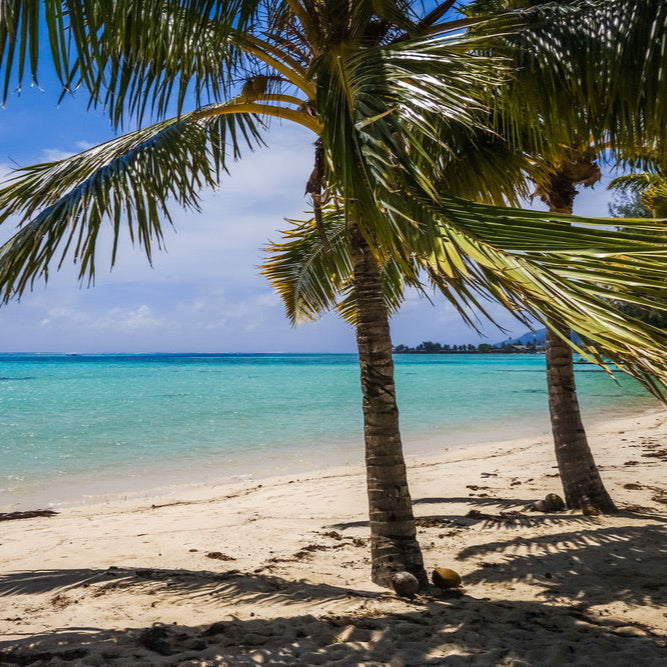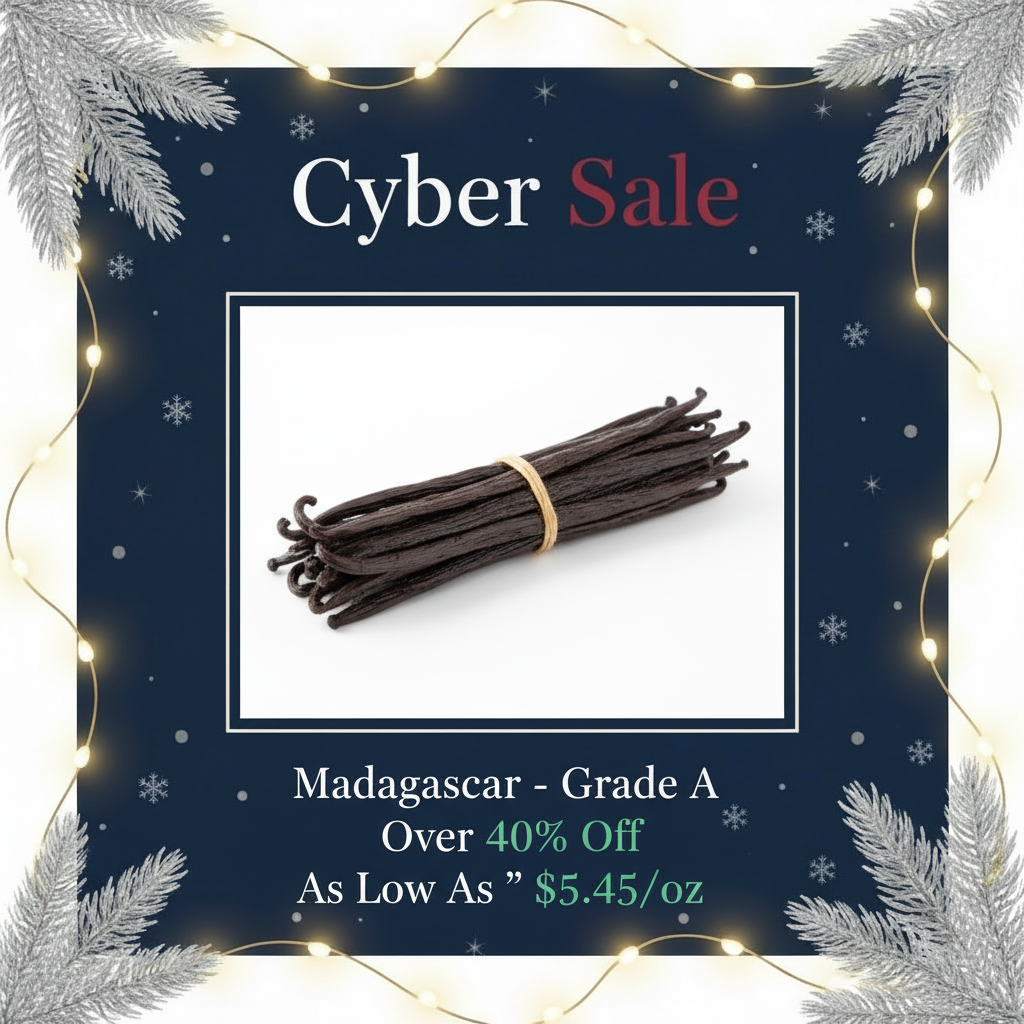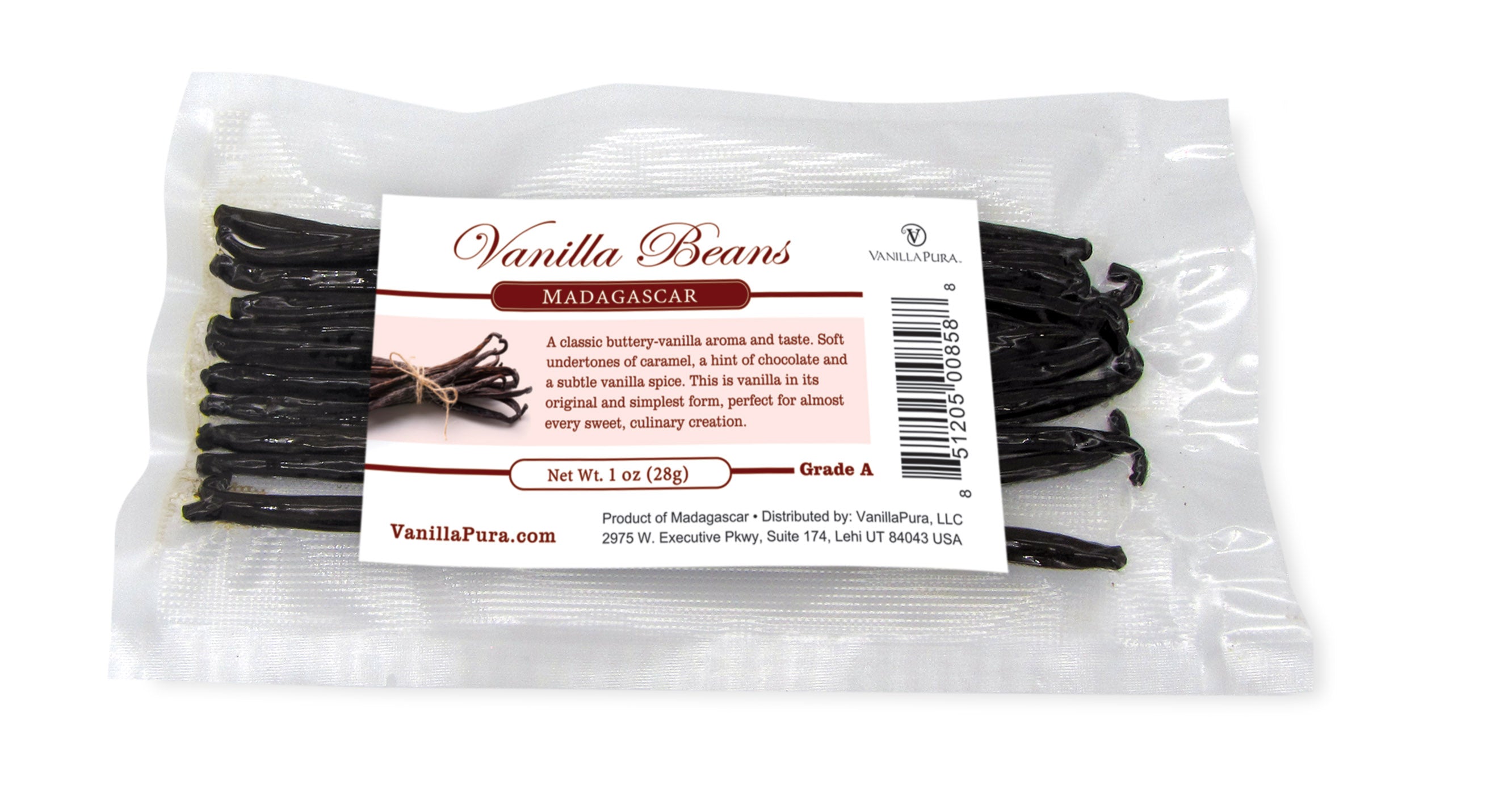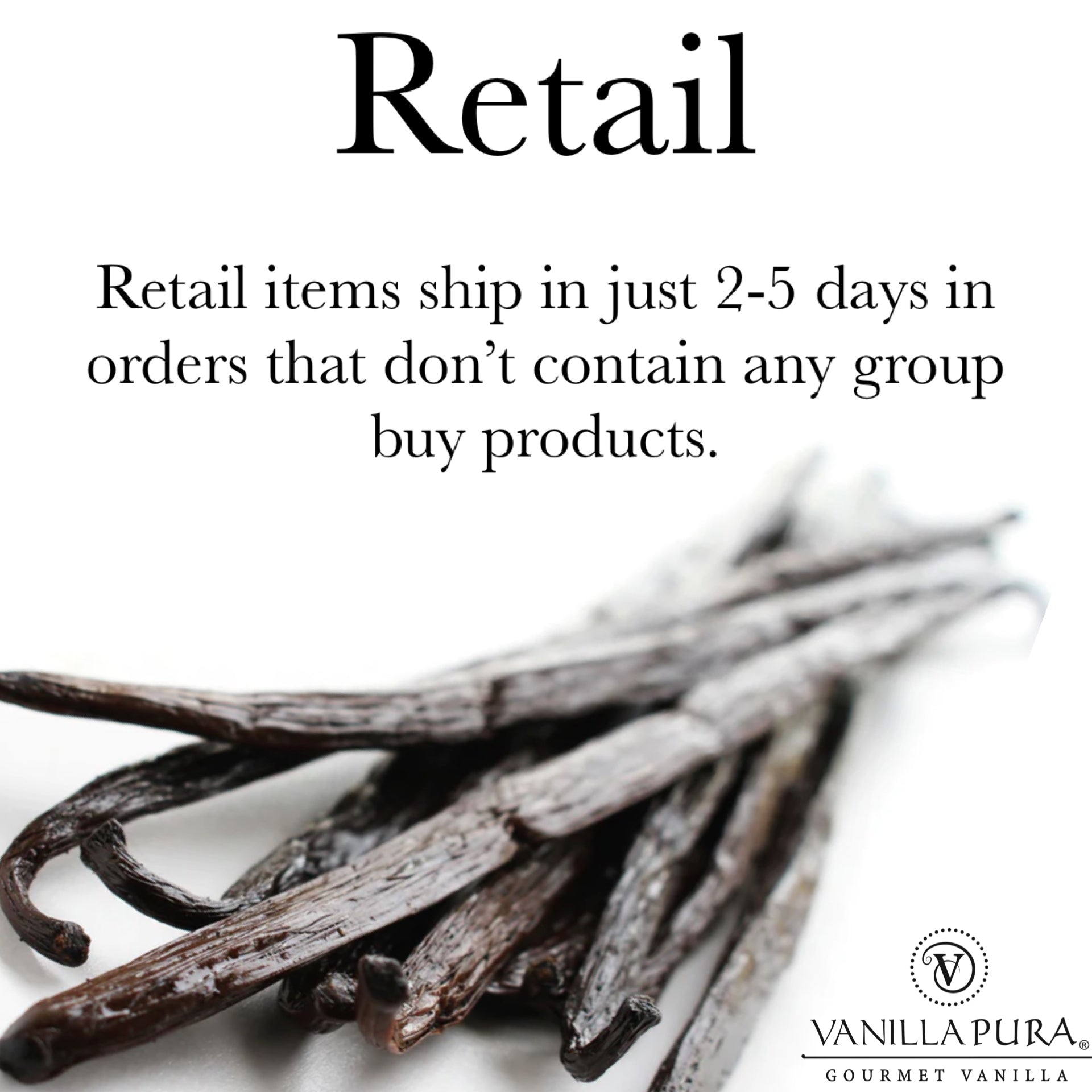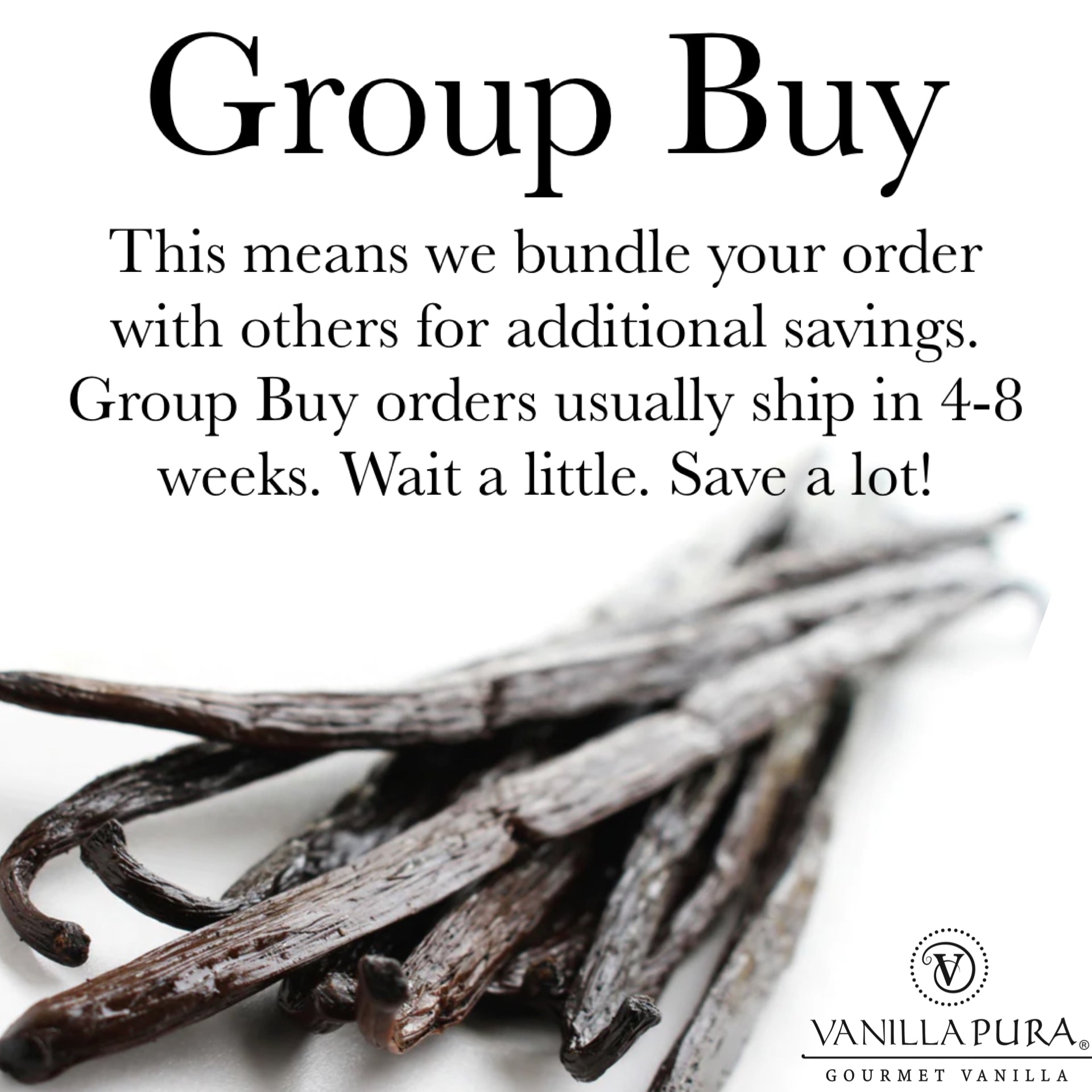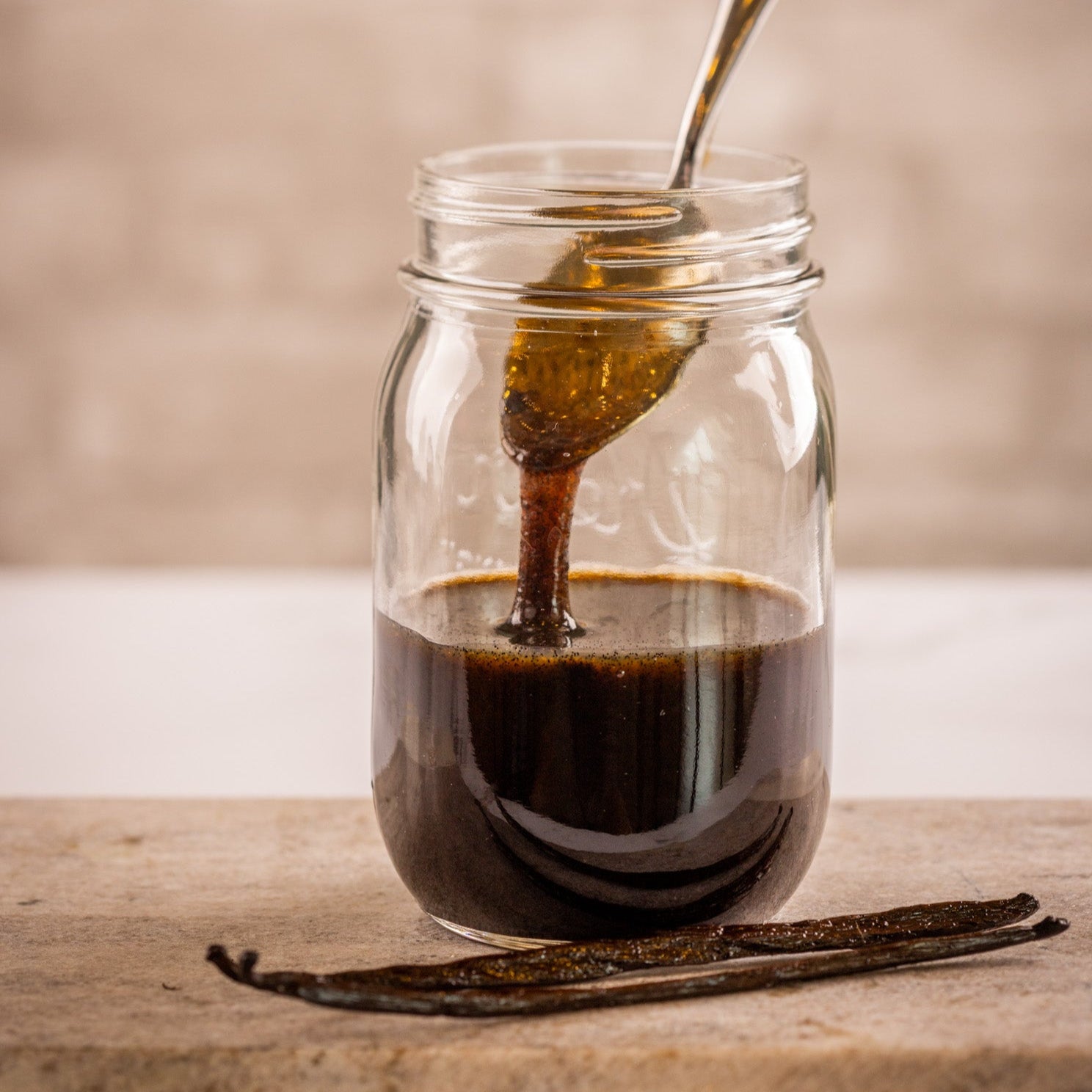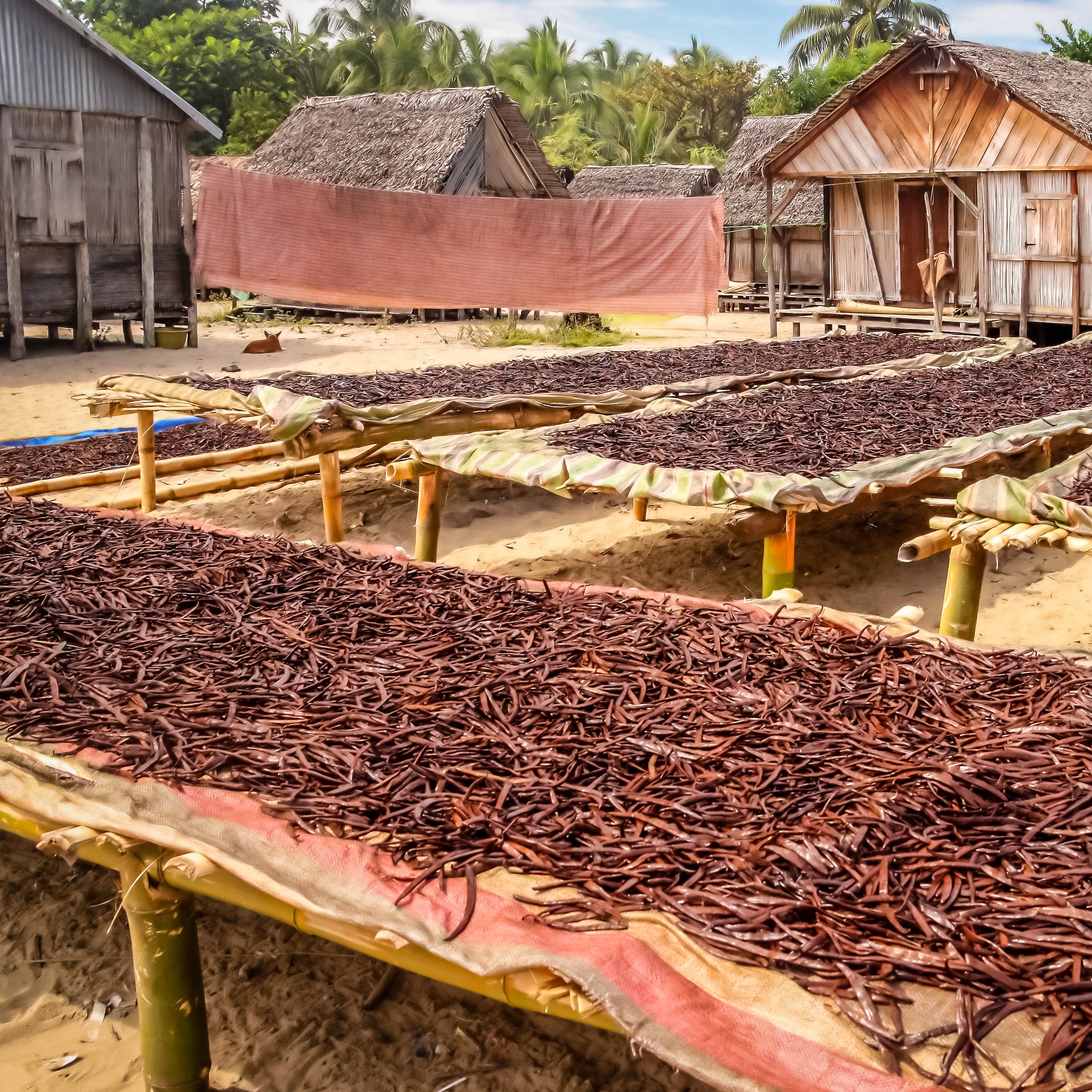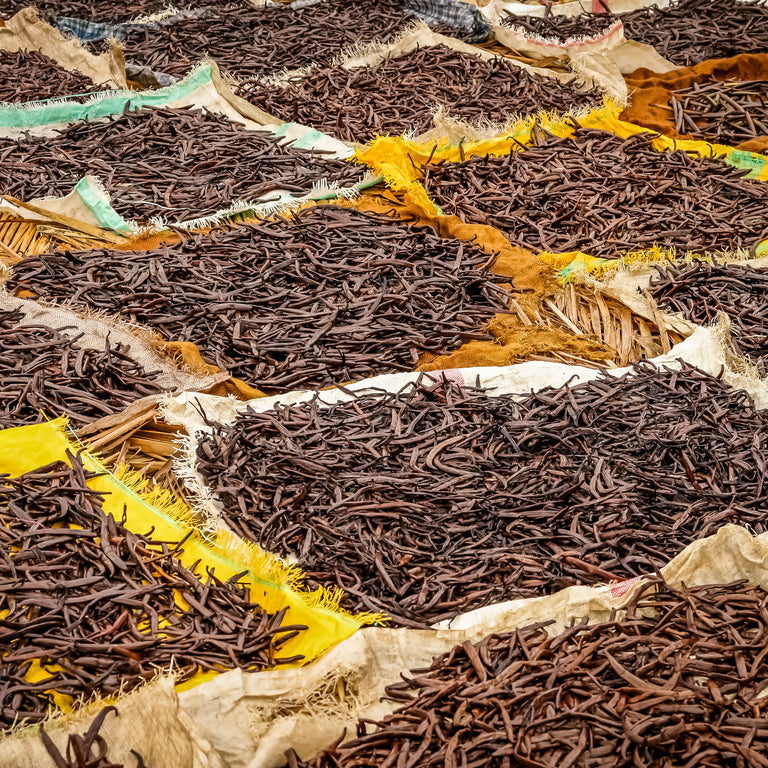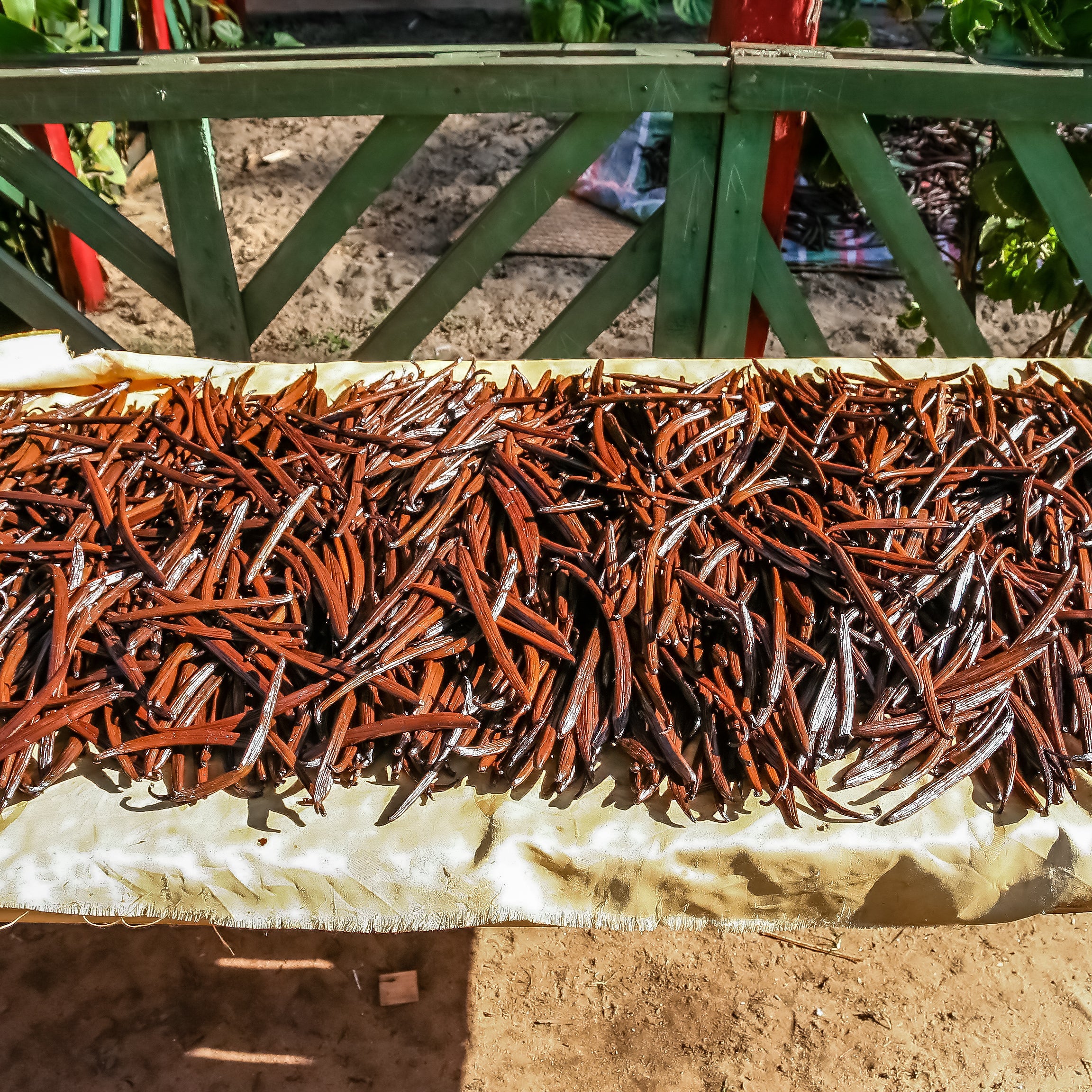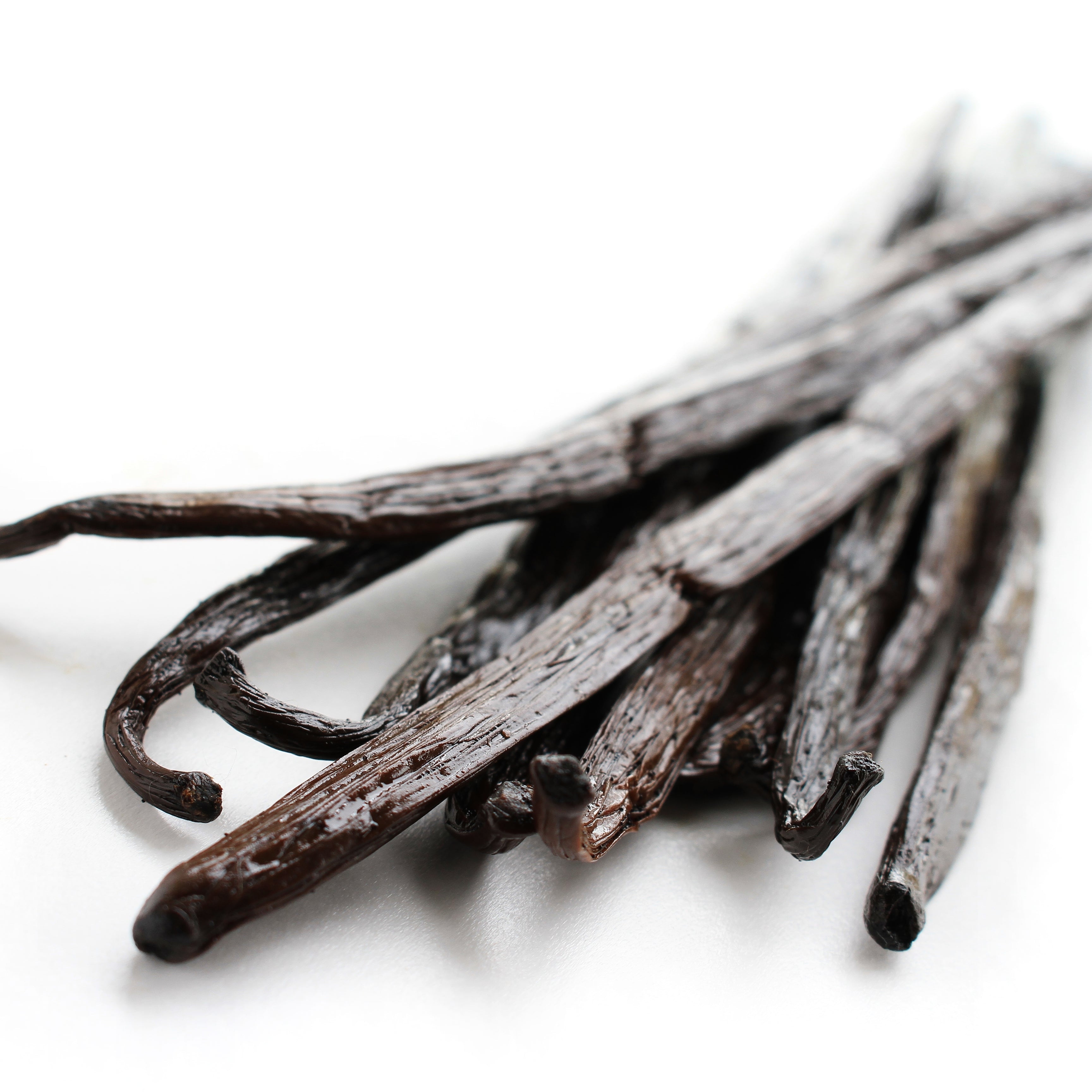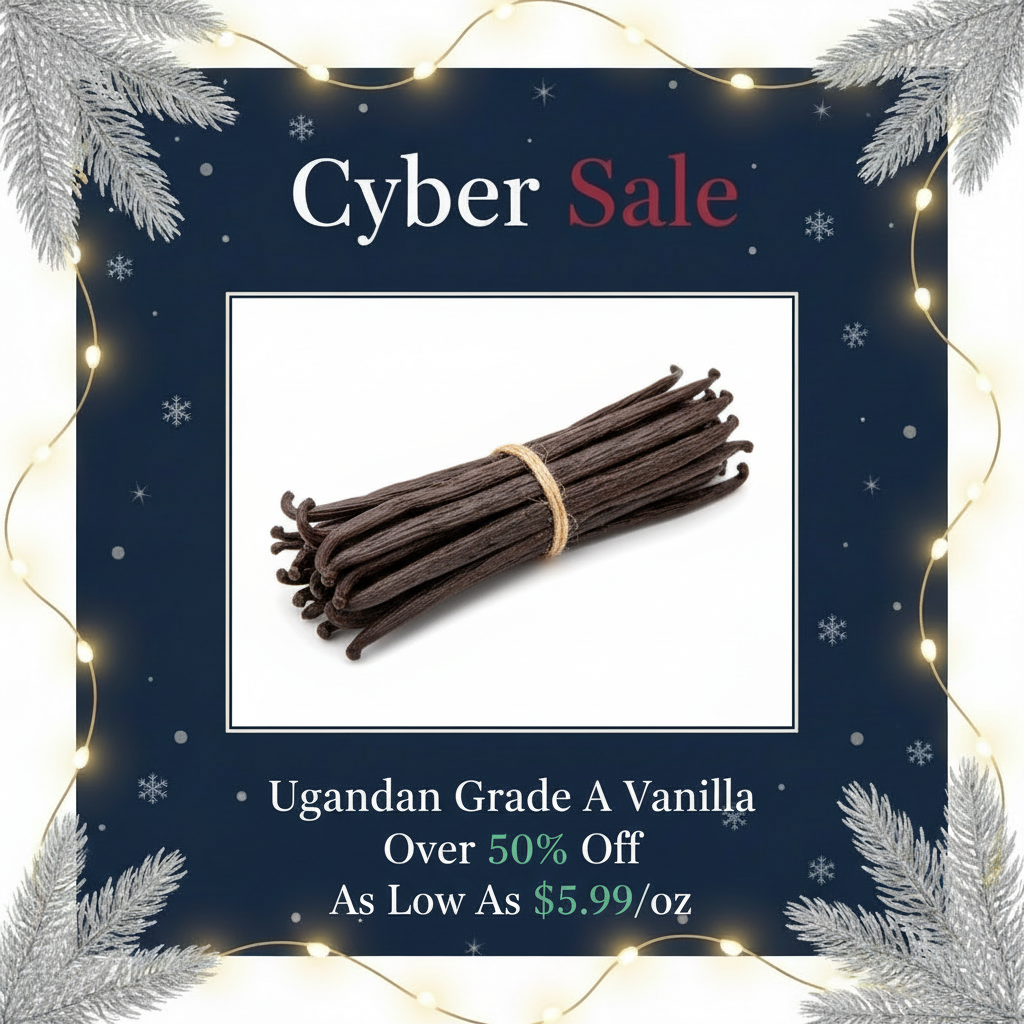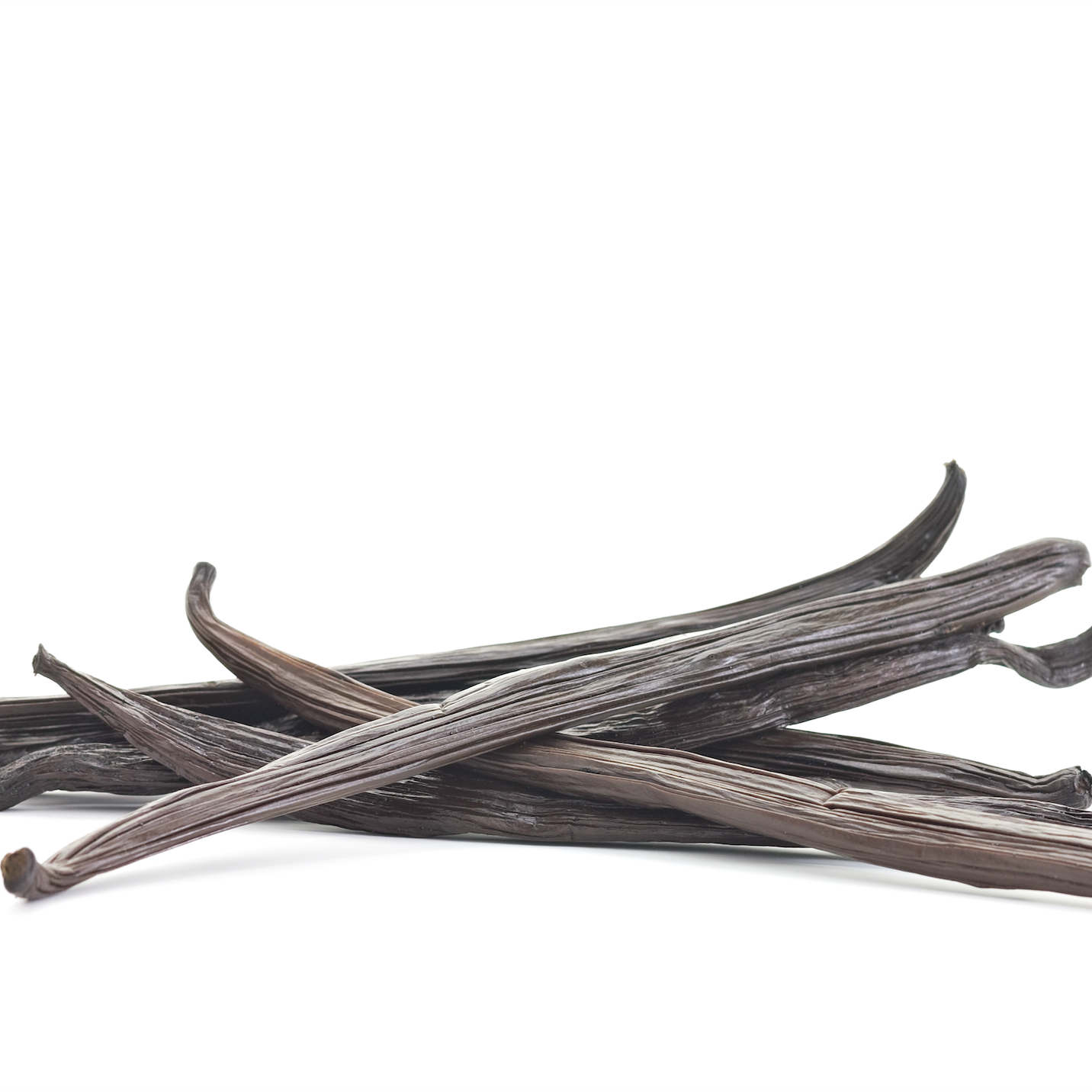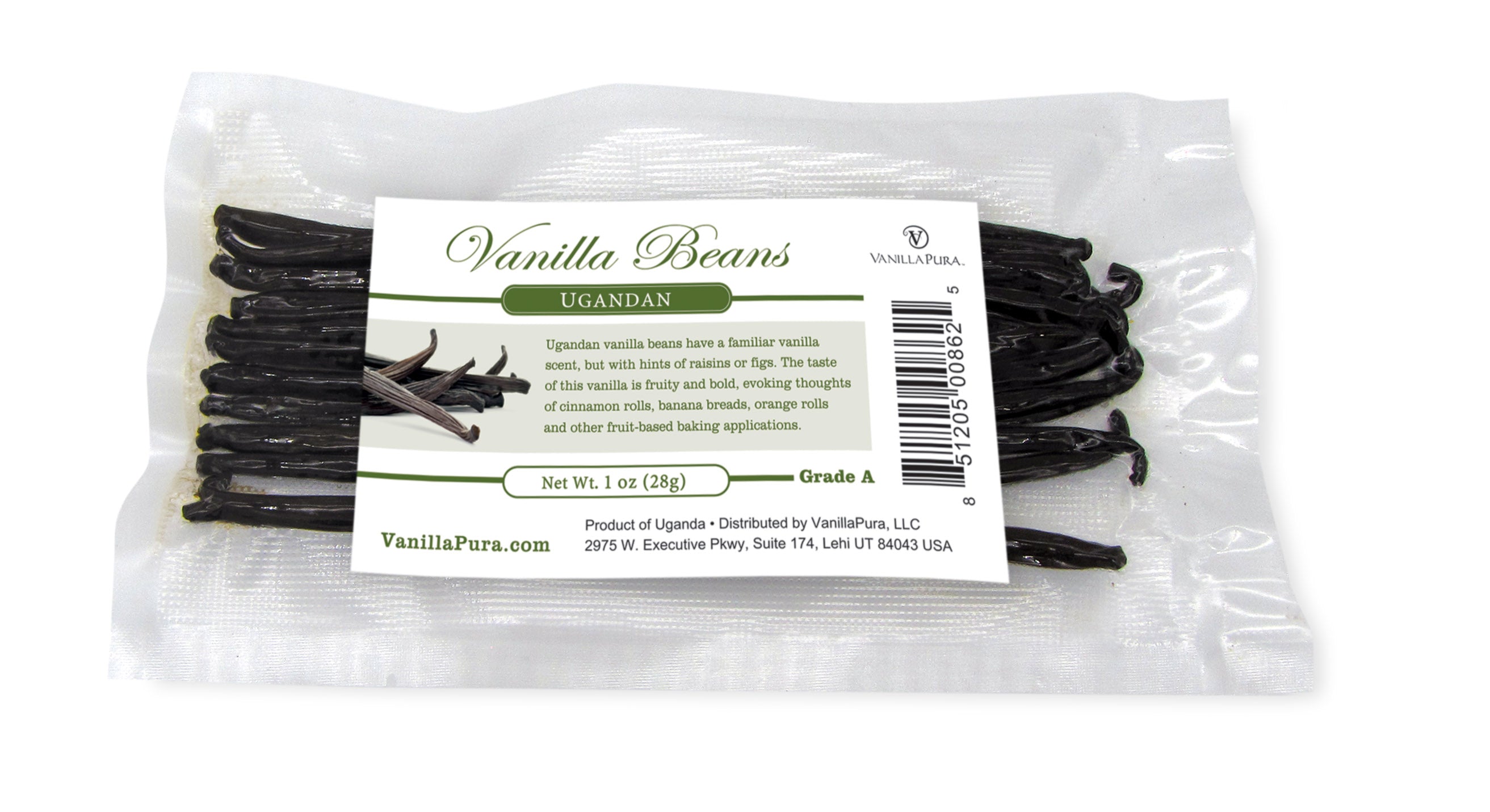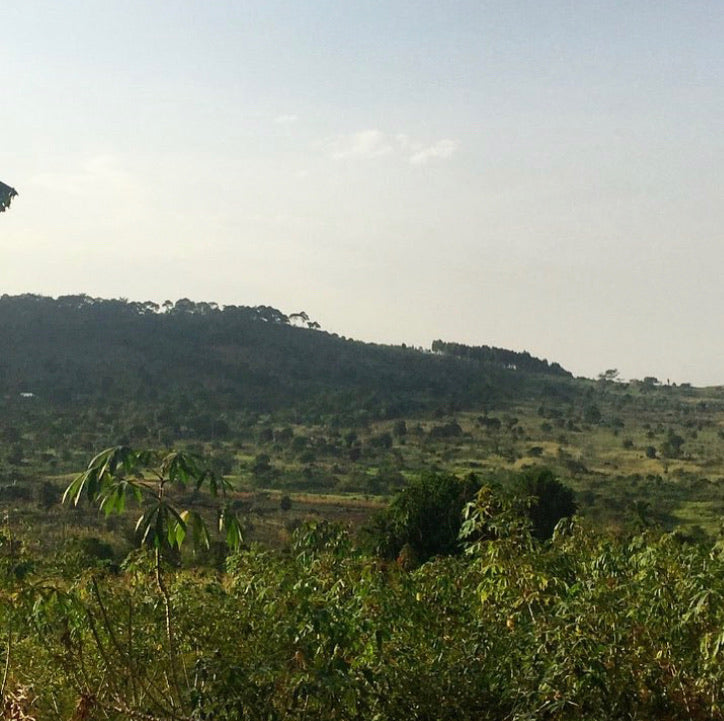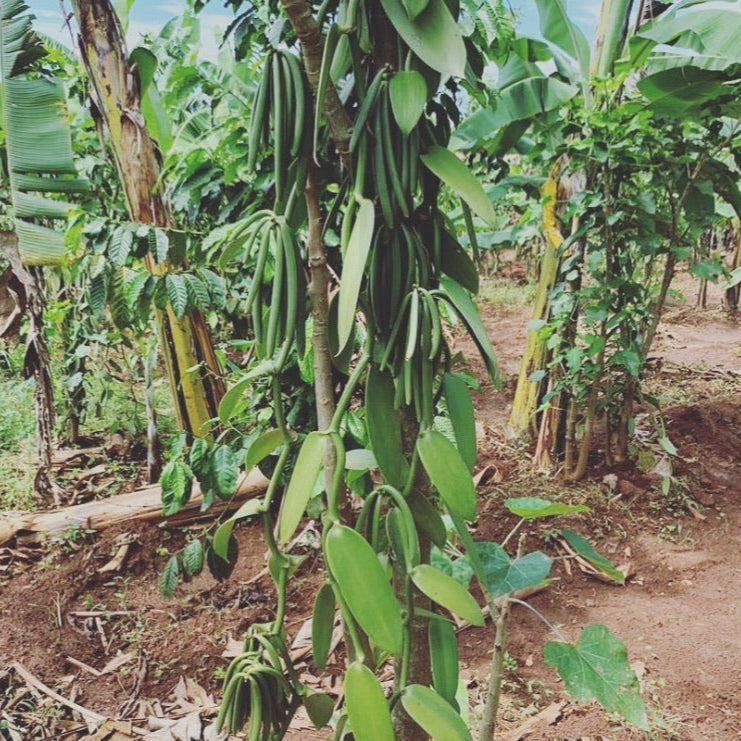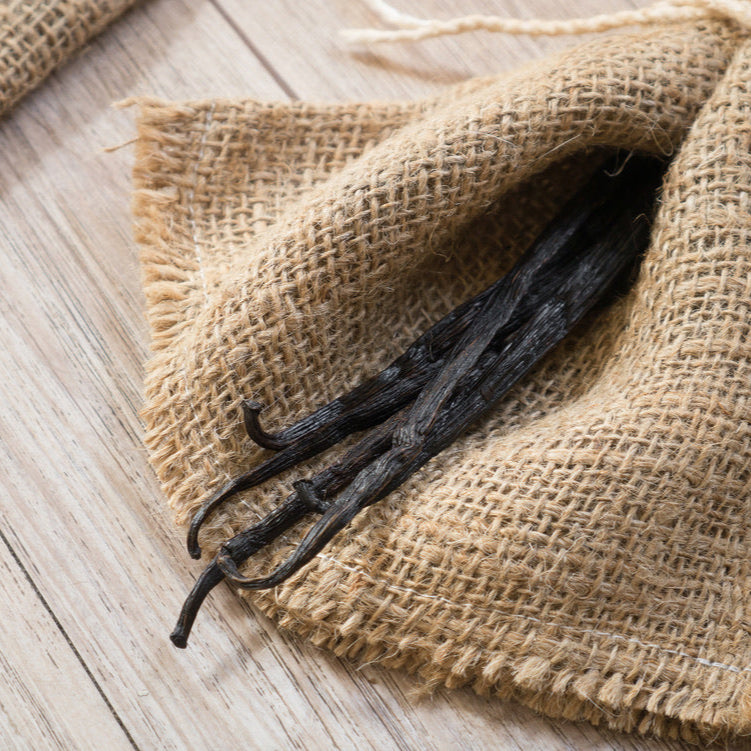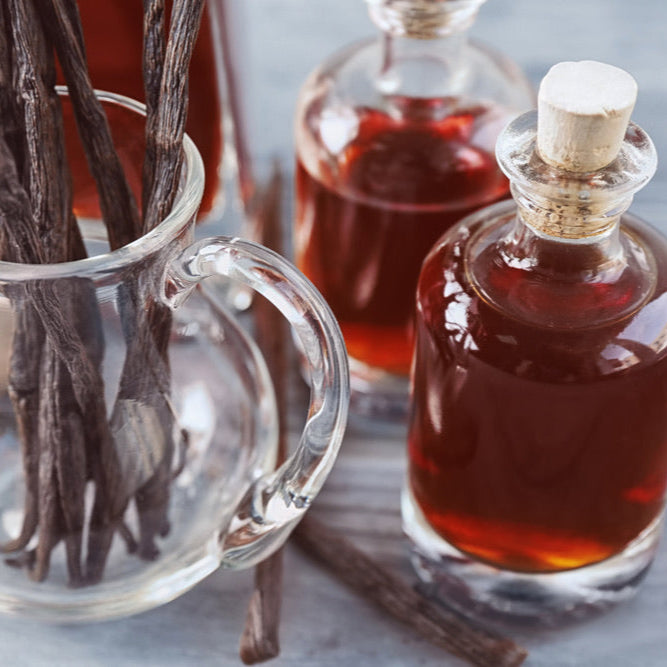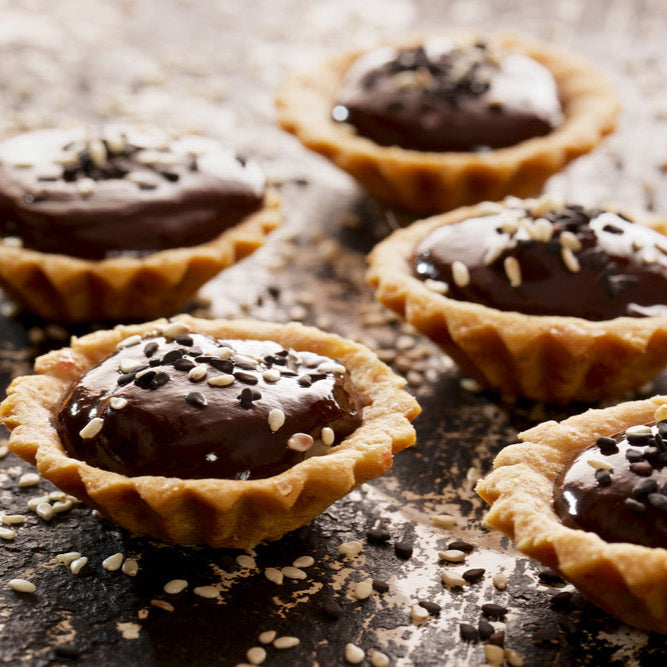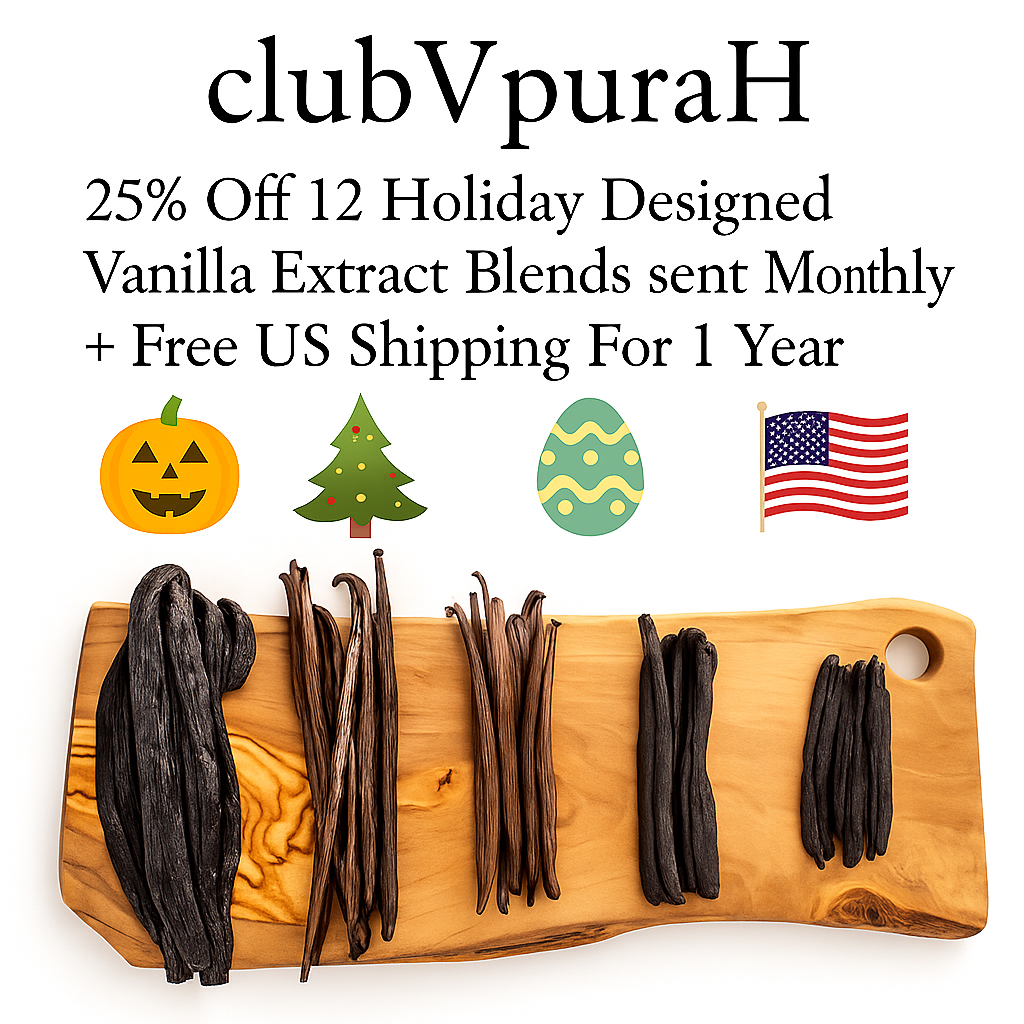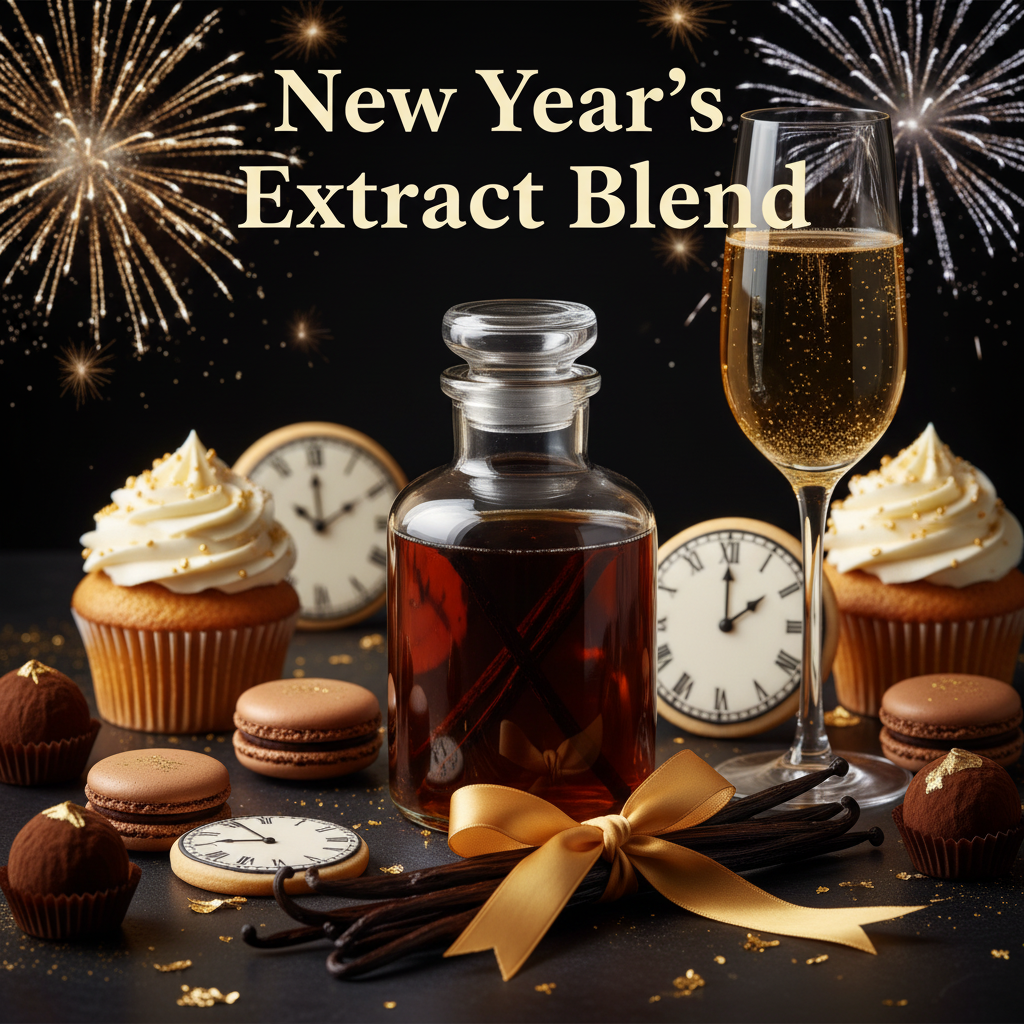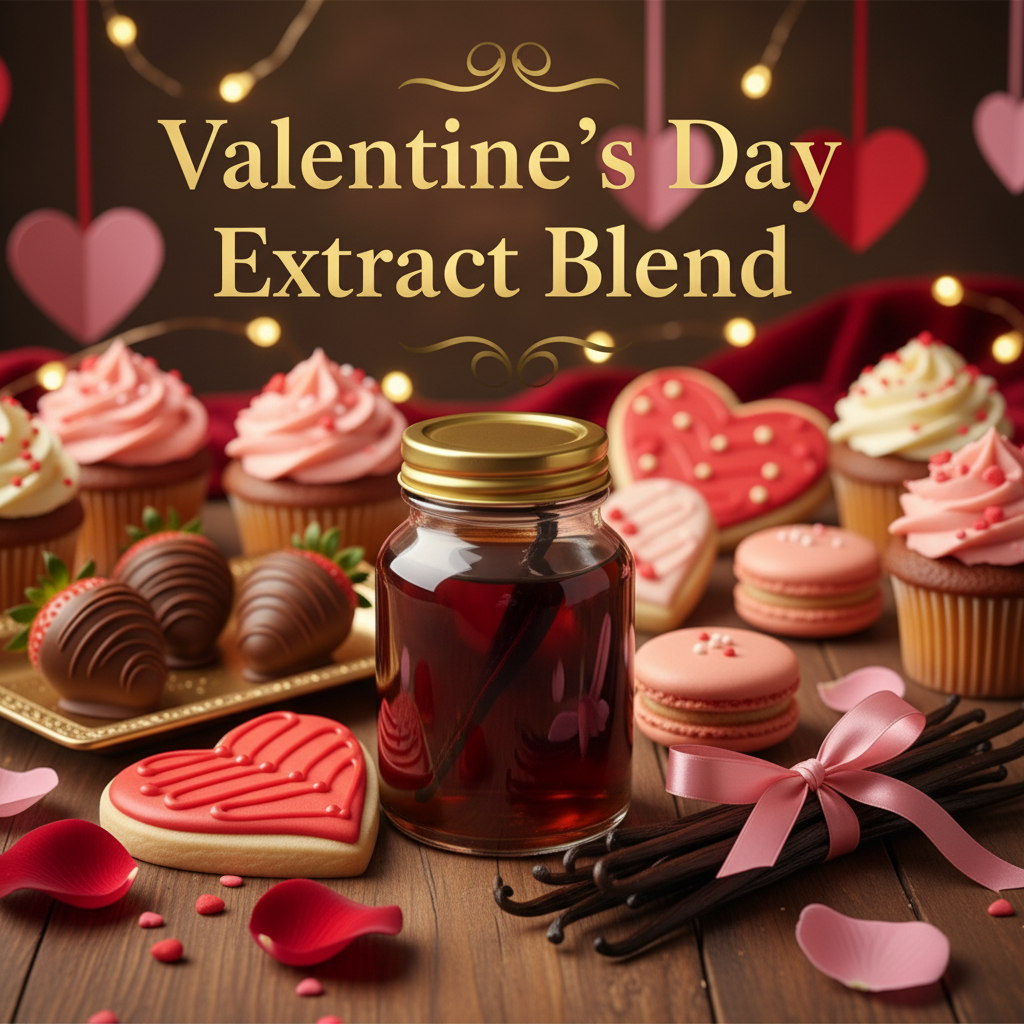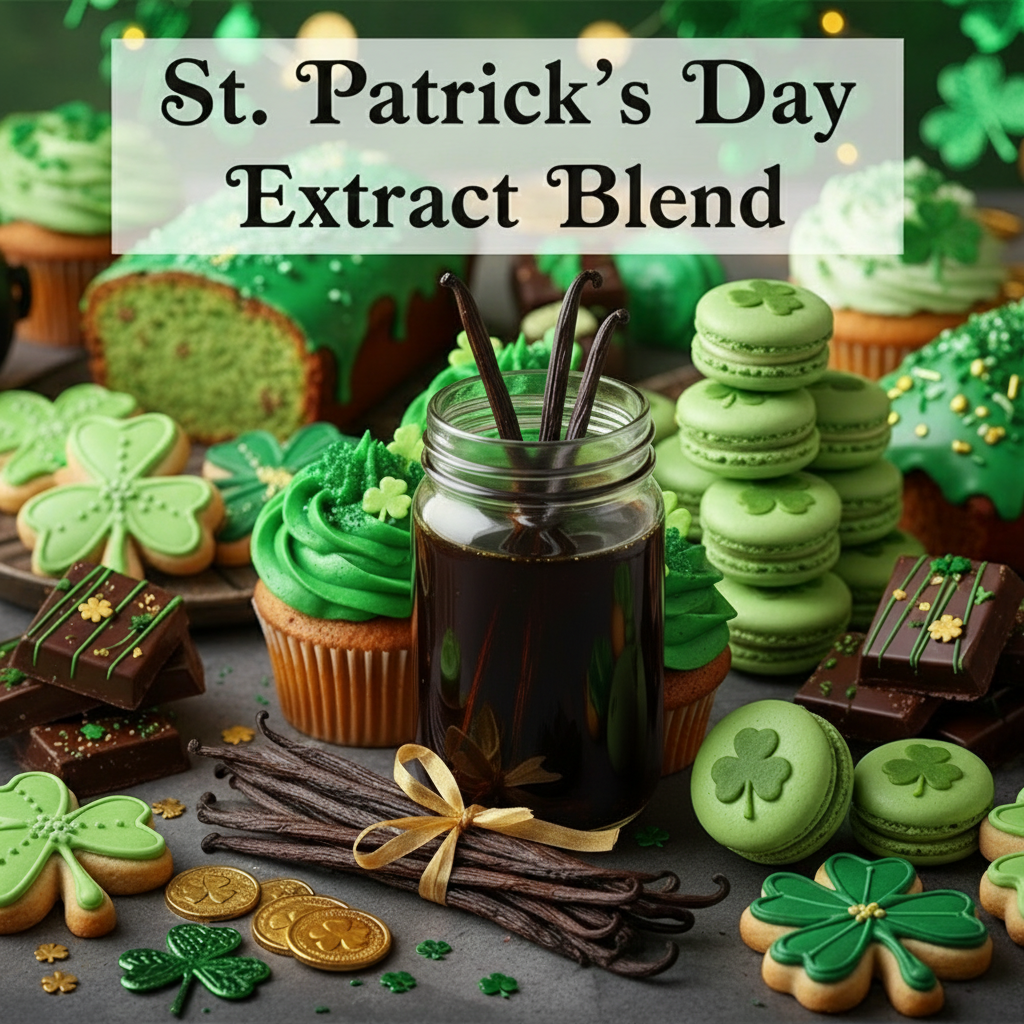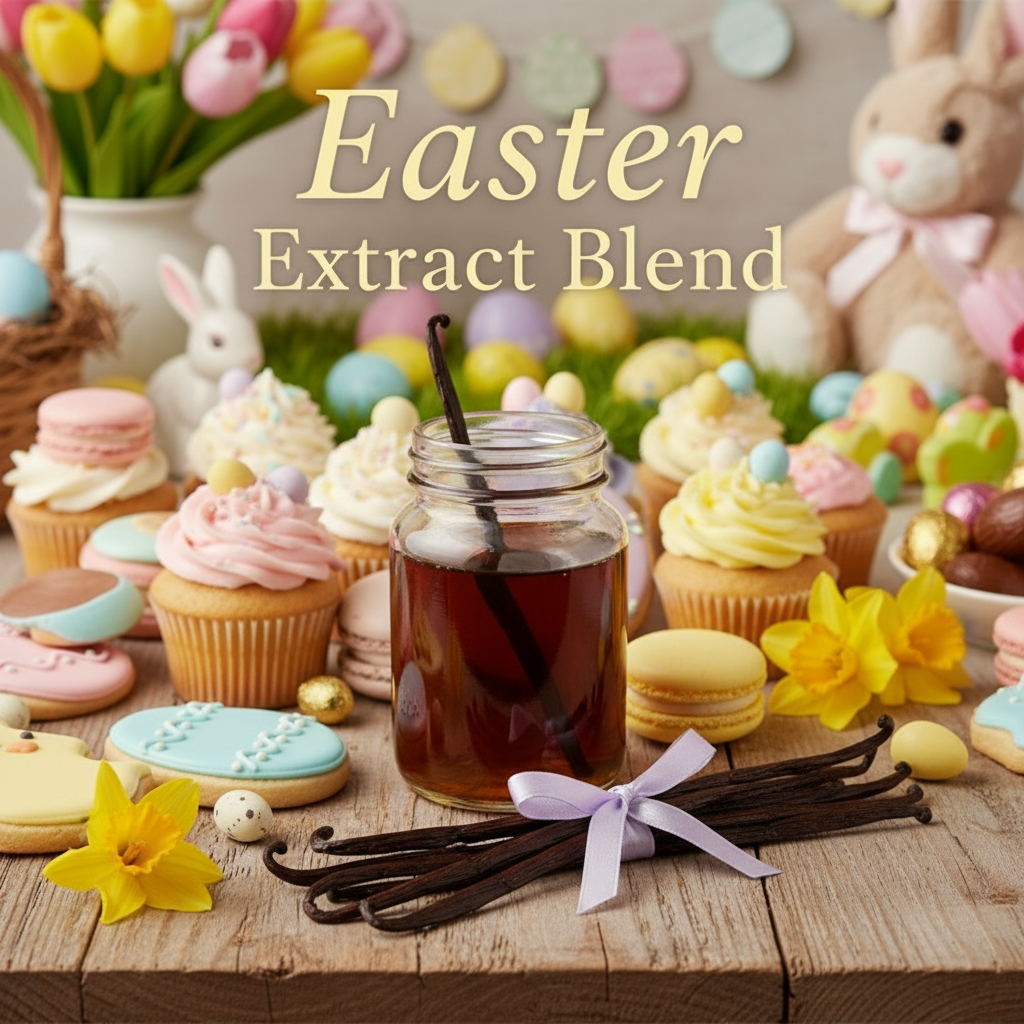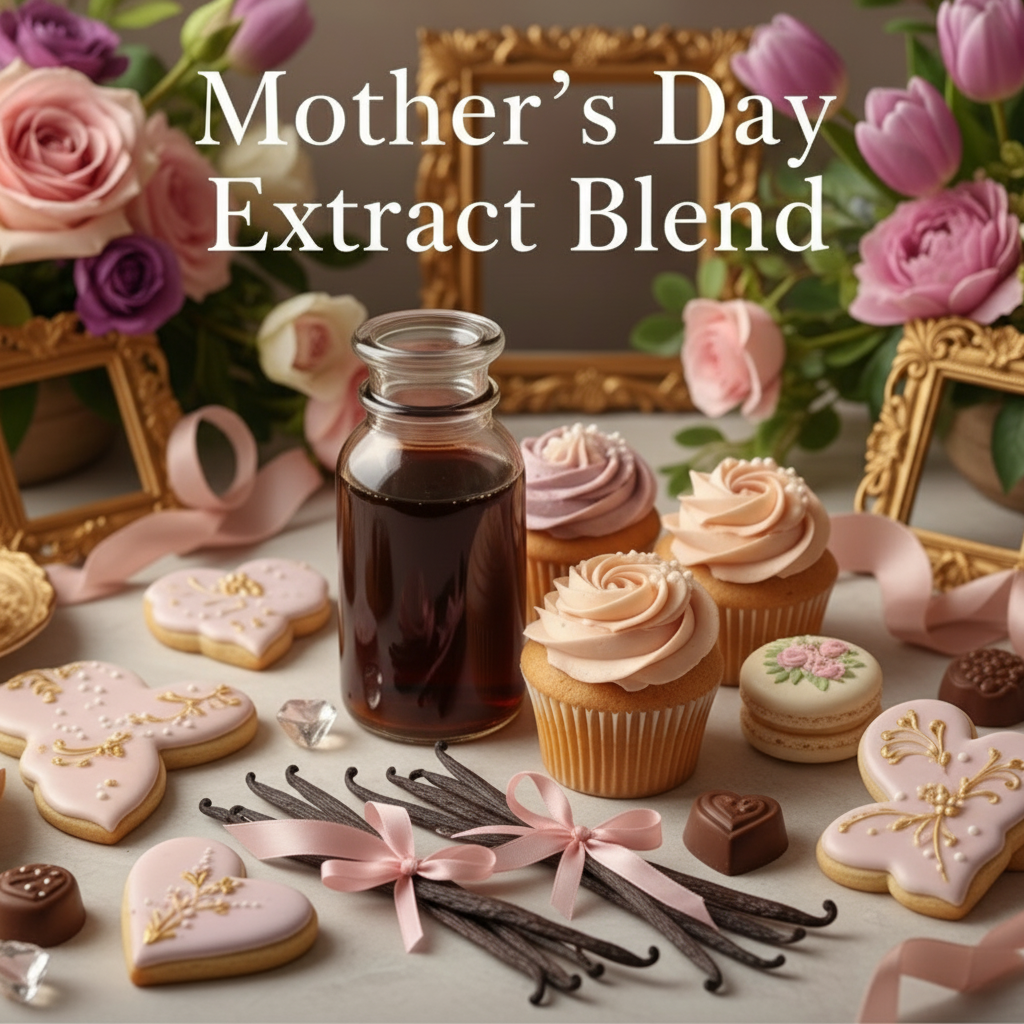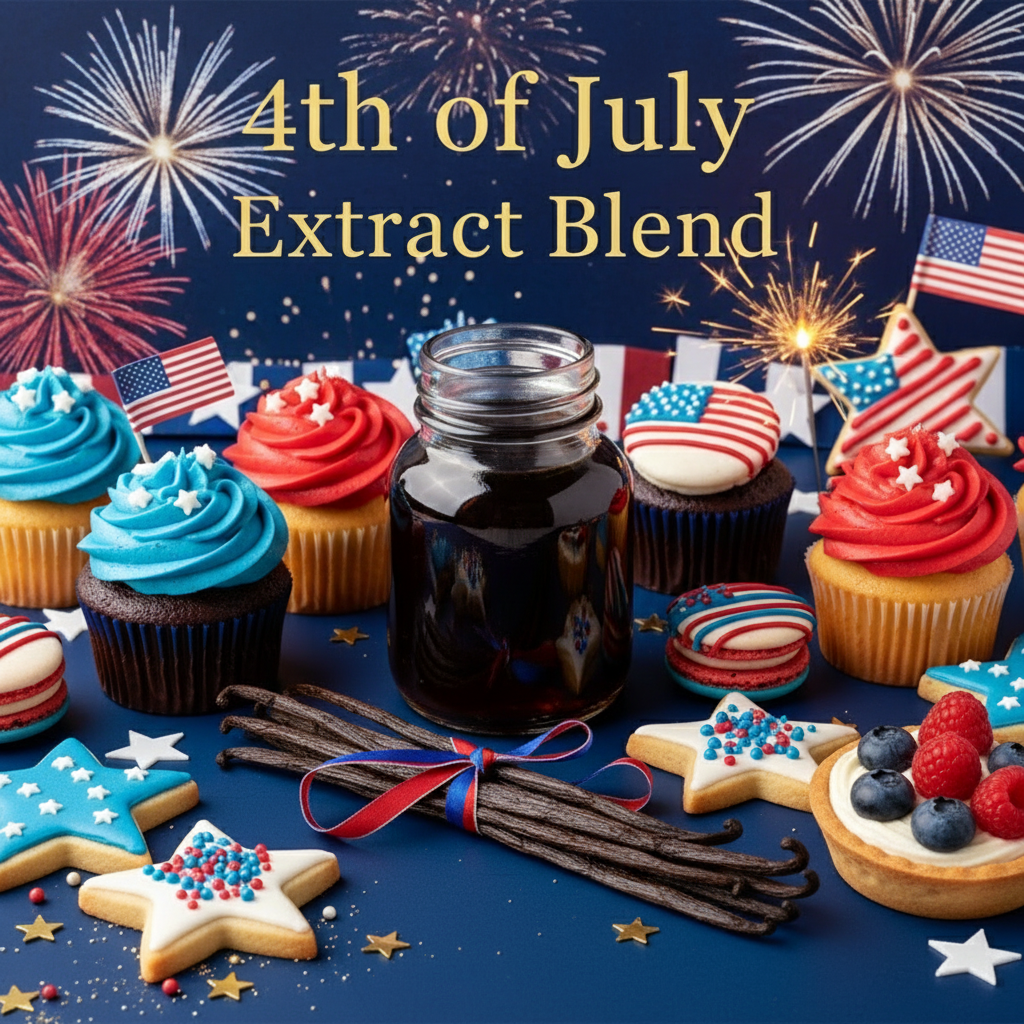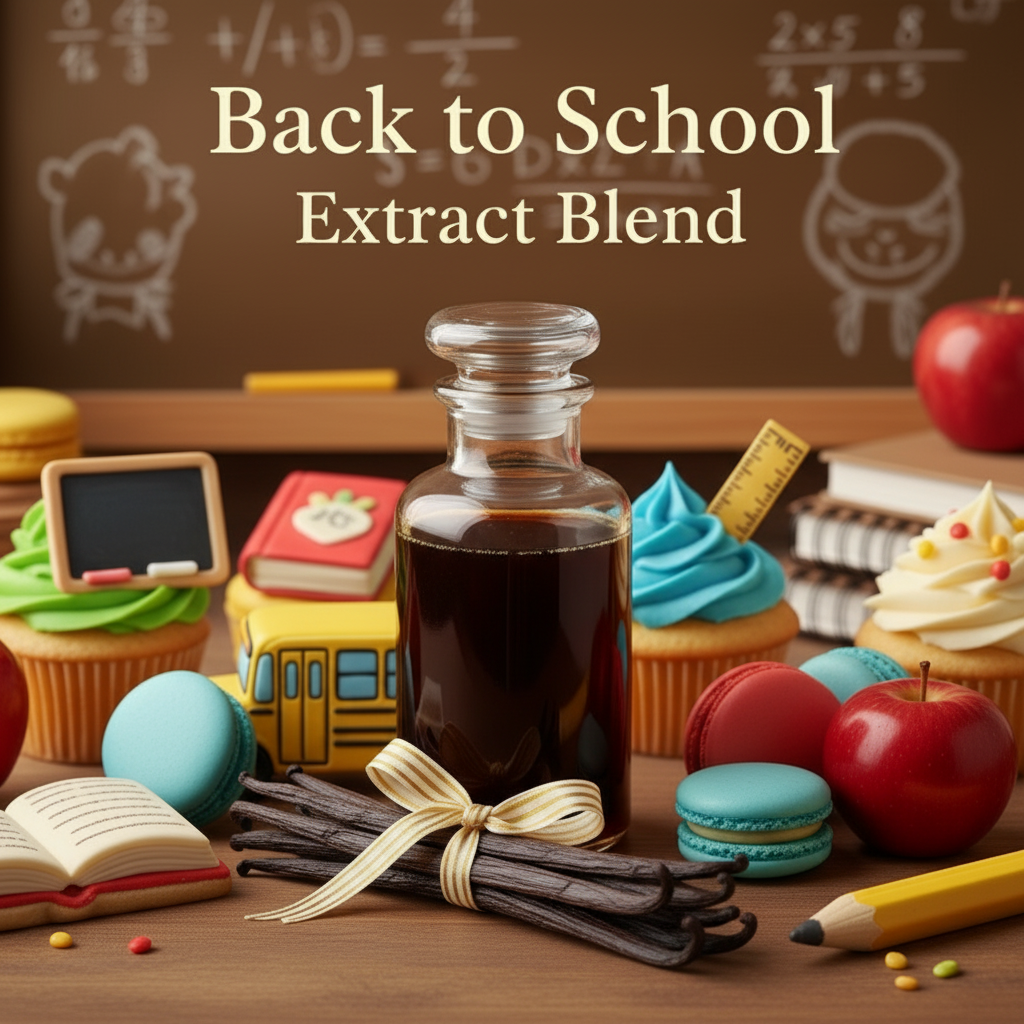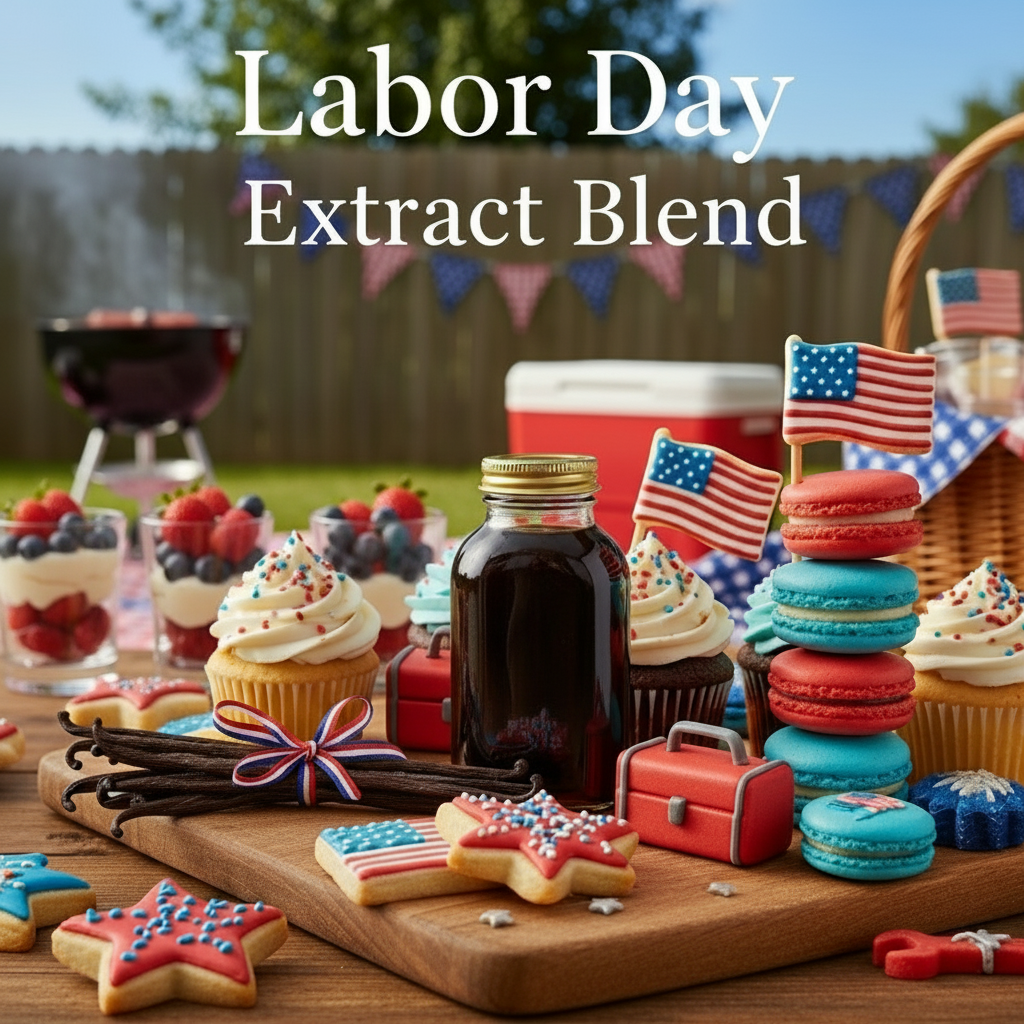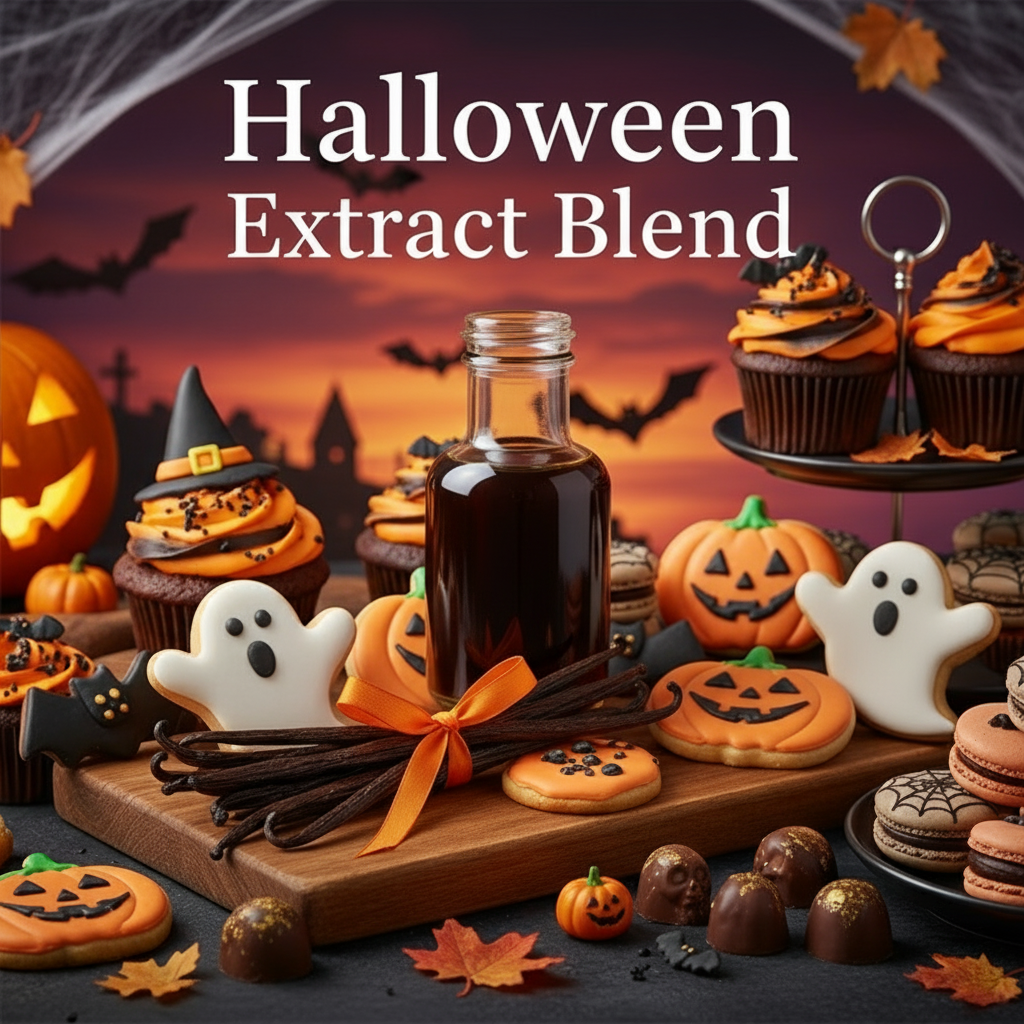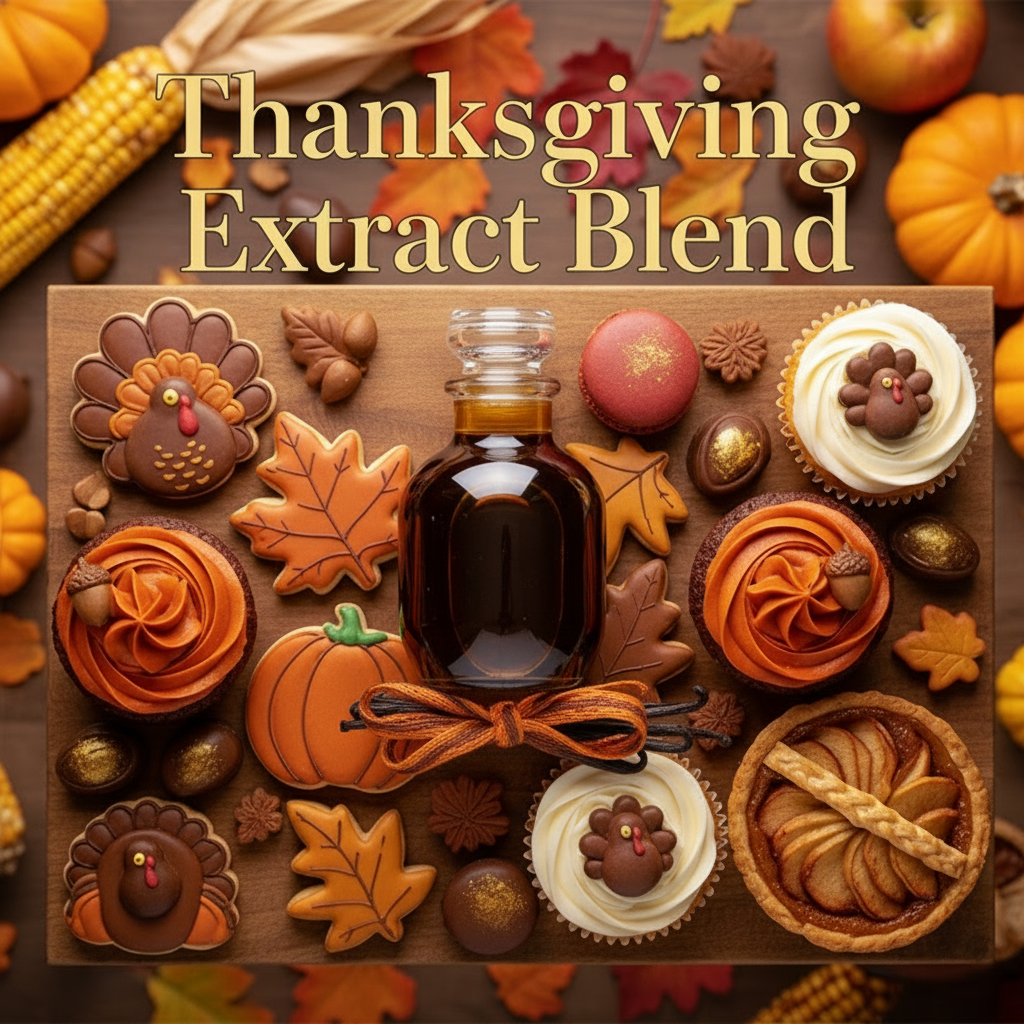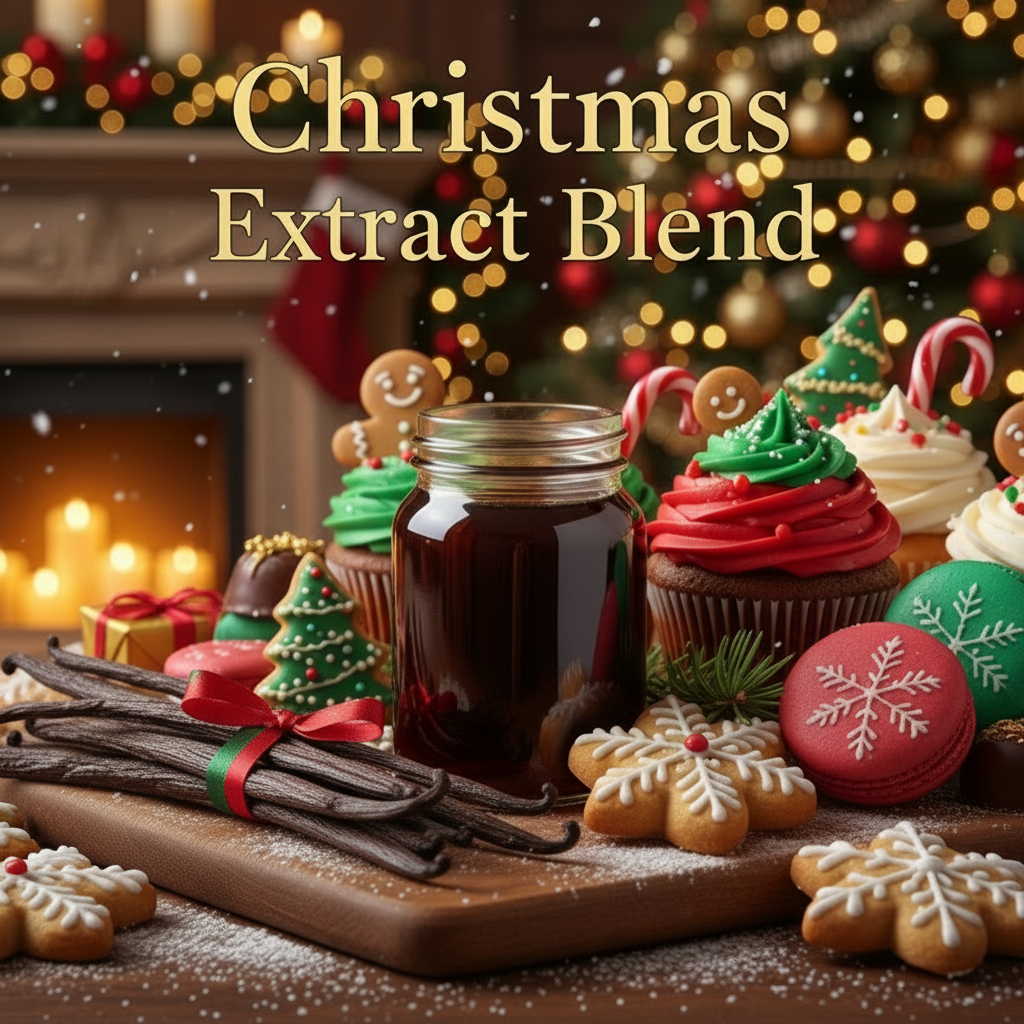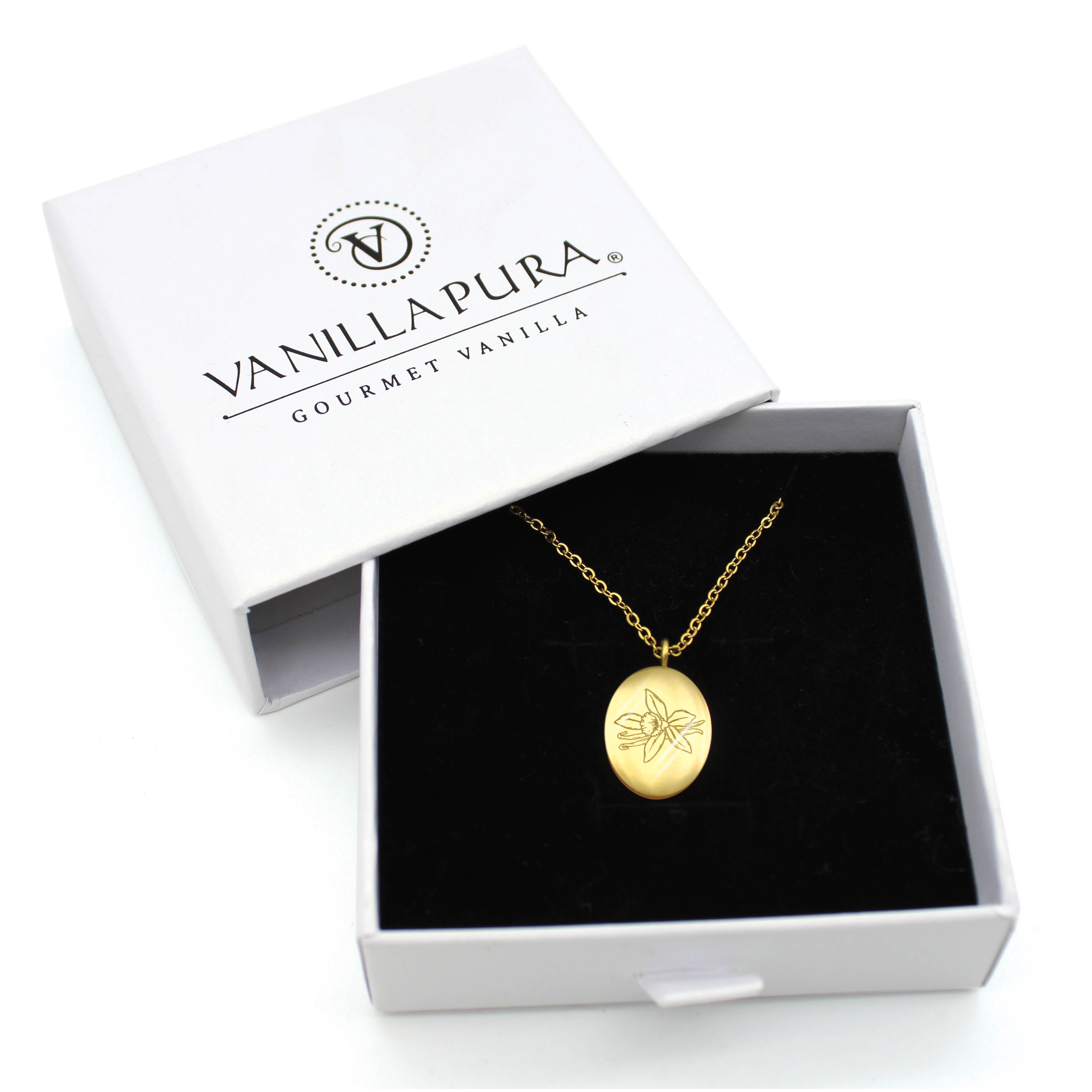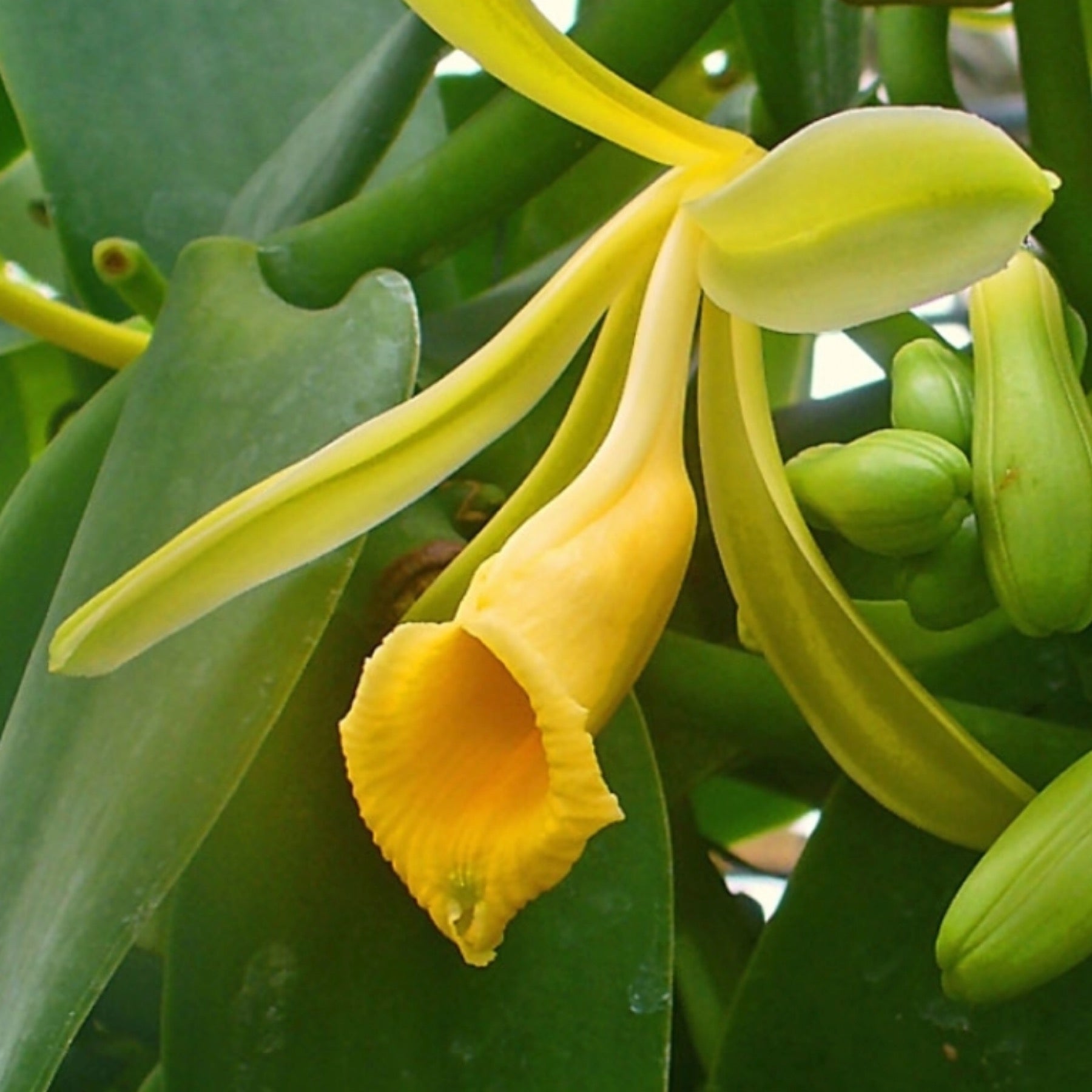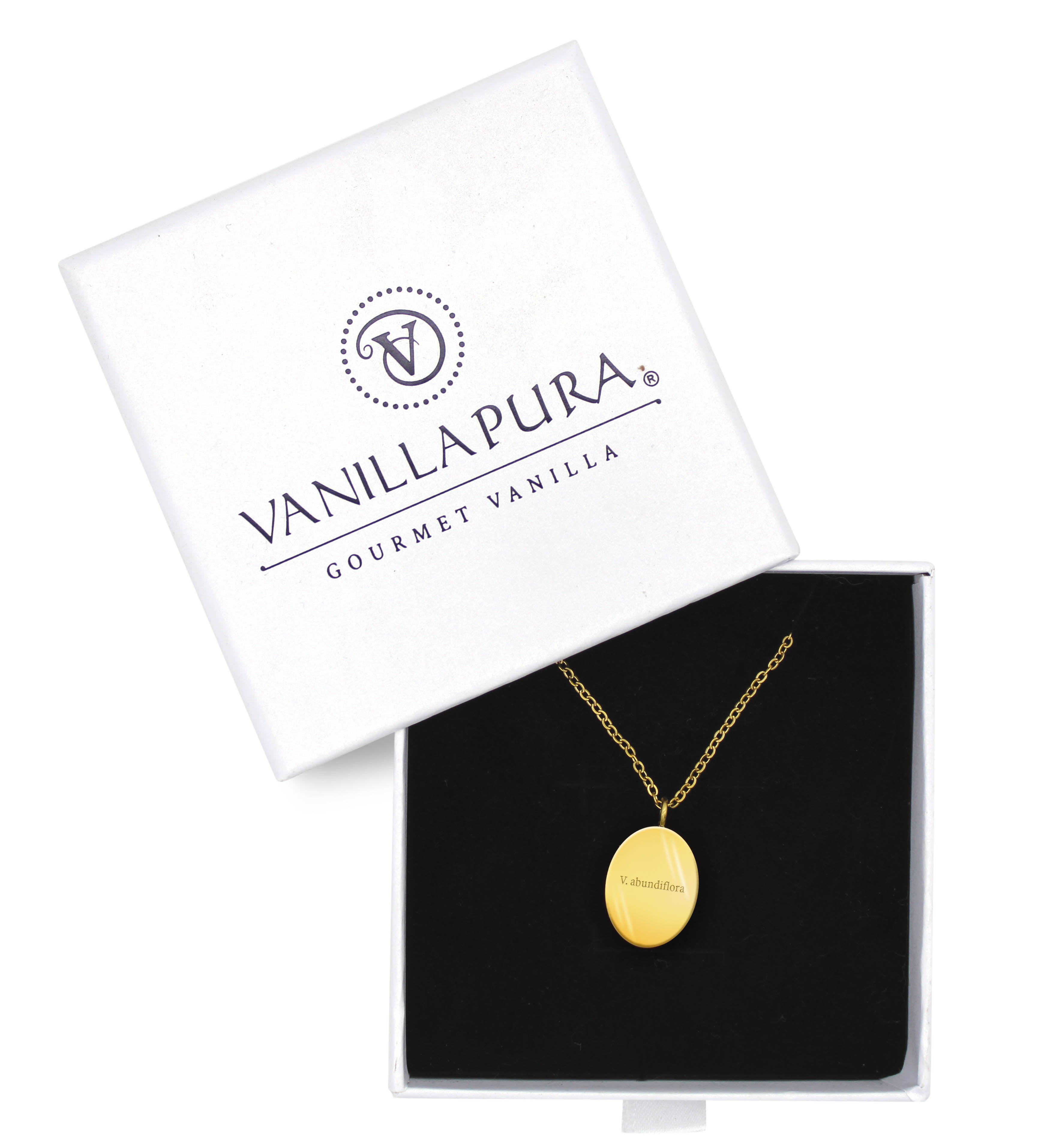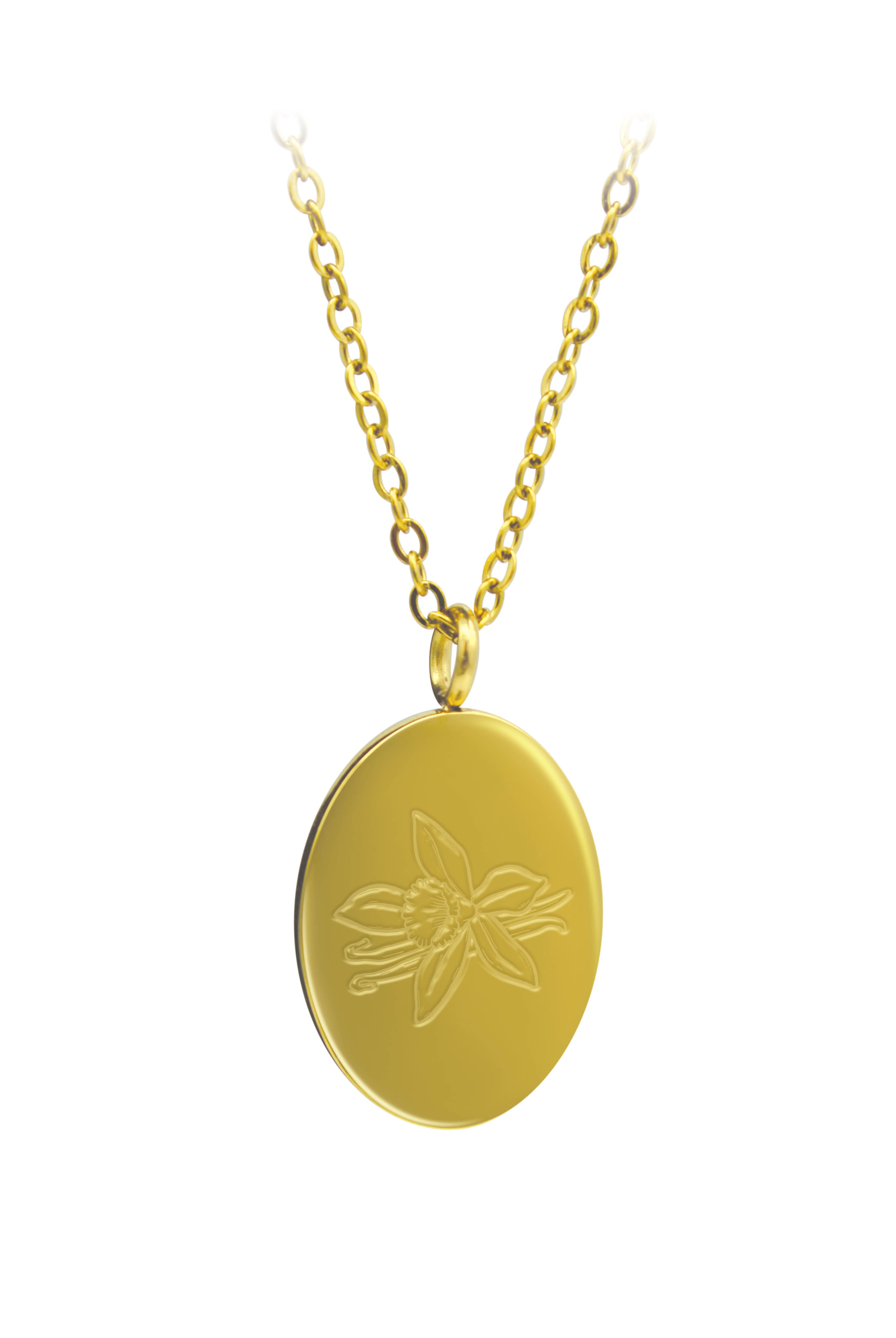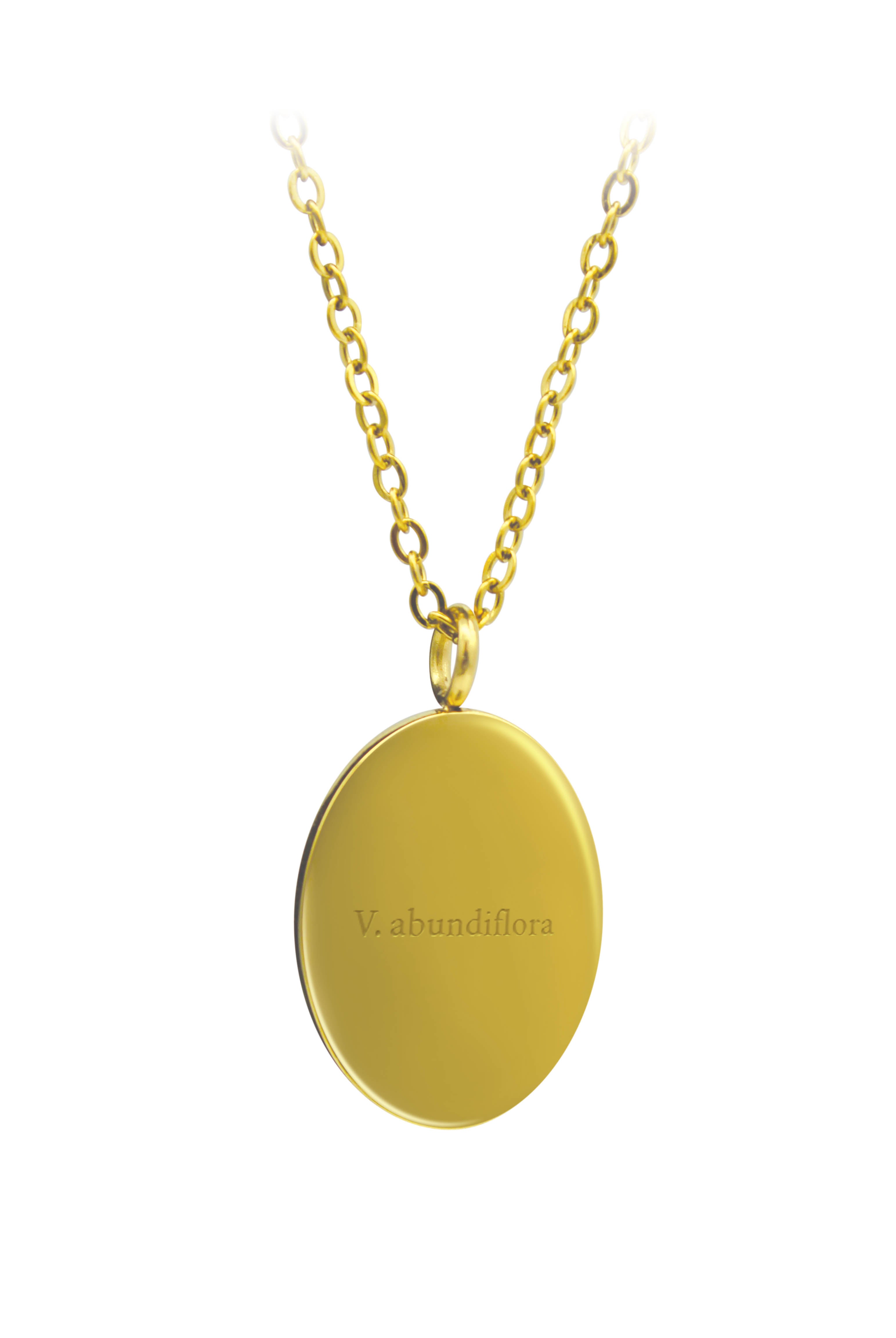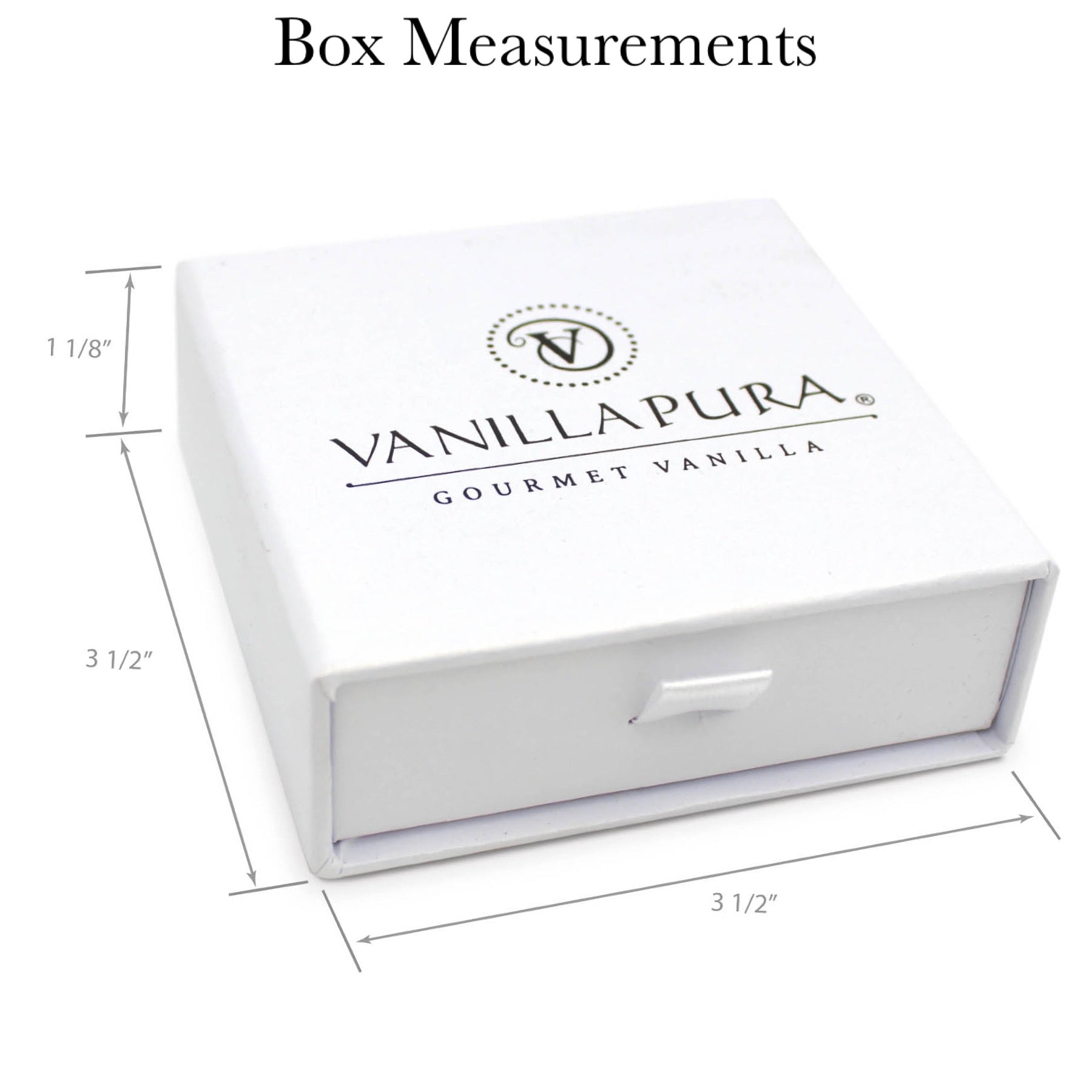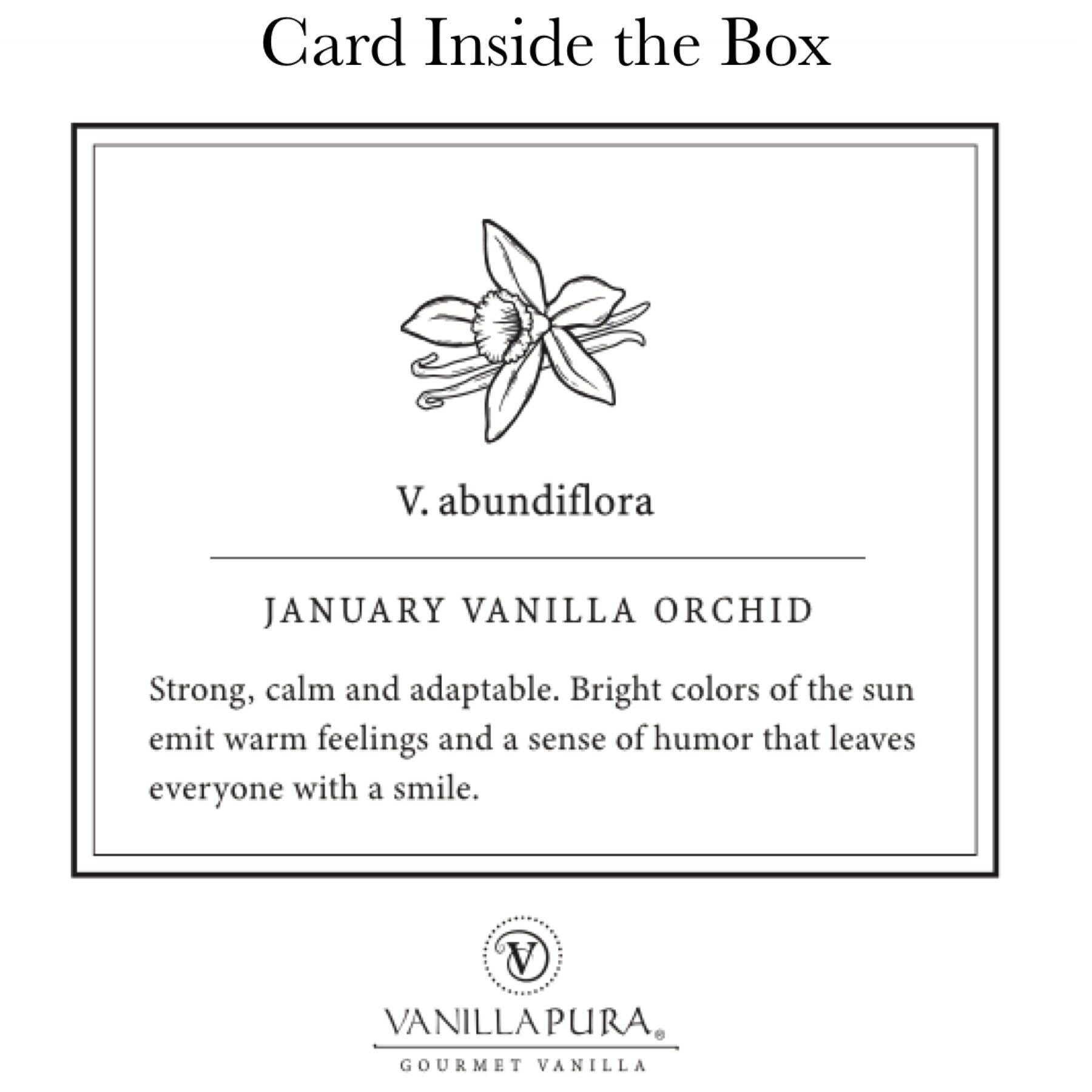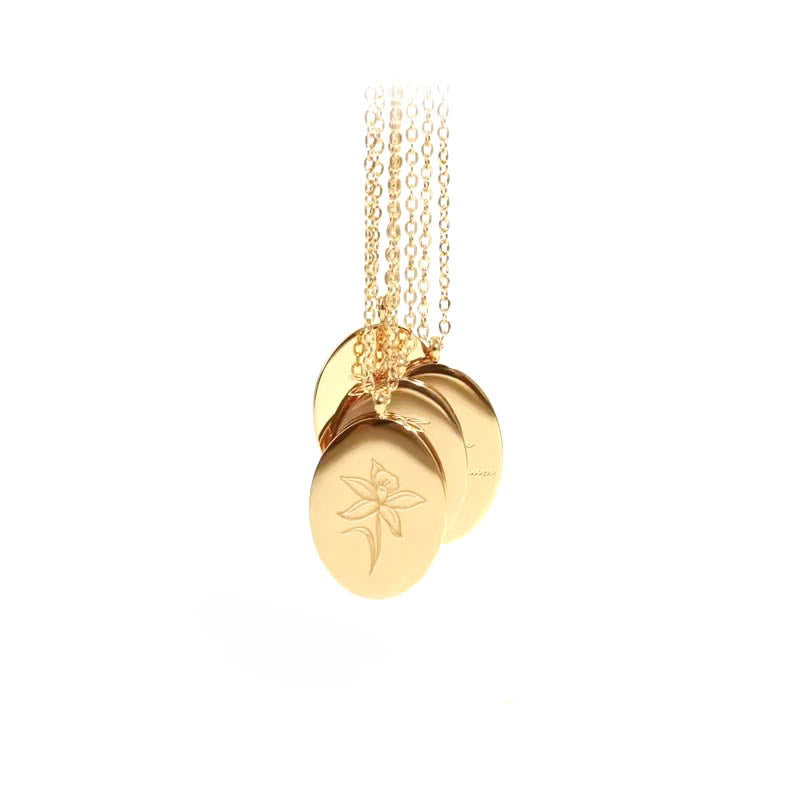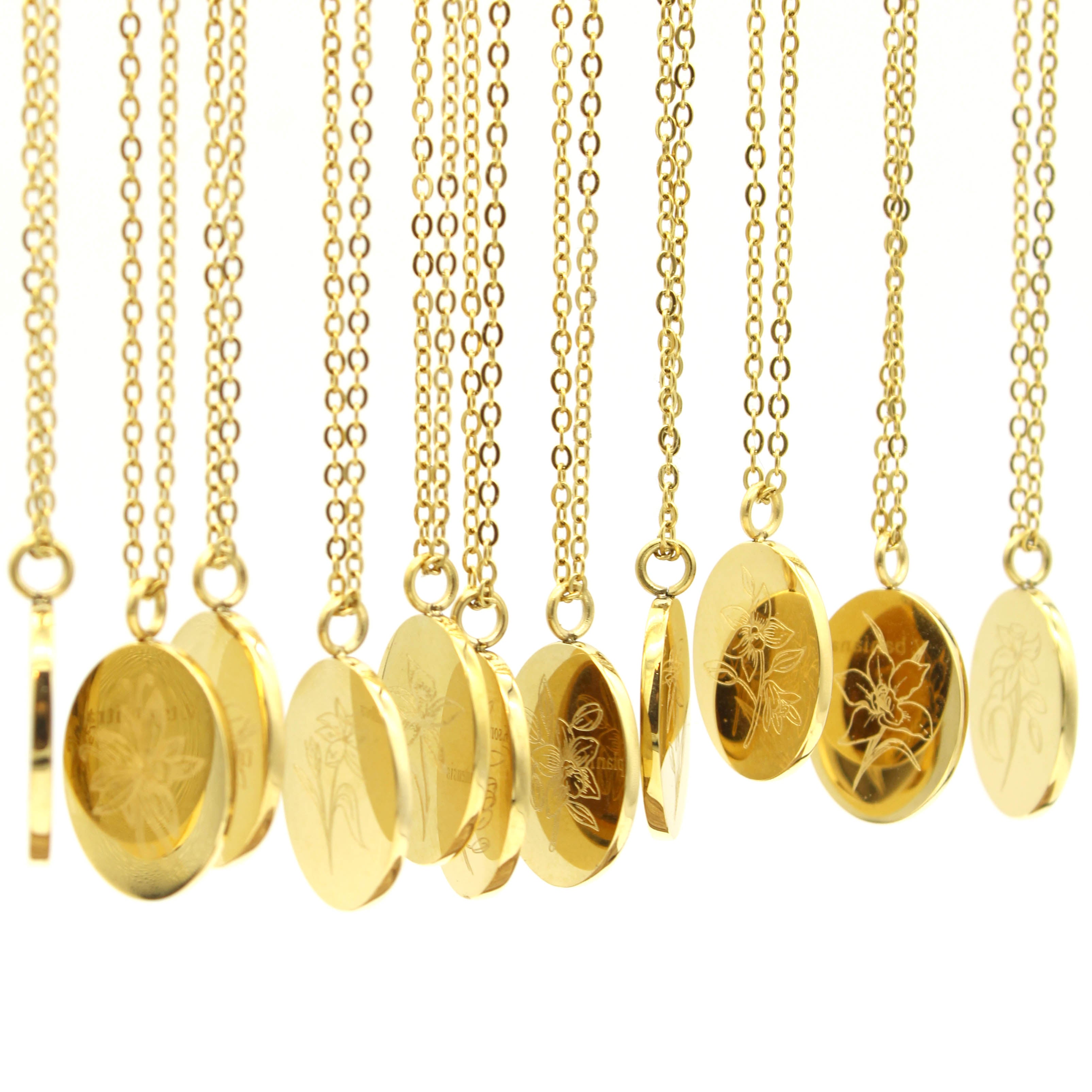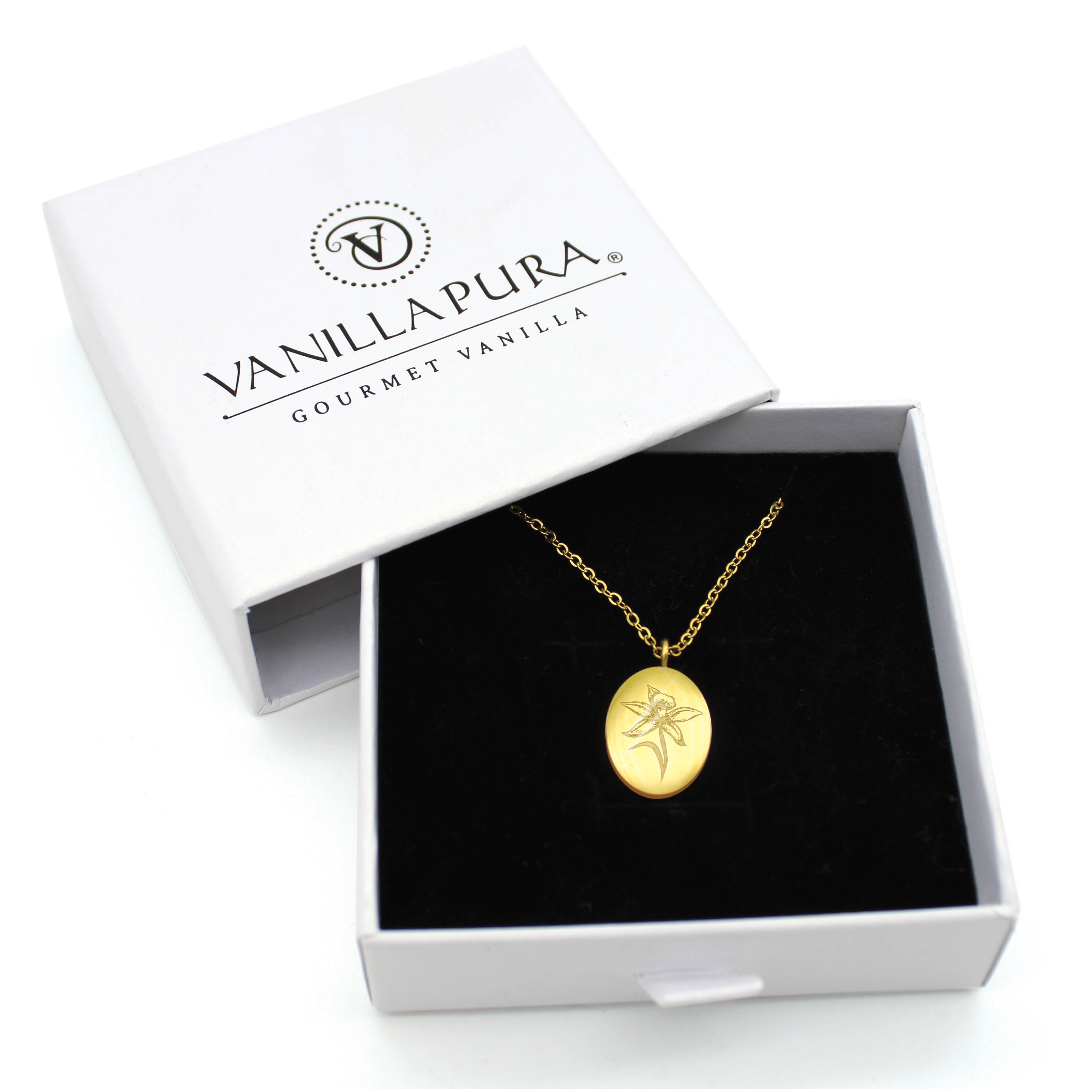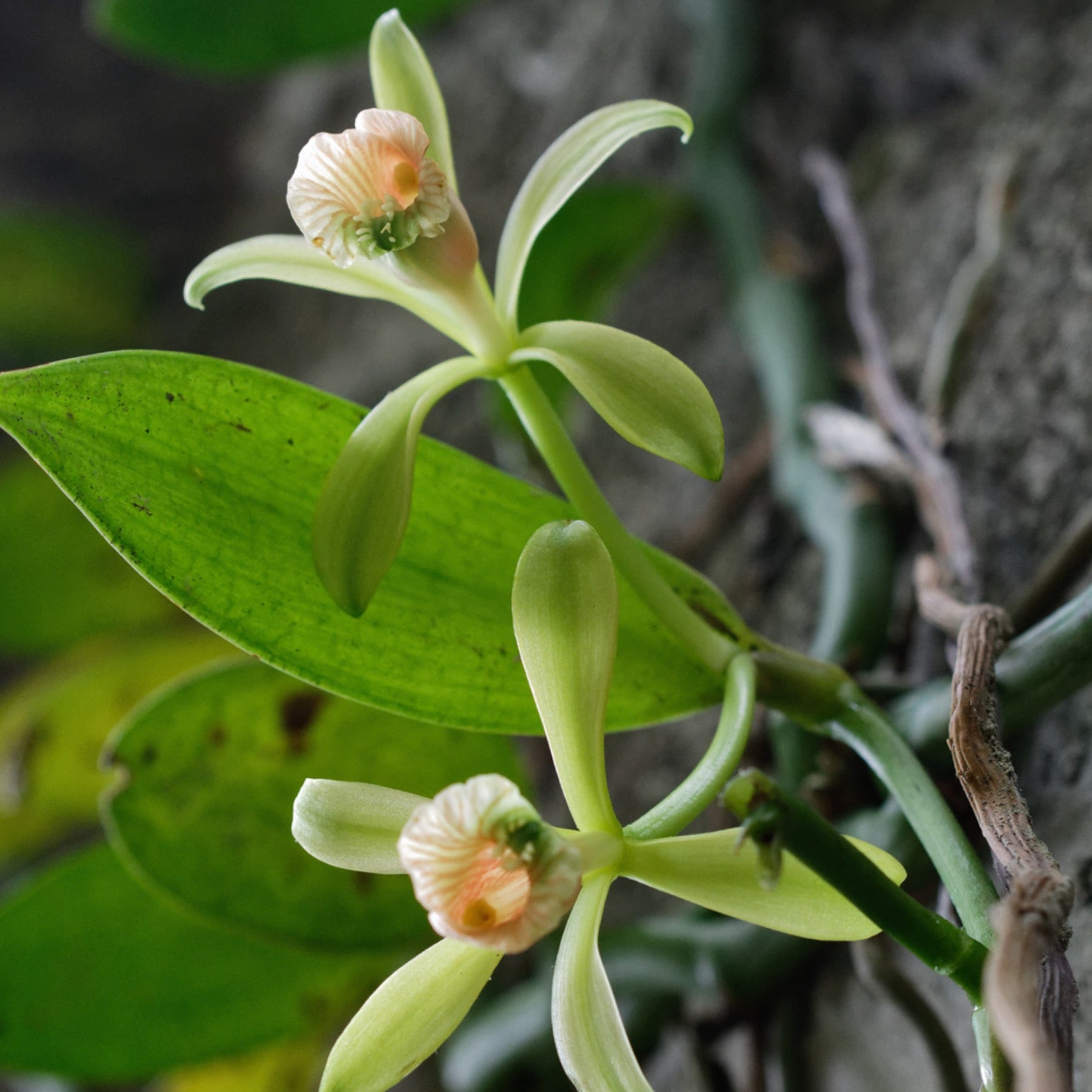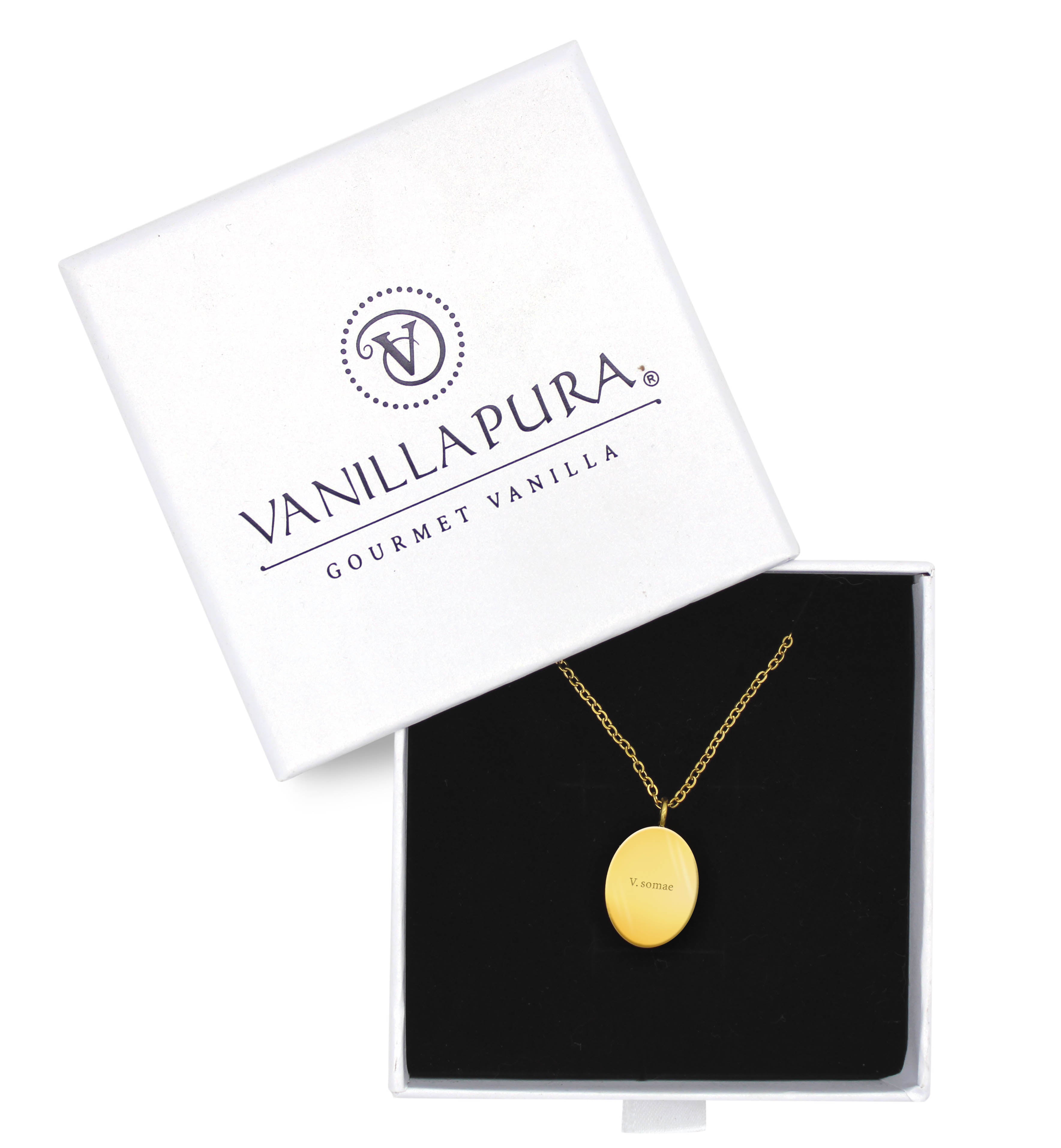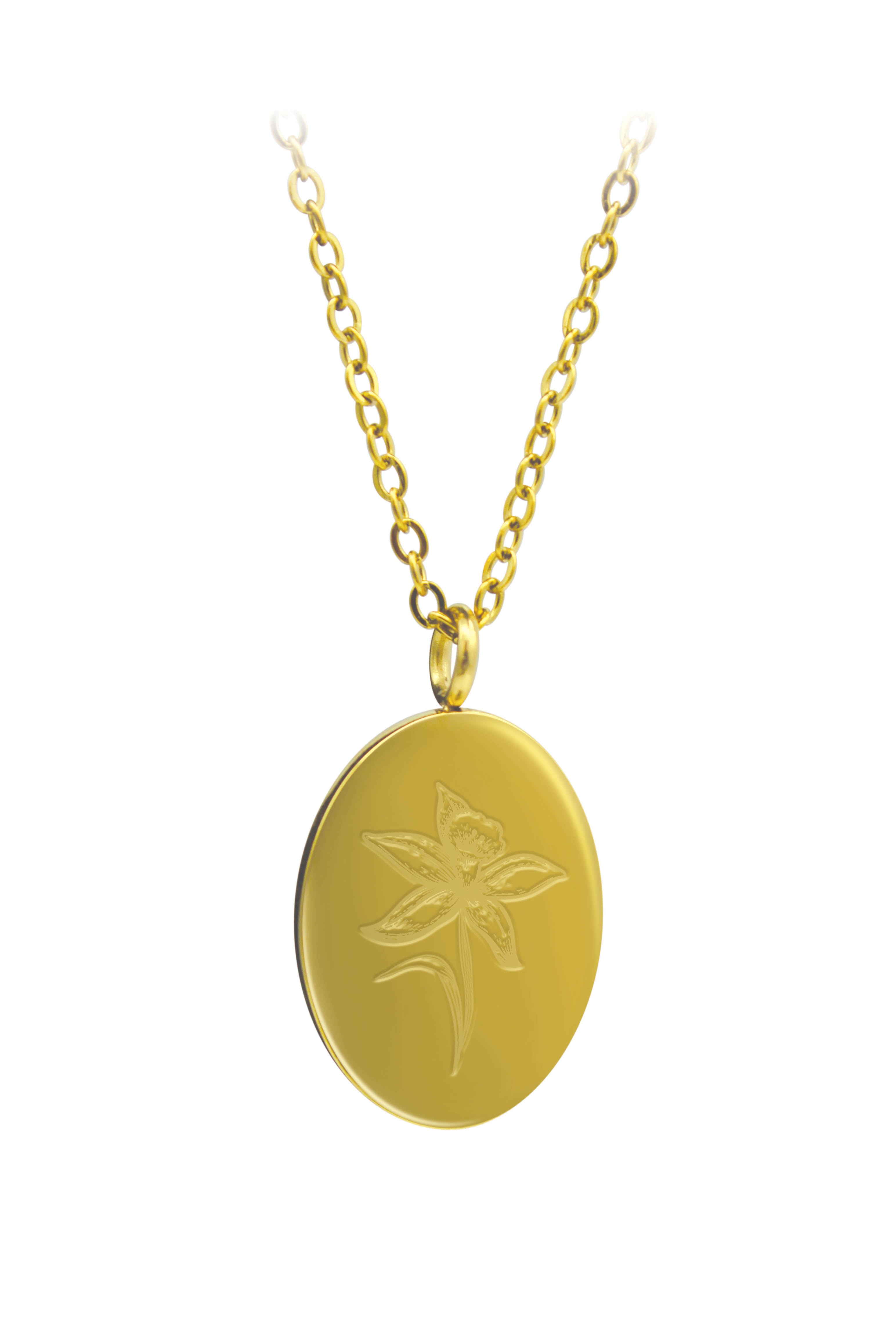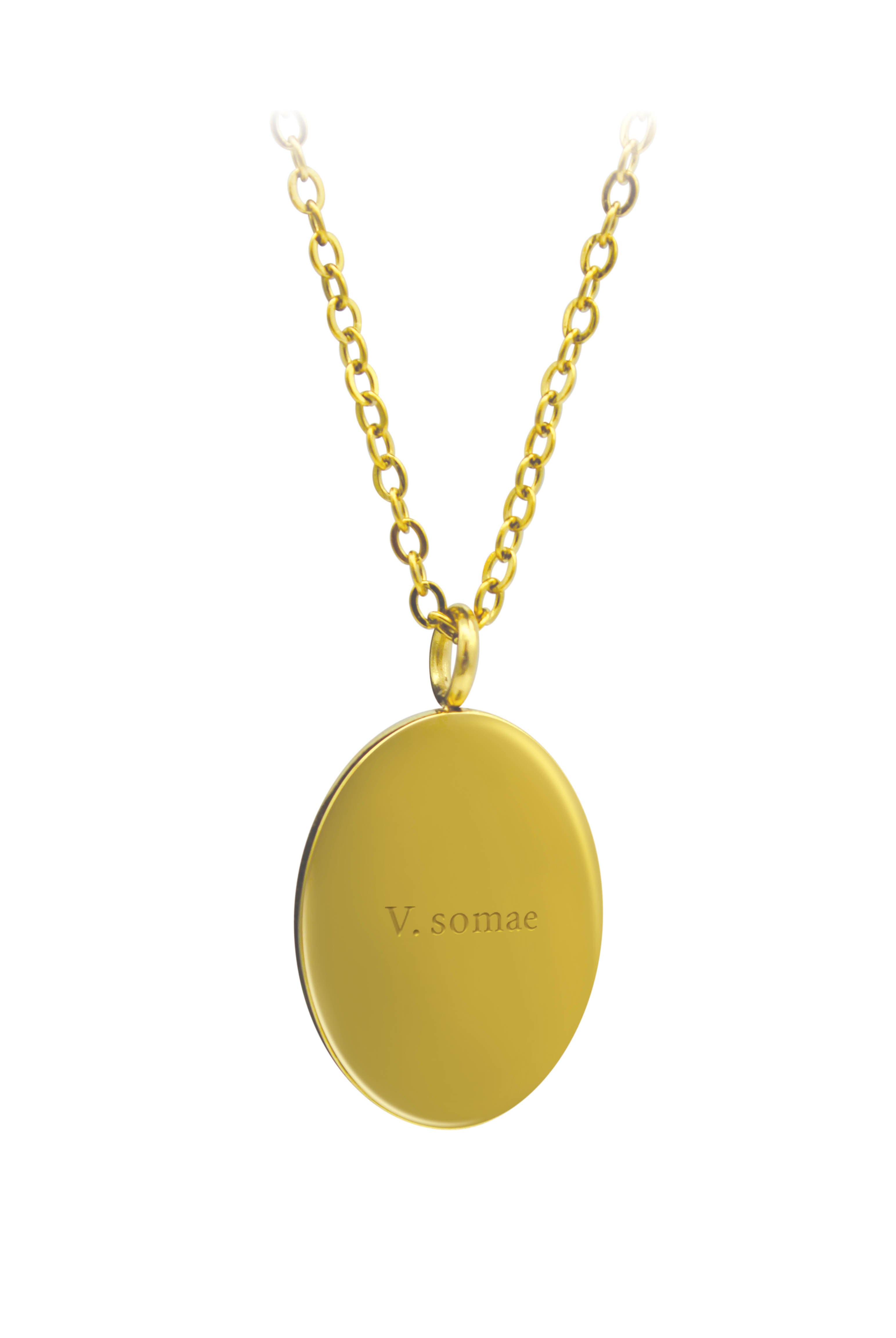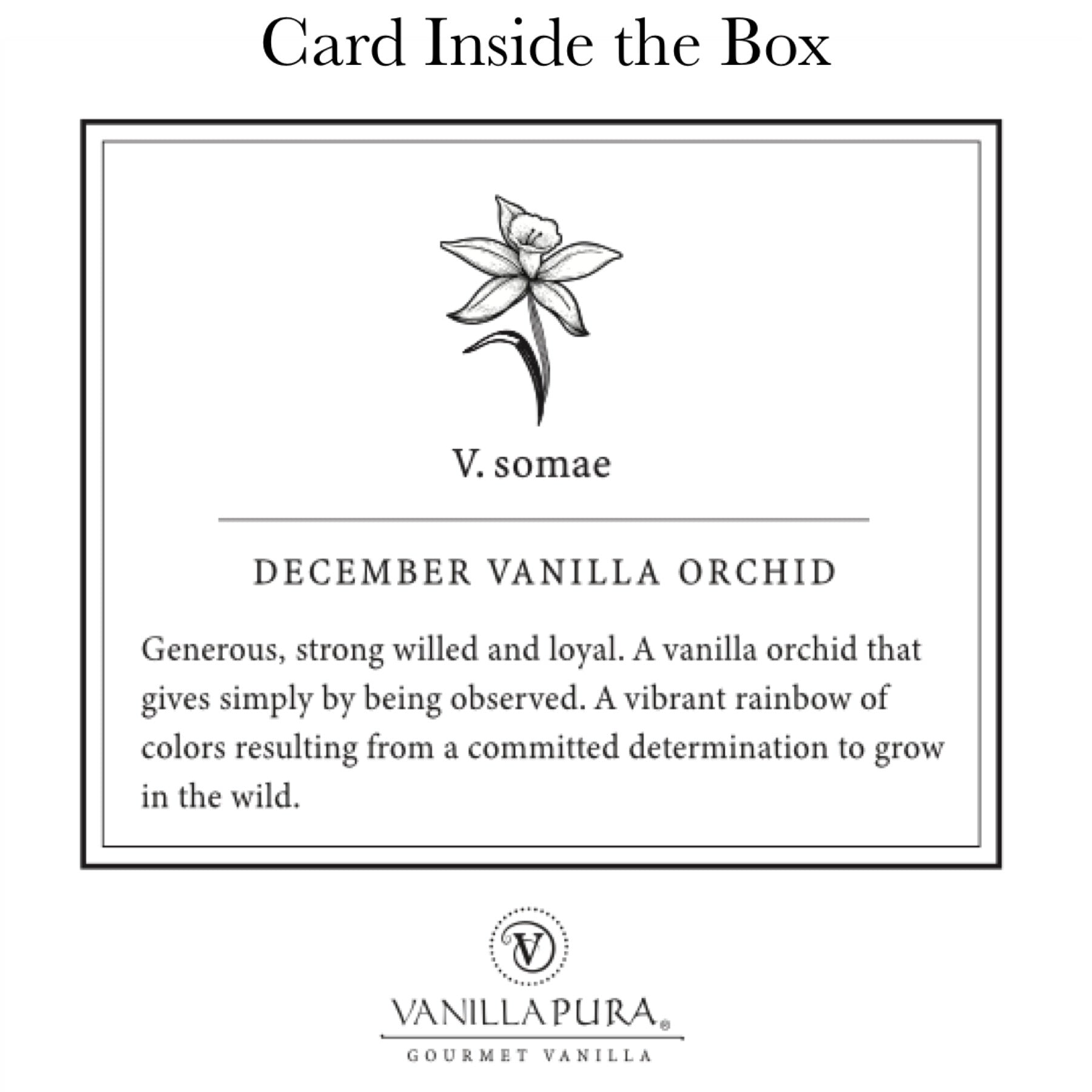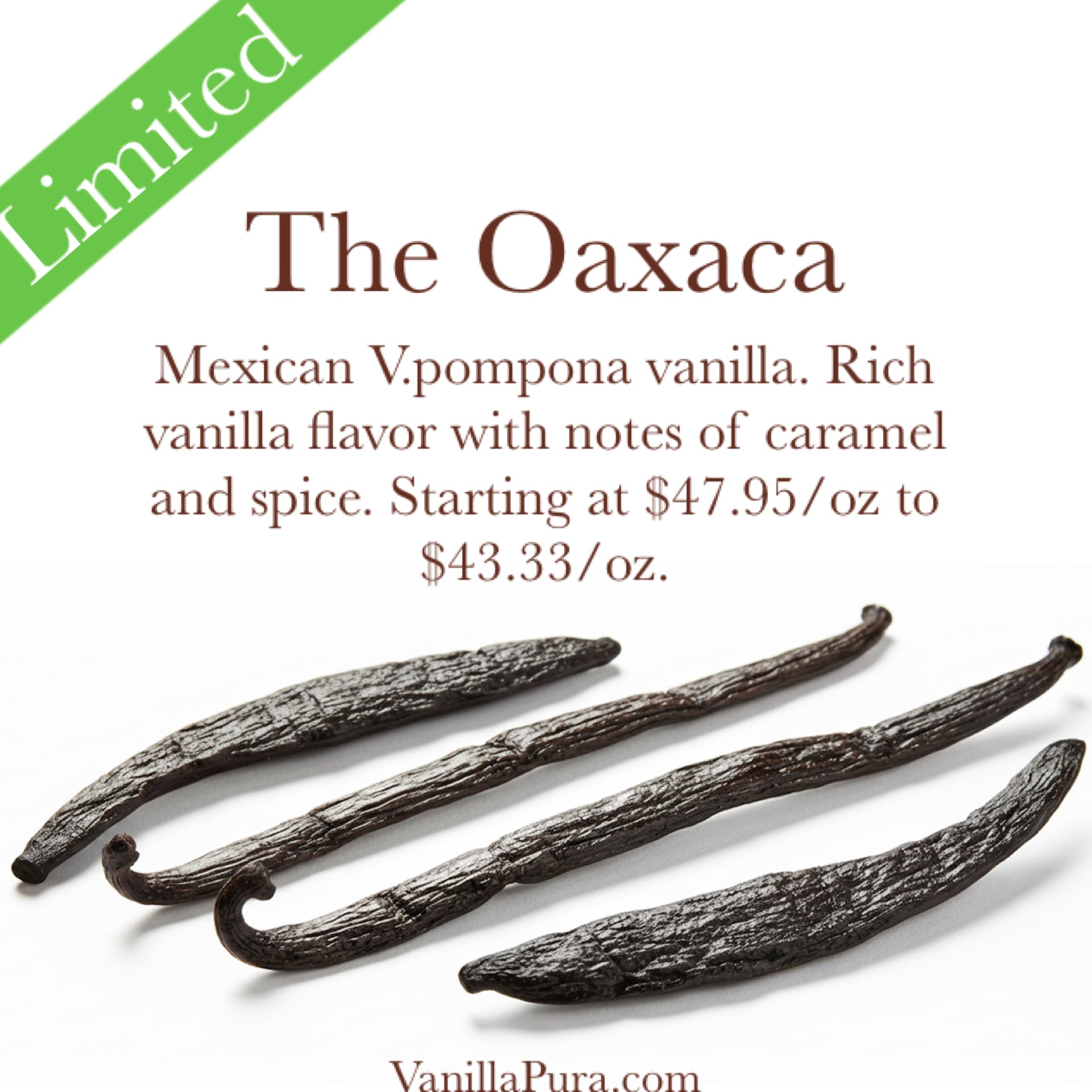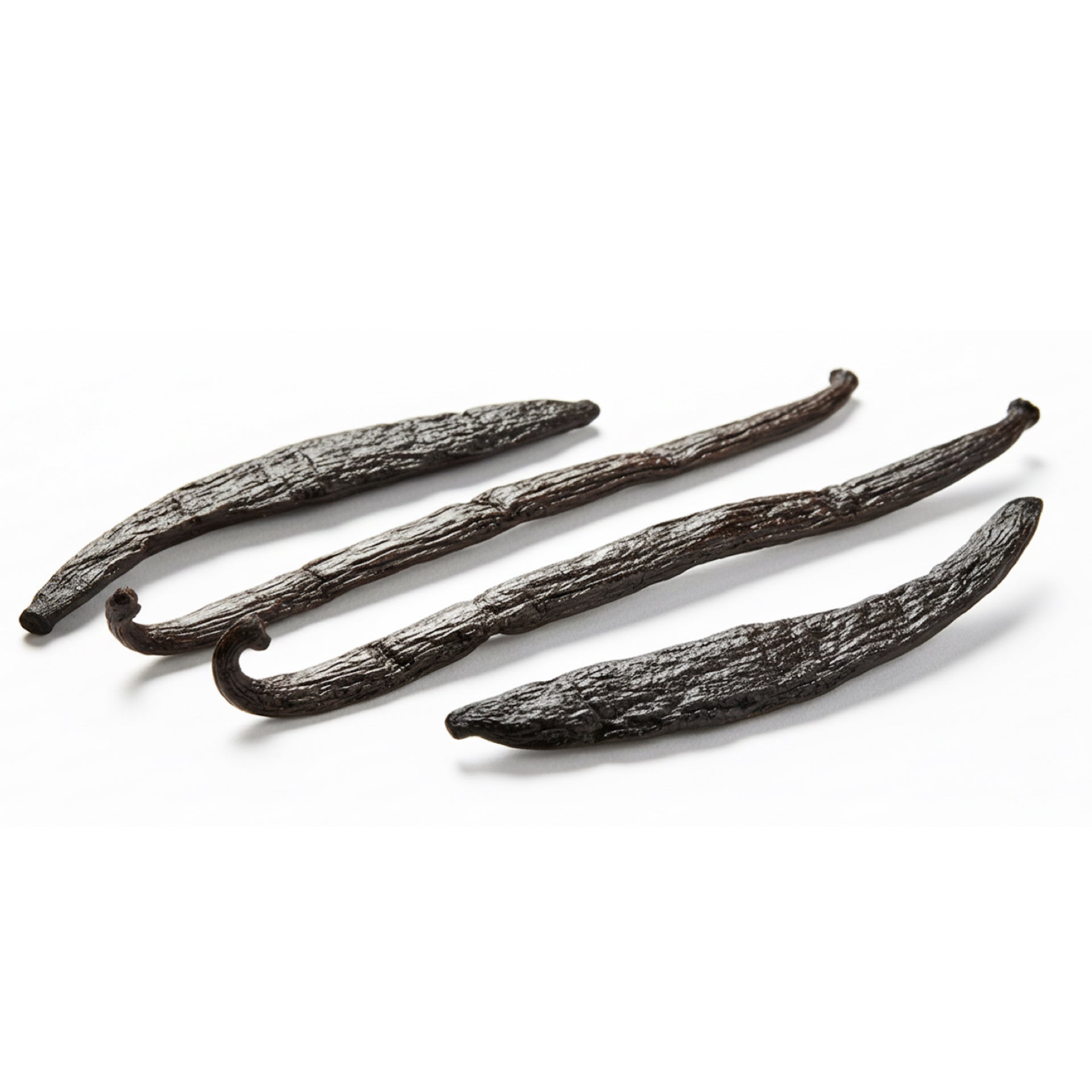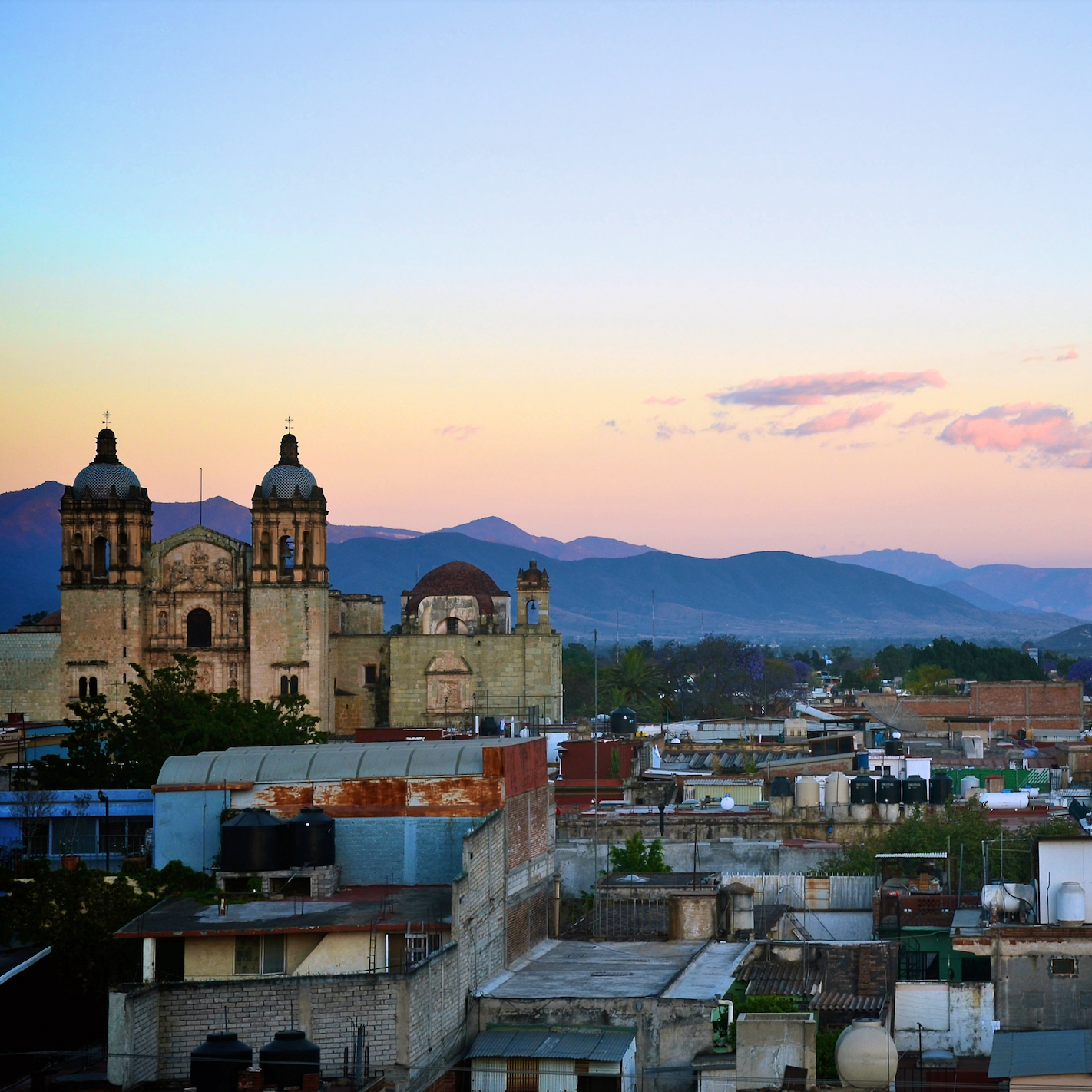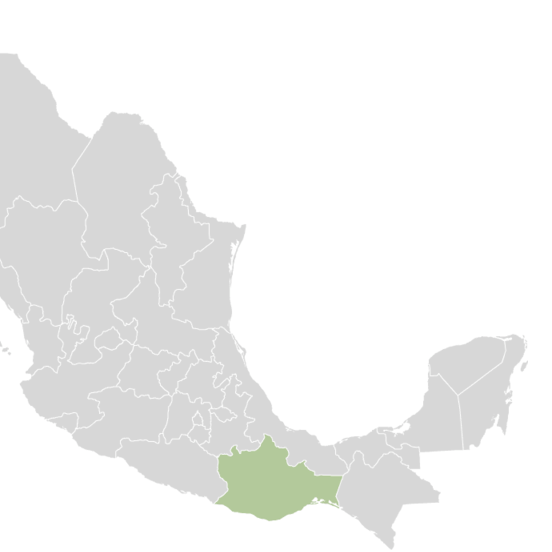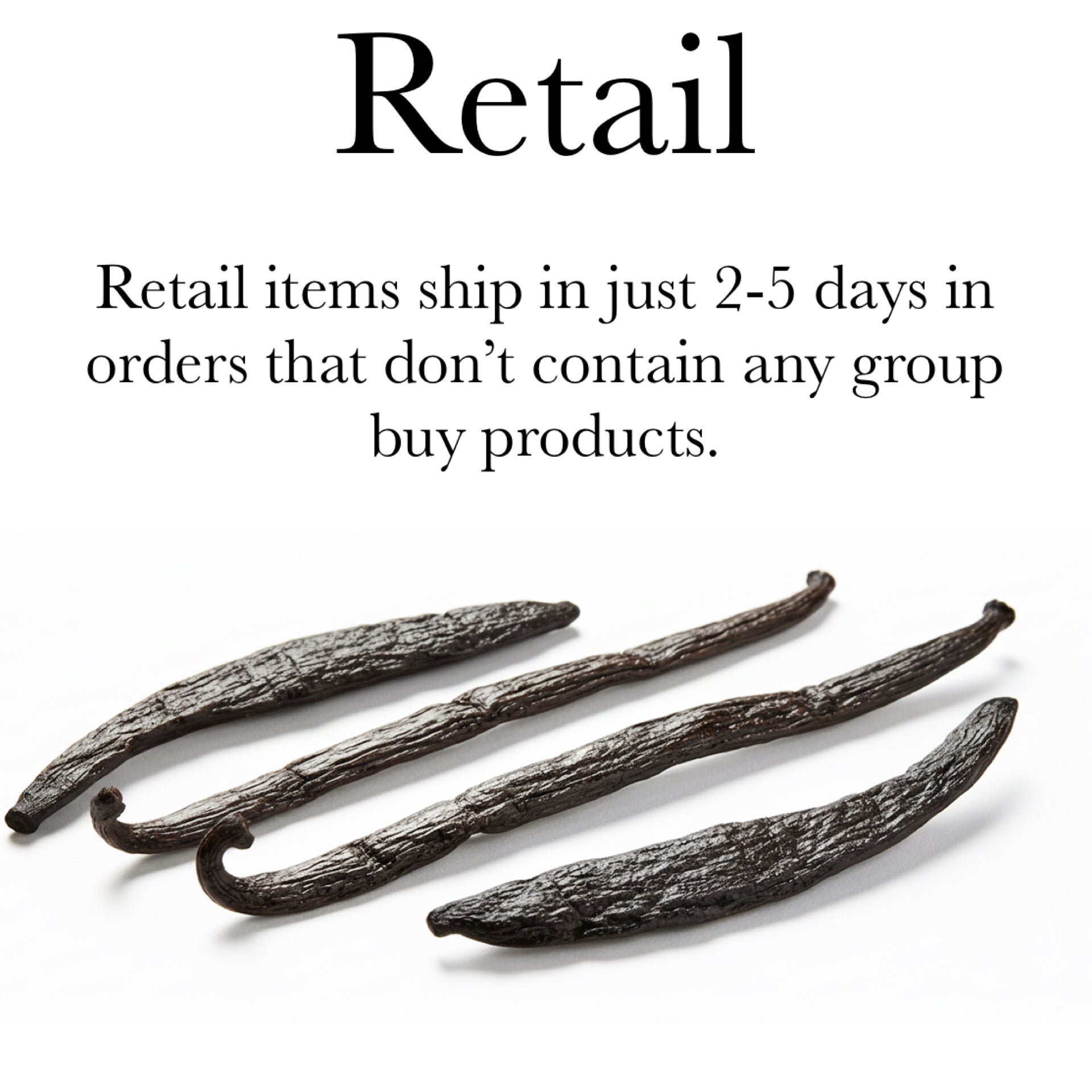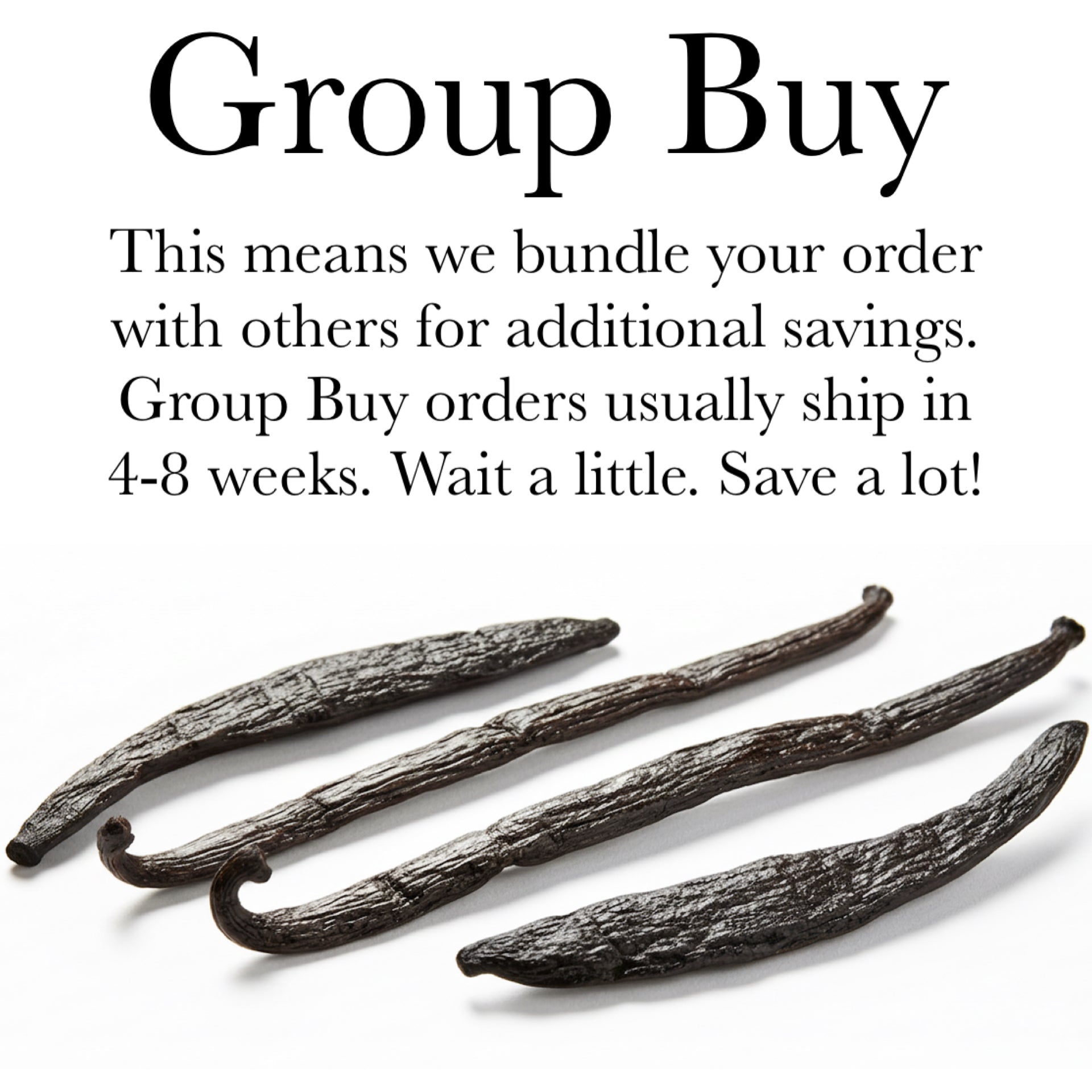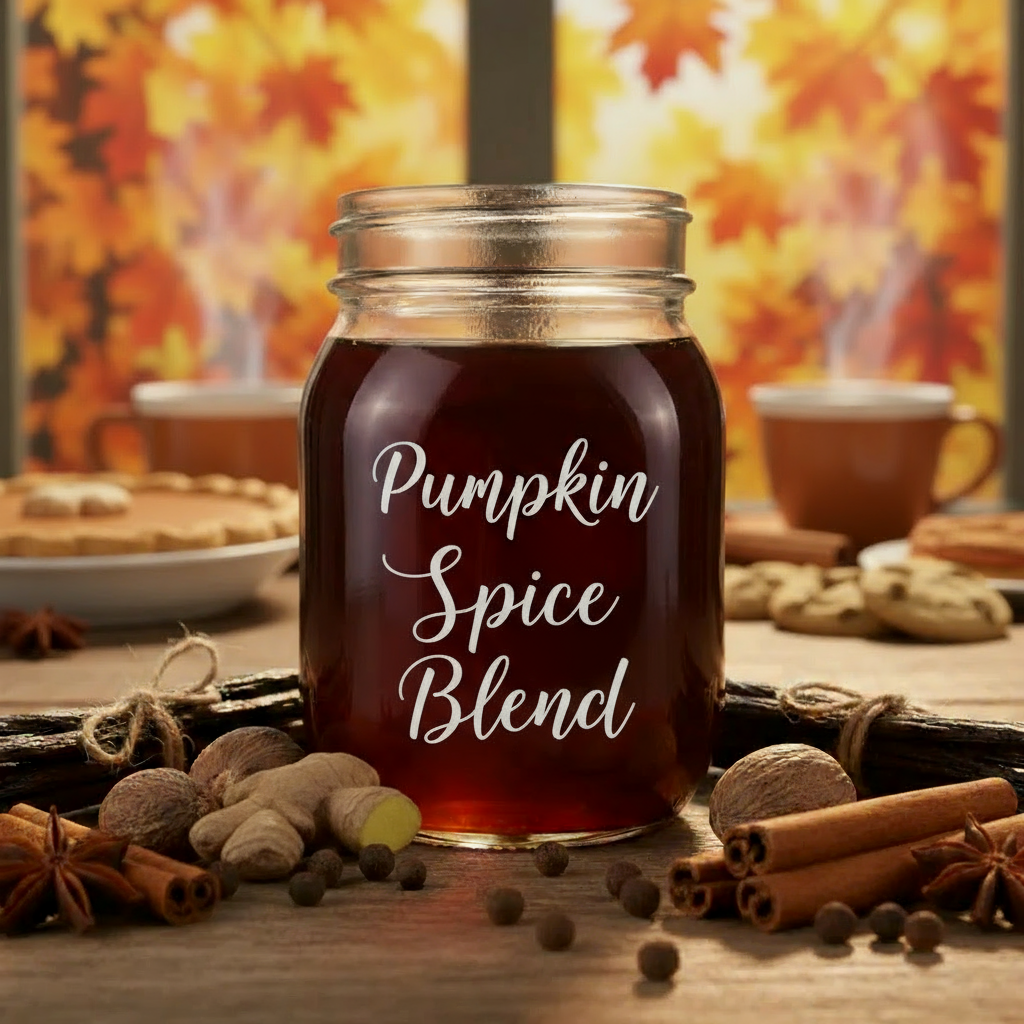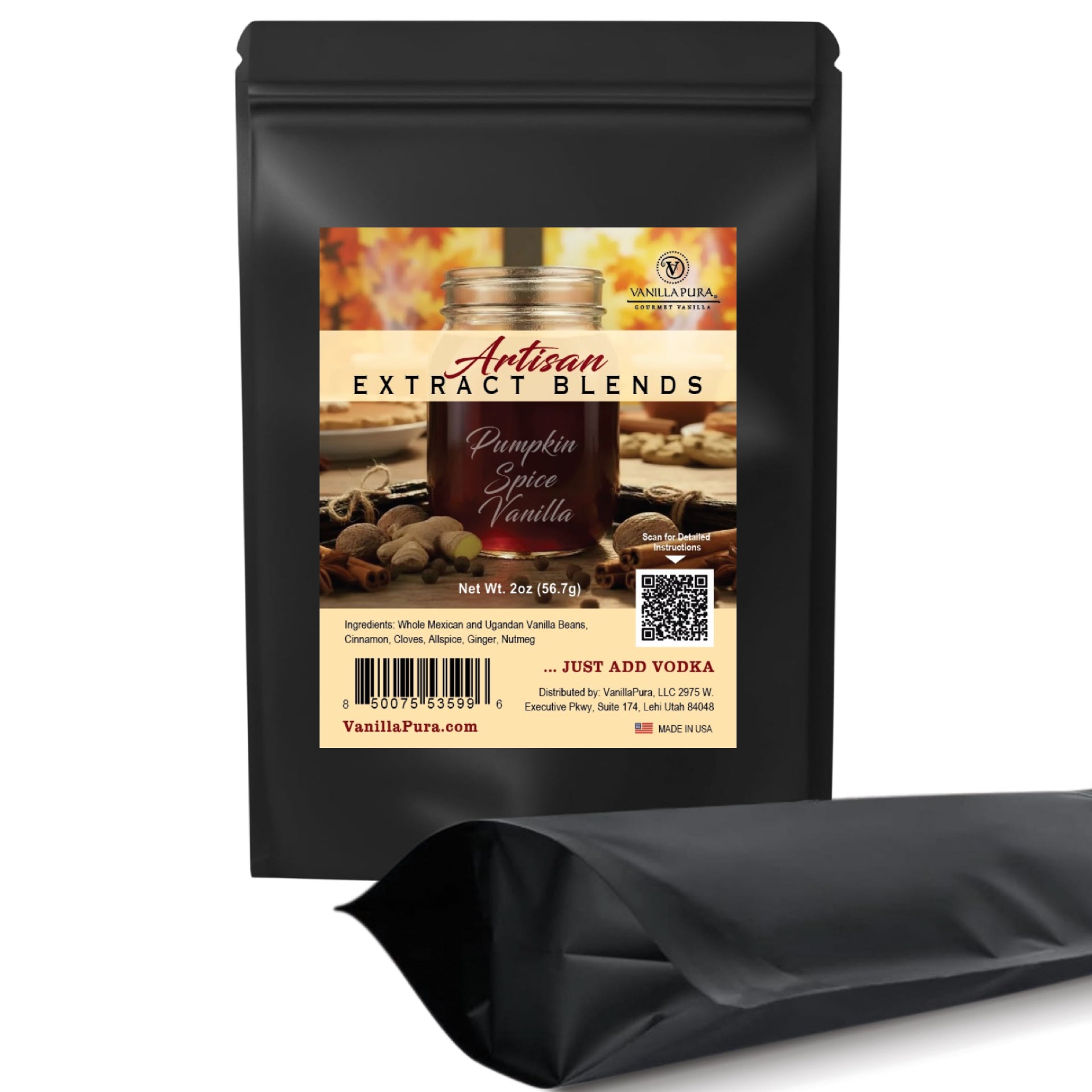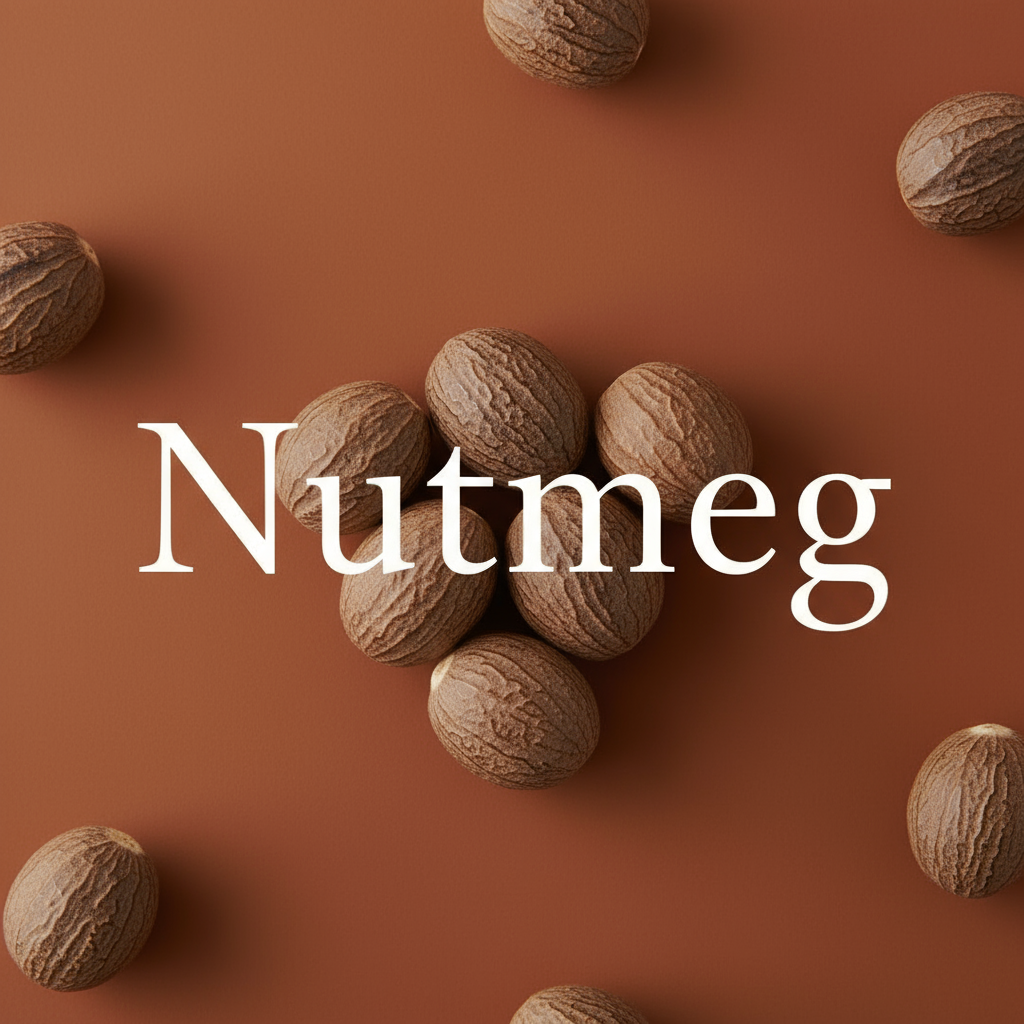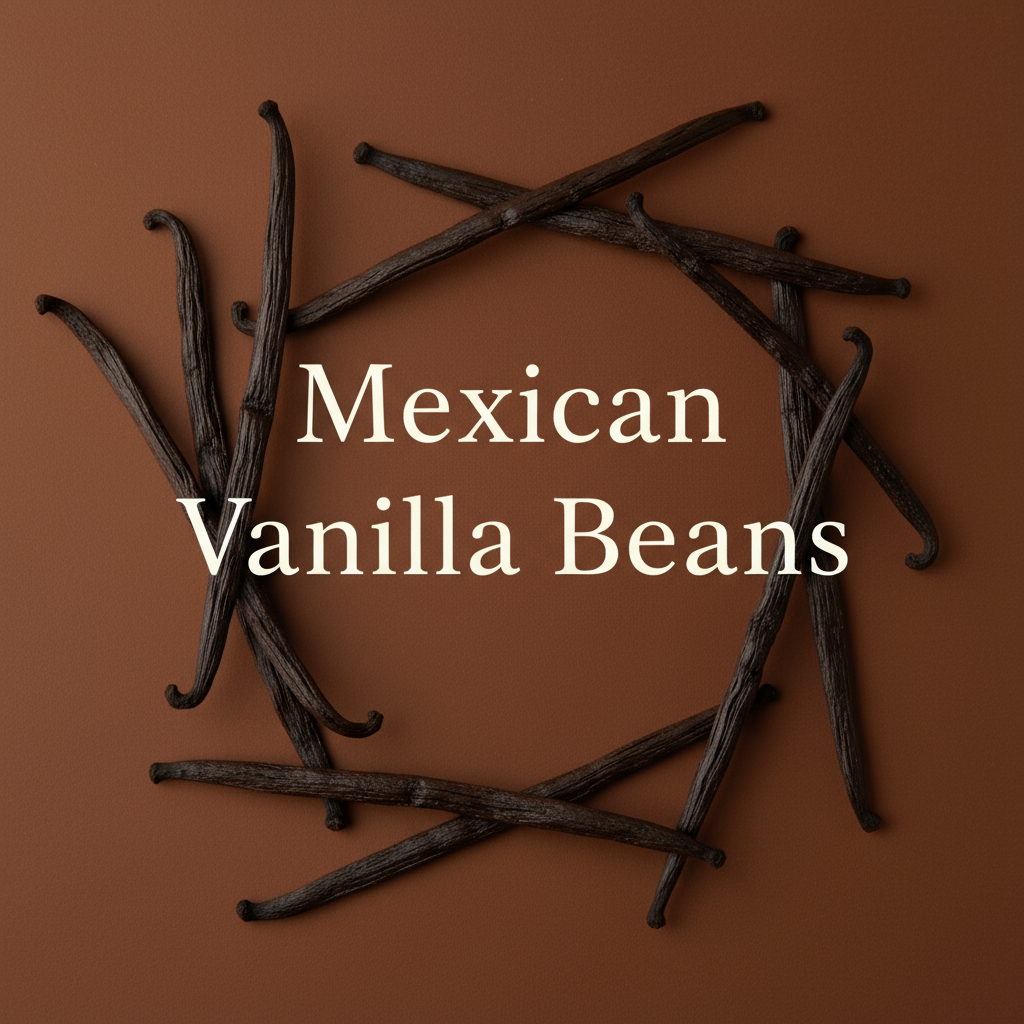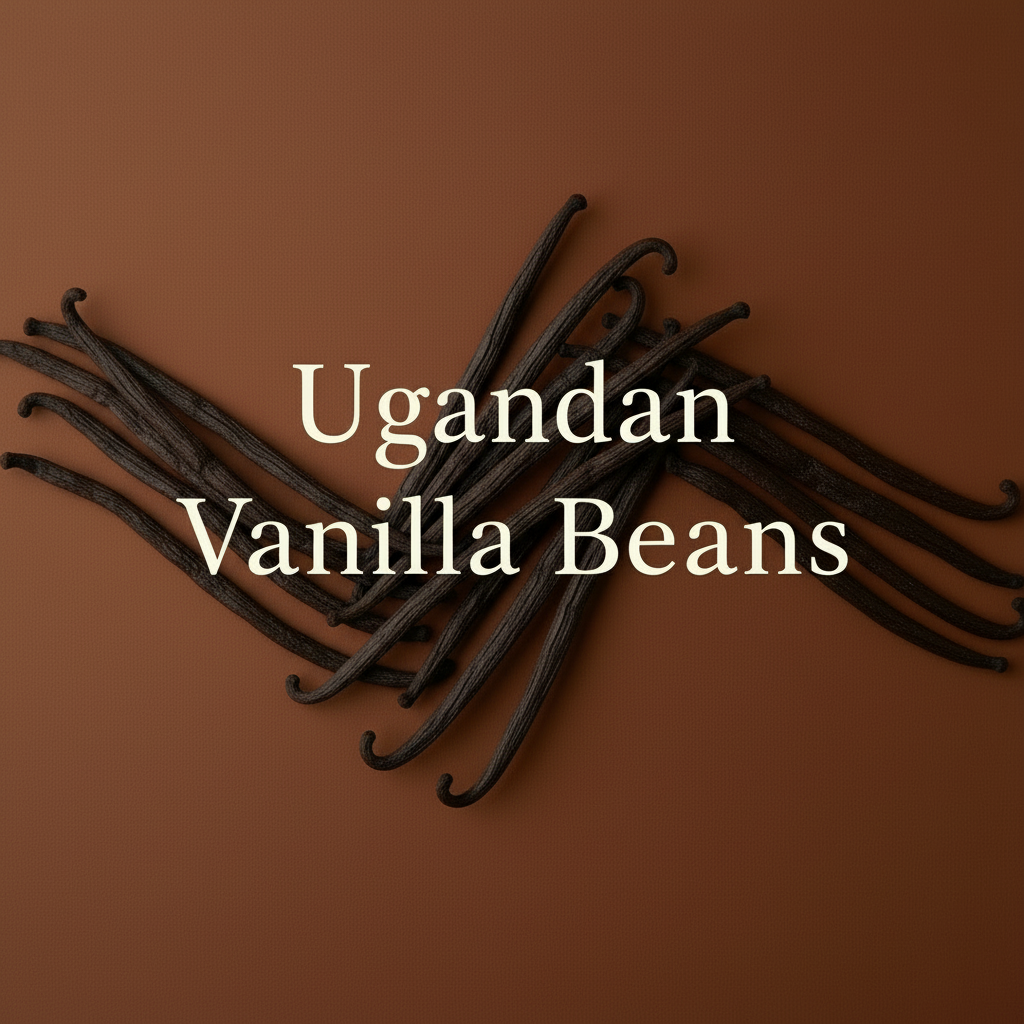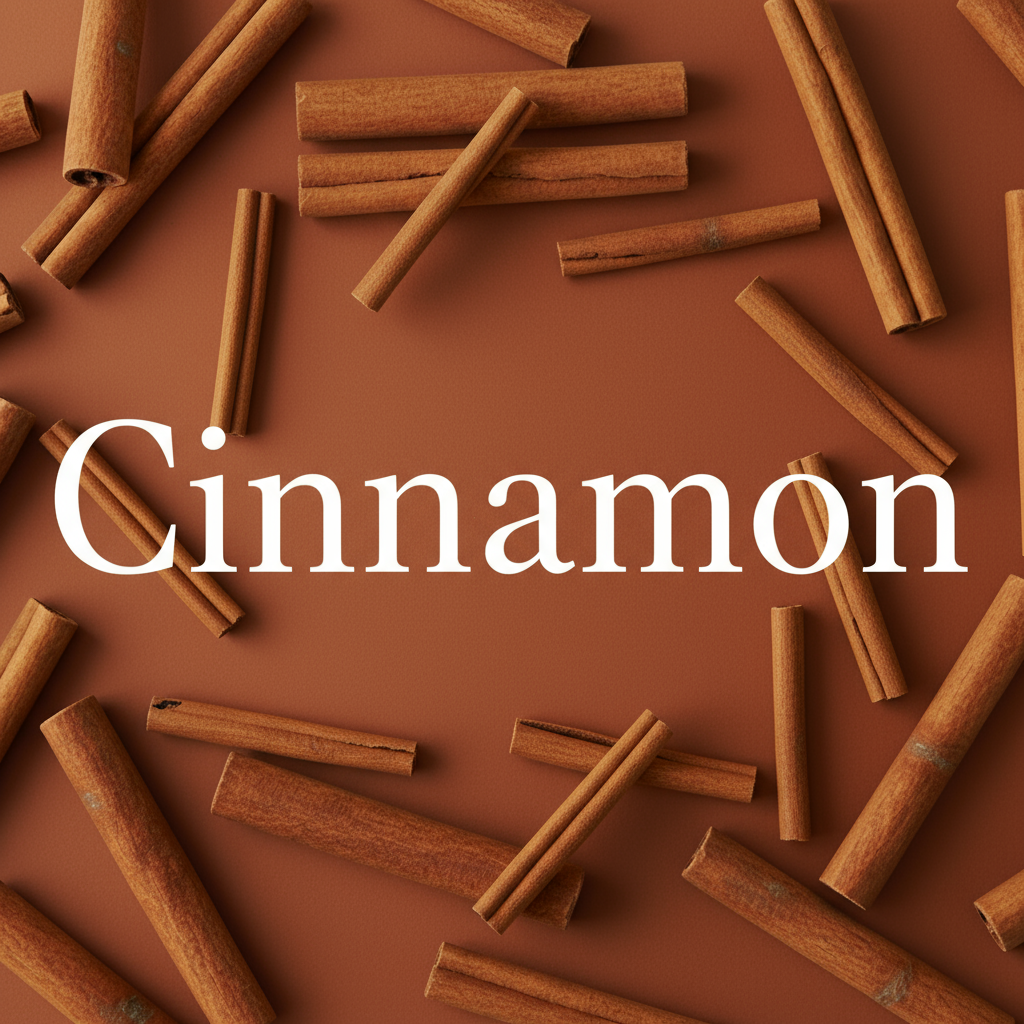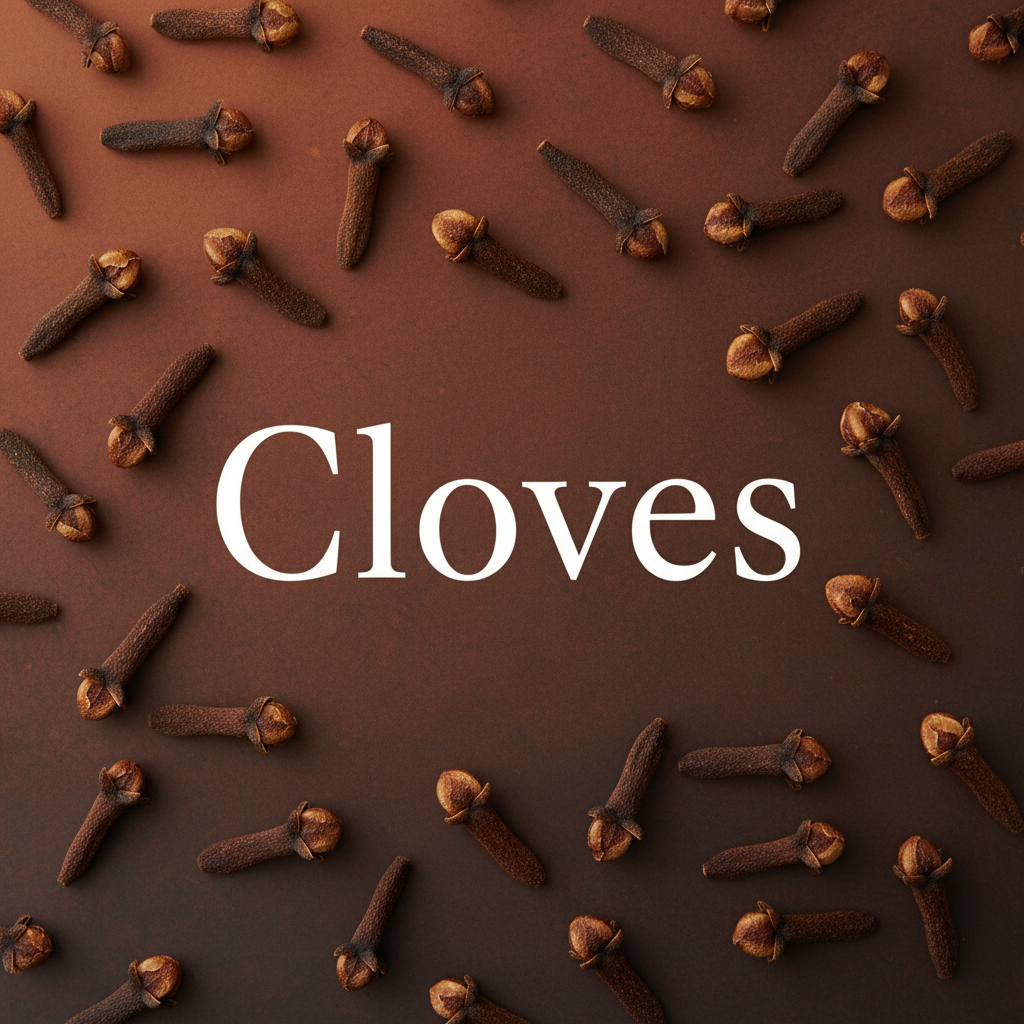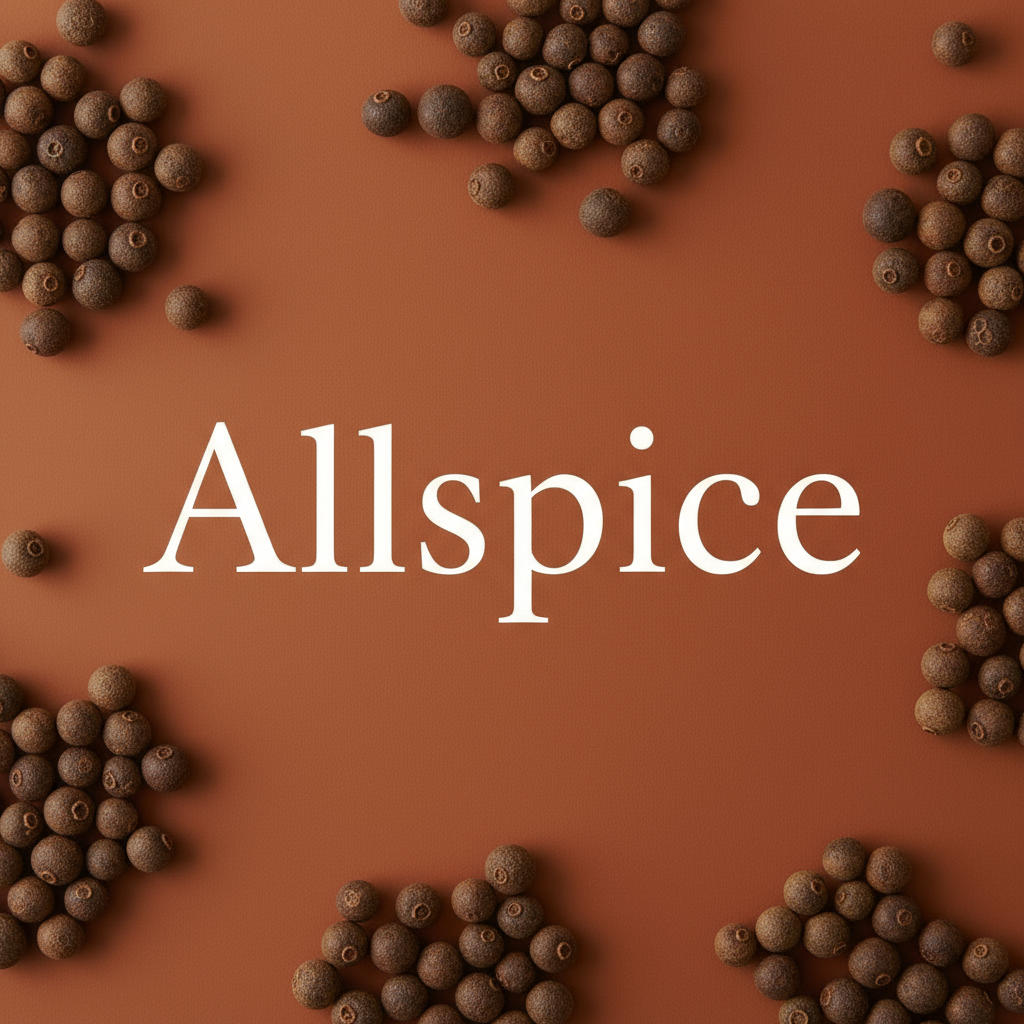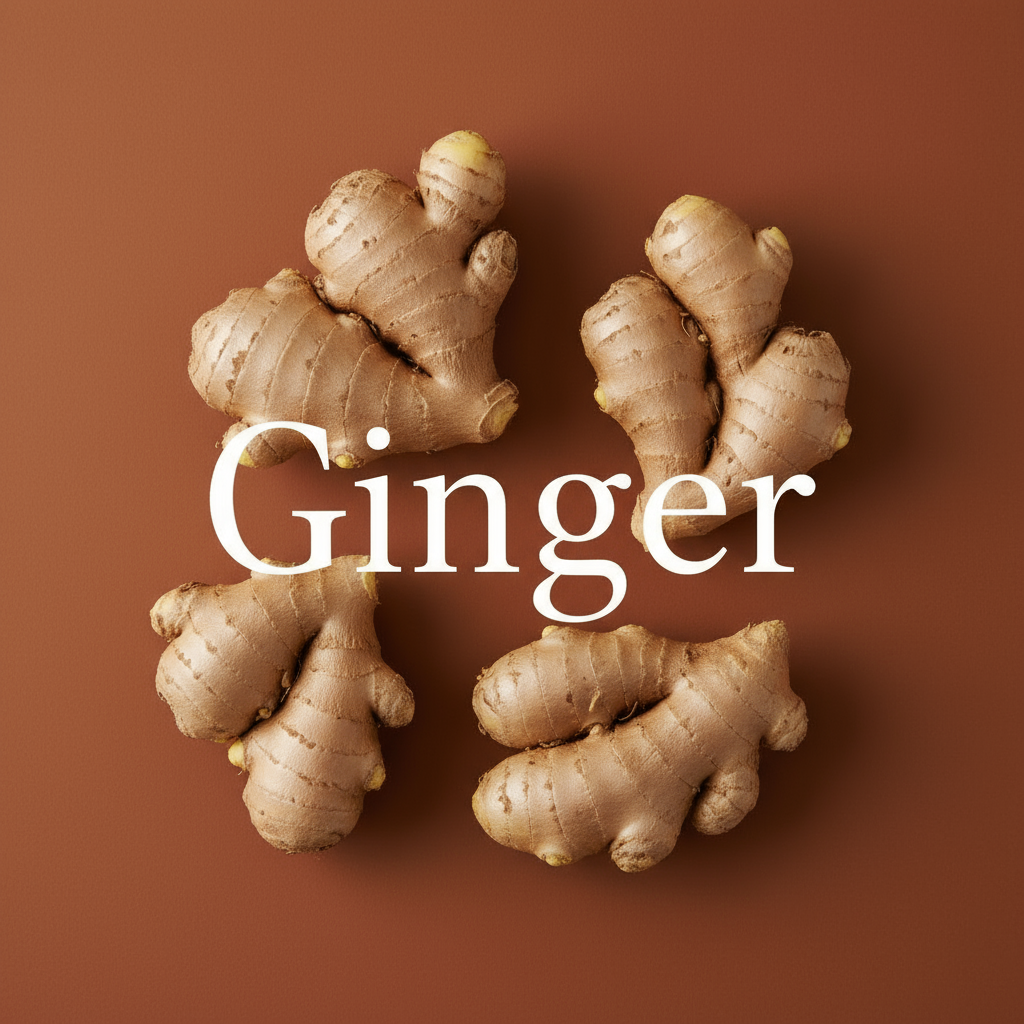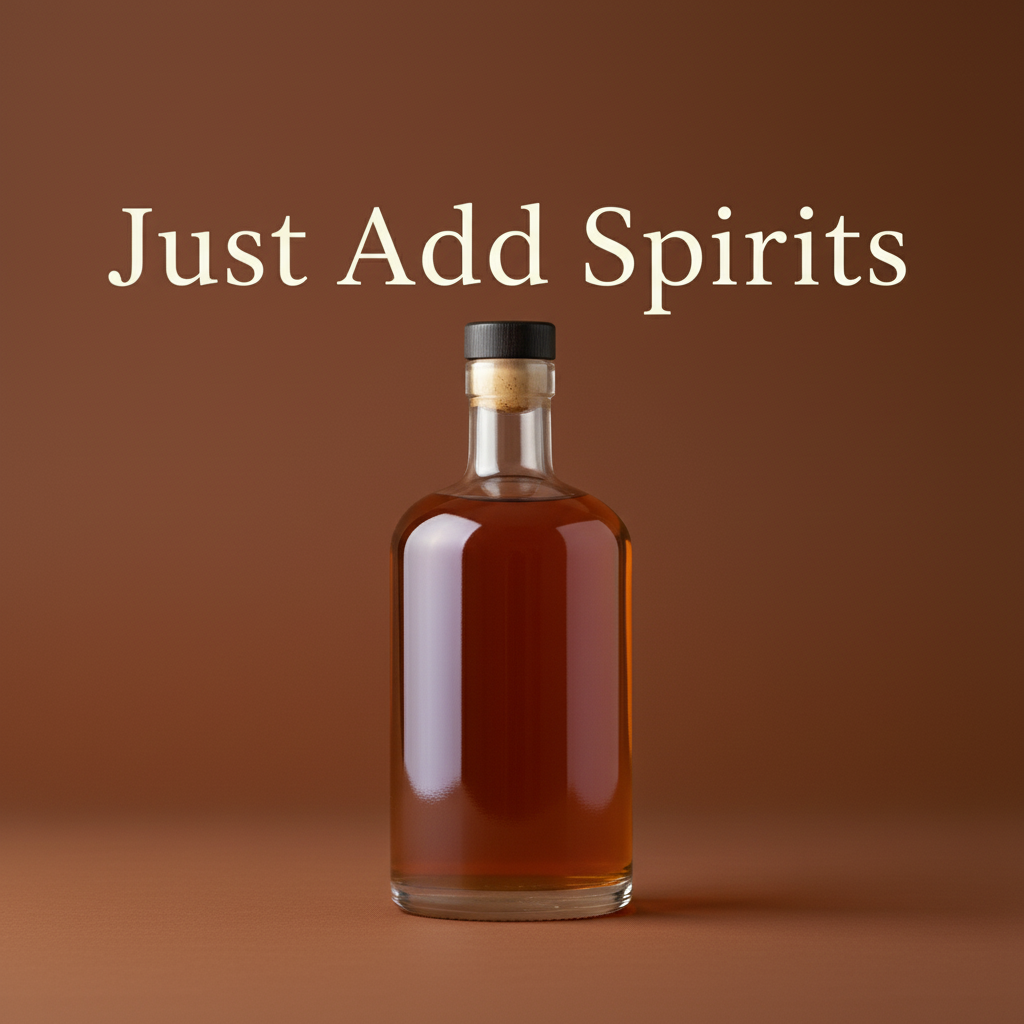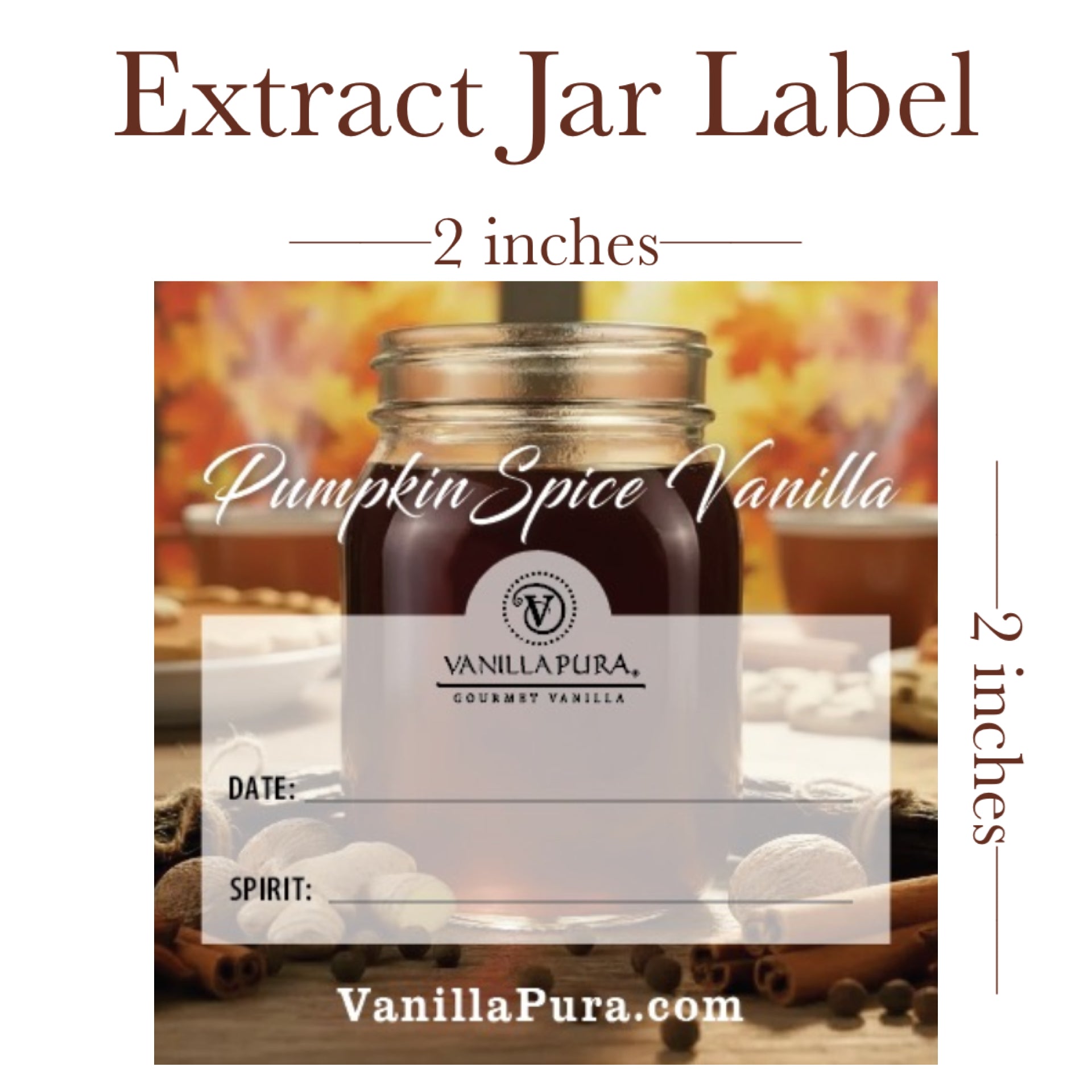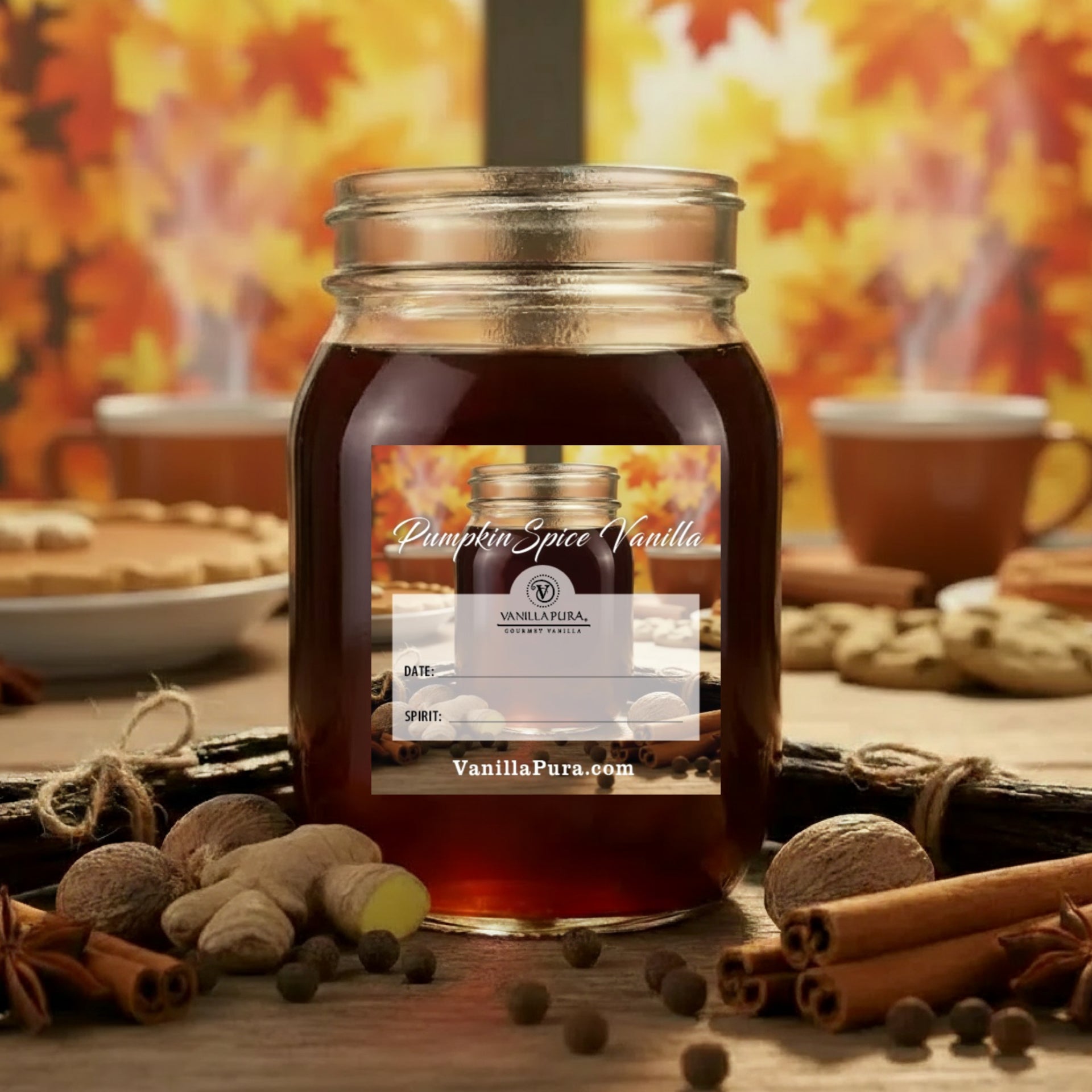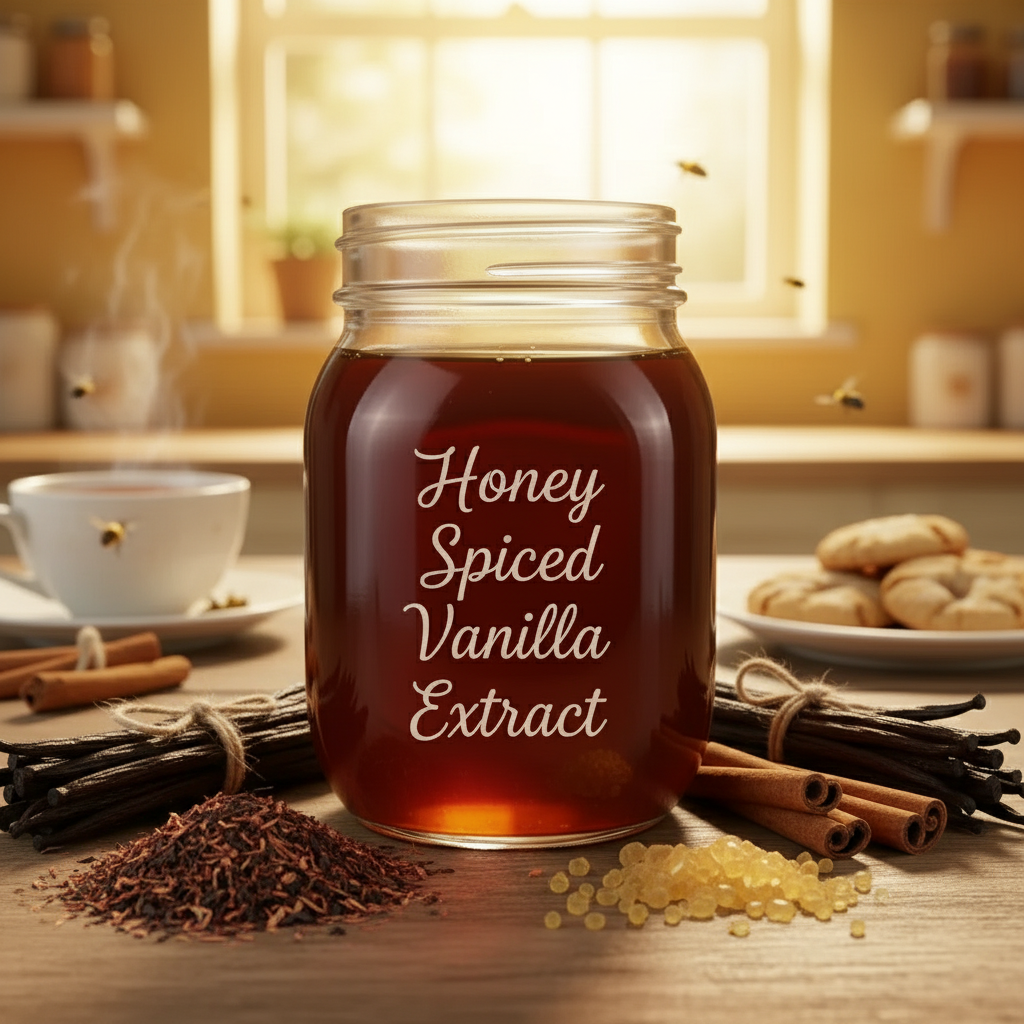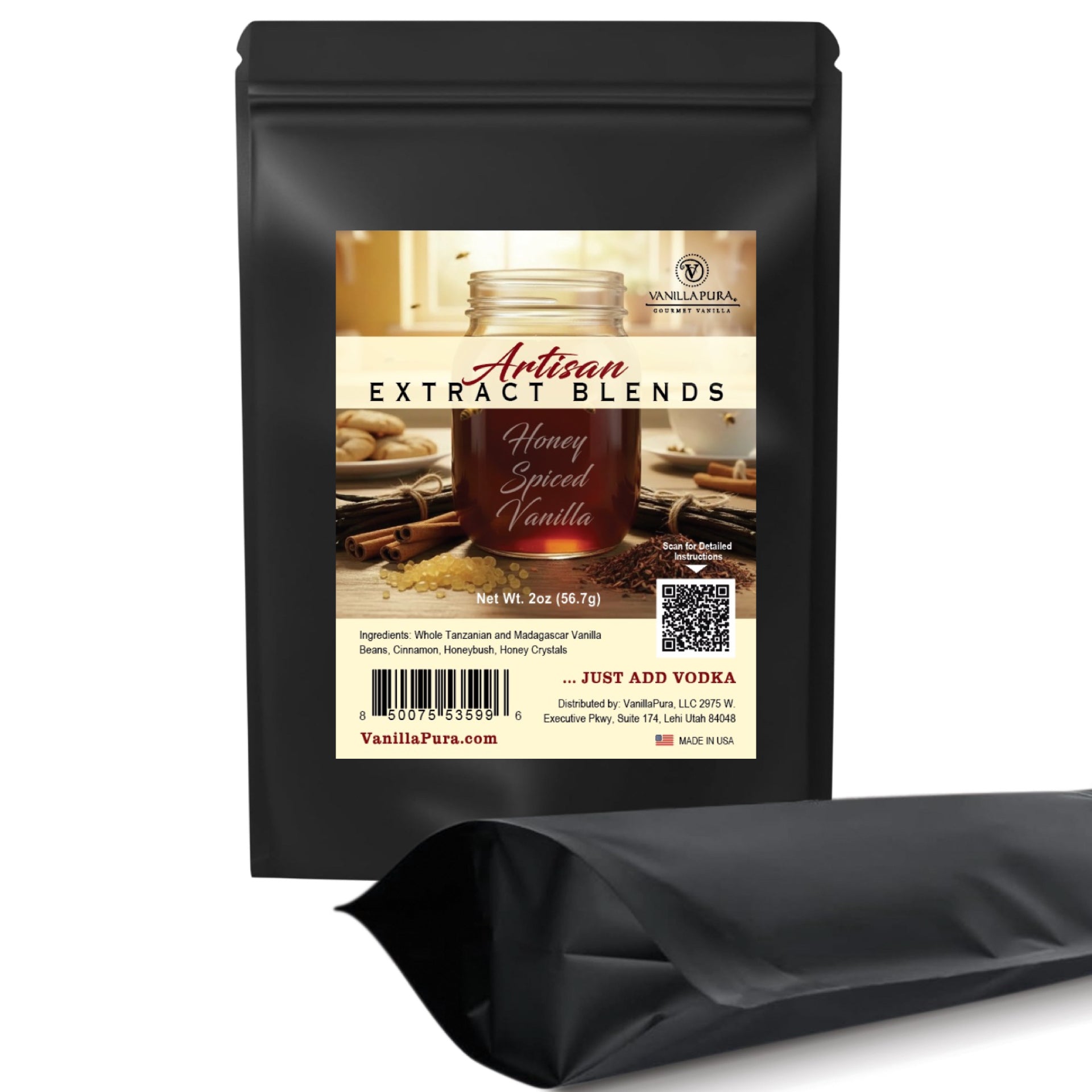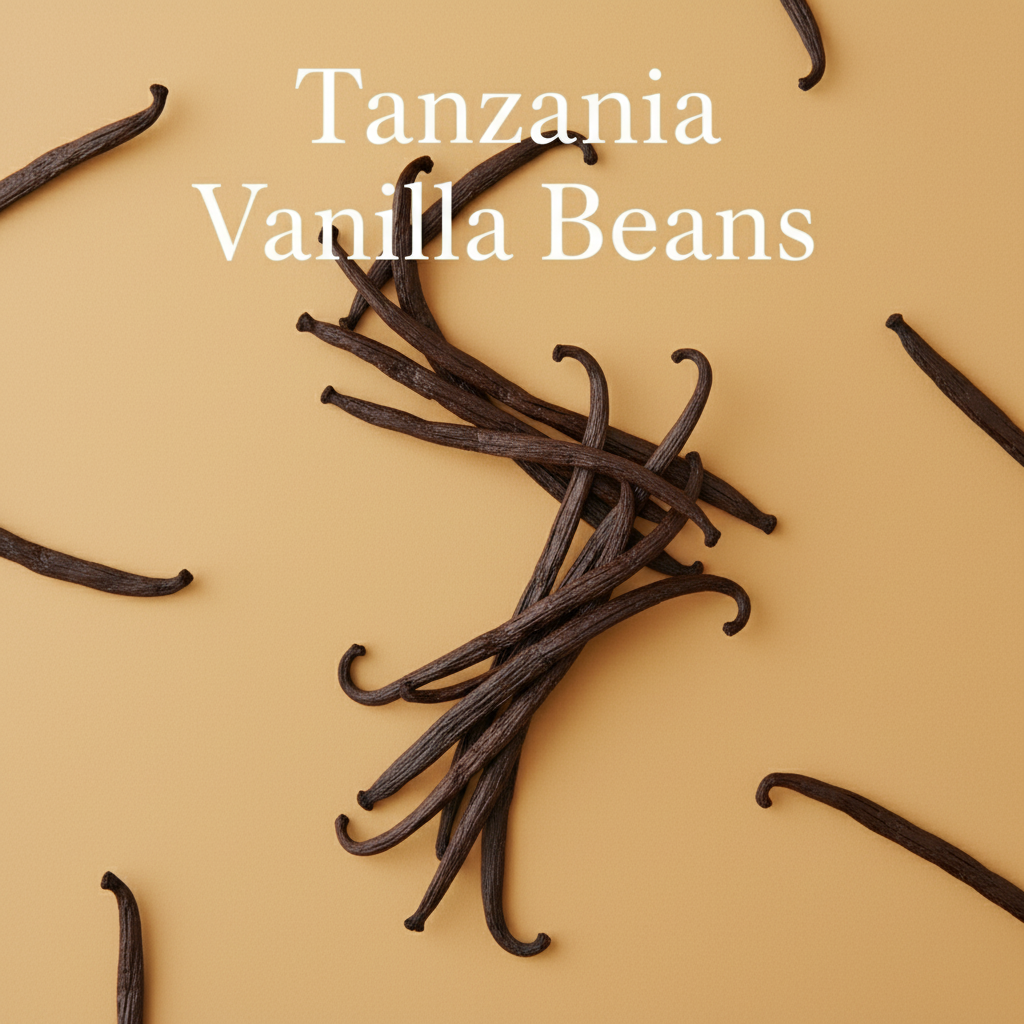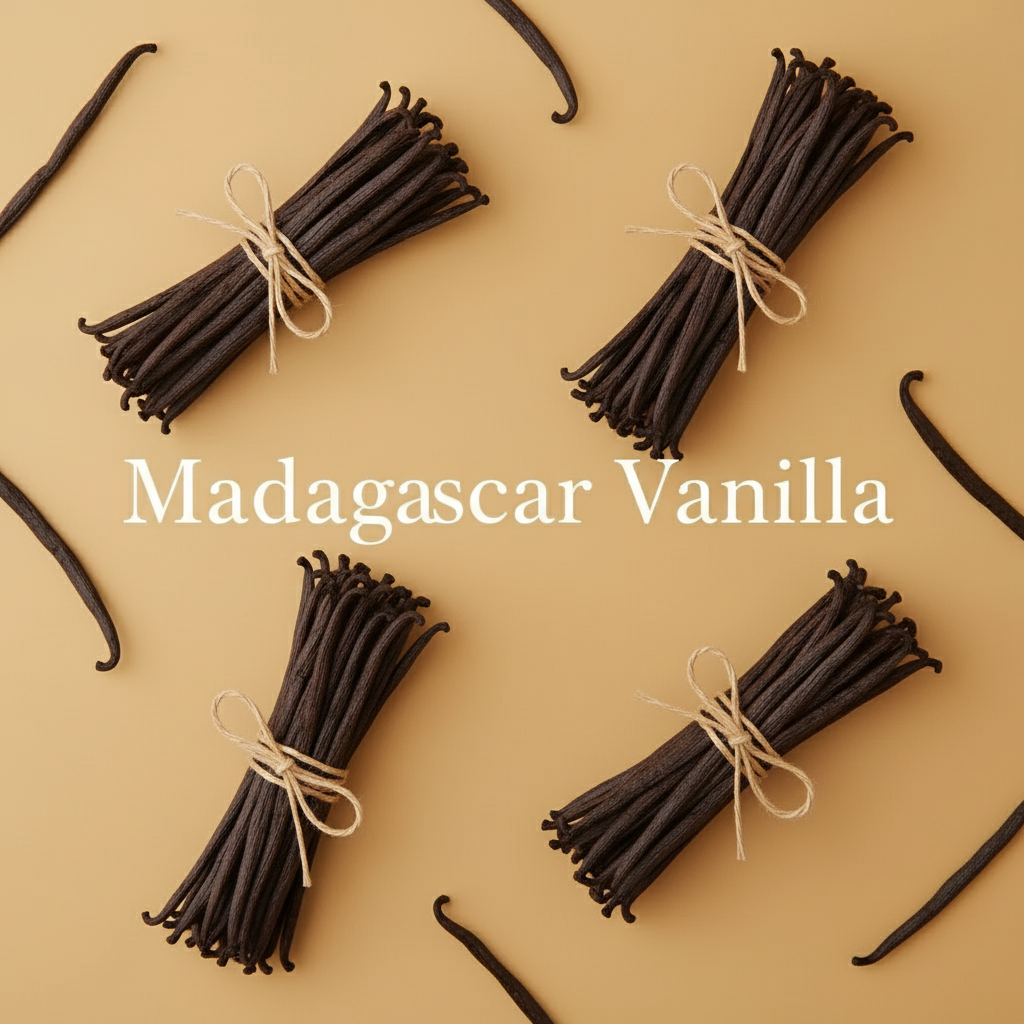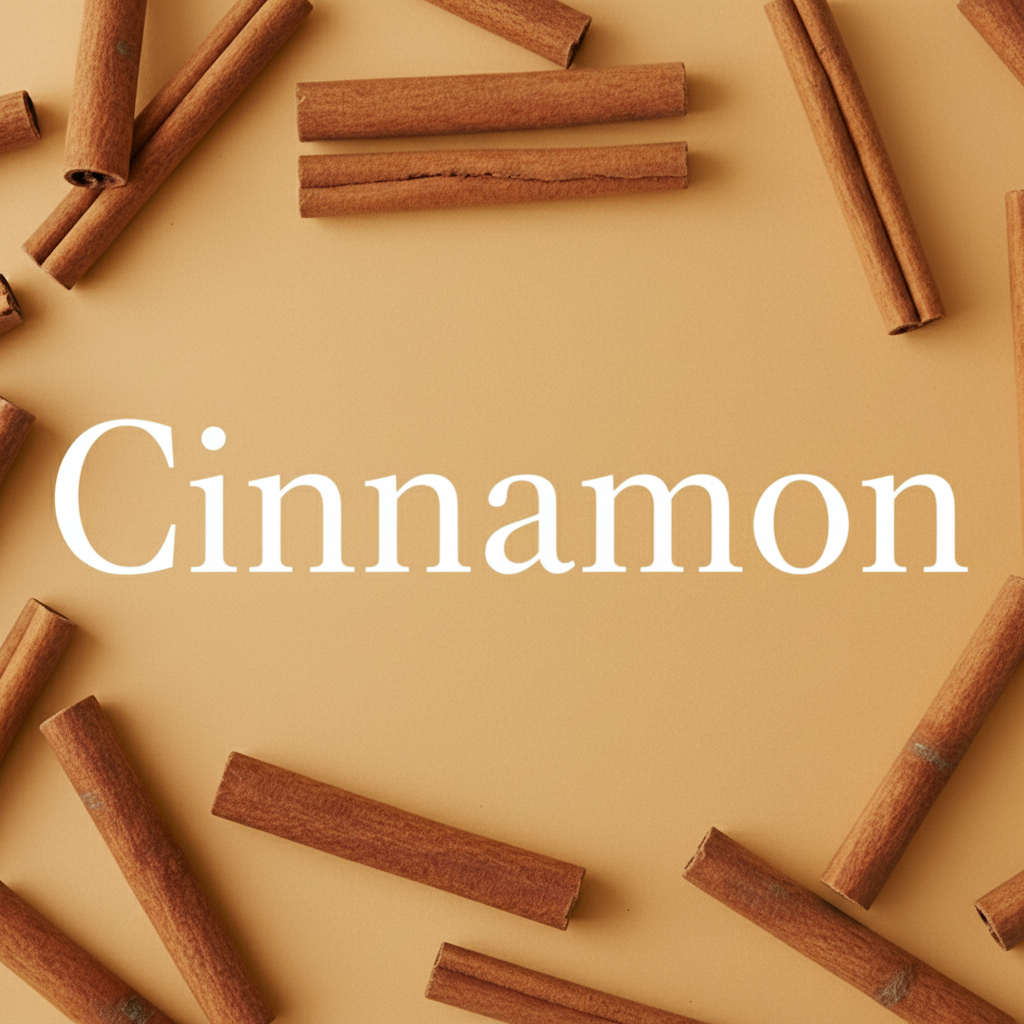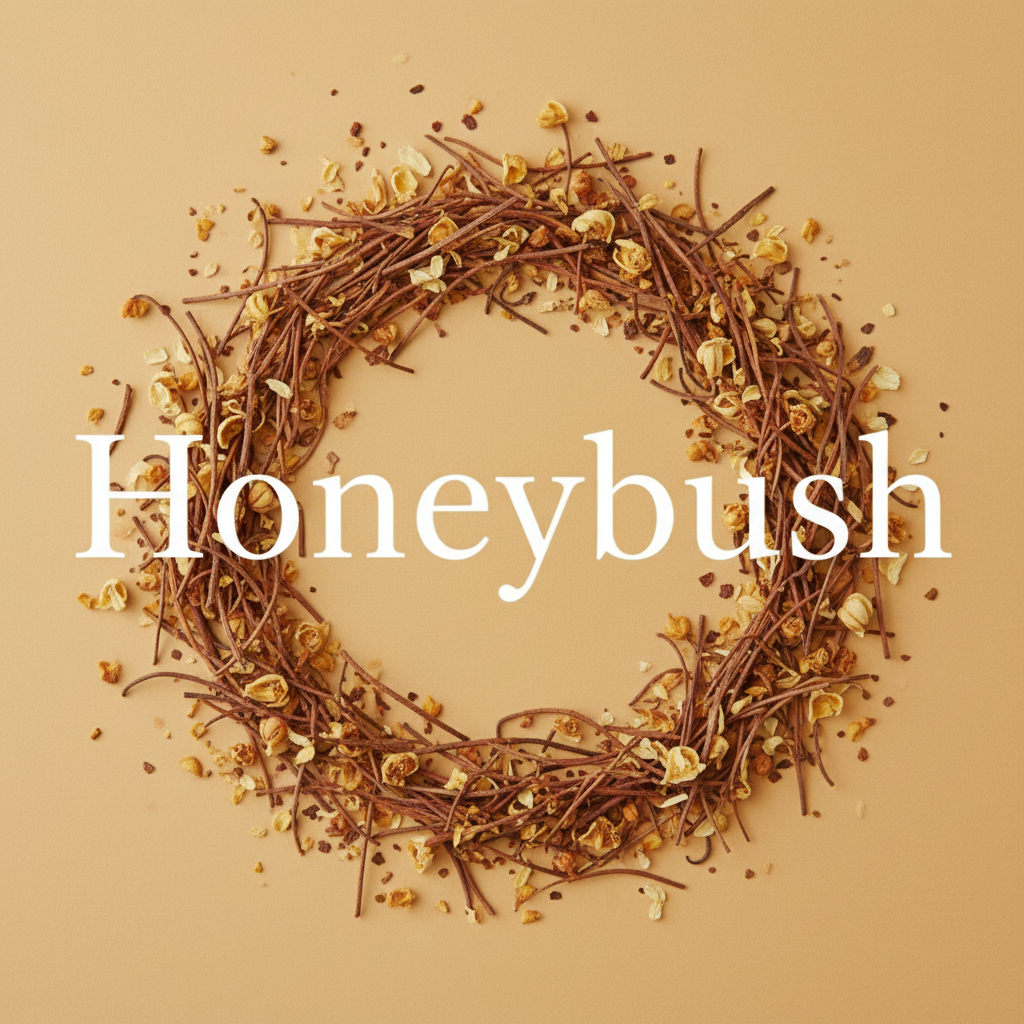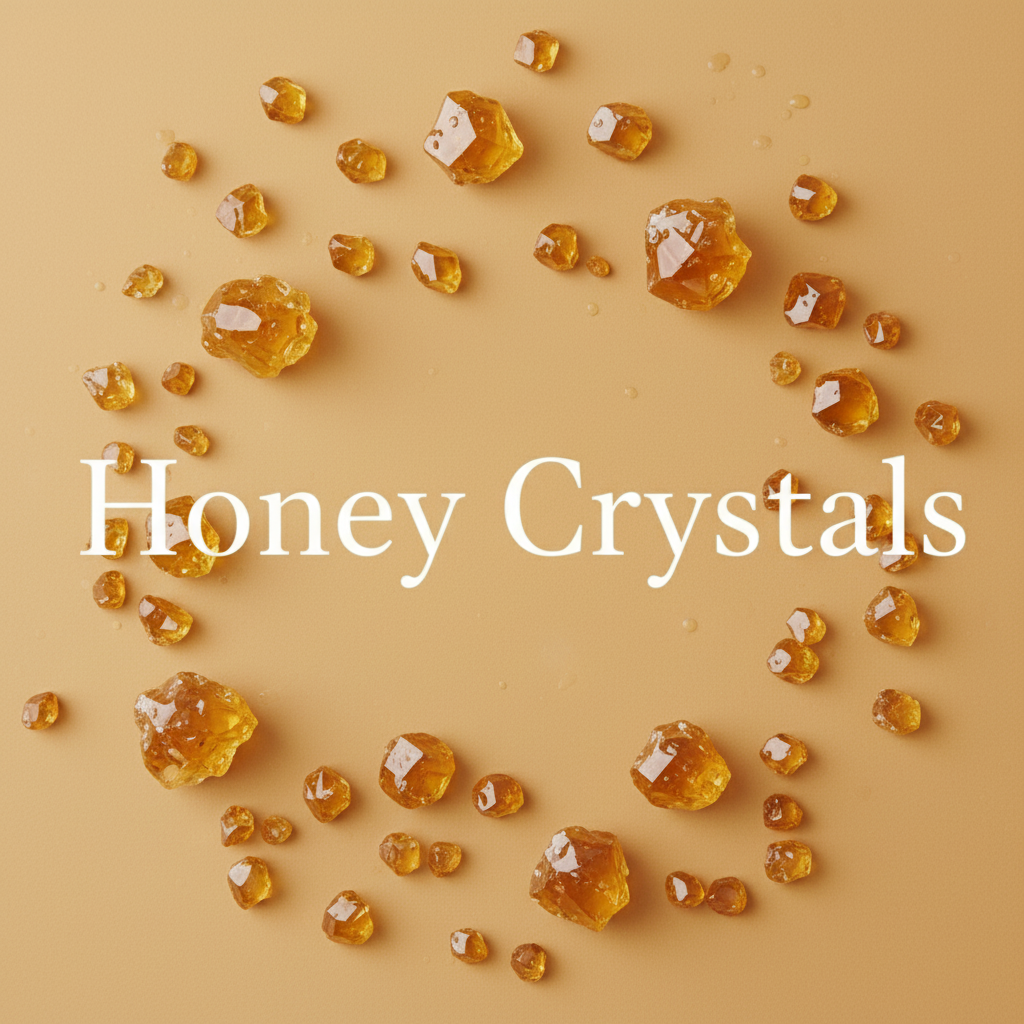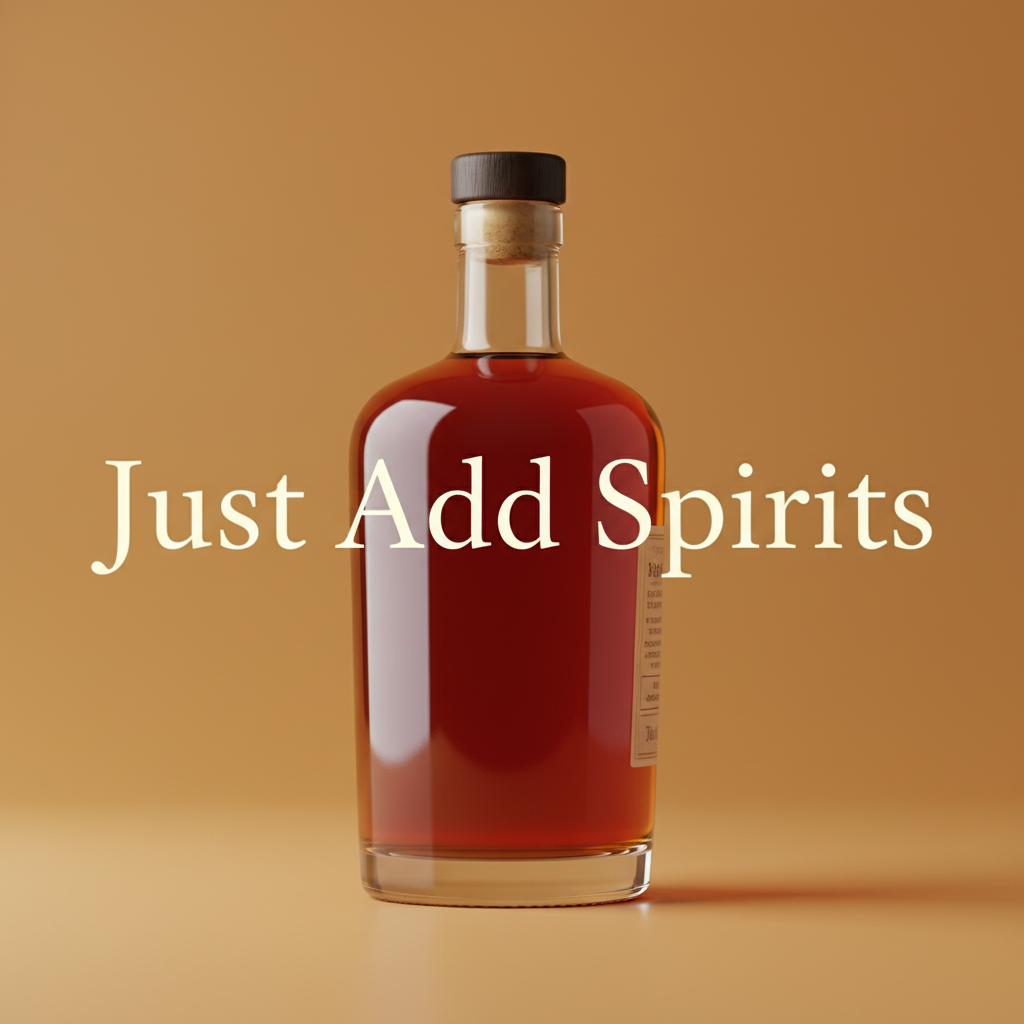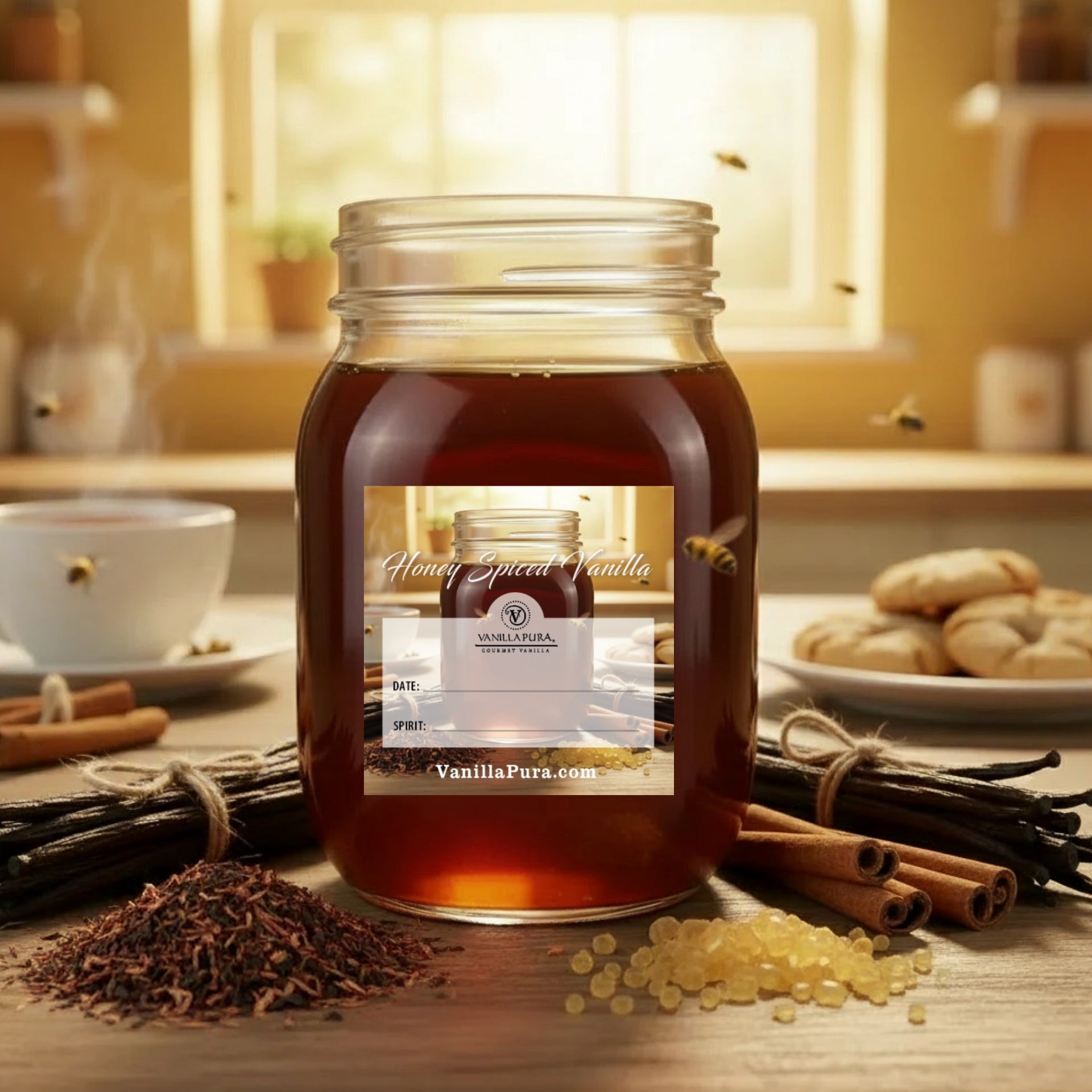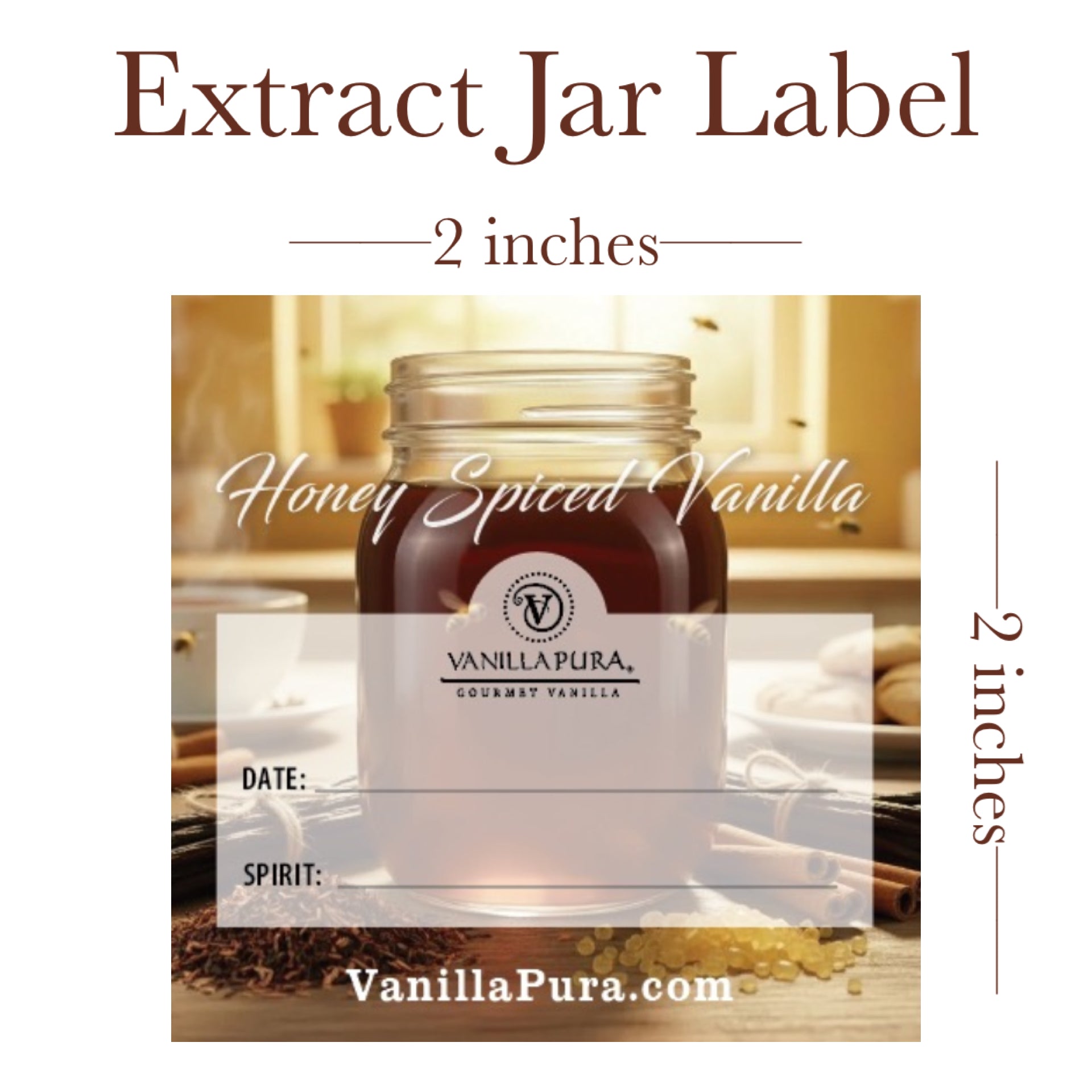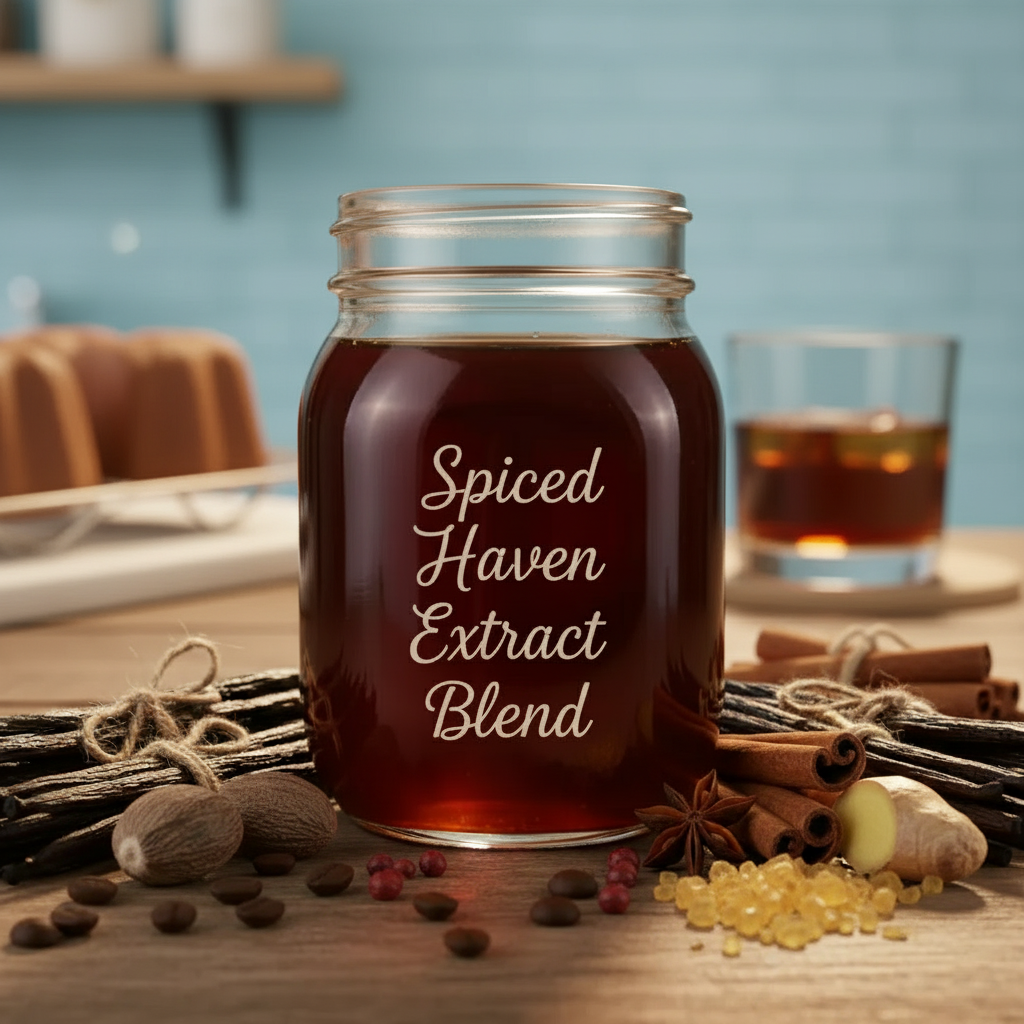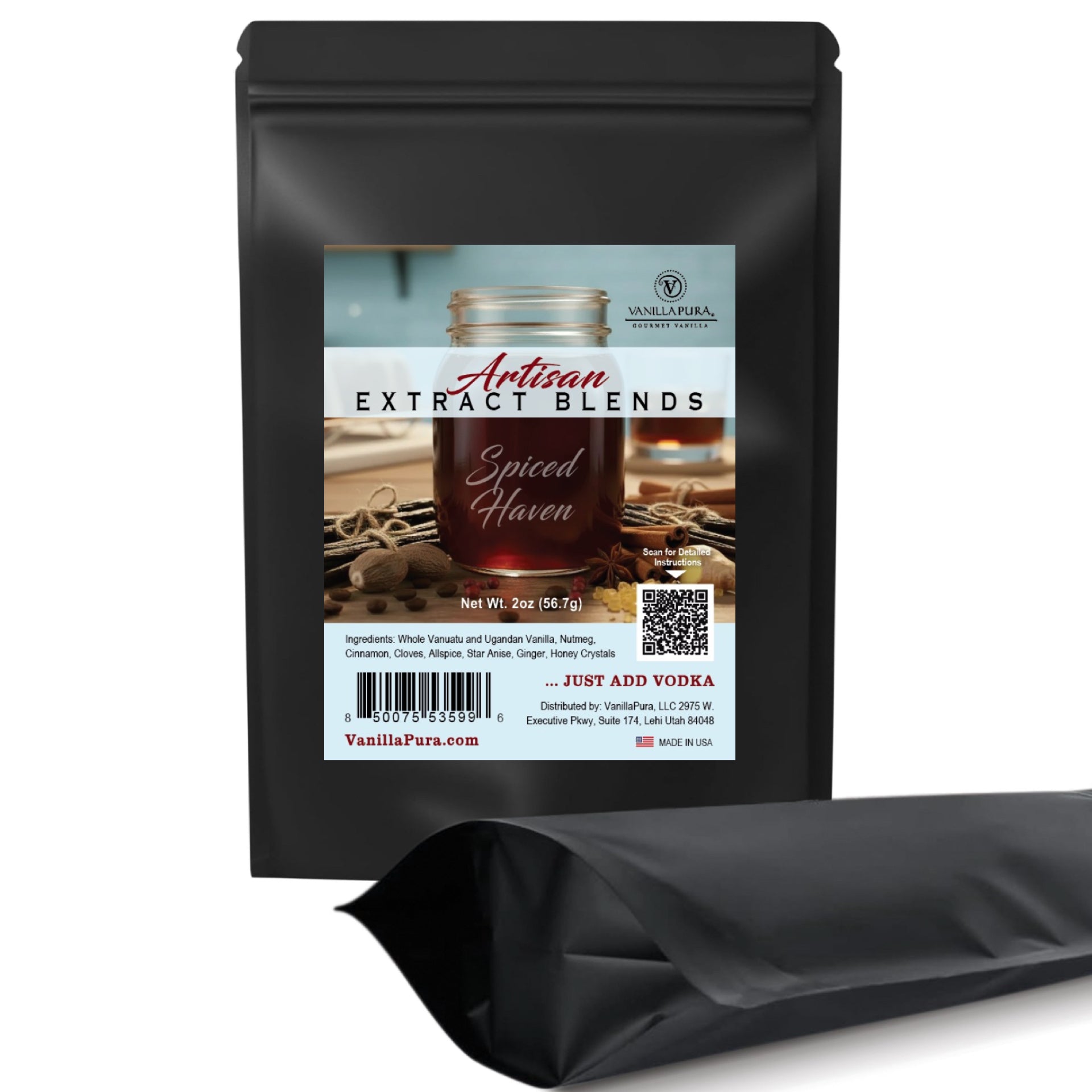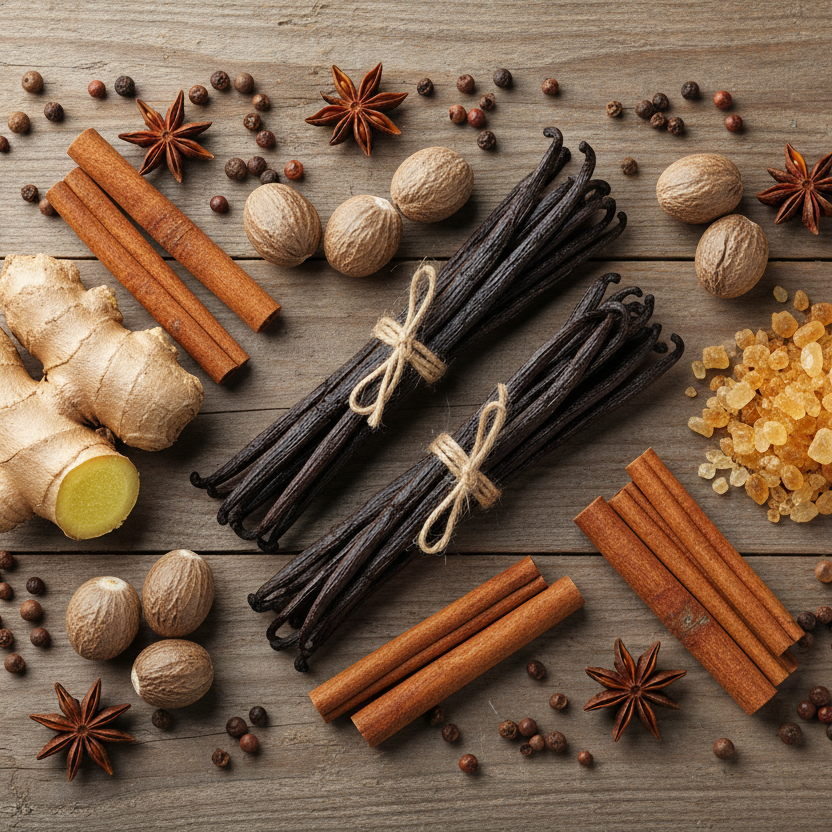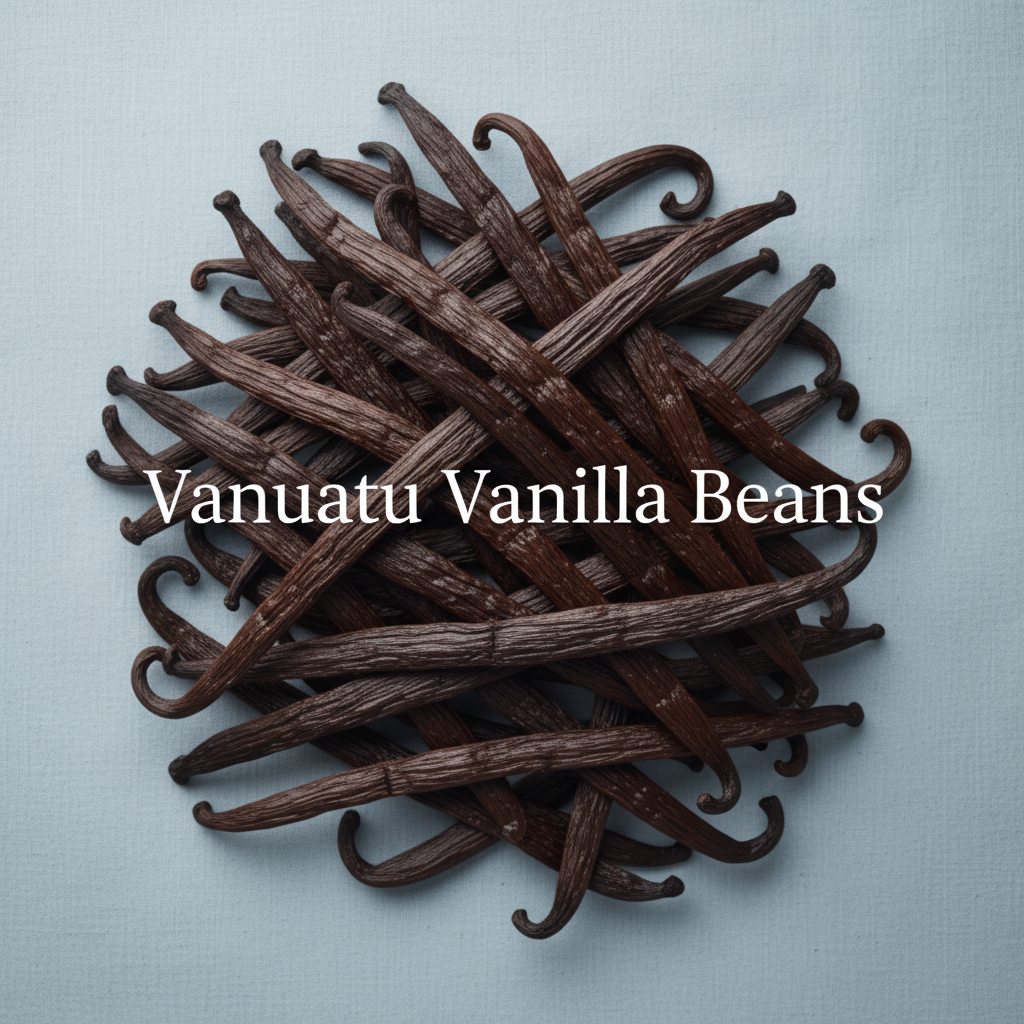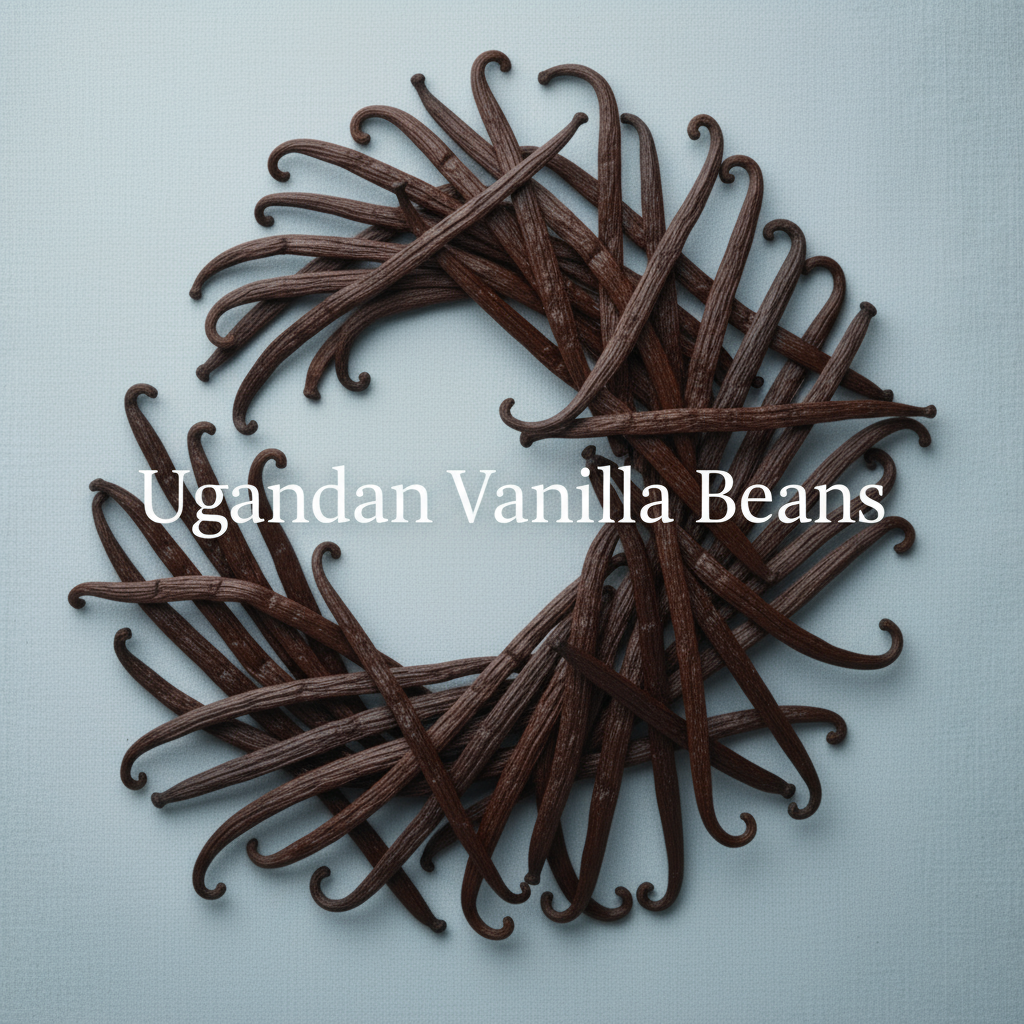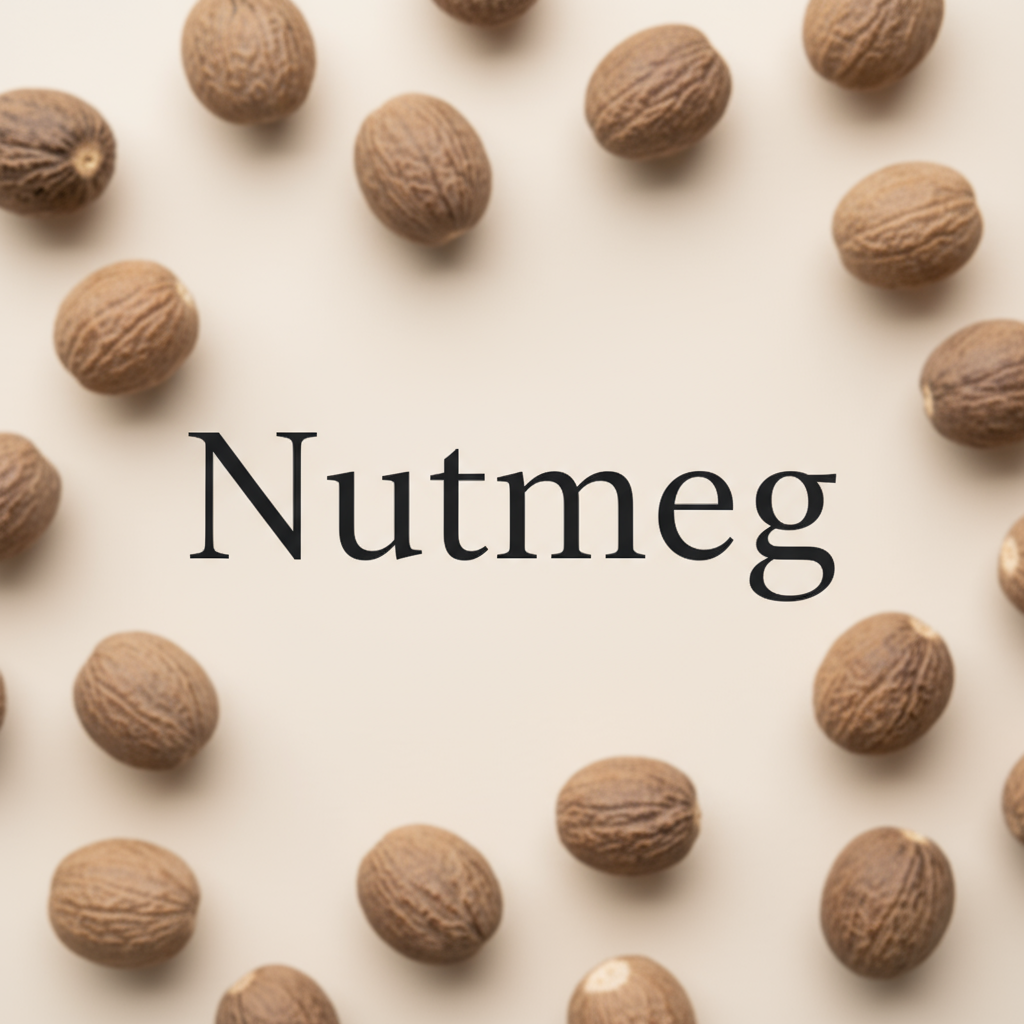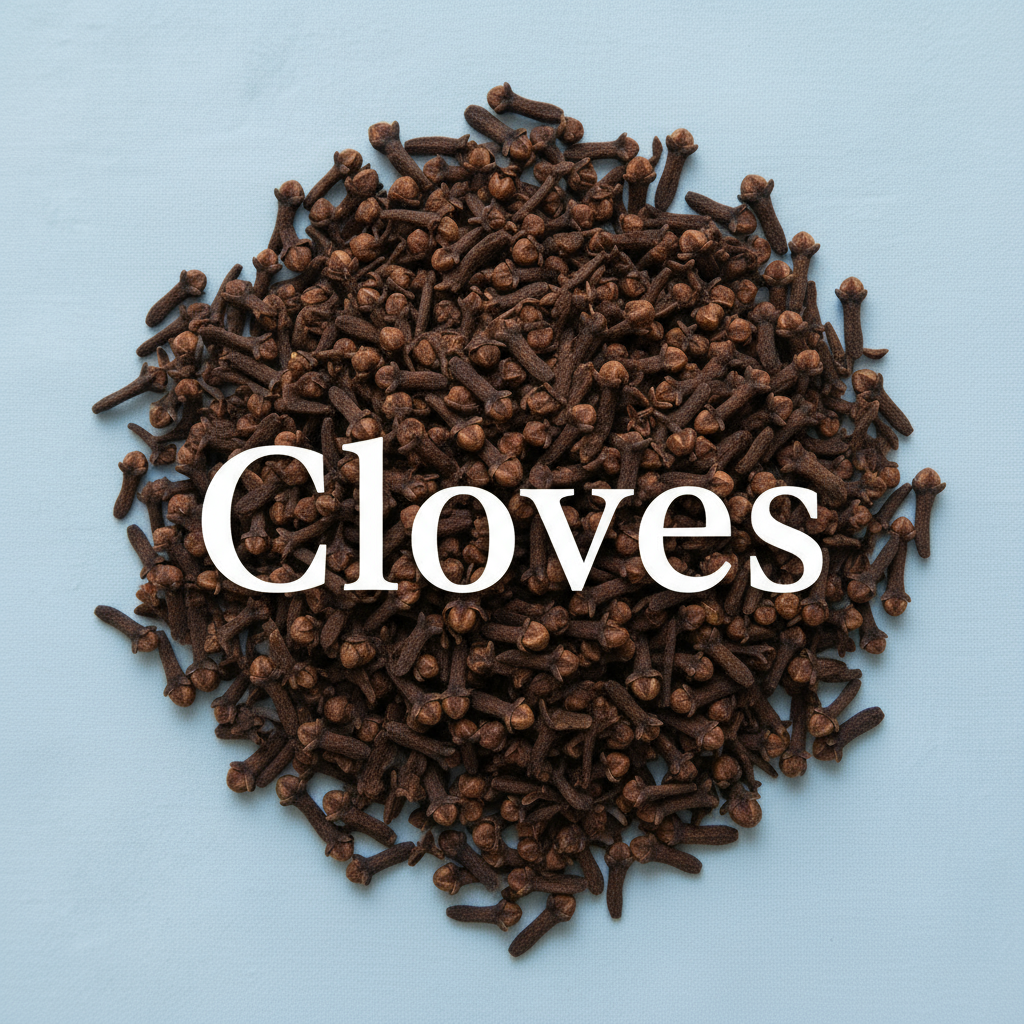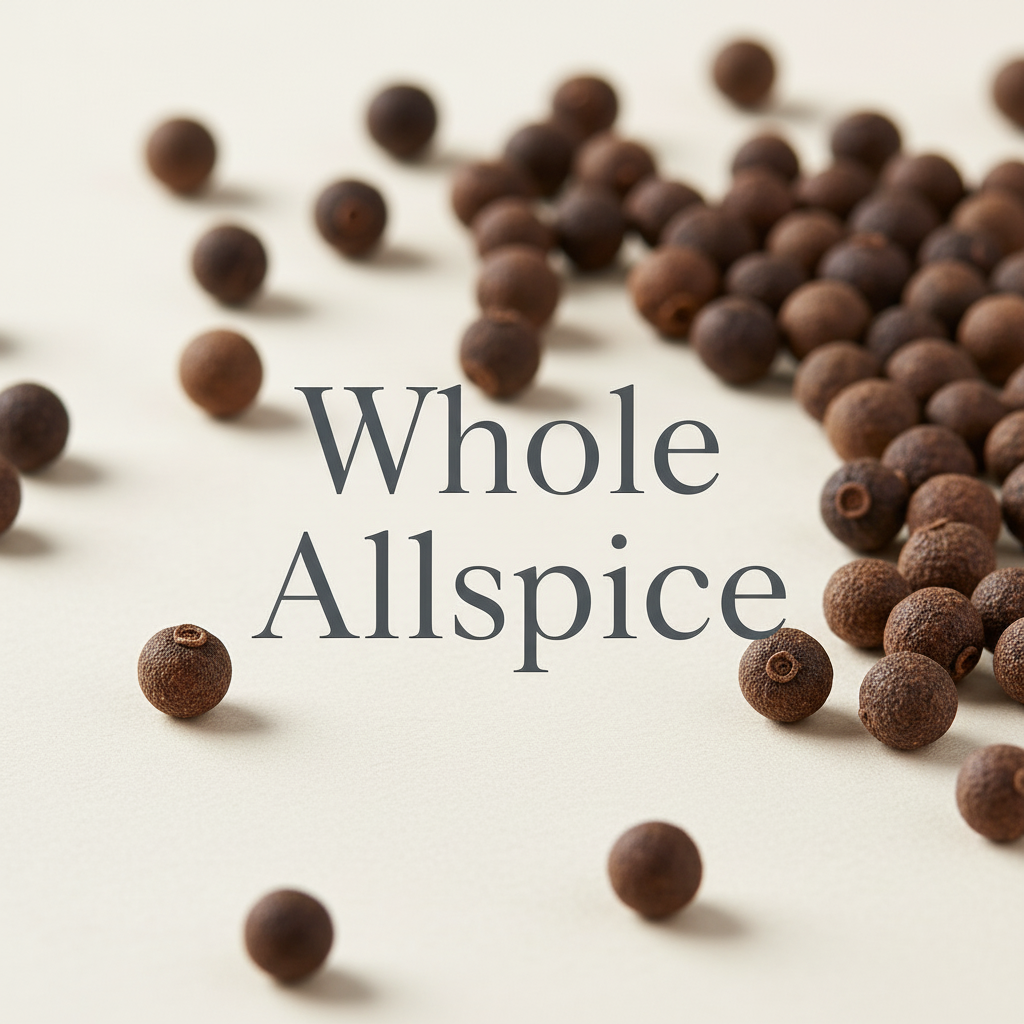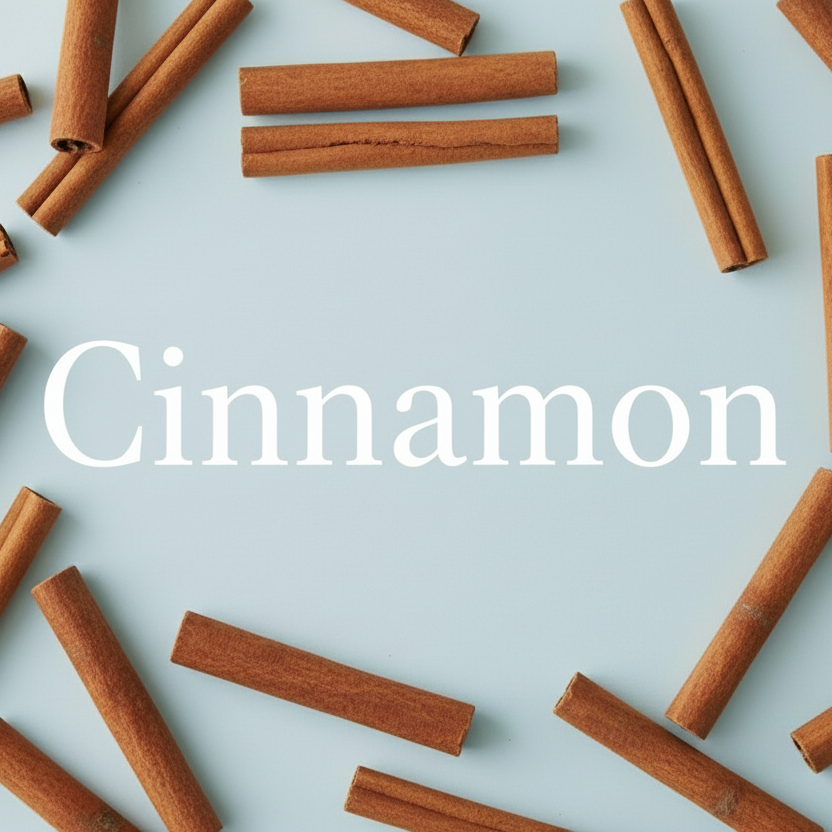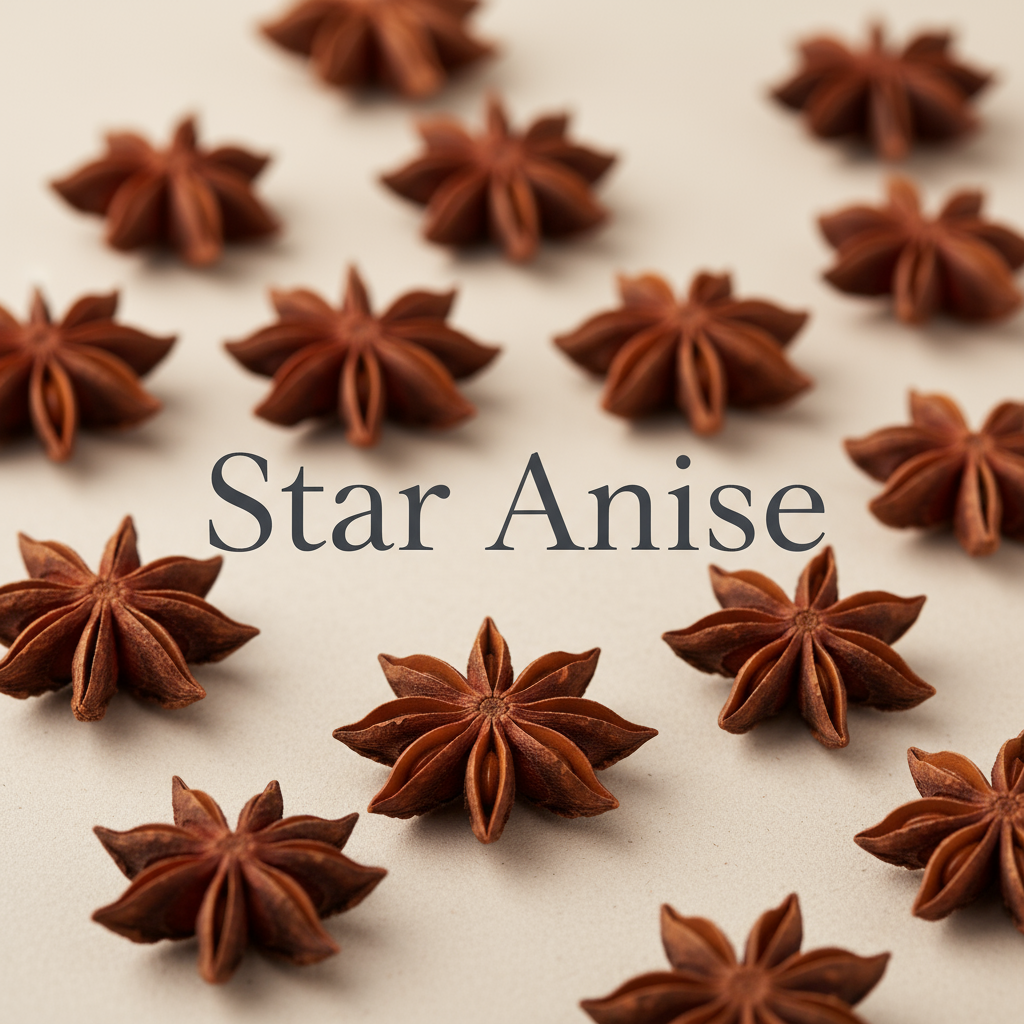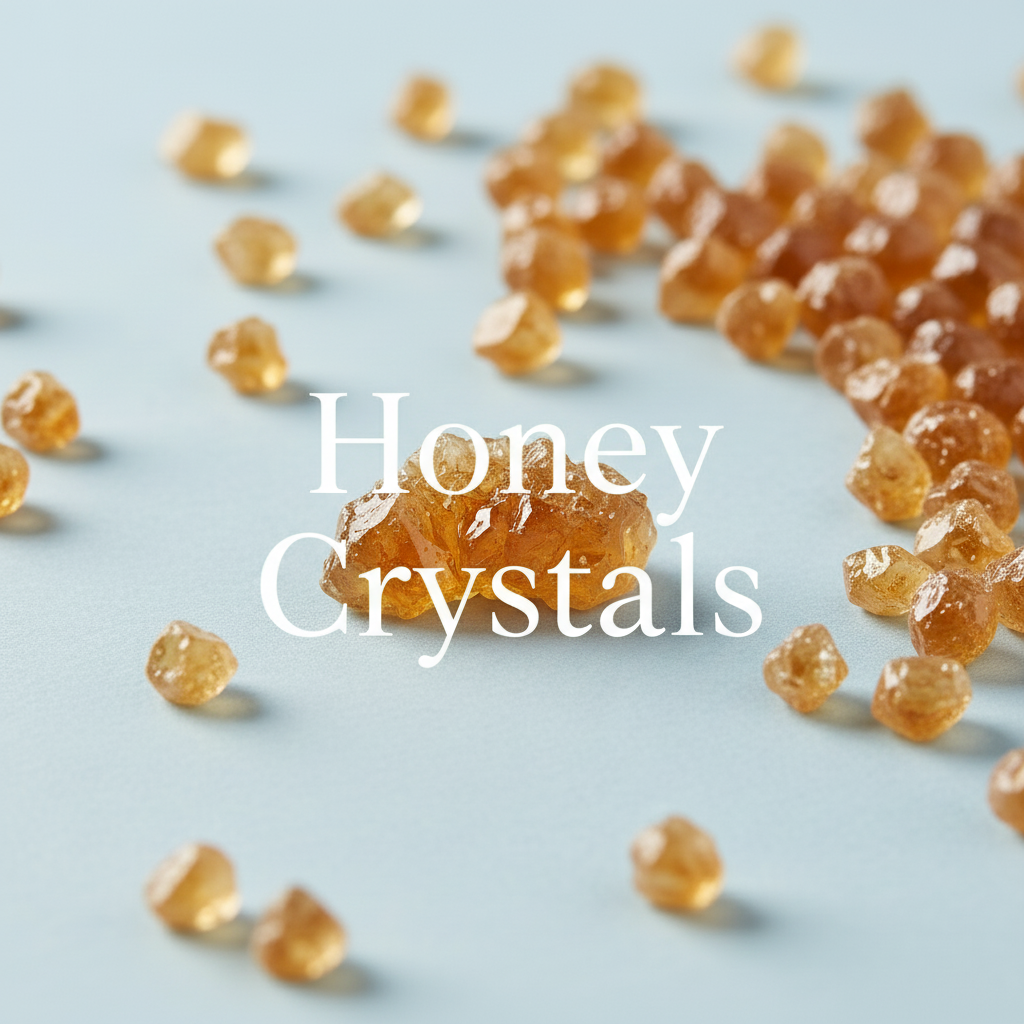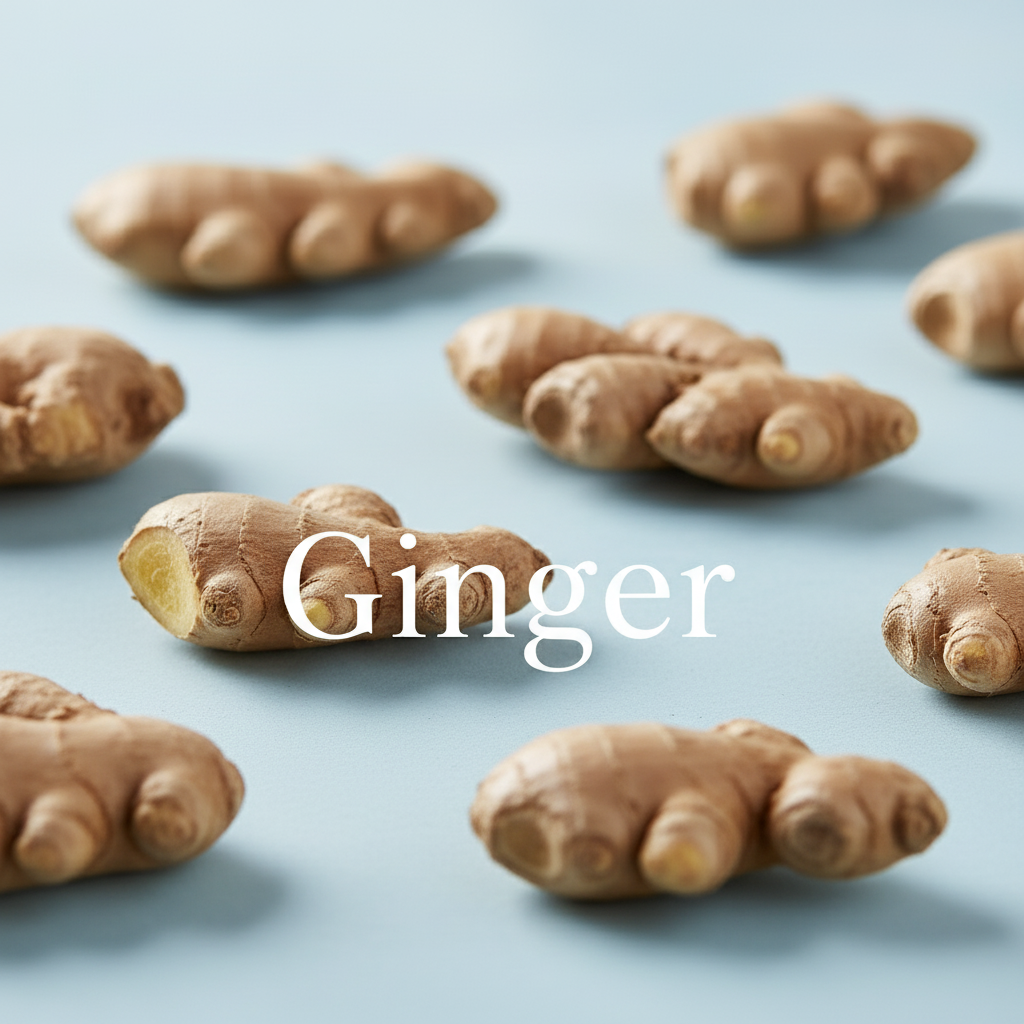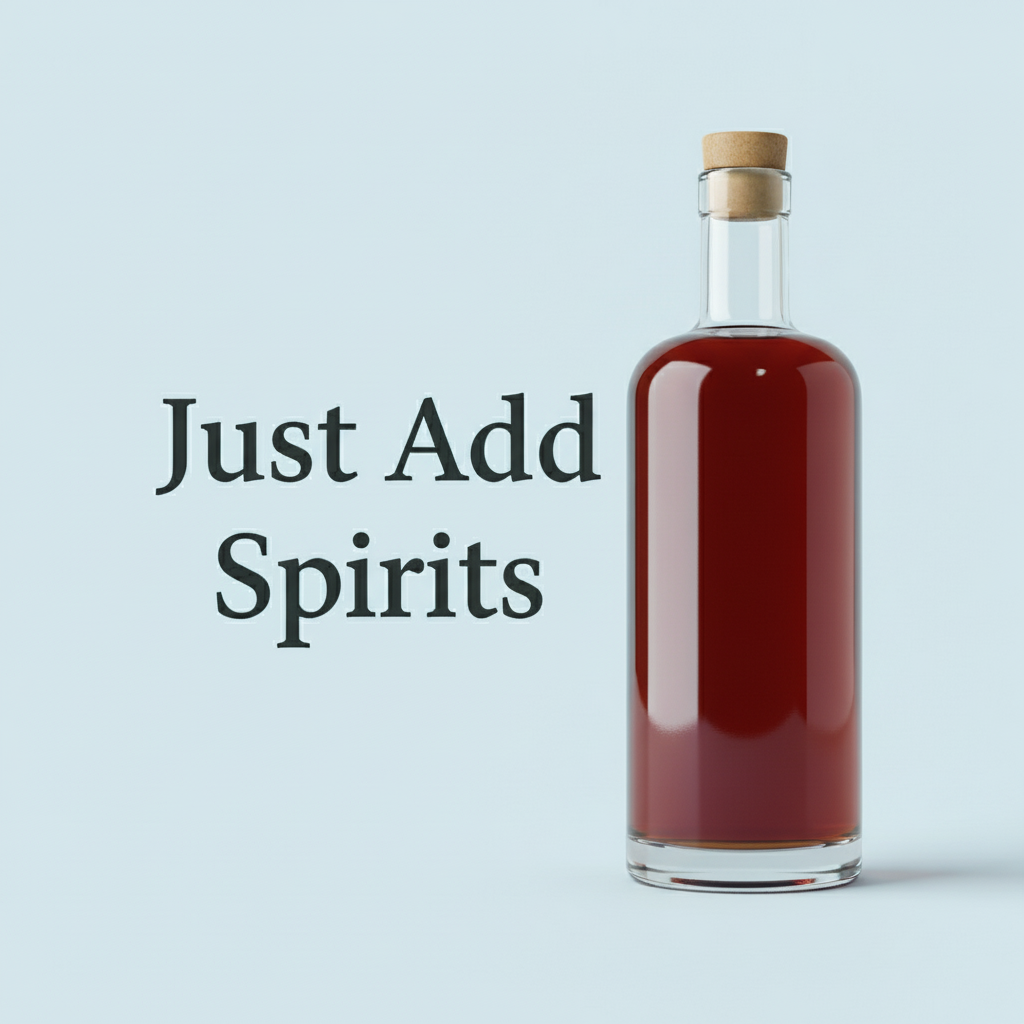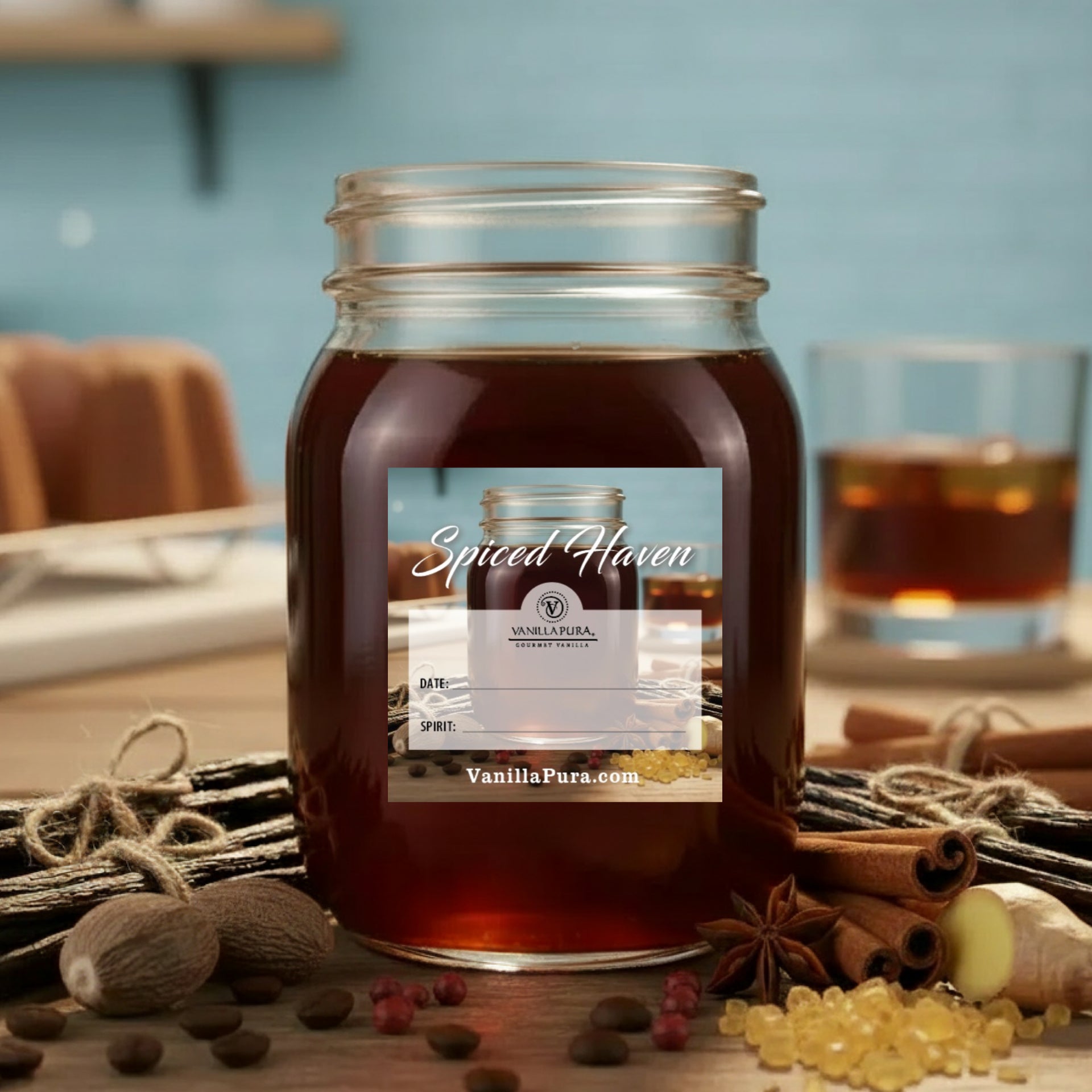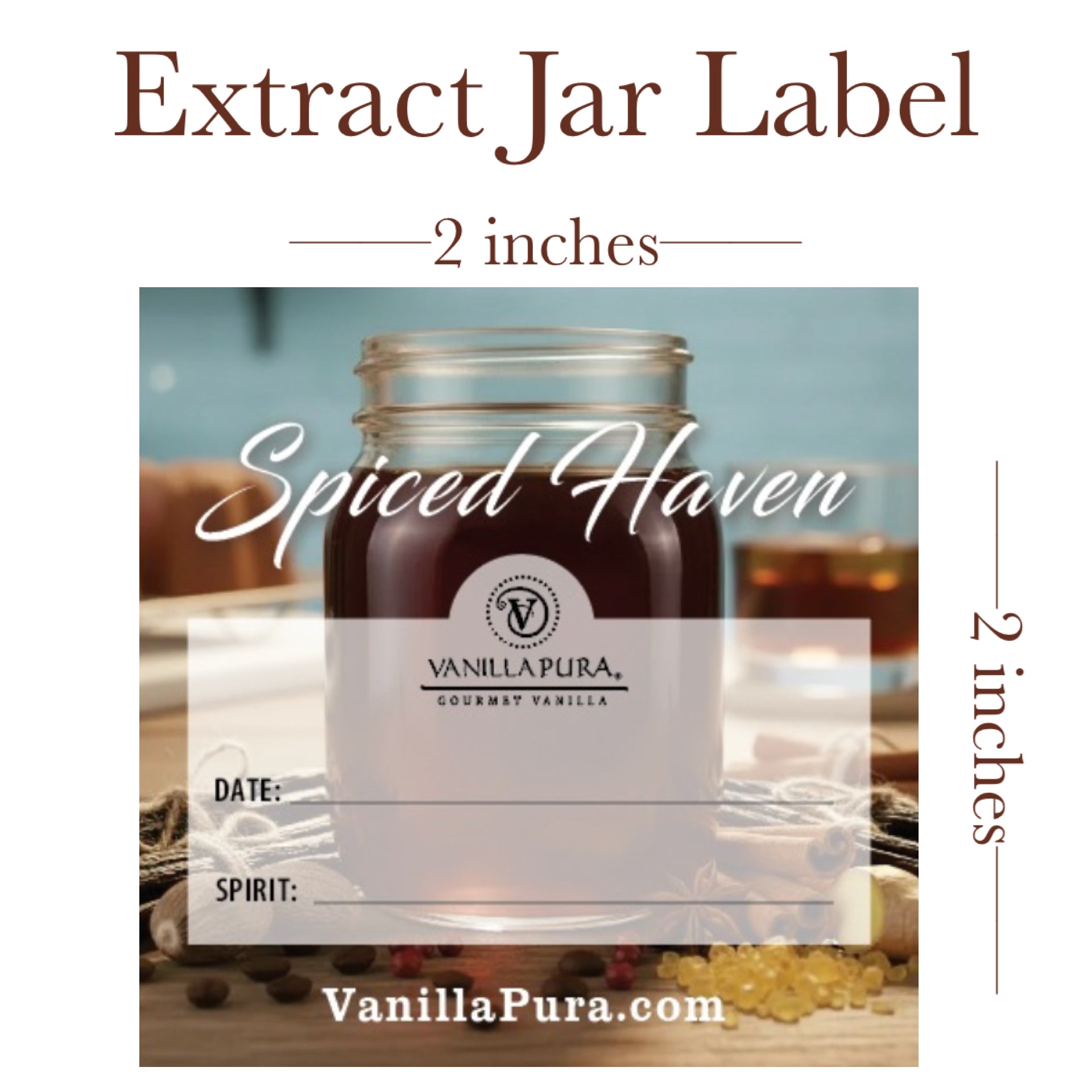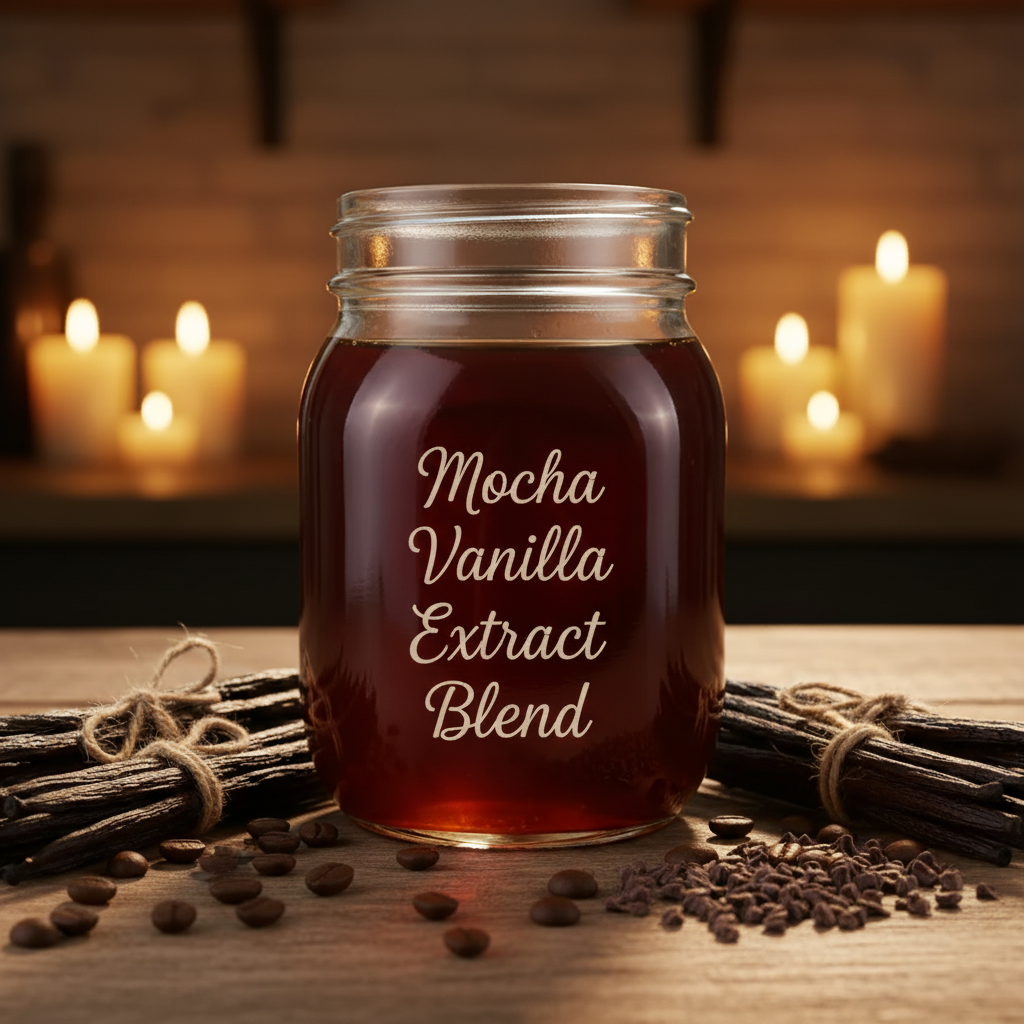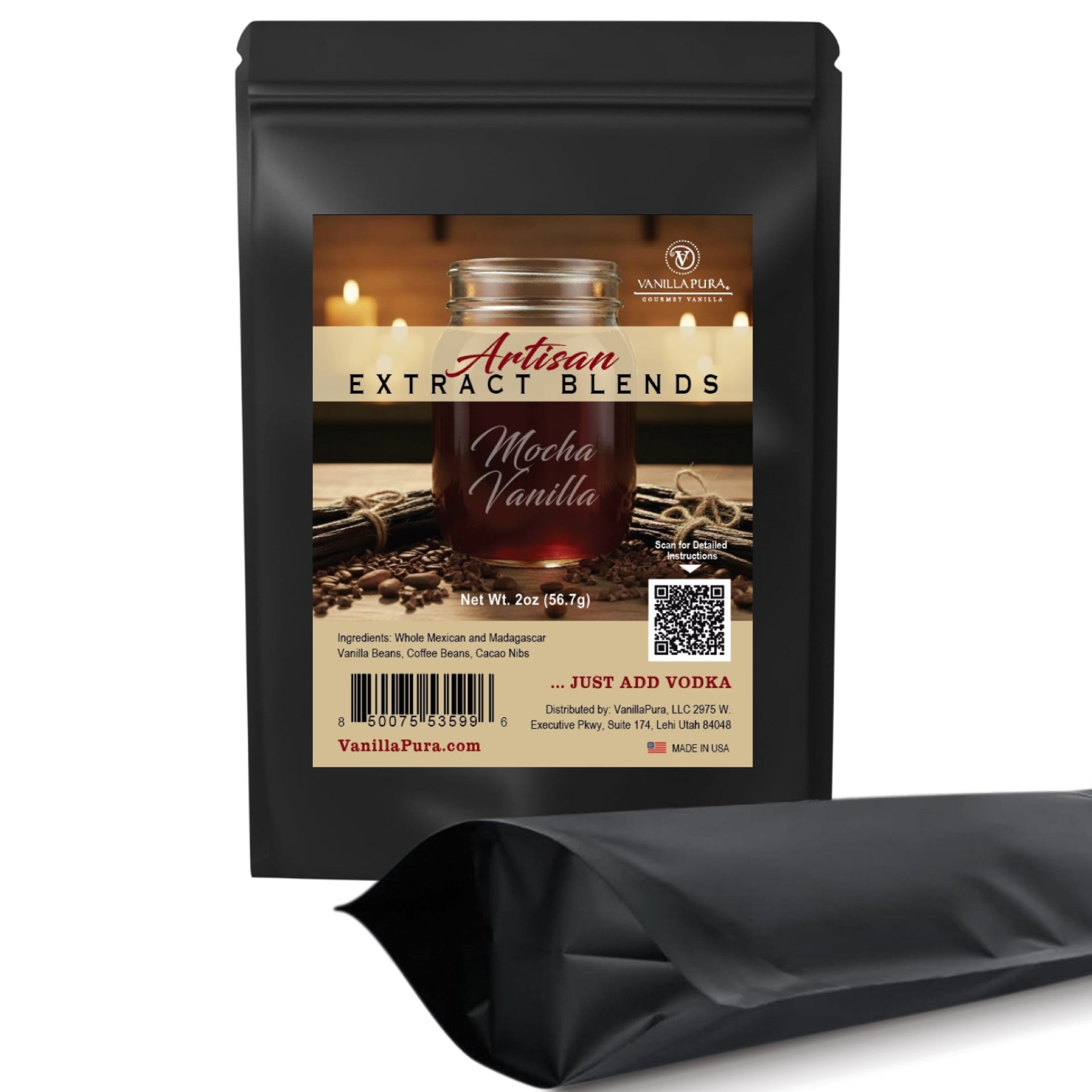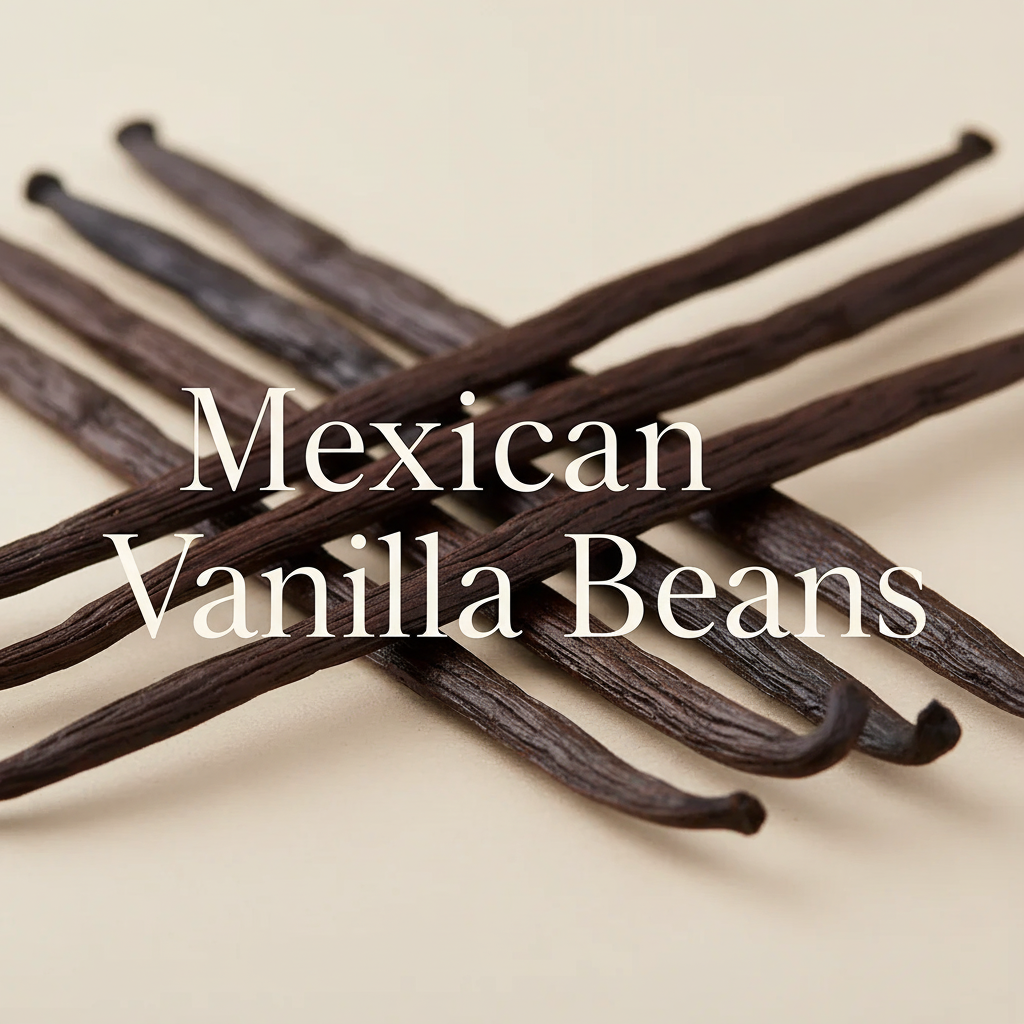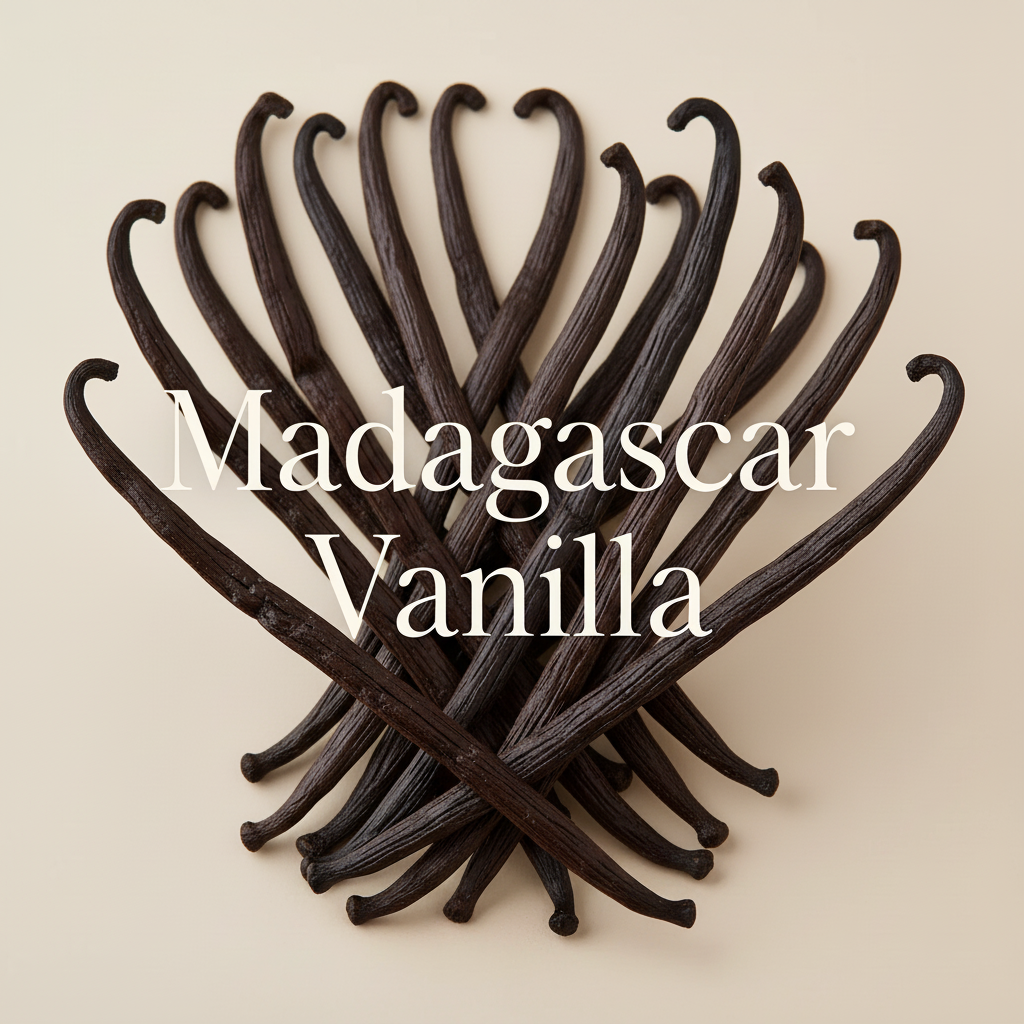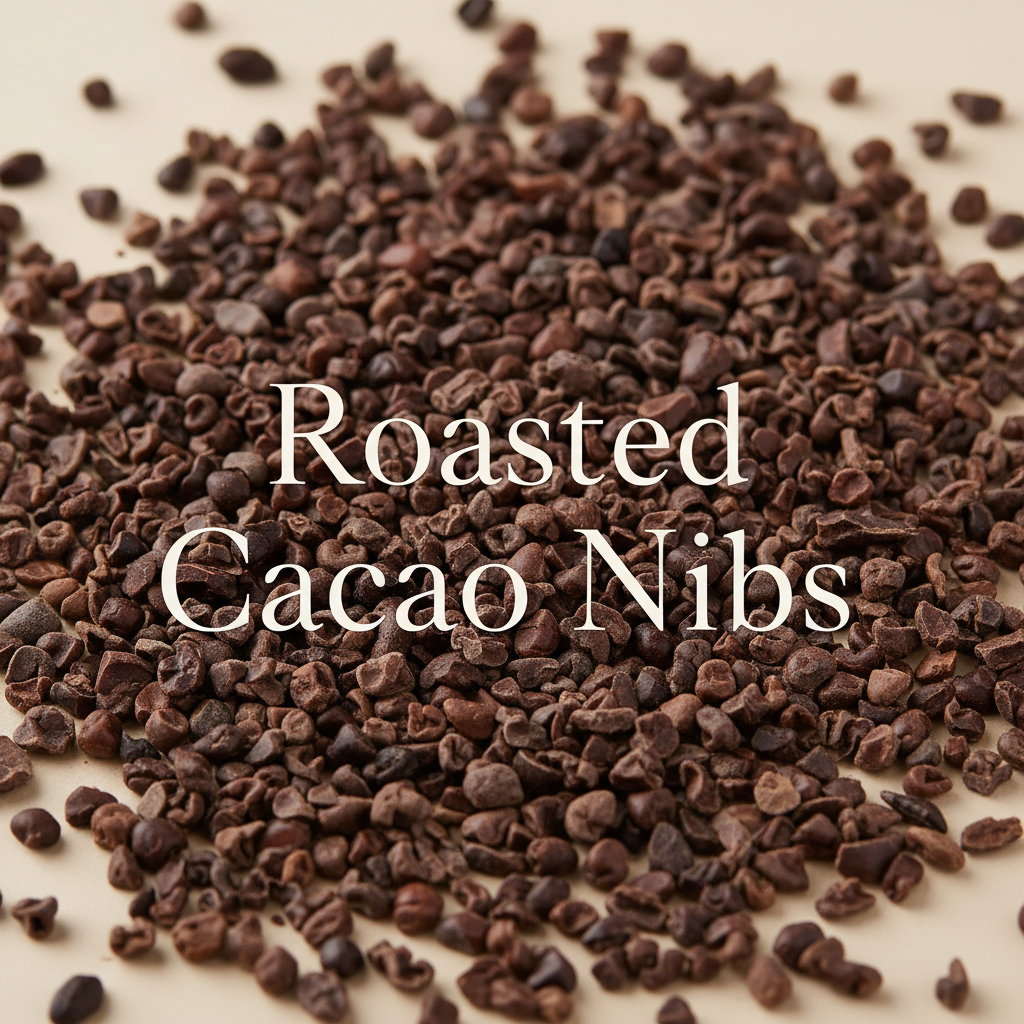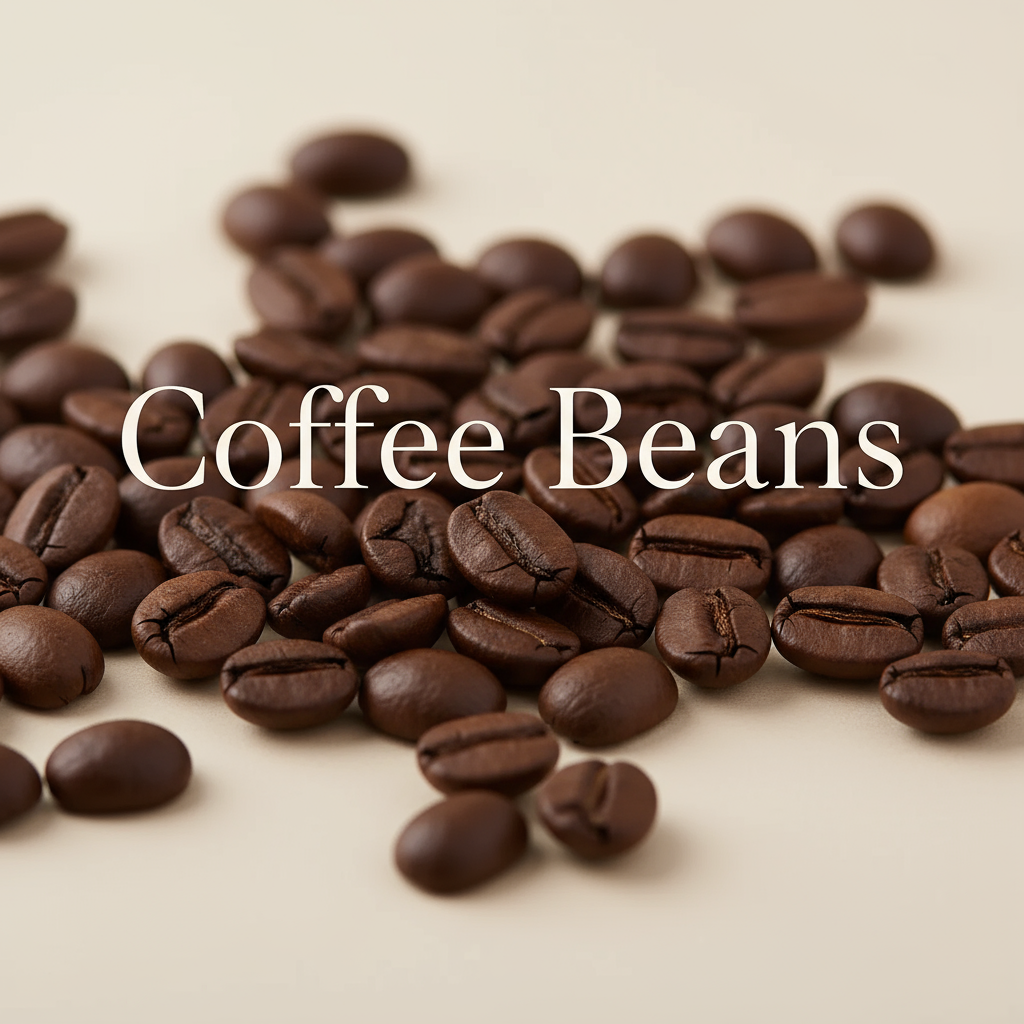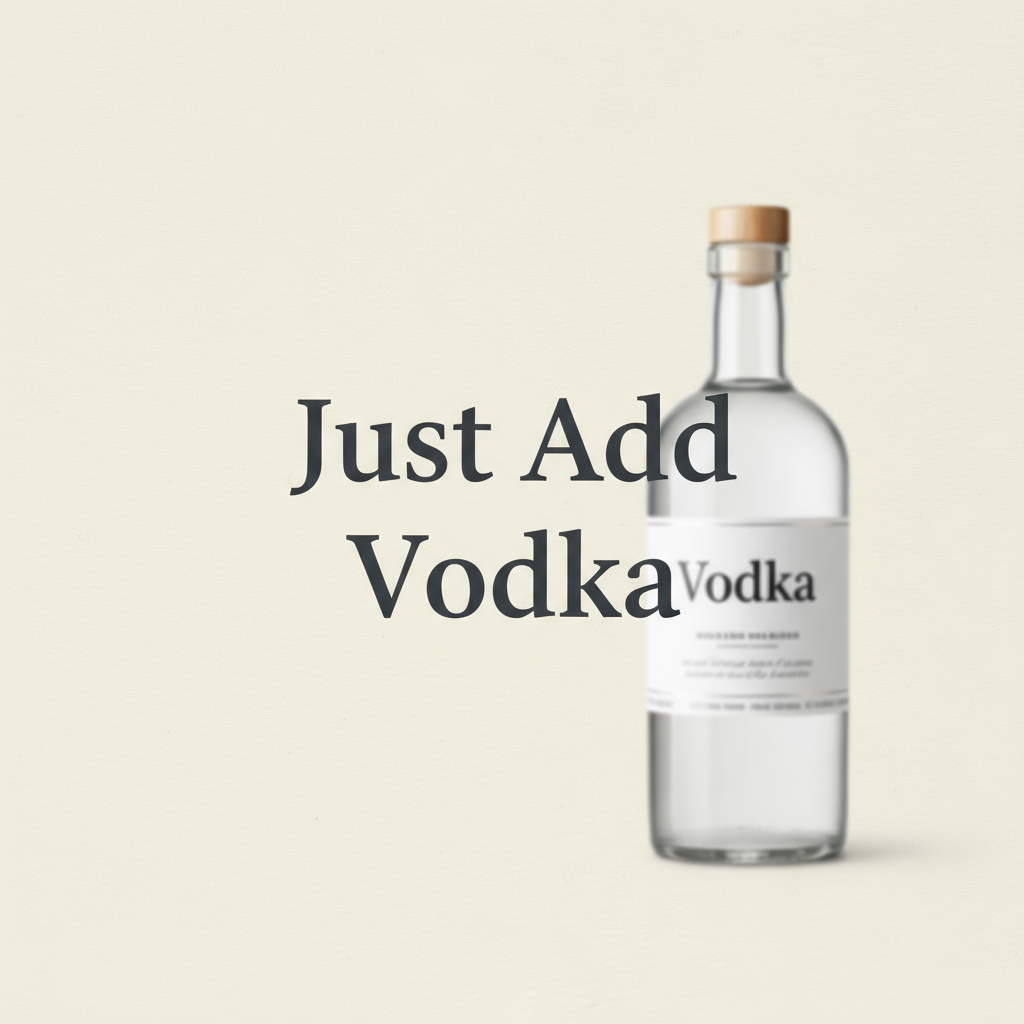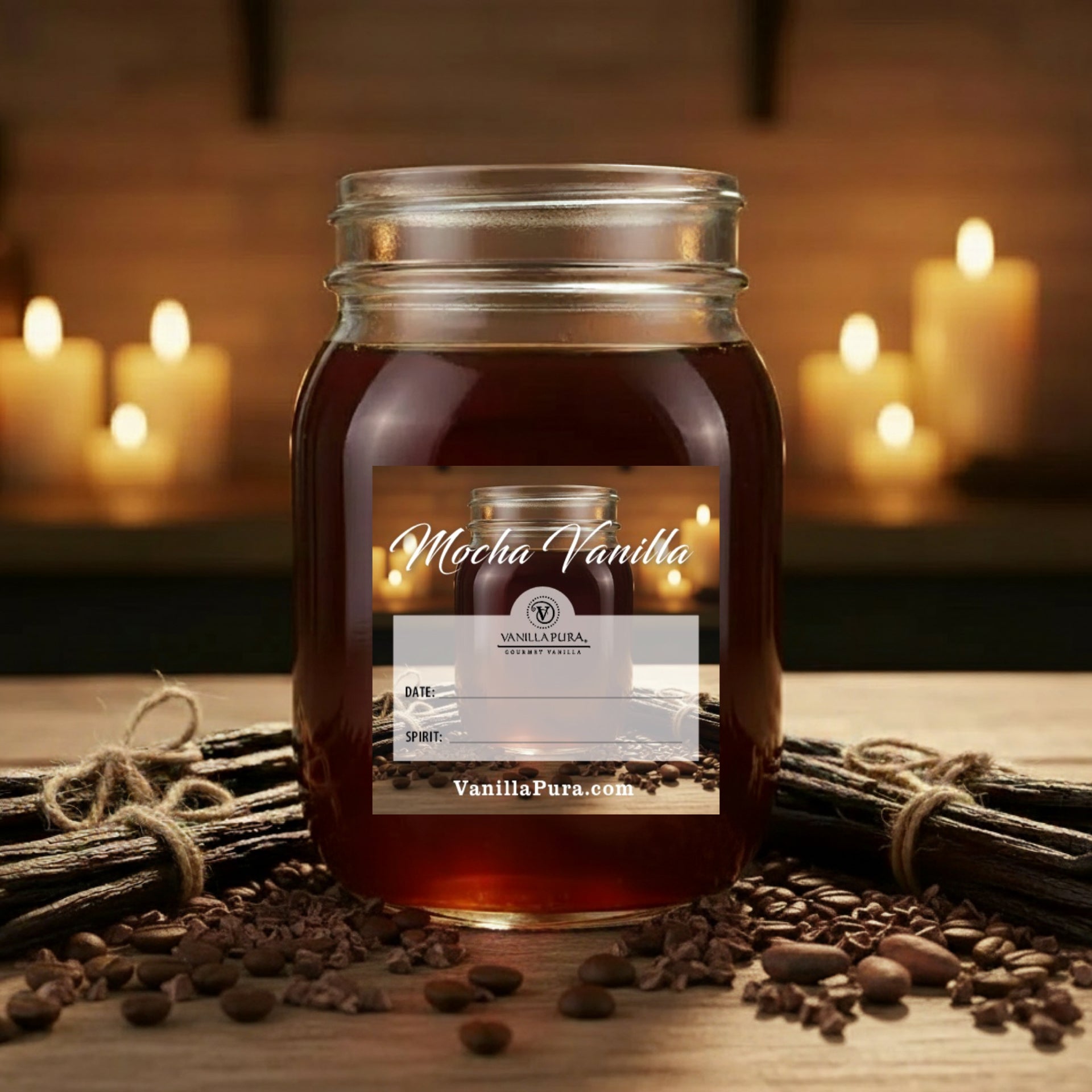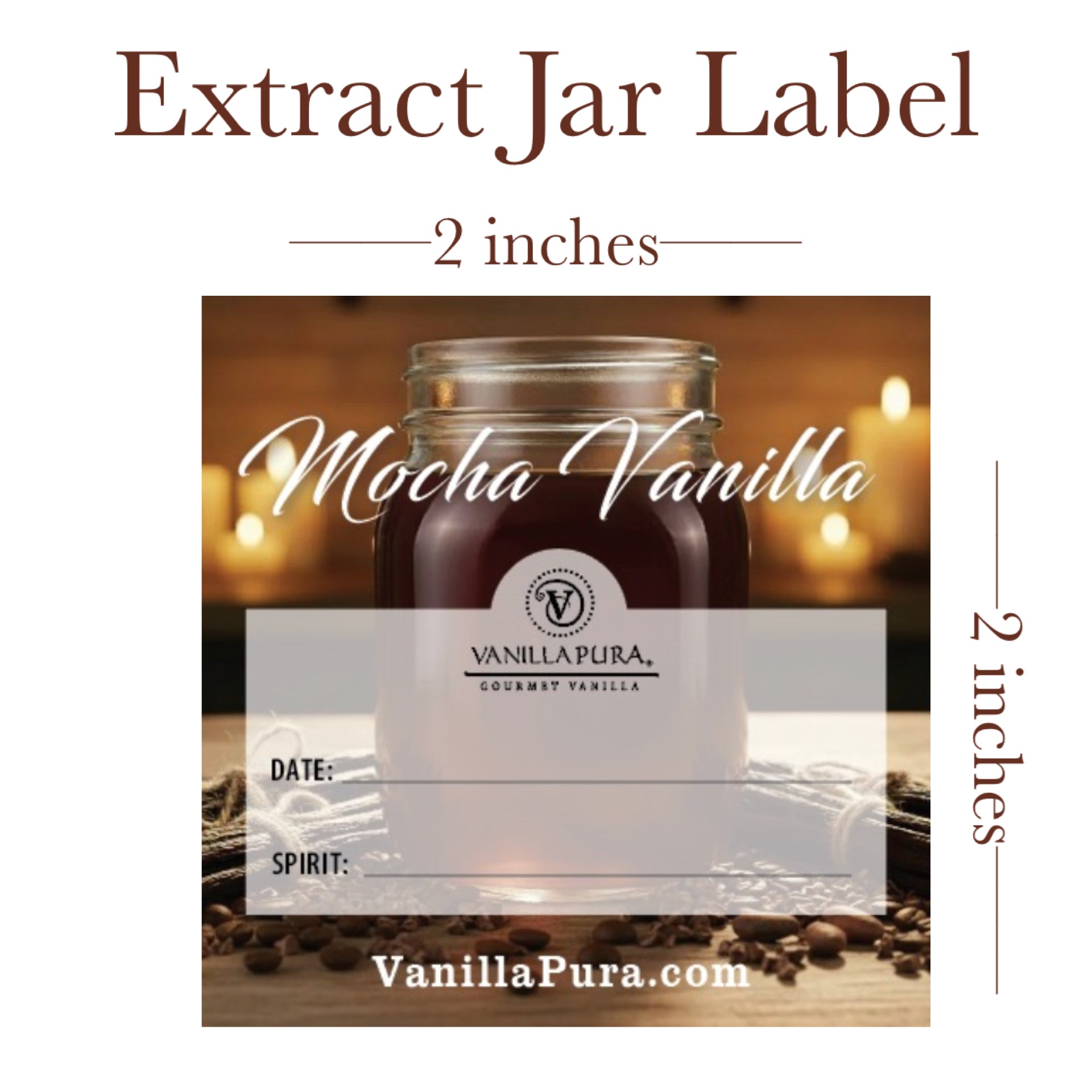Vanilla Extract Spirit Review
Let's talk about the alcohol that you can use in vanilla extract making for a few minutes. This is a question that we receive quite often. "What is the best spirit to use and why?"
In the paragraphs below we will review specific brands of spirits in these categories:
- Rum
- Bourbon
- Vodka
- Tequila
- Cognac/Brandy
We talk about this generally in another article about using different spirits for extract making, but we want to get even more specific here. We are going to talk about specific brands of alcohol that we have tried and the different outcomes we have experienced. Vanilla Extract making is all about trial and error, and we have tried and failed a LOT in our experience and we're starting to get pretty good at getting it right.
First of all, if you are new to extract making, we recommend that you begin with multiple samples. Why? Because it takes up to a year to make extract and, after waiting a year, you only have one extract to try. If there is something that you don't like about it, you will need to wait another year to try another single version. So, start with 5 or 6 (or maybe more!) smaller bottles. You can then try a few different beans and a few different spirits, so in a year you will have multiple results to compare all at once.
In short, if you are new to extract making, then your first job is to create an extract tasting experience up to a year after you begin. The more you taste at once, the more you will be able to determine what you like and for what application.
We will be looking at several spirits below. We grade each spirit based on its vanilla taste after extraction and its ability to be used across multiple applications.
Click any of the links below to learn more about each spirit.
Remember: When selecting your spirit, "Pure Vanilla Extract" must always be made with a minimum 35% alcohol, so you need to buy 70 proof spirits (or greater than 70 proof) to maximize vanilla bean extraction. In our experience you should not exceed 50% alcohol, or 100 proof, as it will damage your vanilla beans.
Rums
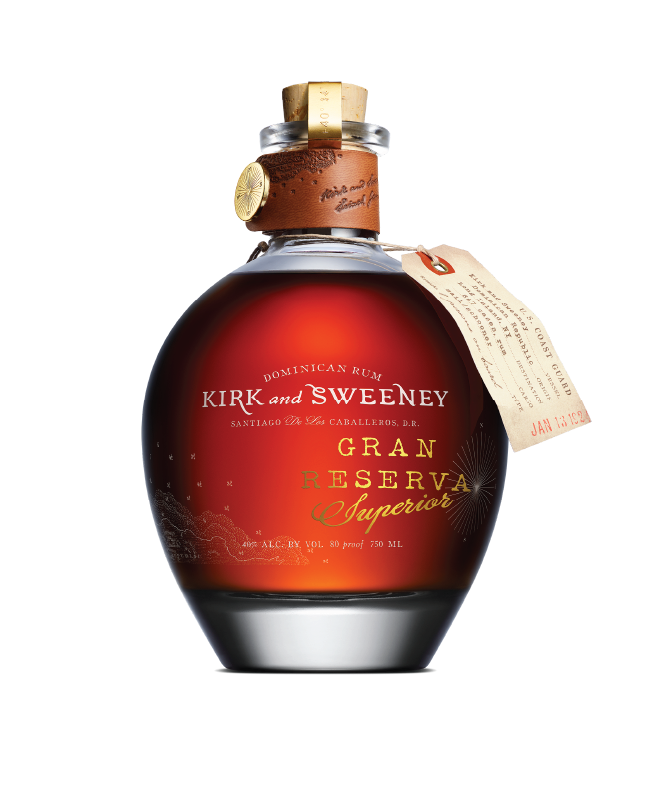
Kirk & Sweeney Grand Reserva: Vanilla Extract Grade: A+
This is obviously a top shelf rum. It's pure, clean, rich and sweet. It's stored in a sherry cask, and its production yields a taste that includes hints of caramelized sugar, honey and vanilla. We start with this rum, not because we recommend that you use it. For most extracts Kirk and Sweeney is cost-prohibitive. However, a good vanilla extract will only be as good as the spirit used for extraction. We couldn't believe the rich, deep, bold flavors that came out of this extract after just six months of extraction. (And even more after a year!) The spirit only enhanced the natural taste of the beans, which makes this one of the best extract experiences we have ever had. Is it worth it? In some cases such as vanilla flan, vanilla creams or cream pies, a bold extract really enhances the taste. We set the bar very high with this delightful extract. It's clearly a top shelf, A+ experience.
Captain Morgan White Rum: Vanilla Extract Grade: A-
We like white rum for two reasons: 1) It is sugar-based which means you will get a sweeter extract, and 2) It is mostly tasteless, which means that after a year of extraction, you will primarily just taste the vanilla beans. This makes white rum a great kind of alcohol to use when experimenting with different beans. Try a white rum with a Tongan vanilla bean vs. a white rum with a Madagascar vanilla bean and you will smell and taste the dramatic difference between those beans almost immediately. As such, white rum's applications are almost universal. A Mexican vanilla extract made in a white rum can be used in almost any dessert, making this our favorite choice. Captain Morgan white rum specifically is a little less strong and more subtle, which results in a creamy and smooth extract.
Bacardi Superior White Rum: Vanilla Extract Grade: B+
Given our affinity to white rums, we have tried multiple versions. Given our affinity to white rums, we have tried multiple versions. While Bacardi is less expensive than Captain Morgan, we don’t believe that higher price always equals better results. We did not see much of a difference in this case. The finished vanilla was fantastic but not clearly better or worse than the more expensive Captain Morgan, so we felt that an B+ grade was appropriate. We also noticed that Bacardi had a stronger rum taste after six months of extraction. Perhaps a slight kick, or burn from its bold default taste, whereas Captain Morgan was a little softer. So, any of you rum connoisseurs out there may appreciate the bold taste of a Bacardi over a Captain.
Captain Morgan Spiced Rum: Vanilla Extract Grade: B
Spiced rum will evoke memories of holiday egg nog or pumpkin spice cookies...and that is exactly what a spiced rum vanilla extract can be used for. Banana bread, zucchini bread, ginger bread, etc. are all great applications for for a spiced-rum extract. Everyone should have at least one bottle of spiced rum vanilla extract in their cabinet just for the holiday season because it accentuates the taste of those familiar holiday flavors. If it weren't for the holiday-only niche, we would give this rum an A+.
Bacardi Gold Rum: Vanilla Extract Grade: B
Bacardi Gold is a very unique rum. We could almost place this in the bourbon section below. It has bold, smokey, charcoal tones that are reminiscent of a scotch or whiskey, but it's sugar-based so it still errs on the side of sweetness. As such, an extract made with Bacardi Gold needs to be used for "darker" applications. We used Indonesian vanilla beans because they are inherently dark, smokey and sweet. The result was a very rich and creamy extract that could be used in brownies, chocolate cakes and chocolate frostings. Perhaps even fudge or double-chocolate-chip cookies. This is certainly a unique extract and its taste deserves an A, but its applications are limited, so we gave it a B.
Captain Morgan Dark Rum: Vanilla Extract Grade: C+
Dark rum is powerful, rich and smokey. So powerful that after six months of extraction, it was hard to notice the vanilla. There were vanilla undertones, but they weren't bold or pronounced enough to overcome the rum itself. This could make the perfect vanilla extract to add a little kick to caramels, toffees, or dark creams, but that's a very specific niche. Still, it may be worth a try. Given its limited application and strong, smokey taste after six months, we felt that a C+ was appropriate.
Bourbons

Woodford Reserve Straight Bourbon Whiskey: Vanilla Extract Grade: A+
As we did with the rum, we are going to start with a semi-top shelf bourbon. A common theme that you will see at VanillaPura is quality. When developing a quality extract, you can't overlook the spirit any more than you can overlook the importance of the vanilla bean itself. Woodford Reserve is one of the best bourbons in America. It has dark and smokey undertones, and since it's 51% corn based, it's sweet. But there is something of the sweetness within Woodford Reserve that is special. You can taste caramel, honey and vanilla all within the spirit itself. A Woodford Reserve bourbon extract made with an Indonesian or Mexican bean is the perfect dark chocolate, rich extract for darker desserts and even in BBQ sauces and protein glazes to add a hint of sweetness.
Buffalo Trace Bourbon: Vanilla Extract Grade: A
A legendary spirit from a legendary distillery. This bourbon was recommended to us by one of our Facebook Group members, and it did not disappoint. This bourbon proved to blend well with Indonesian vanilla beans, especially Sumatra Indonesian beans. It is incredibly rich with a delicate blend of honey and caramel, and can you think of two flavors more complimentary in your homemade vanilla extract than honey and caramel? It has regular bourbon characteristics, just as a smokey undertone and a subtle bite, but it's a great bourbon base for first-time extract makers that are looking for something bold, but not overpowering.
Maker's Mark Bourbon: Vanilla Extract Grade: A
For its price, Maker's Mark is a great bourbon to begin with. It's made with a soft, red winter wheat instead of rye, which softens the bold tones found so often in most bourbons. What that means to you as an extract maker? It means that the vanilla has room to shine through and present itself within the complicated overtones of the bourbon. Simply stated, it's a perfect mixture of smokey and sweet and allows for a pure, rich bourbon extract experience. We recommend this bourbon as a great starting point for new extract makers.
Four Roses Bourbon: Vanilla Extract Grade: C
This is one of those instances where price and final quality did not match up. Four Roses is a nice bourbon and a little more expensive than Maker's Mark. But something about its bold spice and honey tone made it a difficult marriage with vanilla beans. The final taste was too complicated and hard to find an application for. While it wasn't the worst bourbon extract that we ever tried, it certainly didn't meet its mark in our experiment.
Old Crow Bourbon: Vanilla Extract Grade: F
We went there. The bottom shelf. The cheapest bourbon that we could find. We purchased the bourbon, added beautiful, high-quality Indonesian vanilla beans...and we waited a full year. We presented this extract to a team of chefs at a local culinary institute to see their reactions. Our goal was to determine if the quality of the spirit really did matter in extract making. Or, is it all about the bean and only about the bean? The result was immediately apparent. This was absolutely the worst extract that we ever made. It was horrible. Perhaps good as a fire starter at a BBQ, but certainly not something that could be used in food. Avoid the bottom shelf in the bourbon/whiskey category. You can sometimes get away with it using vodka or even a white rum, but with bourbon the bottom shelf is a risky venture. Quality matters with bourbons and whiskeys.
Vodkas

Grey Goose Vodka: Vanilla Extract Grade: A+
We hear that vodka is vodka and, since it is largely tasteless, who cares what vodka you use? Well, that is mostly correct. We have tasted many different extracts with many different types of vodka and they truly are quite similar. This makes vodka the perfect kind of spirit to begin with because it's hard to mess up your extract based on the kind of vodka you use. However, we did notice a clear difference in vodkas that have been distilled 5 times and those that have not. We also noticed a difference over time in the top-shelf vodkas vs. the bottom shelf.
Grey Goose is a top shelf vodka, and it proved to create a top-shelf vanilla extract. After a year, the vanilla bean taste became much more pronounced making it one of the most fully rounded vanilla extracts that we have ever made. If you're going for a bold vanilla taste and an aged vanilla extract that you allow to rest for more than a year, this is the vodka you should use. Made in France with a winter wheat blend that is truly unique.
Svedka Vodka: Vanilla Extract Grade: A
While this is not a top-shelf vodka, it will provide a wonderful final product that you will be proud of. Also a winter wheat vodka like Grey Goose, but it originates from Sweden. Svedka will provide a bold vanilla extract taste that becomes smooth and creamy with time. These extracts can be used with virtually any dessert or other food applications. The price is a little less than Grey Goose and the result is almost identical.
Smirnoff Vodkas: Vanilla Extract Grade: D+
We listed Smirnoff Vodkas as plural (vodkas) as opposed to the singular. Why? Because Smirnoff is the flavor leader of all vodkas. They have multiple vodka flavors, all of which can be used for vanilla bean extraction. The grade of these vodkas is D+ not because of taste. (The taste of a regular Smirnoff vodka vanilla extract is definitely an A) It's a D+ because there are specific flavor applications available through Smirnoff that might temp a first-time extract maker.
We have tried making vanilla extracts with vodkas that have artificial flavors. At first glance, using a vanilla-flavored vodka to make vanilla extract sounds like a great idea. Or perhaps a strawberry vodka for a strawberry/vanilla extract. In each of these cases, our extracts tasted metallic and unnatural. With the exception of coconut rum and spiced rum, we do not recommend using artificially-flavored spirts for at home extract making.
Here's a quick video with some tips and cautions about flavored alcohol in vanilla extract:
Titos Vodka - Vanilla Extract Grade: A
Made in Texas, very affordable and surprisingly great! While not as smooth and velvety as a Grey Goose, this vodka proved to be a great medium for vanilla extraction. We used Mexican vanilla beans with our Titos vodka to see if you could still taste the mocha and caramel that are inherent in Mexican vanilla beans. An alcohol that is too strong will sometimes overpower the subtle notes of a vanilla bean. In this case, Titos was gentle enough to allow the softer elements of the bean to shine through. This is a great vodka for the price.
Tequilas
There are three broad types of tequila: 1) a "Silver" which is distilled and immediately bottled, 2) a "Reposado" (rested) which is stored in a cask for 2-12 months and 3) an "Anejo" (old) which is stored in a cask for 1-4 years. We didn't believe that the taste of tequila would blend well with vanilla, and we were absolutely wrong. A vanilla extract made with a great tequila is a wonderful treat.
Clase Azul Reposado - Vanilla Extract Grade: A+
This elegant tequila (pictured above) is a treat by itself. While most tequilas are known for their powerful agave kick, this tequila is soft and creamy, with natural hints of caramel, honey and orange. So much so that when drinking this tequila you don't follow it with a lime and salt in traditional tequila fashion. Instead, this is best paired with an orange slice with sugar and cinnamon. When used with Mexican, Madagascar or Indonesian vanilla beans, this spirit creates one of the most unique combinations of taste that we have ever experienced. The result is an extra sweet vanilla extract with hints of citrus, caramel, honey, molasses and so much more that can be used in virtually any dessert. This is a must-try but, beware, that one bottle of Clase Azul can cost as much as $150 in some places. The bottle itself is beautiful, decorative ceramic vase-like bottle that can have decorative applications once emptied.
Don Julio Anejo - Vanilla Extract Grade: A
If you don't want to spend $150.00 on the Clase Azul but would still like a soft, creamy tequila for under $100, this may be the tequila for you. In fact, had we not tried the Clase Azul, this Don Julio Anejo would likely be our A+ tequila. It boasts a similar soft and creamy flavor to the Clase Azul, but the tangy agave of tequila presented itself on the palate with slightly more gusto, making this extract a little more tequila than vanilla...but not much. This finished extract has all the same applications as Clase Azul and will certainly be one of your favorites. Best made with a Mexican, Madagascar or Indonesian vanilla bean.
Jose Quervo Silver - Vanilla Extract Grade: C-
If you're a traditional tequila lover, than a vanilla extract with a silver tequila will deliver exactly what you would expect: A strong, somewhat bitter/sweet, agave, citrus and tangy vanilla extract. This extract is what we expected when we began our tequila/vanilla extract journey. The price is right (ofter under $20), and the result is certainly memorable. We recommend a sweeter vanilla bean for this spirit, such as a Tahiti, Kerema, Ecuadorian or Tongan. In applications such as fruit-based desserts or even putting a splash of this finished extract on your carne asada while it's grilling, the results would be memorable and tasty! But the applications are limited, giving this tequila the lowest grade. We found that adding oak blocks for 2-4 weeks at the end of the extraction process helped to soften the kick and add strong notes of vanilla.
In summary, we would stick with the reposados and anejos when selecting a tequila for vanilla extract making. There are many options available that are much less expensive than those mentioned here. We would avoid the silver tequilas unless you're a fan of that strong (and often bitter) agave kick that comes from tequila.
Brandy and Cognac
In the same way that all bourbons are whiskeys but not all whiskey is bourbon, all cognacs are brandies but not all brandies are cognac. Where whiskeys are derived from ryes, corn, barley, etc., cognacs and brandies are derived from grapes and fruits, so they are naturally much sweeter than bourbons and whiskeys. Cognacs are made only from grapes grown in the Cognac region of France, whereas brandies are made from grapes and even other fruits (like apples) from anywhere around the world.
Similar to tequilas with their silvers, reposados and anejos, a brandy and cognac are put into three distinct categories as well. 1)Very Special (VS) for a minimum age of 2 years, 2) Very Special Old Pale (VSOP) for a minimum age of 4 years and, 3) Extra Old (XO) for a minimum age of six years.
E&J VSOP - Vanilla Extract Grade: A+
When we began our cognac/brandy vanilla extract making journey, we truly believed that cognac would be the clear winner. Once again, we were wrong. And in this case, one of the least expensive options proved to be our very favorite.
E&J is an American brandy that uses grapes, apples and more. Their VSOP (4+ year old blend) presents the nose with a delicate mixture of sweet, smokey, smooth and natural vanilla scents. To us, it was the perfect combination of flavor and aroma for one of the most rich and sweet vanilla extracts that we have ever made. We recommend a PNG, Hawaiian, Tongan or Ecuadorian vanilla bean with this spirit, but really any vanilla bean will work. And the price is equally pleasing since it is made in California. A large 750ml bottle can run between $20 - $40.
Hennessy VSOP - Vanilla Extract Grade: A
This cognac produces a wonderful vanilla extract. You will notice that we selected the VSOP (not the XO, which is more expensive) for our extract. If you are sipping a cognac like this, you will absolutely be able to tease out the richer notes of an XO over a VSOP, but we didn't think that the additional cost justified the result. Yes, and XO would make a wonderful extract but we didn't think the difference justified the 40%+ additional cost.
Here's why you may want to consider cognac instead of brandy for vanilla extract: If you are conducting experiments on the impact of vanilla beans in different spirits, then you want to hold the spirit constant. A Hennessy cognac from grapes only grown in the Cognac region of France and approved by Hennessy's rigorous tasting standards will provide you a consistent, standard spirit base. Try one with Tahiti beans and one with Mexican beans and you will clearly note the difference in the final extract based solely on the beans.
In addition, grapes from the Cognac region of France (that also produce Champagne, we might add) are special. Their taste is unique and truly does provide a beautiful, aromatic, rich vanilla extract experience.
Courvoisier VSOP - Vanilla Extract Grade: A-
Another cognac that produces a wonderful vanilla extract. We see this brand of cognac and an alternative to the more expensive Hennessy, if you are determined to make a cognac vanilla extract but don't want to spend the Hennessy price.
While we found this cognac to err more on the smokey side vs. a brandy or a Hennessy, it still proved to be sweet, complex and full bodied on the nose and palate in its finished extract form. It's a wonderful spirit and a less expensive price if you choose to make a go at your first cognac vanilla extract. Mexican, Madagascar or Indonesian vanilla beans are best for this specific spirit.
_______________
See our lineup of videos below where we test bourbons, rums, vodkas, tequilas, brandies, cognacs and more!
We reviewed brandy and cognac for extract making in one of our live extract making parties. Here is the clip:
We reviewed a few tequilas in a recent vanilla extract-making party in this video:
Here is a review of bourbons from one of our vanilla extract making parties:
Here's a recent review of vodka's for extract making that includes the vodka's listed here and a few more:
Here's a review of rums and the pros/cons of different types of rums:
We can't wait to hear about what you have created and we hope you share the good and the bad with us! We love being part of your vanilla extract journey!
What spirit is best with what kind of vanilla bean? This clip from our extract making party might help:
Visit our comprehensive extract-making guide center for more essential extract making tips and ongoing education.



